

Japan Itinerary: 12 Days in Tokyo, Kyoto, Osaka & Hakone
Last updated on July 29th, 2024 at 01:48 pm
Japan offers an incredible juxtaposition of modern technology alongside ancient temples and traditions. One of the world’s safest countries is an ideal travel destination for a wealth of reasons. Japan’s cities are cultural and foodie paradises, but they are also busy, so consider including a couple relaxing days dedicated to wellness.
The bustling energy of Tokyo, with more Michelin star restaurants than anywhere else on Earth, dazzles the eyes and palate. The metropolis’ modern infrastructure leaves the impression that you have stepped into the future. Traditional Asakusa, featuring the impressive Senso-Ji Temple and a variety of street stalls is a must visit neighborhood.
For over 1,000 years Kyoto was the capital of Japan (from 794 -1886) and still reigns as the traditional heart of the country. Kyoto features a staggering 17 UNESCO World Heritage Sites. It is a must visit destination for all culture and history buffs visiting Japan.
Taking a two-week vacation will leave you with around 12 days to explore Japan. This 12 day Japan itinerary covers a variety of highlights in Tokyo, Kyoto, the bustling foodie metropolis of Osaka and the resort spa (onsen) town of Hakone near Mt Fuji. It is ideal for experiencing the cultural highlights of Japan, including a wellness getaway!
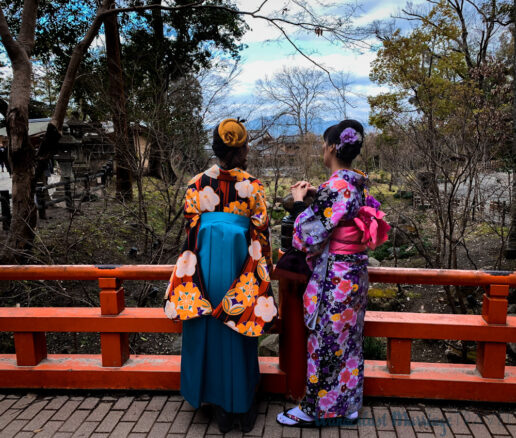
Tokyo – 4 Days
Tokyo airports – arriving in japan.
Metropolitan Tokyo is the world’s largest city, with a staggering 37 million people! This is an exciting entry point for most visitors to Japan. Two airports serve Tokyo – Narita and Haneda.
Osaka Airport also has many international flights, especially from across Asia. Osaka is just 55 km (33 miles) from Kyoto.
Narita Airport to Tokyo
You can travel from Narita Airport to Tokyo by train, bus, taxi or even helicopter. Outside a helicopter, the fastest way to get from Narita Airport to Tokyo is by train. The Narita Express and Keisei Skyliner trains can take you to major stations like Tokyo Station, Shinagawa, Shibuya and Shinjuku as well as Yokohama and Ofuna in around 50 minutes to over an hour. Narita Airport is located around 80 km (48 miles) east from Tokyo.
Haneda Airport to Tokyo
Haneda Airport is only 14 km (8 miles) from central Tokyo. The Keikyu Airport Line conveniently connects travelers to Shinagawa Station in only 11 minutes. At Shinagawa Station, you can transfer to other JR lines, such as the JR Yamanote Line and the Shinkansen bullet train – which connects Tokyo with Kyoto and many other destinations. The Tokyo Monorail is another fast and efficient way to get from Haneda Airport to central Tokyo. It only takes 13 minutes to reach Hamamatsucho Station. Then you can transfer to the JR Yamanote Line to reach other popular destinations throughout Tokyo.
Narita or Haneda Airport?
If you have a choice during your trip, Haneda Airport is significantly closer than Narita. That makes Haneda preferable over Narita Airport.
I was curious to fly in and out of both airports and the times worked well to do that. So I flew into Narita Airport and out of Haneda Airport to the USA. A downside to that is having to figure out one more thing during your journey. Depending on flight times, perhaps pick one of the airports to fly in and out of if you have the choice. That way, you have one less thing to worry about for your Japan itinerary.
Japan for Couples or Solo Travel
I traveled to Japan solo, en route to Australia. Bell had limited time to only visit her home country of Australia that trip. Also, she previously traveled around Japan solo, in 2003, before we were together. So traveling around Japan was not as high a priority for her compared to places she has not visited yet. But for me, traveling to Japan was topping by travel bucket list. So the tips below are suitable for both couples and solo travelers!
Tokyo Highlights: 12 Day Japan Itinerary
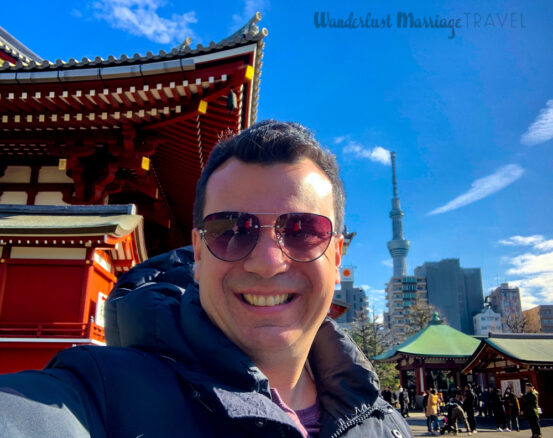
Asakusa is a traditional neighborhood famous for the Senso-Ji Temple. The Buddhist temple is dedicated to the bodhisattva Kannon and is considered the most important temple in Tokyo. The neighborhood is also wonderful for its variety of small stalls selling street food ranging from fried fish to sweet treats.
It is generally considered impolite to eat while walking in Japan (partly because of how crowded it can be), but is socially acceptable in areas like Asukusa, where street food is sold. A visit to Asakusa is a must on a Japan itinerary. This is the favorite district of many that visit Tokyo.
Tokyo Imperial Palace
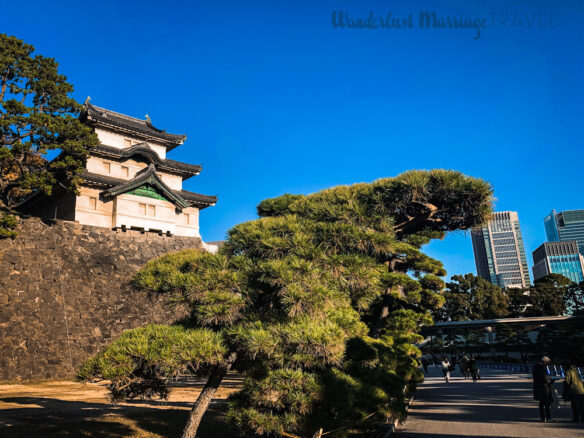
Built in 1457, Tokyo Imperial Palace is home to Japan’s royal family. It is located in the center of Tokyo, a short walk from Tokyo Station. The large park is surrounded by massive stone walls and moats. 75 minute tours in English and Japanese are conducted on the palace grounds. You can book a tour on the Imperial Household Agency website. Plan to book tours in advance, though same day tours are possible.
The inner grounds of the Imperial Palace are closed to the public except for January 2nd (New Year’s Greeting) and February 23rd (Emperor’s Birthday).
The Imperial Palace East Gardens are open to the public throughout the year. I did not book a tour time and enjoyed the gardens, bridges and centuries old architecture along with throngs of other visitors.
Tokyo Skytree
Tokyo Skytree is the tallest building in Japan. At 634 meters (2080 feet), it is also the world’s tallest tower and second tallest structure after the Burj Khalifa in Dubai. There are two observation decks on Tokyo Skytree – at 350 meters and 450 meters. The tower is open from 9am-9pm 365 days a year. It is one of the most popular tourist attractions in Japan so it’s often busy. Book tickets in advance to save time!
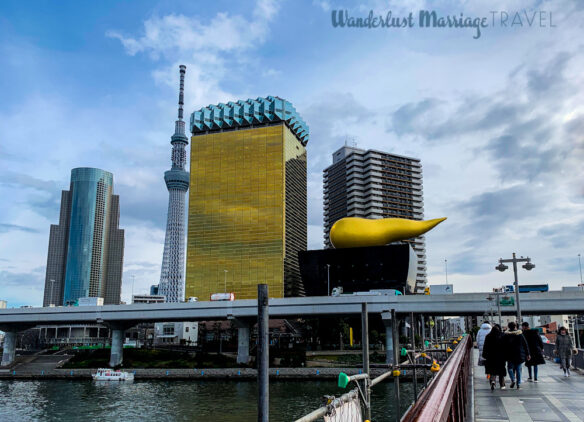
In the above photo you can also see the golden flame atop the Asahi Group Head Office Building. Some jokingly call it the “Golden Turd.” What do you think?
Ueno Park is home to many museums and temples. It features beautiful cherry blossoms in the spring and colorful foliage in autumn. It is one of Japan’s five oldest public parks and was probably my favorite park in Tokyo for strolling and admiring the scenery. I was captivated by the vibrant foliage and people watching in Ueno Park. You can also plan a visit to Ueno Zoo and admission is just 600 yen ($6 USD).
Along with Asakusa, Ginza, Shinjuku and Shibuya, Akihabara is one of the most interesting districts of Tokyo to visit. It is famous for its electronics retailers, ranging from large department stores to tiny stalls. This is also the cultural epicenter of manga, anime and video games. For the uninitiated like myself, stepping into a manga retailer is like exploring another universe.
The maid cafes in Akihabara are a unique spectacle. Maid cafes are where adorably dressed girls serve food and perform on stage in maid outfits. You can’t miss them as the girls stand out front handing out fliers. Do not expect an amazing culinary experience at a maid cafe. But it is a quintessentially kitsch Japanese tourist experience.
Plan to spend a few hours in Akihabara as it is one of the most unique districts in the world. It is likely you will stumble upon things you have never seen before.
Tokyo Tower
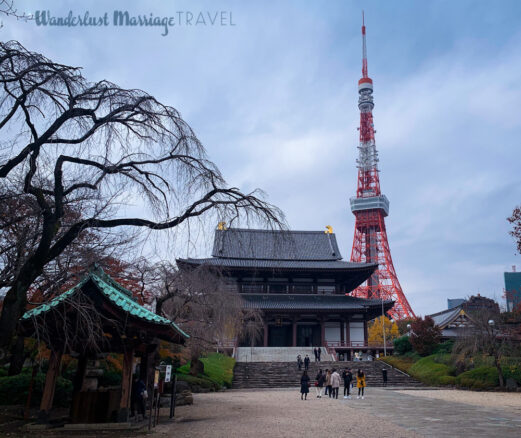
At 330 meters, Tokyo Tower is the second largest building in Japan. The Eiffel Tower inspired lattice tower serves as an observation deck and communications tower. Tokyo Tower offers sweeping vistas across the world’s largest city. I appreciated that there was no line to take the elevator to the 150 meter observation deck on the mid-December weekday morning I visited. There is always a line to go up the Eiffel Tower in Paris! There is a second observation deck at 250 meters, offering an even higher birds eye view.
Zojoji Temple
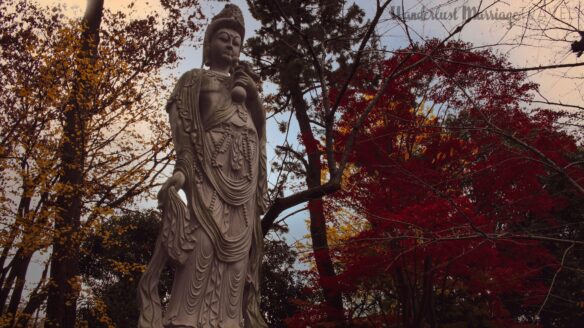
Ginza is Tokyo’s most famous high end shopping, dining and entertainment district. The area is packed with luxury retailers, along with swanky cocktail and sushi bars. Traditional Japanese dance and drama can be watched at the famed Kabuki-za theater. Most shops in Ginza are open everyday. A particularly pleasant time to visit is weekend afternoons when central Chuo Dori closes off to cars and becomes a large pedestrian zone.
Fun fact: 2 million passengers pass through Shinjuku Railway Station each day, making it the world’s busiest train station. Visit one of the observation decks atop the Tokyo Metropolitan Building. The 243 meter tall building has two towers, each houses a free observation deck at 202 meters. On a clear day you can see Mt Fuji, Tokyo Skytree, Tokyo Tower, Meiji Shrine and the Tokyo Dome.
Shinjuku bustles with night clubs, karaoke rooms and endless shopping options. Enjoy dishes like tempura at a lively izakaya, where locals dine and catch up over beers, cocktails and sake.
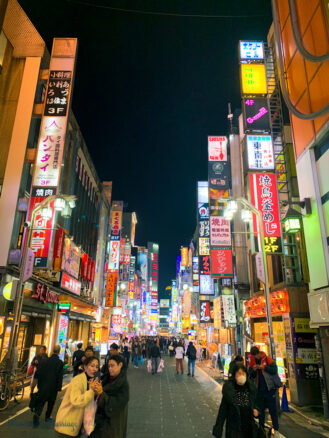
Shinjuku is also home to Tokyo’s Red Light District. Unfortunately, many of the strip clubs that cater to foreigners are run by the Yakuza (Japanese mafia) and are not reputable establishments. Check google reviews before going into any of the girly clubs in Shinjuku. Do not go into any of the clubs where people try to pull you in off the street. You will get ripped off. This makes Shinjuku the most unsafe district of Tokyo – but if you stay out of the shady sex clubs and use common sense regarding personal belongings, it’s fine to walk around the district.
Want to witness the busiest pedestrian crossing in the world? Head to the Shibuya Crossing. Every time the street lights change around 2,000 people cross the street simultaneously. You will also find a wide variety of shops and good restaurants in Shibuya. If you’re short on time, pop into a ramen restaurant for a fast and delicious bowl of piping hot noodle soup. You can even hang out in a cat cafe, playing with adorable kittens while sipping a latte. Plan to spend a few hours of your Japan itinerary in this interesting district of Tokyo.
Delicious Sushi Throughout Tokyo
There are so many culinary delights in Tokyo, but be sure to enjoy the excellent sushi. There are so many great options so just check reviews to be sure. Conveyor belt sushi establishments have become popular around Tokyo. They typically don’t serve the highest quality sushi, but they’re good and very handy if you just want a quick and inexpensive bite. Check the colors of the plates carefully if you don’t want to spend too much. For example, you may think a plate is white, but it is actually a more expensive pale blue or pink plate. Very sneaky!
Even Japanese 7-Eleven’s sell tasty packaged sushi rolls and salads. The options are healthier and tastier than American 7-Eleven’s. Several days I just wanted a quick lunch to continue exploring an infinitely fascinating city, and 7-Eleven sushi rolls fit the bill.
Tokyo Hotels
Shangri-La Hotel Tokyo is an excellent choice for a luxury stay. Elegant and spacious rooms feature floor-to-ceiling windows with city or bay views overlooking the Imperial Palace, Tokyo Sky Tree and Mount Fuji on clear days. Along with a 50 foot heated pool, their onsite spa, CHI, offers a range of treatments and relaxing massages. Onsite restaurants include Nadaman, serving fine Japanese cuisine and sushi and the elegant Piacere, serving gourmet Italian food. It is conveniently located right next to the JR Tokyo Station.
The Strings by Intercontinental is another great choice for a luxury stay in Tokyo. Rooms at The Strings showcase tasteful Japanese design, with large windows that offer panoramic skyline views. China Shadow Restaurant serves authentic Chinese dishes with 26th-floor views. Their elegant Dining Room serves international fusion fare. The adjacent JR Shinagawa Train Station offers easy access to Shinkansen bullet trains to Osaka. Local trains on the Yamanote Line run directly to the Shibuya and Shinjuku areas in around 20 minutes. The Airport Limousine Bus runs directly from Narita International Airport, taking around 90-minutes.
Park Hotel Tokyo is a comfortable choice that won’t break your budget. Guests can enjoy sweeping views of the world’s largest city over a drink from the mini-bar. Shinbashi Train Station is just 1,000 feet away, conveniently connecting you to the rest of the city. The hotel offers 6 food and beverage options, including French and Japanese cuisines. A lounge, cafe and bar are also located on-site. Park Hotel Tokyo is close to Hamarikyu Gardens, Tsukiji Fish Market and the Ginza shopping area.
Japan is famous for its luxury cabin and capsule hotels, that sometimes include traditional onsens. They make for especially great value for solo travelers. Read my article on what to expect at cabin and capsule hotels in Japan , ranging from budget to mid-range.
First Cabin Shinbashi Atagoyama
First Cabin Shinbashi Atagoyama is excellent value for a cabin stay in Tokyo. Upon arriving in Tokyo, I spent my first three nights there and found it ultra modern, comfortable and welcoming. Many amenities, like toothpaste and toothbrush packets, hair brushes, cotton swabs, soap and shampoo are provided in small bins in the bathrooms.
There are separate cabin floors for males and females, so mixed couples will not sleep on the same floor. But they have a cozy lounge, open to everyone, to enjoy a meal or a drink together. It is ideal for those that want to save money, while sleeping comfortably during their Japan itinerary.
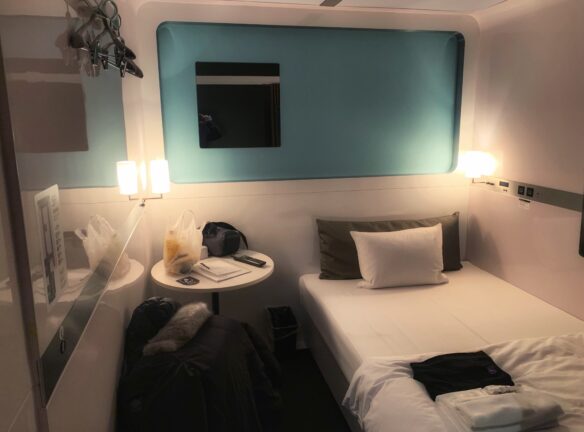
Global Hotel Tokyo
The Global Hotel Tokyo has 74 capsule rooms that are fitted with all the necessities for a comfortable budget stay. While the capsule rooms are small in comparison to first class cabins or premium capsules, they’re cozy. Capsules feature free WiFi, and amenities like toothbrushes and toothpaste and soaps.
Global Hotel Tokyo offers an ideal location for exploring Tokyo. It’s a 5 minute walk from the Shin-Okubo Railway Station on the Yamanote Line in Shinjuku. The Yamanote line is Tokyo’s circular line so you can easily visit places in the world’s biggest city with a stay there. It’s also a close walk to Kabukicho entertainment district and 20 minutes to Shinjuku train station, the world’s busiest train station.
Kyoto – 4 Days
Kyoto is smaller than Tokyo and Osaka, but the greater area is still home to 2.6 million people. It is the traditional heart of Japan, with a staggering 17 UNESCO World Heritage Sites! You need time to experience Kyoto, also because the worthwhile temples and palaces are quite spread out. If you only visit two cities in Japan, fly into Tokyo and then catch the bullet train to Kyoto. It is an absolute must on a Japan itinerary.
Kyoto Highlights
Fushimi inari-taisha shrine and the torii gates.
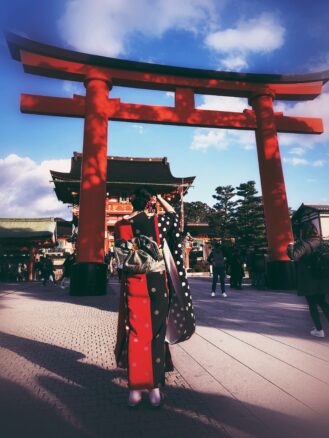
One of the most iconic images of Japan are the Torii gates at the Fushimi Inari-taisha Shrine in Kyoto. The important Shinto shrine is located just outside Kyoto, and can be easily reached on a short train ride. Thousands of vermilion Torii gates line a network of trails that zig zag up the mountain. Traditional teahouses and small shrines dot the trails. And the hike offers a refreshing reprieve from the congested crowds of densely packed Japanese cities. This is one of the 17 UNESCO World Heritage Sites in Kyoto.
Gion, Kyoto’s traditional neighborhood
Dotted with wooden buildings, Gion is Kyoto’s most famous neighborhood. There is a great range of traditional Japanese restaurants, teahouses and bars along alleyways and side streets. This is also the best place in Japan to spot a geisha making her way to an appointment. Gion exemplifies a traditional Japanese urban neighborhood splintered from towering modern high rise buildings. I visited this district on a quiet mid-January day. During peak tourism season, it can be crowded. Gion is a significant highlight of a Japan itinerary!
Kinkaku-Ji (Golden Pavilion)
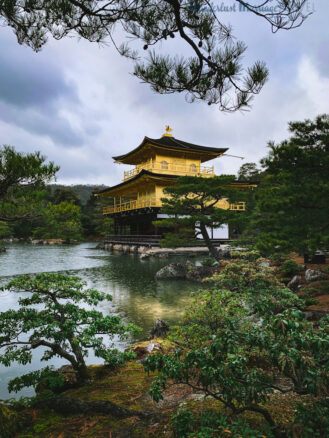
The Golden Pavilion of Kinkaku-Ji is a unique Zen Buddhist Temple. Tucked away in the northwest quadrant of Kyoto, this UNESCO World Heritage Site is a must see in Kyoto. The top two floors of Kinkaku-Ji are completely covered in golf leaf. Its picturesque lakeside setting conjures images of a Japanese Shangri-La. I visited Kinkaku-Ji on a misty mid-January day and there were still quite a few other tourists. Try and avoid going during busy summer weekends!
Nijō Castle
Nijō Castle was built in 1679 and is one of the 17 UNESCO World Heritage Sites in Kyoto. The Ninomaru Palace, ruins of the Honmaru Palace, along with supporting buildings and gardens span 275,000 square meters (68 acres). The castle consists of two concentric rings of fortifications, each made up with a wall and wide moat. While the area is vast, many of the buildings are closed to the public. Plan to a couple hours at Nijō Castle, as that will give you enough time to walk the grounds and take photos.
Kiyomizu-dera Temple
Kiyomizu-dera Temple is a Buddhist temple in Eastern Kyoto. Built to the honor the Kannon, the goddess of mercy, this is one of the most visited temples in Kyoto. It dates to 780 and its mountaintop location offers great views of Kyoto. Kiyomizu-dera Temple is one of the 17 UNESCO World Heritage Sites in Kyoto.
Kyoto Hotels
The 5-star Ritz-Carlton Kyoto is located along the Kamogawa River, showcasing iconic Kyoto views. Featuring traditional Kyoto decor, elegant guest rooms are fitted with a large flat-screen TV, Blu-ray player and a Nespresso coffee maker. Mizuki restaurant offers Japanese kaiseki multi-course meals and sushi. Other on-site dining options include Italian and French. Nijo-jo Castle, a UNESCO World Heritage Site, is a 3-minute subway ride from Ritz-Carlton Kyoto.
The Hyatt Regency Kyoto offers a luxury stay at a more affordable price than the Ritz-Carlton. Elegant rooms are decorated in light natural tones, and furnished with a 32-inch plasma TV, DVD player and safe. A mini-bar, nightwear and slippers are provided. Guests can pamper themselves with shiatsu massage, acupuncture, aromatherapy and other treatments at Riraku Spa. There are three onsite restaurants; The Grill, offers French grill dishes, Touzan serves Japanese cuisine and Trattoria Sette has Italian food. The Hyatt also has a bar, pastry shop and room service.
Tune Stay Kyoto is a great choice for a comfortable and well priced stay. The newly built modern hotel features an expansive library, common area and bar serving boutique Japanese spirits. Rooms have modern private bathrooms, TV, air conditioning and comfortable mattresses for a restful night’s sleep. I enjoyed my stay there!
WeBase Kyoto offers a clean budget stay in Kyoto. You can book dorm and private rooms. Continental and à la carte breakfast options are available each morning at the hostel.
Osaka – 2 Days
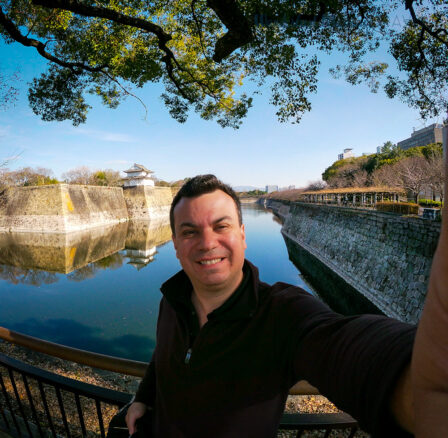
Greater Osaka is home to around 8.8 million people and is Japan’s 3rd largest city. For most travelers with limited time, do not attempt to see all the sites. It is best to focus on the Dontonburi district. This area runs along the Dotonbori canal from Nipponbashi Bridge to Dotonboribashi Bridge in the Namba district of Osaka’s Chuo ward.
Osaka is worth visiting, but many travelers, including myself, commonly say “I liked Osaka, but I preferred Tokyo and Kyoto.” I spent 3 days in Osaka, but wish I had spent 2 days there, and an extra day in Kyoto. So I factored that into this 12 day Japan itinerary for you!
Highlights of Osaka
Osaka castle.
Osaka Castle played a major role in the unification of Japan during the sixteenth century. This makes it one of Japan’s most famous landmarks and culturally, the most significant highlight in Osaka. Osaka Castle was built in 1583 and spans 2 square kilometers of beautiful architecture and green park space. The museum in the Main Tower documents the history and features great artifacts. If you visit one place outside the Dotonburi district of Osaka, you have to go there.
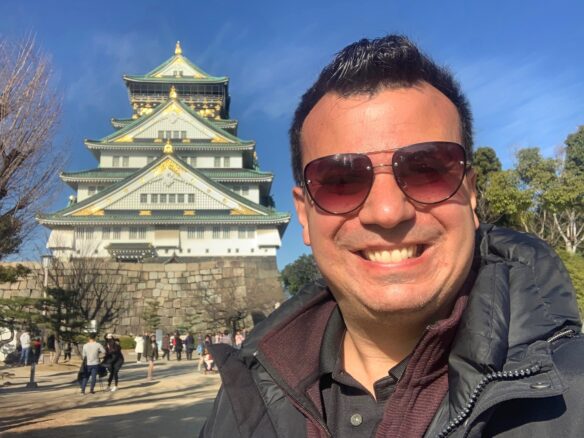
Dōtonbori (or Dōtombori), located in the Namba district of the city’s Chuo ward, is one of the highlights of a visit to Osaka, Japan. The district runs along the Dōtonbori canal from Dōtonboribashi Bridge to Nipponbashi Bridge. This area offers a huge selection of restaurants, bars, cafes, shops and markets.
You can enjoy everything from swanky Kobe beef steak to Takoyaki (octopus balls) fried fresh in a variety of street stalls along Dōtonbori canal. Check reviews carefully if you sit down for Kobe beef, as it is extremely expensive and there are some tourist traps in Dōtonbori. Takoyaki is a local specialty that originated in Osaka. It is inexpensive Japanese fast food and well worth trying.
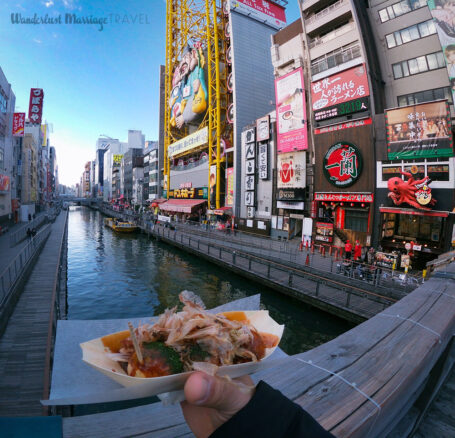
The selection of restaurants, street stalls and market food options in Dōtonbori is overwhelming. It would take well over a year of meals to try every establishment just in this district of Osaka.
Another Osaka born favorite you have to try is Okonomiyaki. It is a savory Japanese pancake made with flour, eggs, shredded cabbage, and your choice of a wide variety of protein and condiments. The name derives from the words okonomi, meaning “how you like,” and yaki meaning “cooked.”
Osaka Hotels
Conrad Osaka offers stunning views of Osaka in their modern and luxurious rooms. Spacious guest rooms include a flat-screen TV with satellite channels and mini-bar. Featuring various spa and wellness facilities on site, the hotel also has a heated indoor pool. Four on-site dining options include European, Asian fusion and Japanese. Enjoy a tasty cocktail atop their stylish 40 Sky Bar and Lounge.
Tokyo Stay Osaka Hommachi makes for a comfortable stay, with city views, that won’t break the bank. Buffet and Asian breakfast options are available each morning. The hotel is located a short distance from attractions such as Namba Shrine, Asahi Seimei Hall, Shinsaibashi Shopping Arcade and Hongan-ji Temple Tsumura Betsuin.
Hotel Cargo Shinsaibashi is an excellent premium capsule hotel in Osaka, Japan. If you want a comfortable stay that doesn’t break the bank, stay there. It’s only around a 20 minute walk to the Dotonbori district, the most interesting area of Osaka, Japan for tourists.
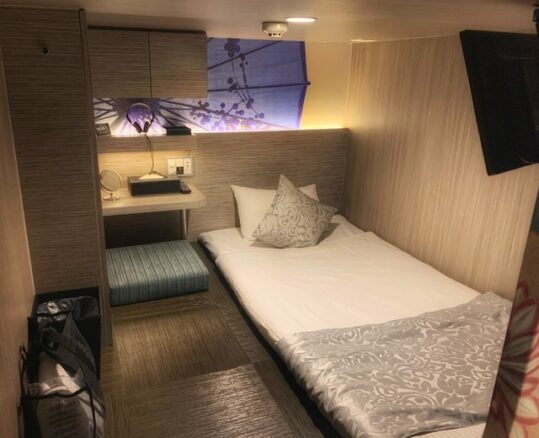
Capsule rooms include 24 inch TV’s with free on-demand channels. A public bath and open-air bath are available in addition to shared private showers on each floor. And of course, there are the famous multi-function high-tech toilets with warm seats!
Hakone (Near Mt Fuji) – 2 Days
Hakone is a vacation destination located just 55 miles (88km) southwest of Tokyo in the Fuji-Hakone-Izu National Park. It is known for its many ryokans, traditional Japanese inns, renowned for the ultimate zen experience. They typically offer comfortable rooms, traditional kaiseki dining, mineral baths (onsen) and world class customer service. Visitors should definitely plan to stay in a ryokan for a portion of their 12 day Japan itinerary. Read my article on What to Expect at a Hakone, Japan Ryokan .
Hakone Highlights
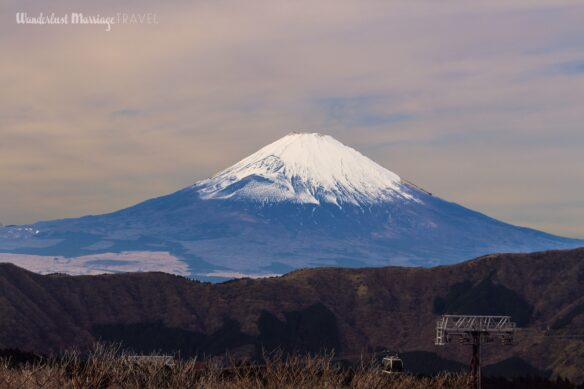
On a clear day, you can see Mt Fuji from Tokyo, from certain vantage points. But you are much closer to the famous volcanic mountain in Hakone!
Catch the Hakone Ropeway cable car for epic views of Mount Fuji. The Owakudani stop offers the most dramatic views of Mount Fuji. You also get a great glimpse of volcanic activity in the area.
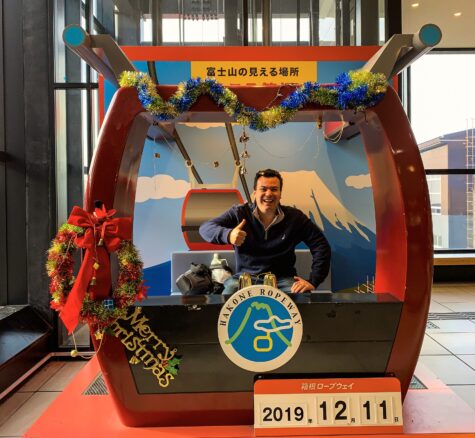
On a clear day you can see Mt Fuji from the Hakone Sightseeing Cruise across Lake Ashi. You also get wonderful views of the torii gates and shinto shrines that dot the lake. You can take the 25-minute sightseeing cruise one way, or roundtrip.
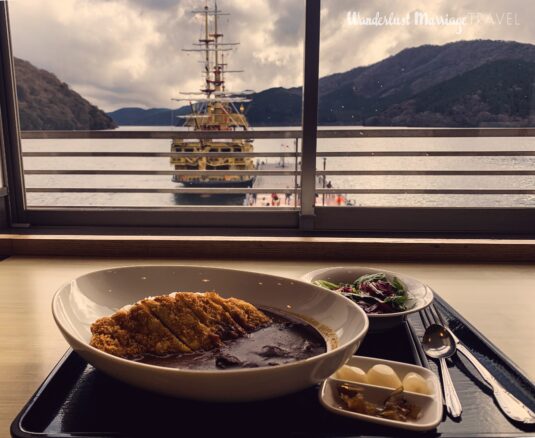
Onsen (Mineral Spa)
Hakone sits atop 40 hot mineral springs. So the town’s resorts feature onsen, with indoor and outdoor mineral pools. They are a great reprieve after a long international flight and navigating the huge crowds of large Japanese cities. It is also a great part of the cultural experience.
Kaseiki Dining
Kaiseki dining is high-end multi-course Japanese cuisine, similar to western haute cuisine. There is an emphasis on seasonality, freshness and excellent presentation. It typically consists of around 9 courses of small dishes, with various meats, seafood and vegetables. It is very detail-oriented and the food dazzles the eyes and palate.
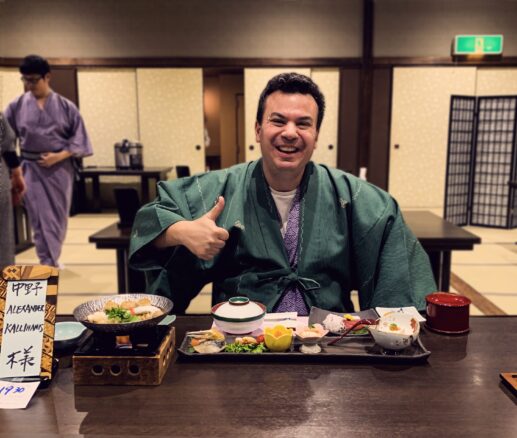
You can enjoy traditional Kaiseki dining elsewhere in Japan, but it is nice to do in a resort town. Slip on the yukata (casual komono) and slippers provided in your room and head down to the dining room for a culinary feast. The kaseiki dinner I enjoyed in Hakone was probably the best $34 USD I have ever spent on a meal.
Hakone Hotels
Hotel Musashiya is one of the best ryokans to stay in Hakone. Their hot spring baths look right out at picturesque Lake Ashi. Every room is fitted with tatami (woven-straw) flooring and traditional futon beds. Rooms are also equipped with refrigerators, TV and an electric kettle.
Hakone Airu is another of the best ryokans to stay in Hakone. Rooms have balconies with lovely mountain views. They also have air conditioning and satellite TV’s. Guests can choose between a western or Asian breakfast. Traditional kaiseki multi-course meals are served at dinner.
Mount View Hakone is a charming moderately priced traditional Japanese inn with onsen. Unlimited use of the onsen is included in the price. Dining is a la carte. I liked that concept because during my two-night stay, I enjoyed a lavish kaiseki dinner and breakfast the first day. Then I dined at some of the local izakayas (casual Japanese bar-restaurants) for ramen and katsu for other meals.
From around ¥10 ,300 ($100 USD) a night per person in off-season, Mount View Hakone is the best value ryokan near Mount Fuji. During busy times like summer and holidays, expect to pay higher prices. I really enjoyed my two-night stay there! It was the most relaxing segment of my 12 day Japan itinerary.
Emblem Flow is a stylish hostel in Hakone. This is a great choice for backpackers looking for a ryokan experience on a budget. The hostel offers 4 and 6 bed bunk rooms, along with private rooms. The property features a hot mineral bath. Continental breakfasts are served in the mornings.
12 Day Japan Itinerary Recap
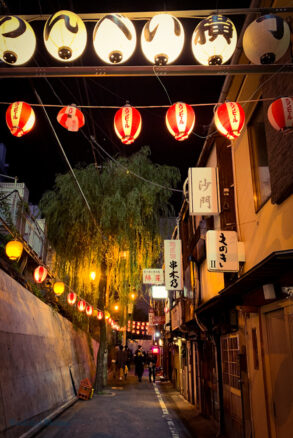
Tokyo is the world’s largest city and an exciting gateway to the nation. You need at least four days in Tokyo just to see a fraction of the highlights. Kyoto’s 17 UNESCO World Heritage Sites are spread out, so you should also allow yourself four days to explore the traditional heart of the country. Some consider Osaka the culinary heart of Japan (but you will find equally fantastic food in Tokyo and Kyoto). Plan for just a couple days in Osaka to get a taste.
Enjoy a couple days in Hakone, at the foot of volcanic Mt. Fuji for a relaxing reprieve from the crowds. Hakone is dotted with traditional Japanese inns (ryokans) with spas (onsen) and Japanese haute cusine (kaseiki). Hakone also offers spectacular views of Mt Fuji!
And voila, there is a great 12 day itinerary for Japan that won’t leave you running around too frantically. If you have questions about planning a trip to Japan, leave a comment below or email me at alex(at)wanderlustmarriage.com. I can even help you save money on your trip!
Disclosure: This 12 day Japan itinerary article contains some affiliate links. We earn a small commission when you book travel directly through them. Thank you for supporting independent travel journalism!
More from Wanderlust Marriage
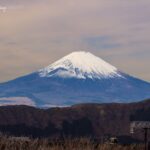
Alex Kallimanis is an award winning travel journalist and travel planner who has visited 67+ different countries, including all 27 European Union countries across all continents except Antarctica. He has resided around the world, living in countries like Australia, the Netherlands and Ireland for over 7 years combined. Currently residing in the Tampa, Florida, area with his wife Bell, he still spends much of his time in Europe as a dual Greek citizen. Alex is a graduate of the University of Central Florida with a bachelor of arts degree in history, and was the president of Phi Alpha Theta (Honors History Society) during his senior year there. Alex is an avid enthusiast of sports, spas, delicious food, the outdoors, craft beverages, history and culture.
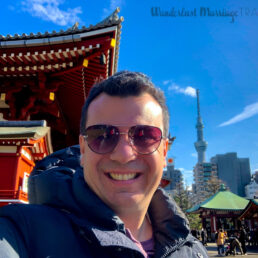
Previous Post
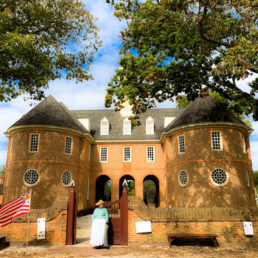
5 thoughts on “ Japan Itinerary: 12 Days in Tokyo, Kyoto, Osaka & Hakone ”
Such an amazing post please visit our blog it’s very informative Gay travel guides
Thanks, glad you found my article on planning a trip to Japan useful!
It’s very helpful thanks for sharing a great post Lgbtq
Thanks for sharing sample itineraries for Japan. My 3 adult sons are planning a 12 night visit from March 25-April 8, 2024 and as a retired teacher I am the planner. However, I was beginning to feel a little overwhelmed upon watch You Tube videos and reading blogs so I appreciated your article/ advice.
Hi Connie. Thank for your comment! So happy to hear you found this post helpful! I hope your 3 sons have an amazing trip to Japan and I’m sure they will. Wonderful that you’ve been planning their trip. Let me know if any questions arise. Happy travels!
Leave a Reply Cancel reply
Your email address will not be published. Required fields are marked *
Yes, add me to your mailing list
This site uses Akismet to reduce spam. Learn how your comment data is processed .

The Ultimate Japan Itinerary for First-Timers: From 1 to 3 Weeks

I’ve yet to meet a traveler who didn’t love their time in Japan . It’s just one of those countries that everyone loves. How can you not? The food is carefully crafted and delicious; the history and culture are both rich and long; the landscape breathtaking; and the people super friendly and polite.
Japan remains one of my favorite countries. No matter how long I visit, it’s never enough. I always leave wanting more.
But the country always seems forbidding to many travelers. It definitely still has that “exotic” stereotype that makes people think it’s hard to travel around.
Where should you go? What should you include in your Japan itinerary? Should you buy a JR Pass to help you get around?
To help you out, here are a few suggested itineraries based on my years of visiting that will ensure you see the best sites on your Japan trip — as well as get off the beaten path and get a real sense of Japanese culture!
Table of Contents
Japan Itinerary: Know Before You Go
Japan itinerary: one week, japan itinerary: two weeks, japan itinerary: three weeks.

Just be sure to get one BEFORE you go as you cannot purchase them on arrival. For more information on the pass, including how much they cost and how you can get one, read this blog post . It has everything you need to know!
Mobile Data in Japan In Japan, English isn’t widely spoken (especially outside of the major cities) so having access to the internet is vital for checking addresses, using translation apps, and looking up things to see and do. The easiest way to get data is through an international eSIM for Japan .
An eSIM allows you to access mobile data via a QR code so you can have internet wherever you are, without worrying about physical SIM cards or roaming charges. This will save you a lot of time and hassle when using apps like Google Maps, Google Translate, Instagram, and YouTube. It will also come in handy for checking menus at restaurants (since they are rarely in english).

Day 1 & 2: Tokyo Chances are you’ll be starting your trip in Tokyo , since it’s home to the country’s biggest international airport. If your trip is seven days long, activate your JR Pass right away, so that you can take advantage of the free JR trains that run through the city.
While you could easily spend your entire week in Tokyo and not get bored, here are some of the highlights:
Visit the fish market – In 2018, Tokyo’s main fish market moved to Toyosu, which is twice the size of the old one, Tsukiji, making it the largest in the world. While a lot of good restaurants moved too (Sushi Dai being the most famous), I find the place itself very stale, since you can no longer wander the floor (you look down via a walkway above; you also need a visitor’s pass to enter).
The old outer market in Tsukiji is still great though, and you can still find food and stores there too. You can wander alone and just eat and shop until you can’t anymore! Most businesses open at 6am, so it’s a perfect place to go in the morning when you wake up early because of jet lag. Food and drink tours of the Tsukiji Outer Market are available for around 13,500 JPY.
See Sensoji Temple – Sensoji is beautifully painted and sits in a scenic spot near a five-story pagoda and the famous Kaminari Gate. There’s a huge statue of Kannon, the goddess of mercy, inside the main hall. It’s always busy but is worth seeing with your own eyes. The temple is free to visit.
Drink in Golden Gai – This alleyway of back-street bars is a lively place to drink at night and has a bit of a red-light-district feel to it. It is not to be missed. Even if you don’t drink, be sure to wander about. Arigato Tours offers tours of the area where you’ll learn about the neighborhood while stopping to sample Japanese classics like sushi, yakitori, and ramen. Tours are 23,900 JPY and include a drink and dishes at four food stops.
Visit the Imperial Palace – When the emperor moved from Kyoto to Tokyo in 1869, he took Edo for his new residence and renamed it Tokyo. Though you can’t go inside (or get very close), the building is amazing. It is surrounded by lovely grounds and a park, and there’s a moat around the stone walls. You can also see the changing of the guard, though it’s a relatively low-key and unassuming ceremony.
Watch a sumo match – Kokugikan, Japan’s most famous sumo arena, hosts tournaments three times each year. The wrestling that we see today dates to the 17th century, though its origins go back even further, and it’s still one of the most popular traditions in the country. If you’re in town at the right time, this is a must-do! Tickets sell out quickly, so act fast. You can book a ticket online here (you’ll be accompanied by a guide too, so you can learn more about the tradition as it unfolds before your eyes).
If you have more time, consider taking a day trip to Kamakura to see the giant Buddha statue (Daibutsu). It is over 13 meters (42 feet) tall and dates back to the 13th century. The journey is around 90 minutes each way — and free with the JR Pass !
For delicious food, some of my favorite bars and restaurants include: Uogashi Nihon-Ichi (Standing Sushi Bar), Nemuro Hanamaru KITTE Marunouchi, Motodane, Tokyo Whisky Library, Ichiran Shibuya, and Uohama.
WHERE TO STAY IN TOKYO : Hostel Chapter Two – A small, family-run hostel not far from Skytree Station in Asakusa. I really like the shared kitchen and common room, as there’s a real social feel to them.

With its beauty come lots of crowds though, so try to visit outside of the busy summer months. Even with lots of tourists, though, the city is still magnificent and has a lot to offer. Some things to see and do that you shouldn’t miss are the following:
Visit the Golden Pavilion – This famous (and picturesque) temple dates to the 1950s, when a monk burned down the previous temple (from the 14th century) while trying to commit suicide. It’s a UNESCO World Heritage Site and one of the most-visited destinations in the country!
Explore Gion – Gion, the historic geisha district, is renowned as being one of the most iconic and atmospheric areas of town. It’s known for its traditional wooden machiya houses, narrow alleyways, cobblestone streets, and preservation of geisha (known locally as geiko) culture. Lining the main street are ochayas (teahouses where geishas entertain), small shops, and many restaurants, ranging from upscale kaiseki restaurants serving traditional Kyoto cuisine to casual eateries.
To really learn more about this amazing party of town and its past, take a walking tour of Gion . You’ll learn a ton and get a lot of context. They cost around 1,800 JPY.
Wander in the Bamboo Forest – For a relaxing break, head to Arashiyama and let the dense and towering stands of bamboo envelop you. Located near the famous Tenryu-ji temple, it’s one of the most beautiful places in the entire country. It’s not that big, but there are some hidden areas to explore. Just make sure to arrive early if you want to enjoy it without the crowds (it fills up fast after sunrise).
While there, I would also recommend visiting the Okochi Sanso Garden, which (along with the home) belonged to the famous Japanese actor Denjir? ?k?chi (1898–1962). It’s not free (it’s 1,000 JPY), but it’s really nice and has some wonderful views.
Admire Ryoan-ji temple – This is my favorite temple in Kyoto. Originally established in 1450 as a residence for a high-ranking samurai, it was soon converted into a Zen temple and is now a UNESCO World Heritage Site, with a mausoleum that houses the remains of seven emperors. Its traditional rock and sand garden is considered one of the best in the country. There’s also a teahouse where you can experience the traditional Japanese tea ceremony ( chanoyu ) as you overlook the Kyoyochi reflecting pool.
Wander the Nishiki Market Nishiki Ichiba is now one of the biggest indoor markets in town. Known as “Kyoto’s Kitchen” and spanning over five blocks, it is full of vendors selling traditional dishes from the region, classic Kyoto souvenirs, and really just about anything else. There are over a hundred stalls here, many of which have been in the same family for generations. Opening hours depend on the shop but are typically from 9am to 6pm.
To dive deeper into Japanese food culture, you can take a food tour of the market . It’s the best way to learn about all the food you’ll see, as well as the market’s history.
For a half-day trip, you can also visit Nara. It’s a small city just one hour from Kyoto. Nara was the capital of Japan in the eighth century, so there are lots of buildings and temples here that are upwards of a thousand years old (which is rare in Japan, due to fires, as well as World War II). But the real draw in Nara are the deer.
Since the 17th century, those in and around the city have been considered sacred. You can buy crackers to feed them or just watch them stroll around carefree. A guided half-day walking tour that includes all of Nara’s highlights as well as a traditional lunch is 11,500 JPY.
While you’re here, don’t miss a visit to Todai-ji. It’s the world’s largest wooden building and is home to a 16-meter (52-foot) Buddha statue. It was built in 738 CE and is now a UNESCO World Heritage Site. Admission is 600 JPY.
WHERE TO STAY IN KYOTO : Backpacker Hostel K’s House – A fun, social backpacker hostel in a great central location. The rooftop terrace is a cool spot to hangout and meet other travelers after a day of exploring.

Don’t miss Osaka Castle though. While it’s not the original (this version dates to 1931), it’s nevertheless an impressive sight. It’s home to a small but insightful museum and an observation deck that offers some picturesque city views.
And be sure to stroll down Dotonbori (ideally at night), the main street, which is lined with restaurants, stores, and tons of neon lights and signs. A guided walking tour that includes Dotonbori as well adjacent neighborhoods is 6,500 JPY.

Today, Hiroshima is thriving . Don’t miss the Atomic Bomb Museum, which depicts the history of the city before and after that fateful day. It has photos, artifacts, videos, and information about the effect of radiation on the population. It’s a sobering experience but one that should not be missed.
If you feel like getting out of town afterward, head to Miyajima , an island that offers a place to hike and enjoy nature. You can also take a cable car to the peak of the mountain to take in the view. A one-way ferry ride to the island takes 10 minutes and is free to JR Pass holders.
WHERE TO STAY IN HIROSHIMA : Roku Hostel – A cozy, small hostel with a rustic atmosphere and design. It feels like you’re staying with a friend here, and the beds are super comfy too.

If you like history, don’t miss the Hida Minzoku Mura Folk Village, home to a collection of traditional thatch-roof houses that you can enter to further immerse yourself in the country’s past.
This city (and region, really) is famous for its Hida beef, a high-fat variety that’s even better than any A5 Wagyu you might have. It just melts in your mouth. Be sure to have some while you are here!
The Japanese Alps are not far from here as well, so if you love hiking and want to extend your time in the region, head to Kamikochi for a day hike or overnight trip. It’s just an hour away and has both easy and moderate trails, which are open from April to November. Hiking trails can also be found in Hakusan National Park (also just one hour away by car).

One of the more unique temples in Japan is here too: Ninja (Myoryuji) Temple. While the temple wasn’t home to actual ninjas, Myoryuji was built as a defensive structure (strict laws forbade local lords from building defenses, so they were hidden in the temple to circumvent the rules). These include hidden rooms, secret tunnels, and a maze of staircases and halls to confuse enemies.
If you need a break from exploring cities, Hakusan National Park, home to Mount Haku, one of the three holy mountains, is just an hour south of town.

If you’re here in April, there are incredible cherry blossom displays that are famous in the region. And, just like Takayama, Matsumoto is close to the Japanese Alps, so you’re just a stone’s throw from some of the best hiking in the country.

There are tons of hotels (both modern and traditional) that have their own hot springs (often both indoors and outdoors). It’s the perfect place to wrap up a trip, relax, and take in the views.
In addition to getting a copious amount of R&R, be sure to ride the cable car up the mountain for even more amazing views. The area is surrounded by craters from an inactive volcano that erupted 80,000 years ago (not to be confused with nearby Mount Fuji, which is an active volcano), and you’ll find lots of vendors at the top selling eggs cooked in the sulfurous waters. It’s said the eggs prolong one’s life by seven years, so feel free to give them a try!
If you prefer to hike up instead, the trail is open between July and September, with the trek taking anywhere from 5 to 12 hours, depending on your level of fitness. Typically, hikers leave at night in order to arrive at the summit by dawn. There are little shops along the way that sell food and even beds you can rent in advance if you want to split your journey up. Just make sure you do your research and prepare in advance as it’s a tough hike!
If you really want to play tourist, you can also ride a mock pirate ship around the lake for more views of the mountains, and Mount Fuji in particular.
Full-day tours around Hakone that include all the main sights cost 14,800 JPY.
WHERE TO STAY IN HAKONE : Hotel Green Plaza – With gorgeous views of Mount Fuji, a huge buffet dinner (with both Western and Japanese options), and a private onsen where you can relax and enjoy the view, this is one of the best places to stay in Hakone if you want value but don’t want to break the bank.

Using the suggestions above, here’s how I would organize your itinerary:
- Days 1-3 : Tokyo
- Day 4 : Mount Fuji or Hakone
- Day 5 : Takayama
- Days 6 & 7 : Kanazawa
- Days 8 & 9 : Matsumoto
- Days 10-12 : Kyoto
- Days 13 & 14 : Osaka
- Days 15 & 16 : Hiroshima

If you do want to spend a few hours in Hakodate, don’t miss the Morning Market, where you can find lots of fresh seafood. You can also visit Fort Goryokaku, the first “Western”-style fort in the country.

Be sure to stop in at the local Beer Museum too, owned by Sapporo Breweries (the oldest beer company in the country). It showcases the history of beer in Japan and how the business got its start. If you’re a whiskey fan, stop by The Bow Bar, home to some rare (and expensive) whiskeys and considered one of the best such bars in the world.
What I love about the city is its location. This region has some of the best hiking in the country. There are plenty of hills and mountains, offering options for both day hikes as well as overnight trips. Some highlights include Mount Me-akan, Mount Asahim, Mount Mashu, and Nishibetsu-dake. For the best views of the city, head to Mount Moiwayama. It’s just a 30-60-minute hike to the top, though there is a cable car you can take as well.
And if you’re visiting in the winter, hit the slopes! There are over a hundred ski resorts in Hokkaido. You can rent skis (or a snowboard) for around 10,000-18,000 JPY. Lift prices are usually 4,000-6,000 JPY per day. In the winter, don’t miss the annual Sapporo Snow Festival. It’s held every February and draws over two million visitors. There are ice sculptures, igloos, live music, and delicious local foods on offer.
Additionally, be sure to take a day trip to Otaru, where you’ll find some of the freshest uni in the whole country (this is the main area where the famed Hokkaido uni is caught). Go hungry and visit the markets, stalls, and shops around there.
WHERE TO STAY IN SAPPORO : Waya Hostel – This is a laid-back, colorful hostel with a social atmosphere that makes meeting people a breeze. It has a homey, DIY feel and is perfect for budget travelers looking for a no-frills place to crash.

There is a ton to see and do in Japan , and you could easily spend another month here and still just scratch the surface (we didn’t even get to Okinawa and the islands!). And while these itineraries are a bit fast-paced, Japan isn’t cheap, so budget travelers need to move around the country quickly to avoid breaking the bank.
But no matter how long you visit, you won’t be disappointed. Japan is an amazing, beautiful, and unique destination that I never get tired of visiting. While it’s not as affordable as its neighbors, there are still plenty of ways to save money , and it’s definitely worth spending the time (and money) visiting. You won’t be disappointed!
Just make sure to get your Japan Rail Pass before you go!
Book Your Trip to Japan: Logistical Tips and Tricks
Book Your Flight Find a cheap flight by using Skyscanner . They are my two favorite search engines, because they search websites and airlines around the globe, so you always know no stone is left unturned!
Book Your Accommodation You can book your hostel with Hostelworld as they have the most comprehensive inventory so they are best for booking a hostel. If you want to stay in a hotel or guesthouse in Japan, use Booking.com as it consistently returns the cheapest rates for guesthouses and hotels.
Don’t Forget Travel Insurance Travel insurance will protect you against illness, injury, theft, and cancelations. It’s comprehensive protection in case anything goes wrong. I never go on a trip without it, as I’ve had to use it many times in the past. My favorite companies that offer the best service and value are:
- Safety Wing (best for everyone)
- Insure My Trip (for those over 70)
- Medjet (for additional evacuation coverage)
Looking for the Best Companies to Save Money With? Check out my resource page for the best companies to use when you travel! I list all the ones I use to save money when I travel — and I think they will help you too!
Be sure to check out the Japan Rail Pass if you’ll be traveling around the country. It comes in 7-, 14-, and 21-day passes and can save you a ton of money!
Looking for More Travel Tips for Japan? Check out my in-depth Japan travel guide for more ways to save money; information on costs; tips on what to see and do; suggested itineraries, reading, and packing lists; and much, much more!
Got a comment on this article? Join the conversation on Facebook , Instagram , or Twitter and share your thoughts!
Disclosure: Please note that some of the links above may be affiliate links, and at no additional cost to you, I earn a commission if you make a purchase. I recommend only products and companies I use and the income goes to keeping the site community supported and ad free.
Related Posts

GET YOUR FREE TRAVEL STARTER KIT
Enter your email and get planning cheatsheets including a step by step checklist, packing list, tips cheat sheet, and more so you can plan like a pro!

Boutique Japan
Japan Cities, Mountains & Art (12 Days)
An active and eclectic 12-day Japan itinerary featuring the Tokyo metropolis, the Snow Monkeys in the Japanese Alps, a scenic hike on the historic Nakasendo Road, the ancient capital Kyoto, the art island Naoshima, and food-obsessed Osaka.
Let us create your trip completely from scratch.
Our sample itineraries are here to inspire, but this is not a fixed itinerary and is designed to be customized around you.
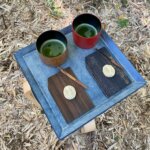
Catherine and Paul, Australia
We had a truly wonderful time in Japan. Lots of people have asked what was the highlight and it really is hard to pick one, or even a few. We really enjoyed the Tsukiji market, the visit to Yanaka, the Kiyosumi Garden, all the gardens in Kyoto, the evening in Osaka, the lunch with the… Read More
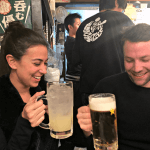
Becky & Jay, New York City
Boutique Japan planned our honeymoon in February 2016. Our overall experience with them was absolutely exceptional, I could not recommend them more. My husband and I love to travel but had never used a travel agent before (truth is we’ve always been skeptical). We found an article written by Boutique Japan on the best sushi… Read More
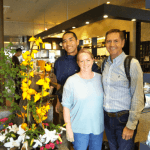
Gary & Shiona, Australia
We are just settling back after a truly wonderful trip during which every aspect was quite special. The itinerary was full of highlights, superbly structured and finely organized – even down to the ‘comfortable’ 4-minute train change in Nagoya. Boutique Japan brought the team's deep knowledge of Japan to bear to develop a range of… Read More
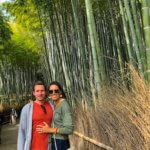
Ally Vain & Chris Tillotson, Dallas
Boutique Japan brought our dream Honeymoon Trip to life. My husband and I visited Japan to celebrate our Honeymoon and the experience Boutique Japan provided for us was more than we could have imagined. I cannot reiterate enough, we could not have done this without them! The staff was extremely responsive, professional and accommodating every… Read More
Sample Trip Highlights
- An immersive private itinerary, crafted with love by Boutique Japan
- Tokyo , one of the world’s most exciting cities
- Historic Nagano and the Snow Monkeys in the Japan Alps
- The Nakasendo Way and the picture-perfect village of Tsumago in the rural Kiso Valley
- Kyoto , the heart and soul of traditional Japan
- Stunning art and architecture on Naoshima , including a stay at Benesse House
- The fun-loving, food-obsessed city of Osaka
- All your accommodations, in boutique and luxury hotels and ryokans to match your taste and priorities
- Unique private tours and experiences with fun and knowledgeable local experts
- Seamless logistics and in-country transport via the shinkansen (bullet train) and more
- Extensive pre-departure information to help you prepare for your trip
- Access to our in-depth Japan expertise, relationships, and firsthand experience
- A Japan specialist to answer your questions, and thoughtful customer service
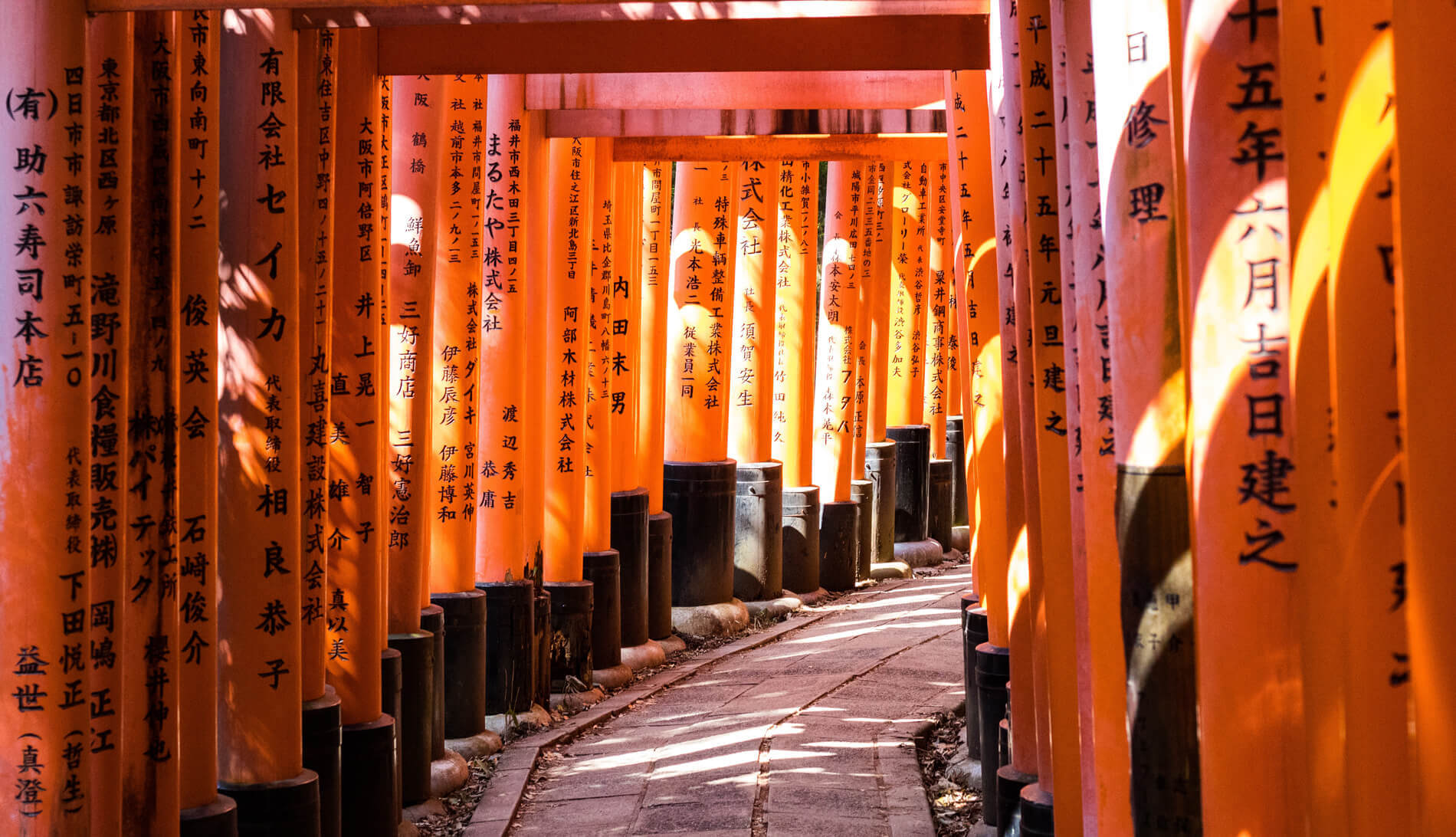
Itinerary Overview
Fly into either of Tokyo’s airports, Narita (NRT) or Haneda (HND).
This sample itinerary can also be customized to begin in the Kansai region (where Kyoto and Osaka are located), flying into either of Osaka’s two major airports, Kansai (KIX) or Itami (ITM).
Day 1: Arrive in Tokyo, Japan Day 2: Modern Tokyo Highlights & Evening Whisky Tasting Day 3: Backstreets Cycling Tour of Tokyo Day 4: Shinkansen (Bullet Train) to Nagano & the Japanese Alps Day 5: Morning Snow Monkeys & Afternoon Travel to the Kiso Valley Day 6: Walk Along the Nakasendo Way from Magome to Tsumago Day 7: Morning in Tsumago & Travel to Kyoto Day 8: Unique Highlights of Kyoto (On & Off The Beaten Path) Day 9: Day Trip to Shigaraki for the Miho Museum & Pottery Day 10: Fushimi Inari Shrine & Travel to Naoshima Day 11: Daytime Explorations of Naoshima & Evening Culinary Outing in Osaka Day 12: Depart Japan
Depart from either of Osaka’s airports, or customize this trip to end with departure from Tokyo or elsewhere in Japan.
Itinerary Details
Day 1: arrive in tokyo, japan.
Welcome to Japan! On arrival in Tokyo, you’ll be met and transferred by private vehicle to your luxurious accommodations.
Depending on your flight’s scheduled arrival time we typically recommend keeping your first evening free, both in case of unexpected flight delays, and also to account for possible fatigue from the long journey.
Settle in, adjust to your exciting new surroundings, and get ready for your adventure ahead!
Your Tokyo hotel : Palace Hotel Tokyo or Andaz Tokyo
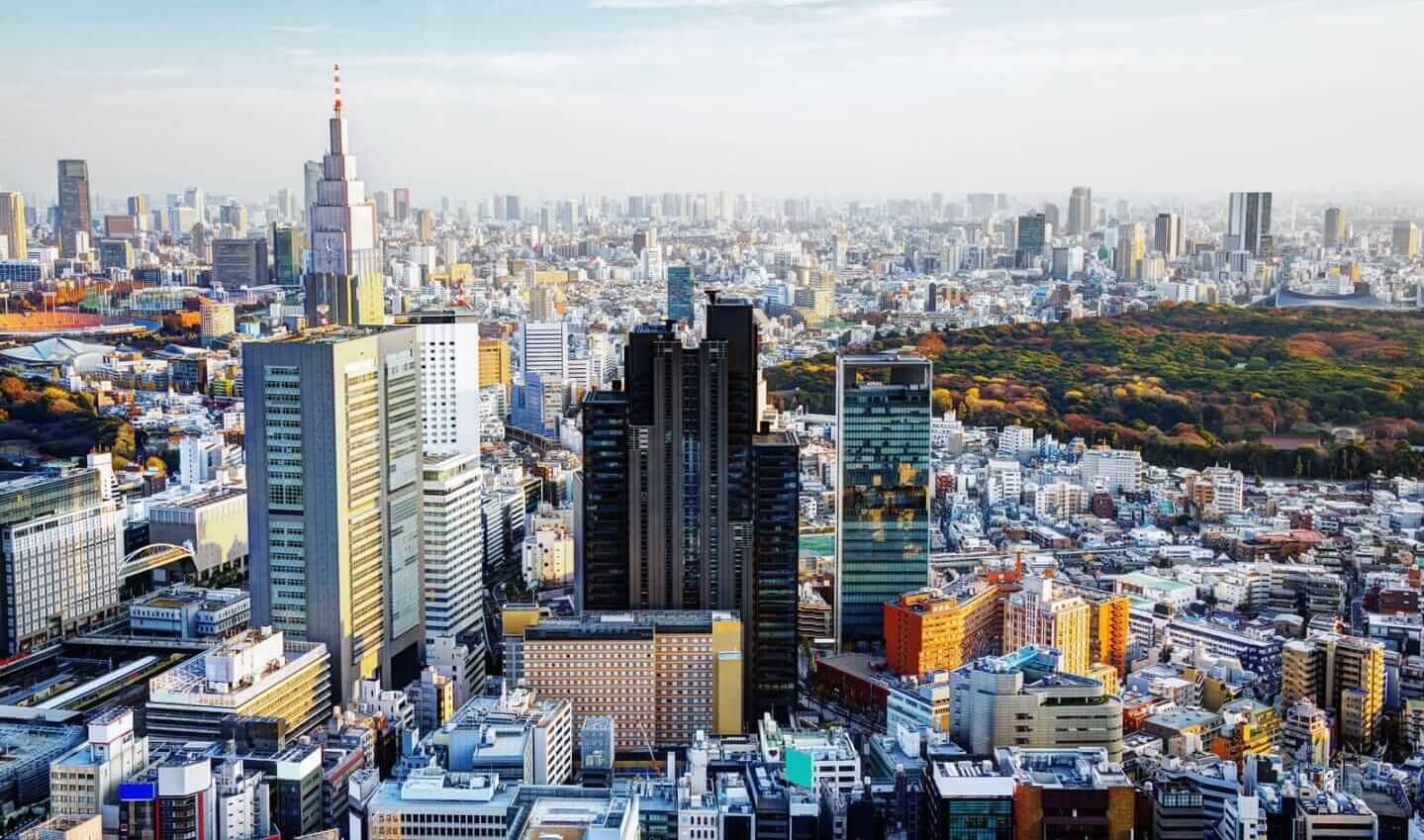
Day 2: Modern Tokyo Highlights & Evening Whisky Tasting
Ohayou gozaimasu (good morning)!
Today is your first full day to begin taking in the Tokyo metropolis. You’ll begin with an immersive half-day tour introducing you to the city, and end with a memorable Japanese whisky tasting.
After a delicious breakfast at your hotel, you’ll be met by your insightful private guide. While Tokyo can certainly be enjoyed without a guide, exploring with a fun and knowledgeable expert by your side will dramatically enhance your experience.
At Boutique Japan, we have exceedingly high standards when it comes to private guides, and carefully design each private tour to cater to your unique priorities and interests.
Tokyo is one of the world’s liveliest cities, full of amazing restaurants, beautiful gardens, stunning modern architecture, charming backstreets, and a glittering neon-filled cityscape. Beyond the city lights and crowds, Tokyo is also full of quiet neighborhoods where you’ll find locals going about their daily lives, and countless hidden gems in the form of unsung yet wonderful little shops and restaurants.
Explore unique neighborhoods such as (for example) Naka-Meguro, Yanaka, Aoyama, Omotesando, and Asakusa; along with one or more excellent museums, shrines, or gardens such as the Tokyo National Museum, Meiji Jingu Shrine, and Shinjuku Gyoen National Garden (explore more of our favorite Tokyo neighborhoods ).
Following your fascinating tour, you’ll have some time to relax at your hotel and recover from any remaining jet lag you may have, or continue exploring independently. For your free time, you’ll be able to take advantage of the pre-departure materials we provide to each of our travelers.
This evening you’ll venture out on an immersive Japanese whisky tour. Japanese whisky is world-renowned for good reason, and there are few better places to drink it than in Tokyo, which is home to some of the best whisky bars on the planet. As part of your outing you’ll visit a couple of different bars, where you’ll have the chance to sample a variety of excellent Japanese whiskies.
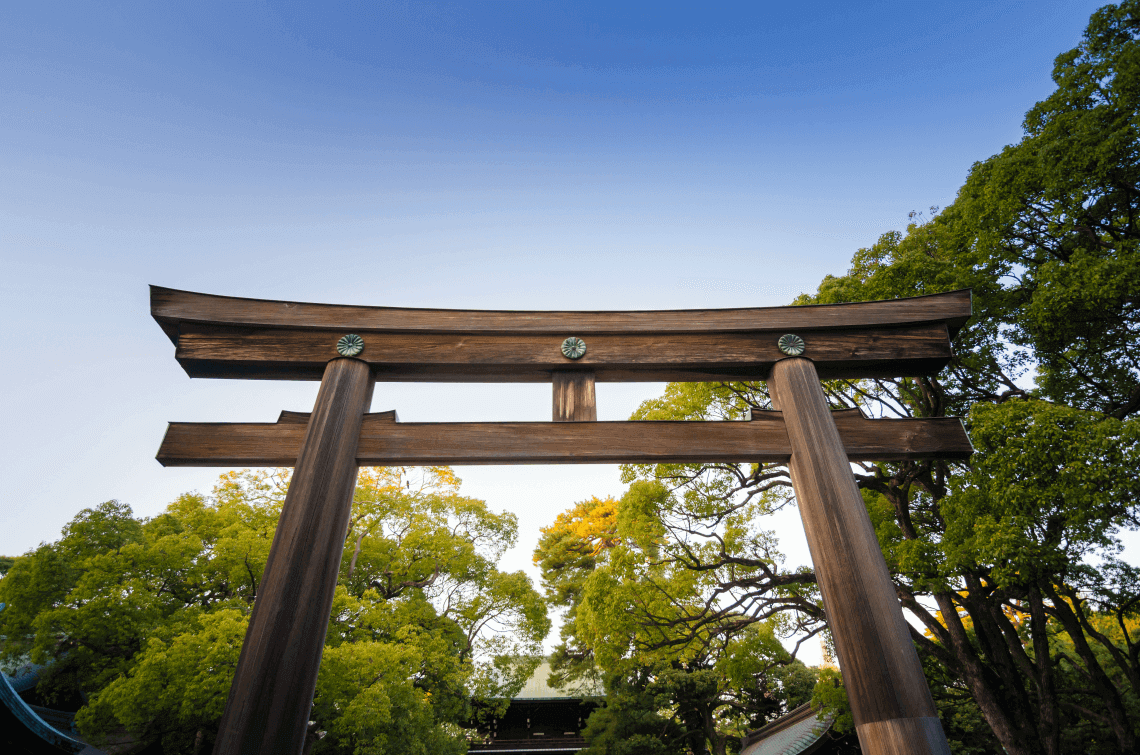
Day 3: Backstreets Cycling Tour of Tokyo
Most first-time visitors envision Tokyo as an ultra-dense, crowded metropolis. While it’s certainly true that some of Tokyo’s neighborhoods do live up to this neon-filled hype, much of the city is composed of surprisingly quiet and charming districts.
Today you’ll experience the quieter side of Tokyo as you embark on a leisurely private cycling tour of the city (urban cycling experience not required). Tokyo is a truly wonderful city for cycling, filled with eclectic neighborhoods along with polite and orderly drivers.
If you’re not interested in cycling, this tour can be modified and made into a backstreets walking tour instead.
Under the guidance of your expert private guide, you’ll wind your way through the slow-paced backstreets of a selection of colorful, off-the-beaten-path neighborhoods. As you explore these non-touristy areas, you’ll also have the chance to stop for casual street snacks along the way.
Your tour will conclude in a lively neighborhood, the perfect place to spend a couple of hours strolling, eating, people watching, or shopping. After some downtime this afternoon, head out for an incredible sushi meal or a taste of Tokyo’s legendary nightlife .

Day 4: Shinkansen (Bullet Train) to Nagano & the Japanese Alps
Enjoy a final morning free in Tokyo with the chance to visit Tokyo’s Tsukiji Market if you wish. While the wholesale section of the fish market moved to Toyosu in 2018, Tsukiji’s lively outer market remains an incredible place to immerse yourself in Japanese cuisine.
Then it’s time to leave the city for the mountains.
Today you’ll have your first experience traveling on Japan’s remarkable trains . To begin your journey into the Japanese Alps, you’ll be speeding northwest into central Japan via Japan’s iconic shinkansen (bullet train), a wonderfully pleasant way to travel. Before you depart, take some time to shop for a beautiful bento box lunch to enjoy on the journey (major train stations in Japan offer an astounding variety of delicious seasonal bentos).
On arrival at Nagano Station, you’ll make the easy change to a local train headed deeper into the Alps. But before you continue on your journey, you will have a couple of hours to stroll the charming streets of Nagano City itself.
It’s a nice walk (or short taxi ride) from Nagano Station to the magnificent Zenko-ji, one of Japan’s most important temples, with a history of 1,400 years. The small city of Nagano developed around the temple complex, and the streets leading to Zenko-ji are lined with old-fashioned shops.
Leaving Nagano, it’s a short trip by local rail to your destination for the evening. You have the option to stay in a traditional Japanese-style ryokan in a quaint onsen (hot springs) town, or a small and stylish boutique hotel in the beautiful little historical town of Obuse.
Enjoy a relaxing evening in rural Japan in preparation to visit the Snow Monkeys tomorrow morning.
Your Alps hotel : Masuichi Kyakuden

Day 5: Morning Snow Monkeys & Afternoon Travel to the Kiso Valley
This morning you will have the chance to visit Japan’s iconic Snow Monkeys, before spending the night in the picturesque village of Tsumago in the Kiso Valley.
From the entrance to the Snow Monkey Park (Jigokudani Yaen Koen), it’s about a half-hour walk to the onsen where the famous Japanese Macaques bathe. In winter the trail is often covered in deep snow, so you’ll need to dress appropriately!
Following your morning adventure, this afternoon you’ll make the easy trip south by rail into the scenic and historic Kiso Valley.
This afternoon and evening settle into the gentle pace of your rural accommodations, located in the idyllic outskirts of Tsumago village. Enjoy a rejuvenating soak in the healing onsen, a healthy and delicious dinner featuring local and seasonal specialties, and the chance to stargaze before bed.
Your Tsumago ryokan : Takimi no Ie or Fuki no Mori
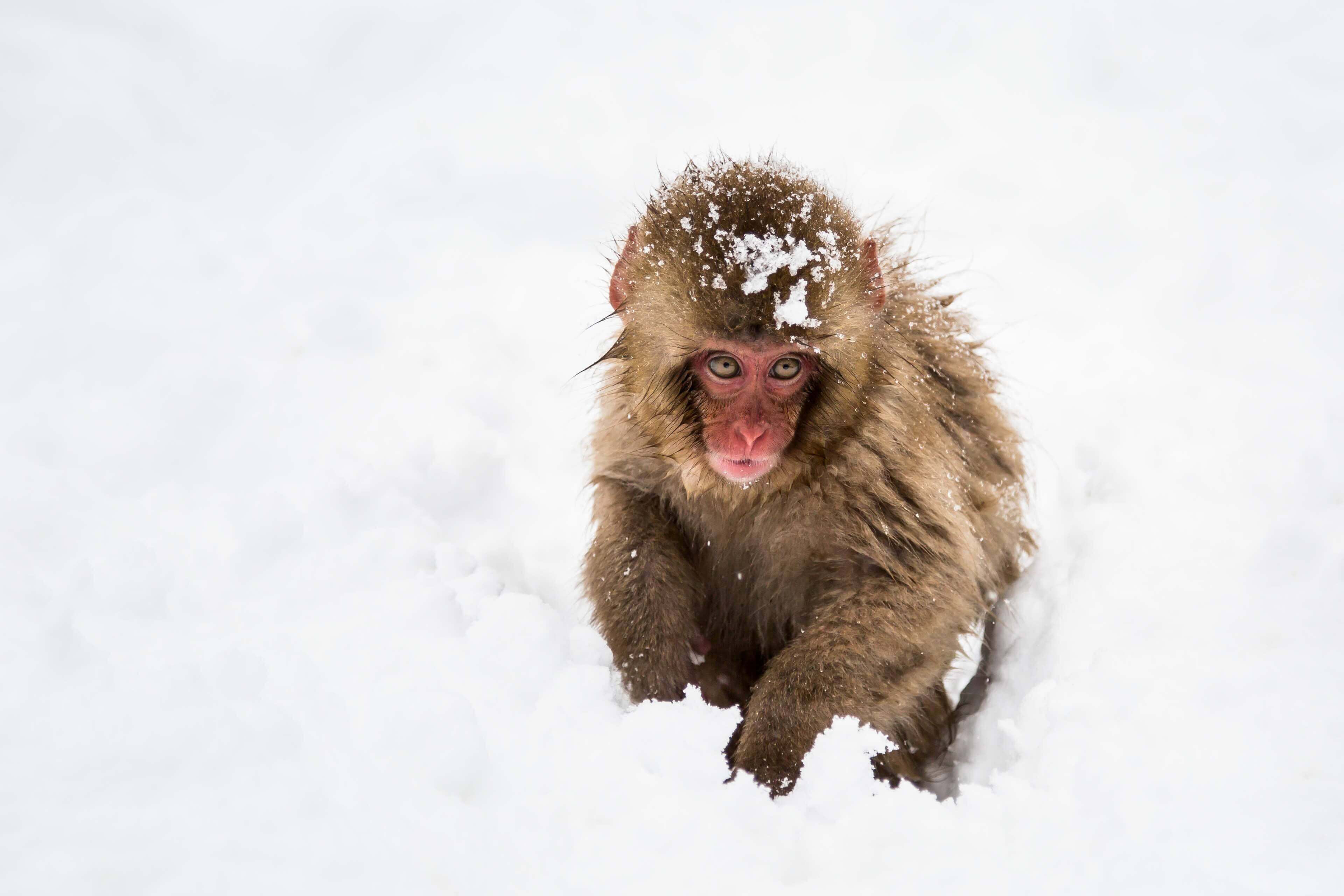
Day 6: Walk Along the Nakasendo Way from Magome to Tsumago
Enjoy an early morning soak in the onsen and a simple Japanese breakfast before your day hike. Today you’ll have the chance to walk along the Nakasendo Road, one of five routes used by samurai to travel between Tokyo and Kyoto during the Edo period.
You’ll begin in the quaint post town of Magome, which lies on a steep slope and is one of the best-preserved towns in the Kiso Valley. From here, you’ll embark on your hike to Tsumago along one of the most carefully preserved stretches of the Nakasendo (a hike of approximately 3-4 hours).
On arrival back in Tsumago, you’ll have the remainder of the afternoon free. Tsumago is one of the Nakasendo’s most beloved post towns, with good reason. The village’s residents have done their utmost to preserve an Edo-era atmosphere, resulting in one of Japan’s most delightful historical villages.
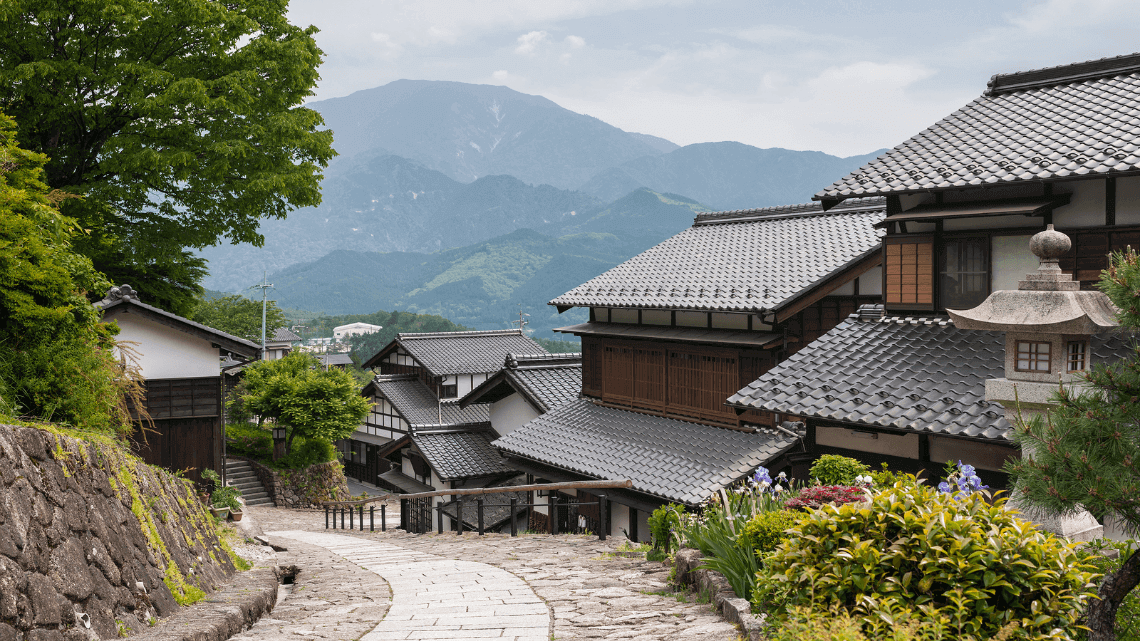
Day 7: Morning in Tsumago & Travel to Kyoto
Enjoy your final morning in the Kiso Valley. When it’s time to depart, you’ll travel by rail (including another ride on the shinkansen) to the ancient capital, Kyoto.
Kyoto is one of the most culturally rich cities in the world, and the place most travelers dream of when envisioning Japan. Home to 17 UNESCO World Heritage sites, Kyoto was the capital of Japan for over a thousand years and remains the heart and soul of traditional Japan.
Today it is a large modern city of over a million residents, and at first glance looks almost like any other Japanese town. But the city retains many of its long-established traditions, and despite the neon and concrete prevalent in many parts of town, Kyoto is teeming with beautiful and well-preserved pockets where time seems to move more slowly.
You’ll have part of the afternoon free to settle in and adjust to your new surroundings.
In the early evening, you’ll head out on a fascinating private walking tour through the backstreets of Kyoto’s best-known geisha district, Gion. As you slowly meander your way through the narrow lanes and hidden alleys of this enigmatic district, your expert guide will teach you about the history and reality of Kyoto’s geiko (as geisha are called in Kyoto) and maiko (apprentice geisha).
This is a great way to learn about Japan’s most misunderstood traditional profession, and it’s likely you’ll come across geiko or maiko en route to their evening appointments.
Your Kyoto hotel : Hotel Kanra Kyoto or Hyatt Regency Kyoto

Day 8: Unique Highlights of Kyoto (On & Off The Beaten Path)
Kyoto is full of famous sights, but to experience the city on a deeper level it’s also essential to spend time wandering off the beaten path.
No trip to Kyoto would be complete without visiting some of its remarkable temples, shrines, and gardens. For your time in the ancient capital, you will have the chance to take in an exceptional selection of Kyoto’s gems, carefully curated around your unique priorities and interests.
Explore Kyoto highlights such as (for example) the historic Higashiyama district, the charming Philosopher’s Path, and the picturesque Arashiyama district, along with off-the-beaten-path strolls through lesser-known Kyoto areas with your expert guide.
Kyoto is also rightly renowned for its cuisine and artisans. The colorful Nishiki Market is crowded but a must-visit for food and market lovers. For travelers interested in the arts and traditional crafts, the chance to visit with a shokunin (master craftsperson) in their private workshop is an unforgettable experience.
Beyond the extraordinary sights and wealth of traditional culture, Kyoto is also home to a booming creative scene, and throughout the ancient capital you’ll also find stunning modern design in museums and galleries, along with shops and cafes.
Following your private tour you’ll have the remainder of your day to relax at your lovely hotel, or continue exploring independently making use of the pre-departure materials we provide to each of our travelers.

Day 9: Day Trip to Shigaraki for the Miho Museum & Pottery
You will not run out of things to see and do in Kyoto, but rural Shigaraki in Kyoto’s outskirts makes for a wonderful day trip.
Begin at the gorgeous Miho Museum , located on a scenic mountainside. Designed by architect I.M. Pei, the striking Miho Museum houses the private collection of Mihoko Koyama, and includes Asian and Western antiques, as well as works from various ancient civilizations (the museum is closed for a large part of every year).
Afterwards, explore Shigaraki , one of Japan’s most important centers for pottery. Renowned as one of Japan’s six ancient kilns, Shigaraki is famous for the quality of its clay, evident in the lovely shigaraki-yaki (Shigaraki ware).
Day 10: Fushimi Inari Shrine & Travel to Naoshima
Before traveling to Naoshima this morning, you’ll have one final early-morning adventure in Kyoto.
An early start is necessary, as you’ll be visiting Fushimi Inari Taisha, one of Japan’s most famous sightseeing spots. Fushimi Inari is worth visiting even for people who generally avoid “touristy” places, and the easiest way to avoid crowds is by arriving early!
Afterwards, begin the easy trip to the art island of Naoshima, a must-visit destination for art and architecture lovers. The island offers a truly beguiling combination of beautiful natural scenery, charming fishing villages, and cutting-edge modern art and architecture that blend into the coastal landscape.
The journey to Naoshima is easy, with a smooth ride on the shinkansen, an effortless private transfer to the tiny Uno Port, and a short ferry across to the island. As a guest of the one-of-a-kind Benesse House, which doubles as a hotel and museum, you’ll have access to the convenient hotel shuttle making the rounds of the island’s various art sites.
Enjoy the afternoon taking in the island’s museums, galleries, and installations. Among Naoshima’s many highlights are the stunning Chichu Art Museum, the Art House Project, the Lee Ufan Museum, and Benesse House itself.
You’ll spend the night at the Tadao Ando-designed Benesse House, which overlooks the Seto Inland Sea. Guest rooms in each of the hotel’s unique buildings (Museum, Oval, Beach, and Park) feature different works of art, and — among other perks — guests of the hotel enjoy special after-hours access to Benesse House Museum.
Enjoy a peaceful evening in the laid-back Setouchi region of Japan.
Your Naoshima hotel : Benesse House
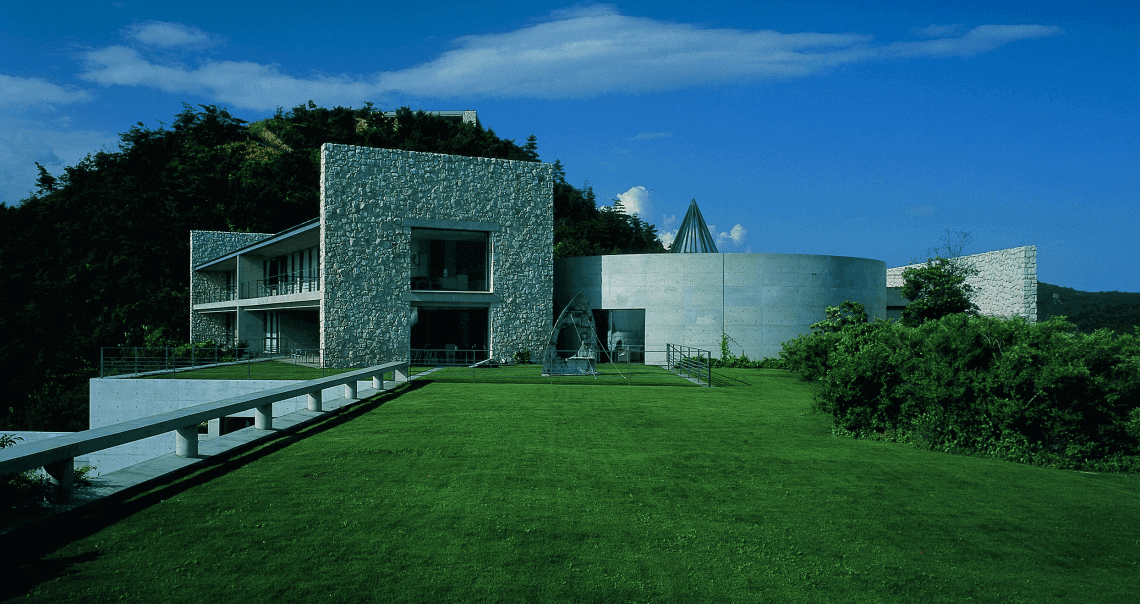
Day 11: Daytime Explorations of Naoshima & Evening Culinary Outing in Osaka
You will have the full morning and part of the early afternoon to enjoy all Naoshima offers.
After a morning of art, architecture, and island landscapes you will depart for the city of Osaka, retracing your steps by ferry and private transfer, followed by a quick ride on the shinkansen. On arrival in dynamic Osaka, make your way to your luxurious hotel in the heart of the city.
Osaka is perhaps Japan’s most food-obsessed city, and home to Japan’s most outgoing citizens. There is no better way to experience this fun-loving city than through its countless restaurants, street side stalls, izakayas , and hole-in-the-wall bars.
This evening you’ll be met by a local culinary expert who will take you on an immersive private Osaka food and sake crawl. As part of this unique outing, you’ll be sampling food and drink at a small selection of casual and delicious establishments designed to give you an authentic Osaka experience.
The perfect way to celebrate your final evening in Japan!
Your Osaka hotel : The St. Regis Osaka or Conrad Osaka
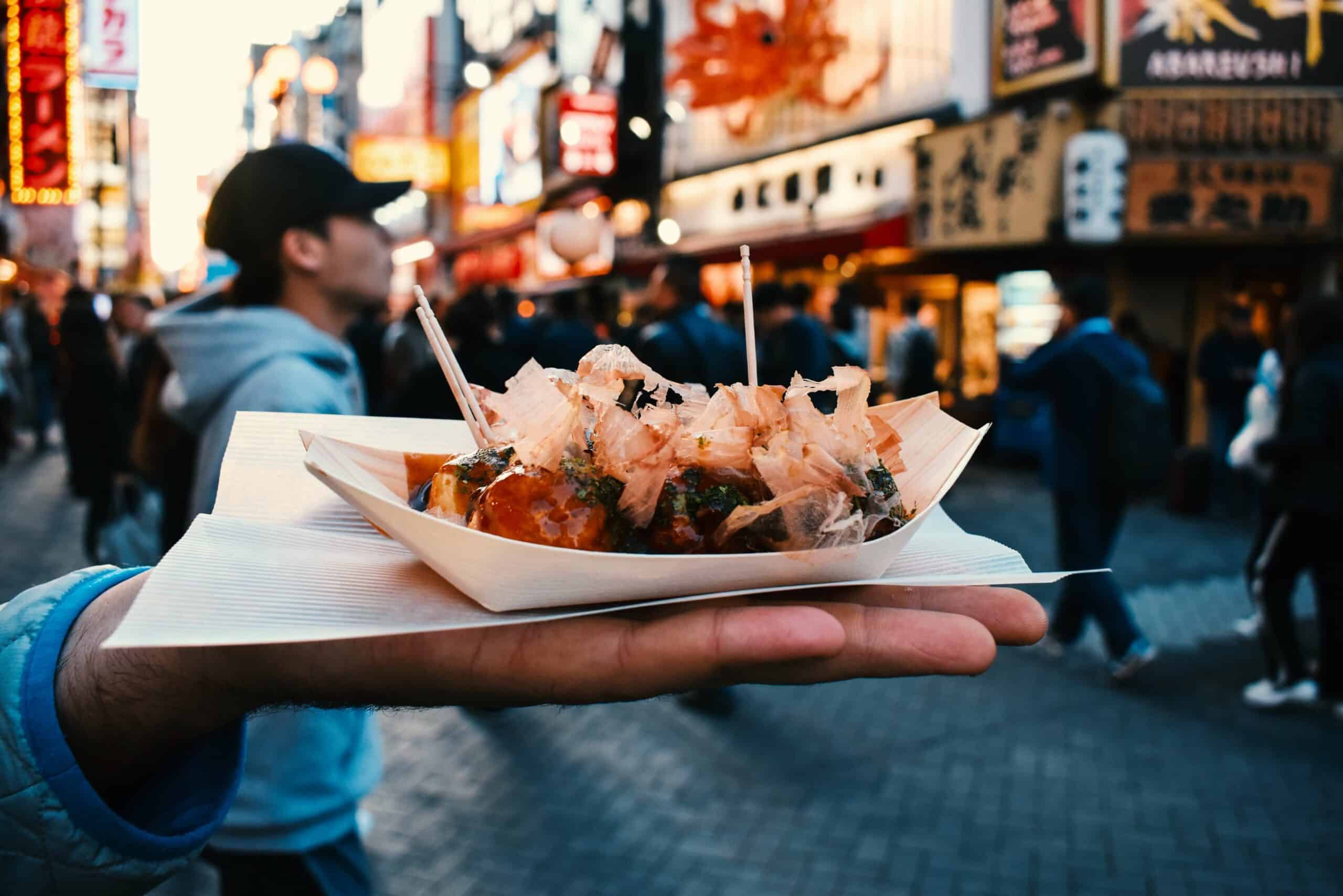
Day 12: Depart Japan
You’ll be free until departure. Depending on your flight time, you may have time for some last-minute explorations (and eating!).
In good time for your departure flight, you’ll be picked up at your accommodations for the comfortable private transfer to your departure airport.
Come back to Japan soon!
Plan Your Japan Trip
Learn more and contact us to discuss your unique trip.
Get Started
- The Process
- Testimonials
Japan trip itinerary: 12 days in Tokyo, Kyoto, and Osaka
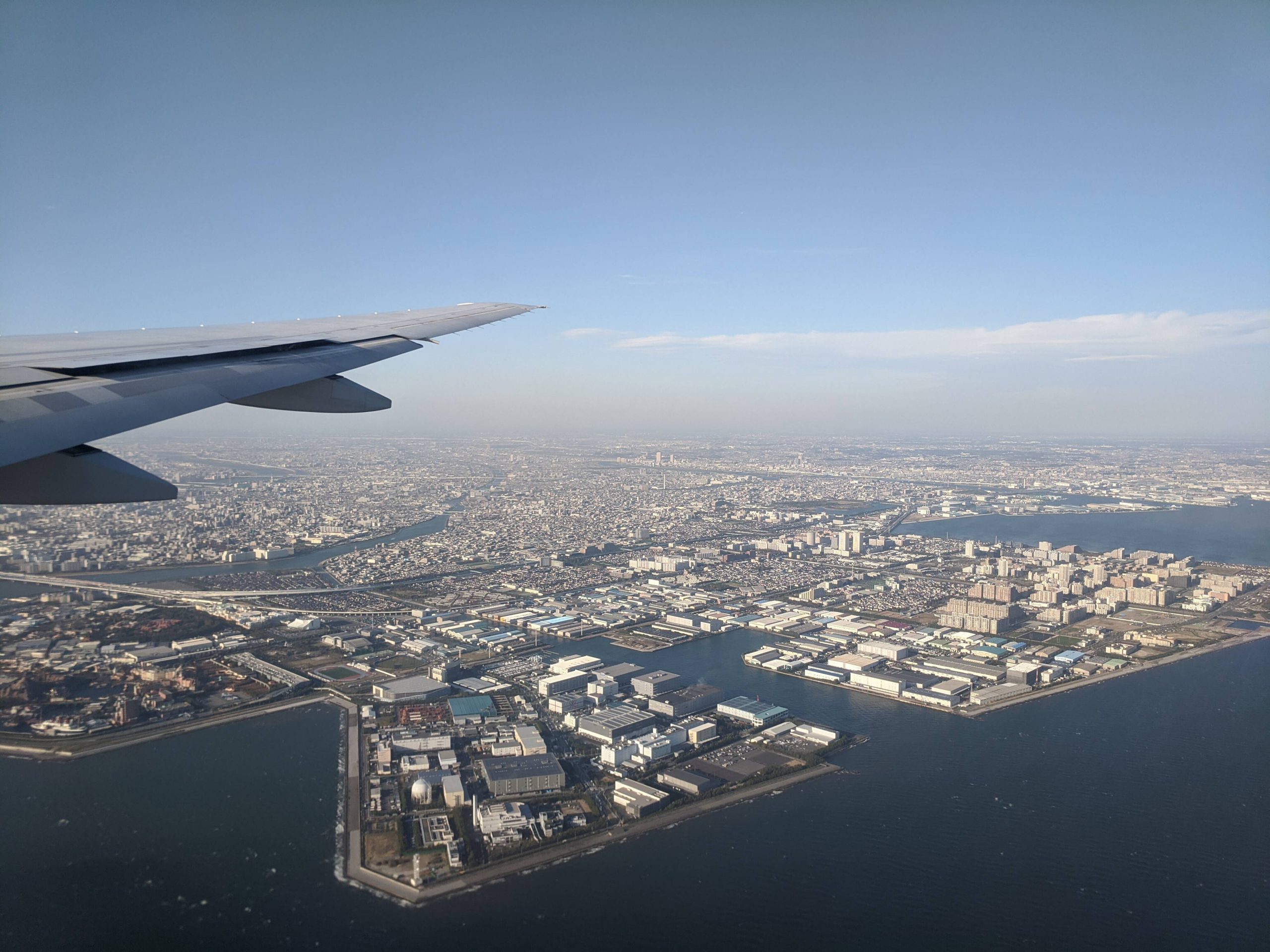
I first began writing this as a draft in December 2019, but never ended up finishing the post. Still, better late than never, I guess.
As of now, it’s been more than three years since my vacation in Japan. I couldn’t have asked for a better place to embark on my last major pre-pandemic travels. Japan is an amazing place and it was an incredible time. From November 18 to November 29, 2019, I traveled around Japan for 12 days with a friend, beginning in Tokyo, then visiting Kyoto, Osaka, and Tokyo again. Here, I want to document my day-by-day itinerary in detail (I jotted down notes every other night during the trip), so as to better remember my time there.
The trip consisted of three main legs:
Day 1: Arrival in Tokyo
Day 2: shibuya and shinjuku, day 3: more shibuya and shinjuku, day 4: shinkansen to kyoto, day 4: kawaramachi, day 5: osaka, day 6: castles and shrines, day 7: shinkansen to tokyo, day 7: asakusa, day 8: akihabara, day 9: yokohama, day 10: odaiba, day 11: nakano and kichijoji, day 12: farewell tour.
General Observations Conclusion
Part I: Tokyo (Day 1 – Day 4)
Shibuya at night
- November 18
- Arrived at Haneda airport at 3:30pm local time
- Got a Pasmo card and exchanged JR Pass voucher
- Hopped on the subway right before rush hour; messed up by not getting off at Keikyu Katawa and had to double back from Kawasaki (facepalm)
- Walked around Shibuya Station
- Walked through an overpass; was mildly lost as I had intended to visit the Phantom Thieves overpass by the Ginza line entrance but ended up in a different one
- Visited Hachiko statue and crossed Shibuya Scramble
- Settled in at the Airbnb in Shibuya
- More general walking around; ate tonkotsu ramen at Ichiran
- (Mild rain during all this, made everything very glisteny which was cool)
- November 19
- Meiji Jingu – already hella tourists by 9 am, cool big gates and shrine though
- Yoyogi Park – big and beautiful, low key hangout; not many tourists in the morning
- Walked around Shimokitazawa (very old school Tokyo vibes, and one of the few areas where I saw actual grocery stores)
- Brief visit to Sangenjaya ; Rain on the Roof was closed for lunch :(, but I saw the famed laundromat/bathhouse entrance… abided by the “no photograph” sign which I thought was funny it was there
- Shinjuku Gyoen National Garden – cool place with some beautifully juxtaposed views of nature and the city skyline, but too many tourists
- Walked around Isetan briefly (ugh, 3fancy5me)
- Looked at street food near Golden Gai but didn’t get anything (so crowded!)
- Tonkatsu/wasabi sandwich from 7/11 near the Airbnb (very solid taste)
- Met up with my friend and grabbed a casual midnight dinner (curry bowl) at a Sukiya near the Airbnb
- November 20
- Harajuku (completely dead in the morning)
- Omotesando Avenue (very upscale stores; vibes vaguely similar to Unter den Linden in Berlin; could hear quite a few Chinese tourists, as usual)
- Visited Meiji Jingu again, since my friend missed out on it yesterday
- Ate at random café in a cellar near Shibuya Scramble for lunch after failing to find a teppanyaki place at the address provided by Google Maps (in its place was some kind of beauty salon, where I inadvertently terrified the receptionist with my broken Japanese lol)
- Satei Hato coffee shop – had the Hato original blend and orange chiffon cake (amazing atmosphere and coffee and cake; unique decor for each table)
- Walked around Shinjuku and Kabuchiko (ayy lmao; sketchy “peep shows,” quasi-brothels, and love hotels—to be clear, I did not set foot or partake in any of these)
- Briefly stopped in Isetan to use the bathroom (fancy heated seats and bidet spray lol)
- Entered Sega arcade (huge; arcade upstairs, claw machines downstairs; only took a few tries to win big blue doge from the claw machine even though a few other machines took my coins and did nothing lol)
- Saw the Godzilla Head on top of Hotel Gracery (was in the afternoon so no lighting/smoke effects yet)
- Walked around more and shopped at Don Quijote (Waterfront umbrellas and Kit Kats, ayyy)
- Hit up pre-dinner street food near Golden Gai (my buddy got a fish-on-a-stick thing; nothing appealed to me much so I didn’t get anything, same as yesterday)
- Walked around shops on B1 of Shinjuku Station (huge expanse wtf)
- Visited Kiddyland (disappointing, boring and overpriced) and walked along Omotesando at night
- Briefly revisited Harajuku to see if it was more poppin at night (not at all, still very few people)
- Dinner at Tonteki near Shibuya Station
- November 21
- Shinkansen to Kyoto
- Picked up ekiben from a shop called ecute in Shinagawa Station (I chose a duck entree, which tasted great)
Part II: Kyoto (Day 4 – Day 7)
Kyoto’s Kamogawa
- Walked from Kyoto Station to fancy yet reasonably priced Airbnb (Elitz Inn) in Kawaramachi
- Walked along the banks of the Kamo River
- Stopped by Ikariya coffee for an afternoon snack (craft latte and salted milk kinako, yum)
- Explored Shijo and Teramachi until nighttime
- Walked along Pontocho at night
- Got Kobe wagyu sirloin at Pontocho Kyoshikian (delicious buttery melt-in-mouth; chef was a tall dude who made friendly conversation with us)
- Stopped at Pontocho Whiskey Museum , drank the eponymous beverage (tasted decent)
- Crossed the river and walked around Gion
- Explored Yasaka Shrine and Maruyama Park (very serene at night)
- Snackies from FamilyMart (as usual… Ohayo Jersey Milk = best pudding; wagyu steak flavored Lays chips are legit too)
- November 22
- Hankyu line to Osaka in the morning (got omegadelayed, ended up taking like 3.5 hours; also, at first we accidentally stumbled into a women-only car for a minute lol)
- Passed by the Umeda building but didn’t get out of Umeda Station , instead continued to Dotonbori
- Walked around Dotonbori (like toned down Shibuya) and grabbed some takoyaki
- Grabbed spicy miso ramen at Tonkotsu Ramen Hakata Furyu Sennichimae in Shinsaibashi (very delicious, hella big portions/refills)
- Walked to/around Tsutenkaku (did not go up the tower due to the huge line of students)
- (I think we inadvertently walked through part of Denden town to get to Tsutenkaku, but the streets were pretty quiet… didn’t see anything crazy except some mild weeb posters)
- Walked on the bridge past the Osaka Zoo / Art Museum to Tennoji Park
- Walked out of the park into an alley with random sketchy motels, then accidentally stumbled into a peace memorial/shrine which had a cool secluded overlook of the river
- Visited Osaka Castle Park (huge and amazing views, worth dealing with the large crowds of tourists)
- Went to some famed sushi place on the 5th floor of Keihan Mall Kyobashi for an early bite (solid sushi but not blown away)
- Took the Keihan line back to Kyoto (no delays this time; saloon double-decker train was cool)
Fushimi Inari at night
- November 23
- Nishiki Market in the morning for various snackies and gift shopping
- Stopped by Weekenders Coffee (random chill little spot at the back of a parking lot)
- Walked to Nijo Castle , entered castle and walked around (looked at replica paintings like the bootleg tigers lol) then walked around outside
- Stopped at random ramen place across the street from Nijojo (aight but not as good as Ichiran or the place in Osaka)
- Walked to Kyoto Gyoen National Garden , walked around the garden and entered Kyoto Imperial Palace
- Took a taxi to the south end of the Philosopher’s Path (very nice older driver, surprisingly I was able to converse with him a bit in Japanese)
- Walked north along the Philosopher’s Path (hella tourists, place was like the High Line in NY; still, beautiful little stream with fluffy duckies and red-orange-yellow foliage)
- Decided not to continue to Ginkakuji due to how ridiculously crowded the path to it was
- Chilled for a bit at Bambi Café (got blueberry tea and matcha parfait, both delicious)
- Walked west along Imadegawa-dori to a subway station and took a train back to Elitz
- Fushimi Inari at night – hiked all the way to the top and back (it was a great idea to go at night: beautiful weather, clear skies, amazing views, not crowded at all)
- Got hella expensive Kobe beef at Steak and Wine Pontocho ($200 Chateaubriand; it was really good, but Kyoshikian was much better value)
- Ultimately never got to try out the elusive ChaoChao Gyoza (always lines, then closed early; sadge)
- November 24
- Nishiki Market food tour, part 2 (got big fried shrimp, soymilk croquette, soymilk ice cream and soymilk donuts; YEET)
- Ikariya coffee, part 2 (fruit latte was really good)
- ChaoChao Gyoza for lunch!!! Classic ChaoChao gyoza, pork curry gyoza (my favorite) and shrimp gyoza, awesome sweet matcha tea
- Walked along Kamogawa then went to Kiyomizu-dera (hella crowded though)
- Walked to the outside of Kodaiji but didn’t go in
- Walked around the streets of Gion proper (skipped over it a bit the other night)
- Shinkansen back to Tokyo
Part III: Tokyo Again (Day 7 – Day 12)
Sensoji Temple at night
- Airbnb in Asakusa is awesome, right next to the Skytree (never ceases to amaze me how cool it looks, and how close we are to it)
- Wandered the streets of Asakusa at night (very chill/mellow vibes, polar opposite of Shibuya/Shinjuku) – briefly walked around Sumida Park (smaller than expected, ground was muddy from rain, and it was very misty which created a “too quiet” vibe; reminded me of when I randomly walked around at night in Barcelona) then crossed the bridge over the Sumida River (subdued/serene lighting but beautiful nonetheless)
- Walked to Sensoji Temple (beautifully lit up at night, relatively few tourists at this hour, so got some nice photos)
- Walked down empty Nakamise-dori and continued to the crazy big Vegas-esque looking 24h Don Quixote (ridiculously busy at 10pm on a Sunday… like an NY Trader Joe’s), grabbed various snackies (pudding, Cheetos, Kit Kats, etc.)
- Walked back to the Airbnb across the same bridge (absolutely stunning direct view of Skytree… I couldn’t stop looking up the entire way)
- November 25
- Late start to the day to rest up
- Walked all the way to Akihabara
- Checked out the outside of Radio Kaikan (lots of maids at every street corner trying to hand out ads for their cafés)
- Had lunch at Aoshima Shokudo (long line but was worth it, best broth I ever had and the chashu and ramen were amazing)
- Stopped for some coffee at Keys Café
- Explored Yodobashi Camera (spent way more time here than I expected, the afternoon just flew by; also, video games in YC were way more expensive than they are in the US)
- Explored Radio Kaikan (building was way smaller and had a much different layout than I expected based on Steins;Gate ; still cool though)
- Walked to Ueno Park (cool big plaza with reflecting pool, which was memorable in the night lighting; parked police car’s orange flashing lights would make for a great cinemagraph)
- Further walking to Ueno Pond (completely filled with lilies, could barely even tell there was water there) and small temple in the middle
- Rested at Airbnb for a bit then headed to Steakhouse Matsunami for a 10-course dinner (excellent service and lots of good food)
- Walked to Donki again and picked up some snackies (got some nice pics/cinemagraphic video from the Kototoi Bridge on the way there; took Azumabashi on the way back)
- November 26
- Mid-morning start to the day, took the train down to Yokohama
- Explored Chinatown and had a really fancy lunch experience at Manchinro Honten (seriously, place was huge and super fancy, very extravagant and liberal use of plates/utensils; the food was quite unique from Chinese food in the US or China, kind of like “conservative” or “streamlined” versions of authentic Chinese dishes, but not quite diluted in a cheap way like some Ameri-Chinese fusion… I liked it a lot)
- Walked around Chinatown a bit more and dropped in a gift shop to buy some souvenirs (i.e. panda merch)
- Walked along Yamashita Park for some great harbor views (random large group of girl scouts/students were walking there at the same time as us lol)
- Walked to the Red Brick Warehouse and experienced an interesting Japanese take on a Christkindlmarkt (no Lebkuchen or glühwein to be found though, darn… there were, however, lots of schnitzel and wurst advertised on flyers hung profligately from every stall)
- Went into the warehouse and explored the different shops in there
- Continued on to Minatomirai , which we explored briefly before taking the train back to Tokyo ( Roppongi )
- Arrived at Roppongi Hills and went into Mori Tower , up to the 52F observation deck (fantastic night view of the city, despite it being too dark to see Mount Fuji)
- Walked to Sakurai for a traditional tea ceremony (very cool and extremely zen, really “realized” the concept of setsuna as I smelled/sipped the delicious hojicha)
- During our 15-minute wait for Sakurai, we went to the stationery shop on the second floor (cool but hella pricey items)
- Checked out the Porter store in Omotesando (was hoping to find a bag under $150 but no such luck, these things are mad expensive)
- Super tired at this point so subwayed back to the Airbnb to call it an early night (grabbed some Karaage-kun from the neighboring Lawson , good stuff)
Odaiba at night
- November 27
- Late morning start to the day, went to Odaiba
- Got off at the Daiba stop and took in the views of the big bridge, Fuji TV building, and bootleg Statue of Liberty (lol)
- Walked past Diver City and the Gundam Unicorn statue
- Checked out the Mega Web history gallery and VenusFort (got suckered into the hyakuenya (100 yen shop) Seria , kind of fun to hunt for the Made in Japan stuff)
- Met up with my friend, continued to explore VenusFort a little bit then went to the main Toyota Mega Web Showcase (yuge space, pretty cool)
- Got lunch at Sojibo in Diver City (delicious chicken curry soba)
- Teamlab Borderless for the afternoon for some very trippy digital art experiences (will have to try Planets next time)
- Walked along the shores of Daiba Park (wanted to walk across the Rainbow Bridge but it was closed at 6) for some awesome evening views of Tokyo
- Split paths with my friend, checked out Joypolis/Decks mall briefly
- Shopping at Muji Akiba (awesome, very neat department store, but I guess they exist in a few US cities to, so not really a Japan-exclusive thing)
- Returned to Airbnb and hung out with my friend a bit before bidding him farewell (he’s flying back to the States the next morning)
- Went to Lawson to stock up on some indulgent snacks and walked to the Skytree Makku (McDonald’s) for a “Gran Clubhouse” burger, some fries, and a coke (latter two were remarkably consistent with US McDonald’s; former was much better quality than the average US Mickey D’s though)
- November 28
- Yet another late morning start to the day, went to Nakano
- Walked around SunPlaza and the area around Nakano Station , explored the Sun Mall briefly
- Spent a lot of time in Nakano Broadway (like the weebmalls in Akiba, except in an older jankier building and less crowded, which was good; there were hella Mandarake stores in this building; I kind of felt bad for spending so much time inside, until I stepped outside again and remembered how rainy and gross it was today)
- Ended up weebing out with a few random capsule machine purchases and a Jack Frost doll from Mandarake (I also wanted to try out the 8-scoop ice cream cone from Daily Chico but just wasn’t really feeling up to it, will have to save it for next time)
- Walked from Nakano to Koenji , passing by Nakano Central Park (cool view; the whole area along the walk felt not like super old old school, but had an 80s/90s vibe which I thought was cool; there was also quite a bit of art deco influence on the architecture, which was interesting)
- Grabbed a quick bite/rest at a FamilyMart in Koenji (made a bootleg strawberry FamiChiki sandwich, yum); also stopped in a Dorama to buy a few cheap Vita/DS games
- Koenji felt super hipster and was cool to walk around despite the rain (to be honest, the clothing street near Koenji Station was similar to what I had expected Harajuku to be)
- Took the train to Inokashira Park and walked around the pond (was wavering on whether to do this, and I’m really glad I did—even though it was dark and raining, the park was beautiful, true to Persona 5’s portrayal; there was a random guy playing guitar and singing and it was pretty moving)
- Took the long train ride back to the Airbnb (experienced the infamous sardine crowding for the first time on the Asakusa line from Nihonbashi; the Chuo/Tozai line had been completely empty from Kichijoji to there)
- Wandered around inside Skytree Solamachi (was originally going to get tickets to go up Skytree, but didn’t want to wait in line so went into Solamachi instead – place is YUGE, like the SouthPark mall but bigger, classier, and somehow less annoying… I ended up buying a Porter bag from Loft lol; it’s interesting that this shopping complex inside the Skytree tower was like a bustling hub of commerce when the rest of Asakusa is so quiet at night)
- Got snackies and karaage-kun from Lawson again to cap off the night
- November 29
- Beautiful, perfectly sunny morning for my last day in Japan :'(
- Stored my luggage in a coin locker in Oshiage Station then chilled on the side balcony of Solamachi for a few minutes while sipping a Dr. Pepper
- Strolled through the side alleys and main streets of Asakusa to Kappabashi to browse various interesting kitchenware (ended up buying a few more chopsticks lol)
- Strolled to Suzukien and got a bowl of grade 7 matcha ice cream (very rich taste) and bought some tea souvenirs
- Walked back to Skytree and took the Keisei line to Narita airport (was so fast getting through security though, I could have spent a couple more hours in Asakusa)
General Observations
Here is a very non-exhaustive list of my observations during my travels in Japan, in no particular order. These were my impressions as of 2019; obviously, the world has changed a lot since then, so some of these might not be as accurate anymore.
- Japan’s reputation for hospitality and top-notch service is well deserved. Everyone I interacted with was very courteous and professional.
- I don’t regret spending so much of the trip in Tokyo; it’s such a large amalgam of cities, I never felt like I was even close to completing my explorations of it.
- Three days felt like the right amount of time to allocate to Kyoto; however, I probably could have spent at least another full day in Osaka.
- Tokyo’s subway system is freaking awesome, and not crowded at all. With the exception of a couple of train lines, most still had very comfortable spacing during rush hour, and I rarely had to wait for a train for more than a few minutes.
- Staying in Shibuya first was a great decision; it’s quite centrally located, which makes it easy to get to just about everywhere else in Tokyo.
- The JR Pass is so worth it.
- Even in the most popular tourist spots (e.g. Osaka Castle), there are some beautiful niches with almost no other people around.
- It’s a good idea to go to super popular destinations at night (e.g. Fushimi Inari, Sensoji Temple). It’s much less crowded and the vibes are immaculate.
- Japan is obsessed with Christmas (decorative lights and Santas everywhere).
- The sound-proofing of side streets and alleys (esp. in Kyoto) is amazing.
- FamilyMart is the best konbini #FamGang4Life. I probably relied a bit too much on konbini food, though.
- Ohayo Jersey Milk is the best pudding.
- The wagyu beef at Pontocho Kyoshikian ($34 for a serving in 2019) is much better value than the $200+ Kobe beef from other restaurants.
- Retail places open quite late in the morning and close quite early in the evening.
- As a visibly East Asian man, I blended into the crowds everywhere, and flew under the radar of tourist-scammers (there weren’t a ton of them, but they exist). Because locals always assumed I was also Japanese, I got to practice speaking Japanese, which was awesome! (Of course, in cases when the conversation carried on for more than a minute or two, it inevitably became obvious to my conversation partners that I was not a native speaker lol.)
- Everywhere is so clean; I really admire how serious everyone is about no littering.
- Public restrooms are awesome; don’t understand why Toto’s high-tech toilets are not widely adopted in the US.
- It’s really important to have good socks and shoes; I walked between 10 to 12 miles a day on average.
- It’s okay to start the day a little later and turn in a bit earlier than a “full” day, as the active part of the day tends to be jam packed. It’s necessary to rest, and I didn’t feel too bad about the opportunity cost, as it felt like I was still seeing/doing a ton every day.
Japan is probably my favorite place that I’ve ever traveled to, and I certainly hope to visit again someday. I was incredibly lucky to have been able to take this trip, unaware that Covid-19 was going to shut everything down within the next few months. The total cost of the trip, including lodging, airfare, food, entertainment, souvenirs, etc. was upwards of $3,000. Totally worth it.
Not gonna lie: when I got back home in the States, I was in withdrawal for a while. But, it gave me motivation to continue studying Japanese (which, at present, I need to get back on it) and plan for the eventual next trip. Also, watching The Devil is a Part-Timer! while munching on the Japanese snacks I brought home was a good “chaser” to the trip.
Charlotte, NC
[email protected]
Blog | About
© 2024 Calvin Ke All Rights Reserved
Where to Stay in Curaçao
Examples of brand collaborations.

- Lauren Wood
- Nov 8, 2023
12 Day Japan Itinerary
Updated: May 21
Here's the exact itinerary for the 12 day trip I took to Japan in March of 2023. This includes travel days, so it's really more of a 10 day itinerary for Tokyo, Kyoto and Osaka.

My cousin Carson and I traveled to Japan in March and spent 10 days visiting Tokyo, Kyoto and Osaka. We chose this time of year for the cherry blossoms, which were just starting to bloom by the tail end of our trip. Carson stayed longer and was able to view them in full bloom, which was toward the end of March in 2023. It's a short window, so if you are only traveling to Japan for the blossoms, make sure to give yourself plenty of time, as the cherry blossoms bloom at different times throughout the country and can be a little unpredictable.
Depart Los Angeles
Thursday, march 9.
LAX to SFO 8 am to 9:30 am
SFO to NRT 12:25 pm to 4:45 pm +1 (arrives Friday)
I used Alaska Airlines points to fly in business class on Japan Airways. This took me on a sort of roundabout trip (traveling through SFO and then from Osaka back to SFO, rather than taking the direct flight from LAX to Tokyo), but it was worth it to fly business on points.
How to Get from Haneda Airport to Tokyo Center
There are several options to get from Haneda Airport to Tokyo center:
Tokyo Monorail : This is the quickest and most convenient option, and is the option I chose for my trip to Japan. The monorail connects Haneda Airport to Hamamatsucho Station in about 13 minutes. From there, you can transfer to other trains or use taxis to reach your destination. I took a taxi.
Keikyu Line : The Keikyu Line also connects Haneda Airport to Tokyo center. You can take the Keikyu Airport Line to Shinagawa Station in about 11 minutes, and then transfer to other trains or use taxis to reach your destination.
Limousine Bus : Limousine buses run regularly between Haneda Airport and various locations in Tokyo, including major hotels and train stations. The journey takes about 30-60 minutes depending on traffic conditions.
Taxi : Taxis are readily available at Haneda Airport, and the journey to Tokyo center can take between 30-60 minutes depending on traffic conditions.
Note: It's important to note that Haneda Airport has two terminals, so be sure to confirm which terminal you will arrive at and which transportation option is best for your destination.
Arrive in Tokyo
Friday, march 10.
Arrive at NRT at 4:45 pm
I stayed at the Conrad Tokyo. Below is a review of the hotel, as well as some other options:
Where to stay in Tokyo:
Here are some 4 and 5 star hotel recommendations for Tokyo to add to any itinerary:
The Conrad Tokyo is a luxurious and impressive hotel that offers guests an exceptional experience in the heart of Tokyo. From the moment you step into the hotel's grand entrance, you're greeted with a stunning view of Tokyo Bay and the city skyline, which sets the tone for your entire stay.
The rooms at the Conrad are spacious and elegantly decorated, featuring modern amenities such as flat-screen TVs, high-speed Wi-Fi, and luxurious bathrooms. The beds are incredibly comfortable, and you can choose from a range of pillows to ensure a good night's sleep.
One of the highlights of the Conrad Tokyo is its exceptional service. The staff is friendly, helpful, and always willing to go above and beyond to ensure that guests have a memorable stay. Whether it's recommending local restaurants or arranging transportation, the staff is always ready to assist with any request. We had several requests while we were there and the staff was always able to accommodate our requests.
The hotel's dining options are also impressive, with a range of restaurants and bars offering delicious cuisine and stunning views of the city. The breakfast buffet at the hotel's Collage restaurant is particularly noteworthy, with a wide variety of options to choose from, including Japanese and Western dishes.
The Conrad Tokyo also boasts an excellent fitness center and spa, with state-of-the-art equipment and a range of treatments to help guests relax and unwind.
Overall, the Conrad is an exceptional hotel that offers guests a luxurious and memorable stay in the heart of Tokyo. Whether you're traveling for business or pleasure, the hotel's elegant rooms, exceptional service, and stunning views make it a top choice for discerning travelers.
The Peninsula Tokyo : This 5-star hotel is located in the heart of Tokyo and offers luxurious accommodations and amenities, including a rooftop bar and an indoor pool.
Park Hyatt Tokyo : Made famous by the movie Lost in Translation, this 5-star hotel offers stunning views of the city, along with luxurious accommodations and a rooftop bar.
Mandarin Oriental Tokyo : This 5-star hotel offers unparalleled views of the city and offers luxurious accommodations, including a spa and several restaurants with Michelin stars.
The Ritz-Carlton Tokyo : This 5-star hotel is located in the heart of Roppongi and offers luxurious accommodations, including a beautiful spa and several fine dining restaurants. This is actually the second place we stayed. We spent 3 nights at the Conrad and then 2 at the Ritz. They upgraded us to a STUNNING corner suite with the most beautiful city skyline views at night. Carson loved the view so much that he opted to sleep in the living room with the city lights behind him, curtains wide open. They also have a really nice bar with super fun cocktails.
These are just a few recommendations, but Tokyo has countless amazing hotels to choose from, so you can tailor your accommodations based on your preferences and budget. I actually loved the Conrad for its newness, location and price (free-fifty-free, since I used Hilton points).
Tokyo Restaurants:
No. 20 in the world
No. 30 in the world
Sukiyabashi Jiro
Sushi Saito
Sushisho Masaii
Things to see in Tokyo:
Tsukiji Fish Market (go early)
Visit an animal cafe
Shibuya Sky at sunset. Need a res.
KANTARO sweets
Shirohige Puff (cream pastries)
Golden Gia (street with lots of tiny bars)
Omoide Yokocho (small alleyway with lots of bars and restaurants)
Memory Lane - this was one of my favorites in Tokyo. We just posted up at one of the little restaurants and grubbed on meat on a stick. It sounds boring but it's not!
Studio Ghibli - Aichi?
Hobo Shinjuku
Bar in Shibuya that’s a church
Mipig cafe (mini pigs)

Saturday, March 11
Stay: Conrad Tokyo
The Imperial Palace
Tokyo Tower
DINNER: 6 pm Den Kushi Flori - B1 GEMS AOYAMA CROSS, 5-46-7, Jingumae, Shibuya ward, Tokyo city
Sunday, March 12
Breakfast at Micasadeco Cafe - the pancake place in Shibuya - quite literally the best pancakes I've ever eaten IN MY LIFE. Do not skip this place!
High tea at the Peninsula for my birthday
DINNER: 6 pm Sushisho Masa - Seven Nishiazabu B1F, 4-1-15 Nishiazabu Minatoku Tokyo
Note: I DO NOT recommend combining all of the above dining experiences together in one day. We definitely went big because it was my birthday, but starting off with pancakes, then doing high tea, then 52 courses of sushi all in one day was NOT very smart.
Sushisho Masa was a 52 course omakase menu at a small 9 counter sushi bar. One of the best meals of my life. Definitely get a reservation early to enjoy this experience.
I always get travel insurance when I travel internationally. Yes, most credit cards will cover you for basic travel issues, but most don't cover you for all the things you need. I get travel insurance as an extra layer of protection because they have greater coverage for cancelled trips, illness, travel delays, lost baggage and medical coverage. Use the link above to shop travel insurance.
Monday, March 13
Check out of Conrad
Shibuya Crossing
Harajuku / Takeshita Street
Cat/animal cafe
Meiji Jingu - the temple next to Harajuku
Check into Ritz Carlton Tokyo
Tuesday, March 14
Banksy exhibition
Stay at Ritz Tokyo
Wednesday, March 15
Travel to Fukuoka for baseball game
Shin Shin ramen
Stay at Hilton Fukuoka Sea Hawk
Baseball game at 6:00 pm
We strolled along the river after the game and ate at one of the hawker stands. I can't recall the name, but if you choose one that's busy, you can't go wrong. They often have a line but are worth the wait.
Thursday, March 16
Travel to Kyoto by Shinkansen train
The Hideaway Bar - a MUST go for cocktails. Get there as soon as they open if you want a seat. They don't take reservations.
Stay at The Hotel Mitsui Kyoto - 284 Nijoaburanokoji-cho, Aburano-koji St. Nijo-sagaru, Nakagyo-ku, Kyoto, Japan 604-0051

Hotel Mutsui is a luxurious hotel located in the heart of Kyoto, Japan. From the moment you enter the lobby, you are transported into a serene world of elegance and beauty. The staff at the hotel are attentive, friendly, and incredibly helpful, making you feel right at home from the moment you arrive.
The rooms at Hotel Mutsui are spacious and well-appointed with traditional Japanese decor, giving you a true sense of the local culture. The beds are comfortable, and the amenities are top-notch, ensuring that you have everything you need for a comfortable and enjoyable stay.
One of the highlights of the hotel is the incredible dining experience. The hotel's restaurant serves up traditional Japanese cuisine that is both delicious and visually stunning. From the presentation of the food to the quality of the ingredients, every detail is meticulously crafted to provide an unforgettable culinary experience.
In terms of location, Hotel Mutsui is situated in the heart of Kyoto, making it an ideal base for exploring the city's many attractions. Whether you want to visit ancient temples, stroll through beautiful gardens, or explore the bustling city streets, everything is easily accessible from the hotel.
Overall, Hotel Mutsui is a truly exceptional hotel that provides an unforgettable experience for its guests. If you're looking for a luxury hotel in Kyoto, this is definitely the place to stay.
Friday, March 17
Sake tasting - booked through AirBnB experiences
Fushumi shrine (one of my favorites - the photos above in orange)
Kiyomizu-dera Temple
Stay at The Hotel Mitsui Kyoto
Kyoto Travel Guide HERE
Saturday, march 18.
Bamboo forest
Silver Temple - Teneryu-ji Temple
The CommonOne Bar
Gion District
Dinner at Noguchi Tsunagu - a traditional "kaiseki" Japanese meal of many courses. Sort of what you would expect from most restaurants that offer prix fixe menus. This restaurant has a Michelin star and was worth the hype.

Sunday, March 19
Head to Osaka
Dotonbori - this was one of my favorite things in Japan. I loved the bright neon lights and food stands. Don't miss out on the Takoyaki (octopus balls that Osaka is well-known for).
Stay at St. Regis - this was a beautiful hotel but the absurdly priced massage was one of the worse I've had in my life. Skip the massage, but definitely still stay at the St. Regis.
I did a little shopping on my trip to Japan (some birthday gifts to myself) so I stopped by the Rimowa store on my last day and picked up a new Rimowa carry-on to match the existing checked back I was traveling with. Rimowa is Japanese, so I am guessing you might get a little bit of a deal but TBH I didn't even check if it ended up saving me money or not. Use the link below to shop my favorite luggage.
Monday, March 20
KIX to LAX - 5:50 pm to 12:00 pm
Arrive at noon Monday
I flew direct from Osaka to LAX on my way home. My original flight itinerary had a flight from Tokyo to Osaka, then a flight from Osaka to LAX and since I was already planning to travel to Osaka, I just called the airline and cancelled the NRT to KIX leg, which worked out perfectly.
Have questions? Feel free to email me: [email protected]

Pin this photo on Pinterest to refer back to it at a later date!
Questions? Comments? I'd love to hear your thoughts or answer any questions. Email me directly at [email protected]
If you enjoyed this post, I would really appreciate a social share, or a follow on Instagram and Facebook .
For more destination guides, browse a list of Destinations A to Z . Head over to my Tips page for everything from packing guides to travel products and camera gear. To shop the items I love most when I travel, shop my Amazon Storefront .
Happy Travels!
Recent posts.
14 Day Greece Packing List
How to Pack Like a Pro
Rome, Italy - Destination Guide
Recent Posts:

Venice: The City of Romance

5 Day Tokyo Itinerary

Oahu, Hawaii

Categories:
archive:, follow me on instagram:.

- Meet the Team
- Work With Us
- Itineraries
- Italy Travel Guide
- Hawaii Travel Guide
- Travel Tips
The Perfect Japan 2 Week Itinerary: 10-14 Days in Japan
Planning a trip to Japan can be very overwhelming, because there are so many place to go and things to see. Where do you start planning the perfect Japan vacation?
You want to make sure you see everything possible in your 2 weeks in Japan, so planning each step of the way is very important. That’s why we’ve prepared the perfect Japan 2-week itinerary for you, so you have a starting point to build your dream trip from.
» Also read about Japanese Food: 45 Traditional Dishes to Look for in Japan.

You can use our itinerary to build your own independent trip to Japan, or you can leave the planning to the pros and go on a guided tour. Either way you choose, you’ll find all the information you need in this post.
Planning Your Japan Trip?
Buy flights. We recommend using Skyscanner or Expedia to find the best flight deals. Check out our guide to finding the best airfare for additional tips.
Get your Japan Rail Pass. You can buy it online here
Hotels See all hotel options
- In Tokyo: The Strings by InterContinental Tokyo
- In Kyoto: ACE Hotel Kyoto
- In Osaka: Intercontinental Osaka
Best Tours to Book
- Fully escorted 8-day Intro to Japan tour
- Private Custom Tour: Tokyo in a Day
- Tsukiji Fish Market Food and Culture Walking Tour
Table of Contents
Japan Itineraries
If you have longer to spend in Japan, you can expand this itinerary to any length you wish.
- We have a 7-day itinerary and a 2-week Japan itinerary so you can choose which length of trip suits you best.
- If you will only be visiting Tokyo, here’s a shortened 3-day itinerary for Tokyo .
- Want to add more days outside of Tokyo? Here’s a 3-day Kyoto itinerary and a 2-day Osaka itinerary .
Traveling in Japan can be expensive, but we’ve put together a list of the best budget travel tips for Japan to ease the strain.
Also keep in mind that it takes a considerable amount of time to travel between destinations and cities. So you have to be very wise in your planning to make everything fit together perfectly.

Where to Go in Japan
Japan is full of mesmerizing landscapes, incredible sights and – my favorite – amazing food!
There are a good number of tourist destinations that just about anyone planning a trip to Japan will want to include in the itinerary. Obviously, with just 10-14 days in Japan, there’s no way you can cover them all, so for this itinerary we’ve chosen the top destinations that we feel you can fit comfortably into 10+ days.
Here are the top destinations we recommend visiting in 10+ days in Japan: Tokyo , Hakone, Osaka, Kyoto, Nara, Hiroshima and Miyajima, and Kamakura.
Japan Vacation Options
There are two perfectly acceptable choices for your vacation in Japan: a self-planned individual trip or a guided trip. Either way can be quite rewarding, but which you should choose depends greatly on your travel style and how much energy you want to put into planning.
While Japan is very easy to get around and well suited for independent travelers, it can be difficult to do it on your own due to the language barrier, difficult train schedules you’ll have to navigate, and different foods and customs you’ll come across.
A pre-planned tour won’t give you the same freedom to do what you want, but it is completely planned out for you and you will always have a guide along to help you with anything you need.

1. Guided Tours of Japan
The tour company we recommend, Japan and More , offers fully escorted, small group and private tours of Japan that can be from 8 to 15 days in length.
The company is run by Japan travel specialists, Becki and Shawn, who have over 20 years of experience living, working, and traveling in Japan. They know where to go, what to see, and how to get there.
They are Americans who know Japan, understand Japanese culture, and speak the language. Their group tours book fast! So secure your place at least a year in advance.
Discover Japan Tour – 15 days
- Start out in Tokyo, then travel to Nagoya and Kiso Valley
- Stay in a traditional Japanese Ryokan
- Visit the ancient capital of Nara
- Hiroshima Peace Memorial Park
- See the famous floating torii gate at Miyajima
- Ride a cable car up Mount Koya
- Soak in a Japanese onsen bath in Hakone
- Discover Kyoto and Osaka
Intro to Japan Tour – 8 days
- Visit one of the last remaining original castles at Inuyama
- See the preserved mountain village of Takayama
- Explore Kyoto and have a traditional kaiseki dinner in Gion
For more information, check out Japan and More’s website . You’ll get $100 off the cost of your tour by using our coupon code.
Not sure about a guide tour? Read this review by someone who’s taken the trip.
Japan 13-Day Adventure
Another option we love for a guided Japan tour is this 13-day adventure by Intro Travel.
You’ll walk the streets of one of the world’s busiest and most futuristic cities, watch monkeys bathe in hot springs, roll your own sushi, visit ancient shrines and castles, get taught to wield a sword by a Samurai master, stay overnight with monks in a 1000 year old Buddhist temple, experience incredible and unique accommodation and much more!
» See more details of this trip
2. Self-Guided Two Weeks in Japan
If you want to plan your own trip and be in charge of your own trip, then a self-guided tour is the way to go.
With a good plan of action, your Japan 2-week itinerary will run smoothly and provide you with a stunning overview of this beautiful country.
If this schedule seems too ambitious for just 14 days in Japan, you can always extend your stay in the areas that interest you most and cut out a destination or two that you can save for your next trip.
There’s no right or wrong way to do it. It’s entirely up to you.

2-Week Schedule
Day 1-3: tokyo, day 4: kamakura, day 5-6: hakone and mount fuji, day 7-8: kyoto, day 9: nara, day 10-11: osaka, day 12: kobe, day 13-14: setouchi, hiroshima & miyajima.

Arrive in Tokyo. Keep in mind that Tokyo is a huge city with many different areas to explore. You won’t want to stay put in one area, but travel around and see as much as possible.
We recommend seeing these major sites:
- Tokyo Skytree
- Tsukiji outer fish market
- Hamarikyu Gardens
- Asakusa area
- Meiji Shinto Shrine
- Imperial Palace
- Shibuya Crossing
One of the best ways to see all the sights in a few days is on a day tour with a guide. We recommend this private customizable walking tour with Japan Wonder Travel. You can fit in whatever you want to see in one day or book them for a second to see even more.
Besides the main sights listed above, you have to save time for food! Tokyo is one of the best food cities in the world and there are dozens of food experiences to have. My favorites include:
- Ramen Tasting
- Tokyo Pub Crawl
- Hidden Izakaya and Sake Small-Group Pub Tour
- Sake Tasting & Seminar
⇒ Make it easy on yourself and follow this 3-day Tokyo itinerary for food lovers.
If you’ve got more time, check out these day trips from Tokyo that will get your further out into the countryside and to surrounding cities.
Where to Stay in Tokyo
We recommend the Intercontinental The Strings Tokyo Hotel. It’s a really large hotel with nice rooms, located in Shinagawa, which is really close to shopping, eating and transportation. If this doesn’t suit you, check out our full list of Tokyo hotels we recommend .
⇒ Read reviews on Trip Advisor .

For a change in pace, visit Kamakura, a seaside town south of Tokyo. It was the political center of medieval Japan, but is now a popular resort town, with dozens of Buddhist temples and Shinto shrines.
The most recognizable of these is the Great Buddha, a 42-foot-high bronze statue that has withstood the test of time.
Spend the day visiting the temples and shrines, hiking one of the many trails, enjoying Shichirigahama Beach, and the many museums around town.
Where to stay in Kamakura
For a lovely stay on the beach with a view of the ocean from your room, stay at the Kamakura Prince Hotel . ⇒ Read reviews on Trip Advisor .
▶ Transfer to Hakone via the Tokaido-Sanyo Shinkansen

Known for its traditional onsen, or hotsprings, Hakone is part of the Fuji-Hakone-Izu National Park and it has incredible mountain scenery and hikes, as well as art museums and shrines to see.
You can also take the cable car to catch a glimpse of Mt. Fuji. You’ll want a full day here to explore and stay overnight. With just one day it’s not practical to hike up Mt. Fuji. Did you know that the best time to see Mt. Fiji is in winter because of the crisp clear days? Check out other things you didn’t know about winter in Japan .
If you don’t have enough time for hiking, the best activity for visitors with only 1-2 days in the area is Lake Kawaguchiko.
One of the best views of Mt. Fuji can be found at Lake Kawaguchi, one of the largest of the 5 lakes in the region. It’s a great resort area with museums, a concert hall, and a museum shop. You can walk around it, go boating, fishing, and shopping.
- Take the JR Chuo Line from Shinjuku Station (Tokyo) to Otsuki Station
- From Otsuki, take Fujikyu Railway to Kawaguchiko Station (not covered by the JR Pass)
You can also catch amazing glimpses of Mt. Fuji from Arakurayama Sengen Park, which is located halfway up Mount Arakura.
Where to Stay in Hakone
Hyatt Regency Hakone Resort and Spa is within walking distance of the cable car that takes you toward Mt. Fuji. The hotel has very nice, classy rooms, with great views. ⇒ Read reviews on Trip Advisor .
We also recommend Hakone Mount View for a traditional Japanese ryokan experience with nice accommodations and good food. They have a rare volcanic hot spring called Nigori-yu – a fun and unique experience, especially for couples. ⇒ Read reviews on Trip Advisor .
Transfer to Kyoto.

There are many iconic and eye-catching shrines and temples in Kyoto that you’ll want to see, including the Fushimi Inari Shrine, Kinkaku-ji Golden Temple, and Kiyomizu-dera. (More in depth info on the temples of Kyoto.)
You can’t leave without visiting Nishiki Market, Arashiyama Bamboo Groves, seeing the geishas walking around the city center, participating in a tea ceremony, and eating at a traditional kaiseki restaurant for lunch or dinner.
At the right time of year – usually from early to mid-April – you can also see the cherry blossoms, which are gorgeous in Kyoto.
» See our full guide on how to spend 2-3 days in Kyoto , and then tack on these extra day trips from Kyoto if you have extra time.
Where to Stay in Kyoto
We recommend the Hyatt Regency , because it has a reliable standard for Western accommodations, however it’s not as close to the main sights as we’d like to be.
We found it more convenient to stay near Kyoto Station, since everywhere we visited we needed to go in and out of there. Our preferred hotel is the Hotel Granvia Kyoto .
Have a look at all Kyoto hotels for comparison.

Nara Park: Take a JR train to Nara Park at the base of Mount Wakakusa. The park is home to more than 1200 freely roaming deer that are domesticated enough to let you feed them.
You will also see the world’s largest bronze Buddha statue and one of the tallest pagodas in Japan, among other historic structures. Take the JR train onward to Osaka.
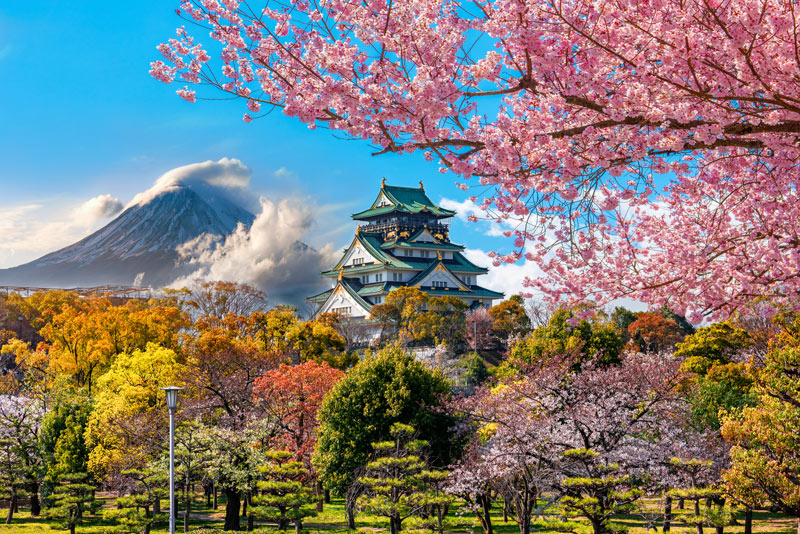
For foodies, there’s nothing quite as exciting as Dotonbori Street during the evening hours. The street comes alive with every kind of Japanese specialty street food, like okonomiyaki and takoyaki.
A great way to see a lot of Osaka during the day is on an Osaka Walking Tour . You’ll see Dotonbori during the day, visit the Hozenji temple, ride the subway, sample a local specialty, Kushikatsu, and explore traditional Shinsekai.
On your own, you can visit Osaka Castle, and check out the Instant Ramen Museum. If you have time, visit the food-focused Kuromon Ichiba Market and shop for a Japanese knife.
If you want to try the best izakaya food such as Okonomiyaki and Takoyaki and drink in Osaka, try this Osaka Bar Hopping Food Tour or go on a Foodie Walking Tour in Dotonbori and Shinsekai.
>> Read this post for an in-depth 2-day Osaka itinerary and here are some great day trips to take from Osaka if you have more time.
Where to Stay in Osaka
One of my favorite hotels is the Osaka Marriott Miyako Hotel . It is conveniently located for transportation, so you can easily get around to the top sights in Osaka and beyond. It’s got an insane view and really comfortable rooms. ⇒ Read reviews of the Osaka Marriott on Trip Advisor .
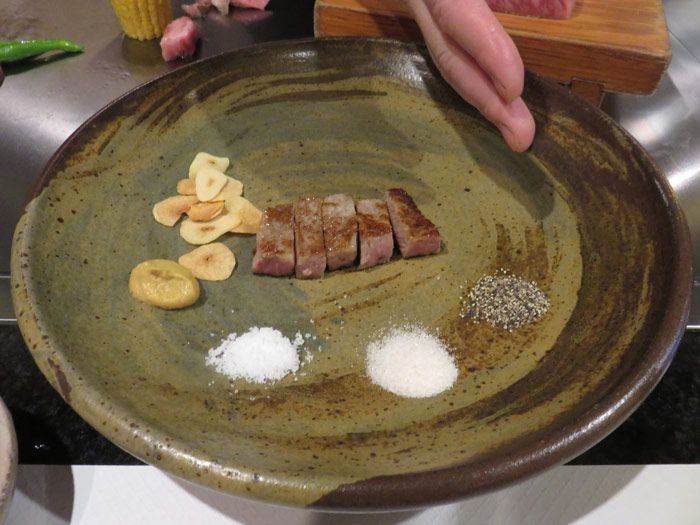
Take a 30-minute train ride to Kobe to try the famous Kobe beef. You will thank yourself for doing it – there’s nothing quite like it, and as a foodie, you owe it to yourself!
On the way back to Osaka, you can stop off in Kobe’s Nada district for a tasting and history about the making of sake at a few sake breweries . If you aren’t a sake drinker, check out the Himeji Castle, just 30 mins outside Kobe.
Stay overnight again in Osaka.
Transfer to Setouchi: Take the train from Shin-Osaka Station to Okayama Station, then the Ako line to Oku Station

The more off-the-beaten-path Setouchi region in Japan is a gem that many travelers miss in their typical itinerary, except those who make a point to visit Hiroshima (which we’ll talk about next). Setouchi has 350 islands that flank the Seto Inland Sea, so there are many hidden gems to explore.
For foodies, you don’t want to miss the oysters and the udon. With the proximity to the sea, oysters are a specialty in the area, with all-you-can-eat shacks open throughout the season.
Ritsurin Garden and Korakuen are two of the most beautiful of Japanese gardens and a must-see in Setouchi.
Hiroshima & Miyajima
Knowing that Hiroshima was effectively leveled in 1945, you will be in awe to see the city now. Hiroshima preserves the memory of the atomic bombing in the Peace Memorial Park and Museum .
Other popular sights to see in the city are the Hiroshima Castle, the city’s family shrines and temples, the Museum of Art and the Flame of Peace garden.
You can also go out to Miyajima, where the orange Great Torii Gate sits at the entrance to the Itsukushima temple, and is partially submerged in water during high tide.
If you have a Japan Rail Pass , it will cover the train and ferry between Hiroshima and Miyajima on the Japan Rail ferry.
Where to stay in Hiroshima
The Sheraton Grand Hotel in Hiroshima. The hotel is connected to Hiroshima Shinkansen station by a short, covered walkway, providing easy transportation around the city and out to Miyajima. ⇒ Read reviews on Trip Advisor .
Return to Tokyo.
Tips for planning a vacation in japan, best time to go to japan.
When you decide to go to Japan should be based on what type of experience you want to have. A lot of people make it a priority to go to Japan in the spring to see the cherry blossoms, while others wouldn’t want to be there during such a high tourist season.
If you want to catch the fireworks season in Japan, you need to go in August, but it’s really steamy and hot at that time of year. The best weather can be found from late March to May.
Another great time to visit is in autumn, when the leaves are changing, from September to November. As it can get very hot in summer in Japan, try to avoid traveling between June and August.
Getting to and Around Japan

Many top airlines have direct flights into Japan. You can check the status of flights into Japan from your home airport, to see which route and airline is best for you.
Top Japan airlines include ANA and Japan Airlines, but you can fly to Japan with most U.S. airlines that fly internationally, like United and American. Once you arrive in Japan – likely in Tokyo – you can get the train into the city center.
The best way to do it is to get on the Japan Rail (JR) Narita Express (called NEX). If you have a Japan Rail Pass , this journey is included in the pass. It goes to Tokyo Station in 60-90 minutes.
You will then likely have to change trains at Tokyo Station for the Yamanote Line, which serves most of the tourist hotels.
The best way to travel around Japan in by train. You’ll want to purchase a 14-day Japan Rail Pass . The pass allows you to travel on all JR trains throughout Japan, including the high-speed Shinkansen bullet trains. It’s the most economical and worry-free way to travel.
Travel in Japan is not cheap and the cost of buying individual tickets will far exceed the cost of the Japan Rail Pass, which you can purchase for 7, 14 or 21 consecutive days.
Just remember , you have to purchase it before entering the country and give time for it to be delivered to you. Read our guide on where to buy a Japan Rail Pass and if it’s worth it.
When planning your Japan itinerary, keep in mind the distance between each destination (for instance, the train from Tokyo to Kyoto takes 3:15). As long as there is a train linking each of your chosen cities, you’ll be able to easily travel around the country.
Traveling in Japan is not cheap, but you can save money in Japan by doing things like buying a Japan Rail Pass and eating street food.
Tipping in Japan
If you’re from the United States , Canada, or another country where tipping is customary, you should be aware that tipping in Japan is not customary.
If you do try to tip, in a restaurant or a hotel for instance, it might even be refused or considered rude. To avoid awkwardness, follow the Japanese custom and do not tip.
Eating in Japan

Japan is a country with a lot of unique foods. You will have the best overall experience if you’re willing to try the food and have an open mind that you mind really like something you’ve never tried before.
Aside from the expected and incredible sushi you’ll find all over the country, there are many specialties you should try. Some of our favorites are okonomiyaki (found mostly in Osaka), takoyaki (also from Osaka), yakitori, gyoza , and Kobe beef (only in Kobe).
You might also want to try kaiseki cuisine in Kyoto, a traditional, yet very modern preparation. Many of the top kaiseki restaurants have been awarded Michelin stars, too!
⇒ Learn the proper way to eat sushi in Japan.
Whether you take a guided tour or do this Japan 2 week itinerary on your own, I am certain it will be one of the most exciting and rewarding trips you’ll ever take. It is a fascinating country full of surprises.
Let us know how your trip to Japan turns out!
Like this post? Why not save it to Pinterest? FOLLOW US on Pinterest , Instagram , Facebook for more great travel inspiration and tips.

Laura Lynch, creator and writer of Savored Journeys, is an avid world traveler, certified wine expert, and international food specialist. She has written about travel and food for over 20 years and has visited over 75 countries. Her work has been published in numerous guidebooks, websites, and magazines.
29 thoughts on “ The Perfect Japan 2 Week Itinerary: 10-14 Days in Japan ”
Hello Nick! Your vacation in Japan is very interesting and very enjoyable. Moreover, you enjoy this holiday with the people closest to you. Thank you for sharing your experience and knowledge.
Hello! I know you wrote that summer isn’t a very ideal time to visit Japan, but my plans don’t allow me to go at any other time unfortunately. Would the beginning of July really be that bad?
Of course it’s still a great time to go as long as you don’t mind the sometimes intense heat and humidity.
Hi, we are in our 60’s so not as energetic as some! We are planning a 2 week trip to Japan in April. We arrive in Narita and initial thoughts are to stay somewhere close to airport on first night to help with jet lag and then head out to Kyoto/Nara for 3 nights, followed by Fuji five lakes for 3 nights. We want to end our stay with 3 nights in Tokyo, where would you suggest we go between our Fuji stay and return to Tokyo?
Hi Louise, I would suggest adding another day to Kyoto for a day trip to Osaka. It’s very much worth it. Then how about adding in Hakone and/or Kamakura before heading back to Tokyo.
Hi, We are a family that loves hiking, biking and outdoor activities in general. Can you suggest some places for us to visit? It’s our first time in Japan and we are staying 14 days. Thanks and I really like your website; it’s easy to understand and full of good information.
Hi Anne. I’m sure you’d love the area around Mt Fuji. There are numerous opportunities for hiking, biking and outdoor activities. Check out our post on day trips from Tokyo for more information.
Interested in a two week tour but we want to go see the snow monkeys north oh Nagano. Is there another spot to see them. We want to go in oct. and we are aware no snow then. Two couples to start tour around 10/12.
Ruth, you can visit the snow monkey park year round. There won’t be snow, but the monkeys are still there!
Hi Laura, I’m from Australia/NZ and want to say THANKS for your itineraries! I was a but lost. My hubby and I & two boys (12 & 14) are trying to plan a late January Japan trip but the boys (ie all but me :-D) want to add in a 3day snow holiday which I’m happy to do, as long as we get to at least do your 7 day itinerary! Can you please help me by suggesting an addition to your fantastic 7day itinerary that would get them their chance to try ski/boarding. Also maybe a spot that has other snow fun and a spa for me?
Hi Andrea. Glad you found the itinerary helpful! If you’re doing the 7-day trip, I would recommend a ski resort near Mt. Fuji. There’s Snowtown Yeti and Fujimi Panorama Resort nearby that are fantastic for International visitors. There are many hot springs and tons of other things to do nearby. Plus amazing views.
Thanks!! So if we add in 3 days at Hakone/Mt Fuji that would work? 10 days total. So excited! Thanks for your help.
Absolutely. And it won’t require additional travel time. Have a great time. Come back and let us know how it was!
Hello Savoredjourneys Team,
I hope you are doing well. I’ve been following your post on “Savoredjourneys.com”, for quite some time now. Every time I read a post, I feel like I’m able to take a single, clear lesson away from it, which is why I think it’s so great. I, Kousik author at “Value Walk”. Working all around the globe. We are always looking for many resources for our business development.
Our goal is an only satisfied client. I saw your post on “Savoredjourneys”, It looks good. So I contact you for this purpose if you want to work for our company. When we can always increase when we grow:)
Looking forward to working with you.
Warm Regards! Kousik
Oh, this itinerary is everything I was looking for. Thanks for coming up with this comprehensive itinerary.
Regards Anshul www.dailypassengerr.com
So I am planning a trip to go to Japan with my coworker and friend. Basically we want to go when there when is less tourists is that possible? We are planning to stay for two weeks as well. Also really good itinerary it is very helpful.
Paul – the main tourist spots will always be very busy, but those are likely the places you’ll want to see. I suggest following our 2 week plan and adjusting it to fit your interests. You can get off the beaten path in those places sometimes.
Hi Laura, thanks for the great guide! there’s just one thing that consearns me about this. How did you go all around with all the luggages? Since most hotels only check in at 12pm, that leaves you touristing with a lot of backpacks and luggages. If we stop to shop, that would just go heavier and heavier to go from place to place. How did you solved this? Thanks
Hi Thiago. Even if you can’t check into the hotel before afternoon, you can always check your bags with the hotel and go out exploring. We tend to pack really light so we don’t have a lot of luggage to trek around. It gets old when you’re on the train. I suggest taking a single piece of luggage, if possible.
Hi there! My trip is in October and we wanted buy the JR pass. I’m wondering if the JR pass will get us to all of these locations without purchasing extra train tickets? I woukd greatly appreciate hearing from you.
Hi Jouberte. All of the places in the itinerary are covered by the JR Pass. You would only need to purchase extra tickets if you want to take a train that isn’t a JR train, but there is a way to get to each place using JR trains.
Hi! We are heading to Japan in April 2020. We arrive in Tokyo on the 3rd and leave on the 7th. We are scheduled to be in Okinawa on the 10th to the 15th. We are trying to figure out the “best” place to visit in those 3 days (the 7th to the 10th), and need to keep in mind we need to fly into Okinawa in the 10th. Where do you recommend? We want somewhere either countryside or mountain town, but my wife seems to think Nagano is too “winter focused” so we’re looking elsewhere. We want traditional Japanese culture, a peaceful, country-like setting, and of course, great food and sites! Thanks!!
Hi. Read through your travel guide and would be trying out with my Mum. Would like your advise on how is it like to travel with luggage on train and buses as we would be planning to visit the Hakone for the hot springs. Also on day 7 it says that you in Nara. Did you spend the night there or in Osaka?
Gabriel, The trains and buses are usually packed full. While it’s absolutely possible to travel with luggage, I would advise taking the smallest form or luggage you can. We prefer backpacks, but you can get away with wheeled luggage. The biggest issue is just getting through the crowd easily, so suitcases with spinner wheels are the best option. When going to Nara, we always stay overnight in Osaka or Kyoto. It’s easy to get back and forth.
I am planning on going to Japan for 2 weeks in october this year, I really want to visit rabbit island (Ōkunoshima) but am unsure how to fit this in as it is not included on any online itinerarys I have seen – what would you suggest? Thank you!
Rachelle, it’s fairly easy to get there from Hiroshima, so I’d tack it on as an extra day in that area. You have to skip something else to fit it in, probably Kobe. If you go there directly from Osaka, then on to Hiroshima, it’ll fit right in.
Thank you!!
We are coming this December and have 16 nights between 12/18 – 1/3. Would your two week plan work at that time of year with maybe more time in Tokyo and a few modifications since no way to know the weather. We are from Colorado and our son is doing 1st semester of his Senior Year in College there in Osaka so a truly Once in a Lifetime Christmas Family Vacation! Thank you soo much!
Yes, I think you could do all of our itinerary in the winter time, though maybe not some of the things around Fuji. It’s always great to have more time in Tokyo, I think. Enjoy your trip!
Leave a Reply Cancel reply
Your email address will not be published. Required fields are marked *
Save my name, email, and website in this browser for the next time I comment.
- Travel Resources

12 Days In Japan: Top Itineraries for 2024/2025
Spending 12 days would give you the chance to experience the best of Japan: from prosperous Tokyo and Osaka to tradition-filled Kyoto, from the picturesque small town of Takayama to the peace memorial city of Hiroshima.
We present our most popular tours according to customers' choices over recent years. You can treat them as inspiration for your private travel and tailor them according to your requirements.
12-Day Classic Japan Tour
12-day authentic japan family adventure tour with acg, 12-day tokyo, hakone, kyoto, osaka and himeji tour, 12-day tokyo, okinawa, osaka, kyoto and nara tour.
Discover real reviews of Highlights Travel Family 's best-rated service across trusted platforms.
Get Inspired with Some Popular Itineraries
At Asia Highlights, we create your kind of journey — your dates, your destinations, at your pace. You can have any trip tailor made for your travel.
More Travel Ideas and Inspiration
Sign up to our newsletter.
Be the first to receive exciting updates, exclusive promotions, and valuable travel tips from our team of experts.
Why Asia Highlights
Where can we take you today.
- Middle East
- African Safari
- Travel Agents
- Loyalty Program
- Privacy Policy
Address: Building 6, Chuangyi Business Park, 70 Qilidian Road, Guilin, Guangxi, 541004, China
Going Awesome Places
Detailed itineraries + travel guides
12-Day Shikoku Itinerary – Ultimate Road Trip Guide to Traveling Japan’s Hidden Gem
Last Updated August 15, 2024 William Tang
You are here: Home » Travel Itineraries » 12-Day Shikoku Itinerary – Ultimate Road Trip Guide to Traveling Japan’s Hidden Gem
Are you ready for an adventure that takes you off the beaten path in Japan? Look no further than Shikoku, a hidden gem that promises to leave you in awe. This stunning island, tucked away from the bustling crowds, offers a unique blend of natural wonders, rich cultural heritage, and tranquil landscapes. Get ready to immerse yourself in the enchanting beauty of Japan’s smallest main island on this 12-day Shikoku itinerary.
By using this guide, you’ll learn the intricacies of how a road trip around the island of Shikoku can look like. Through my personal experiences, you’ll get deeper insight into this region than anywhere else.
What You’ll Get Out of This Article
- Day-by-day breakdown that covers how to build a 12-day itinerary in Shikoku.
- Critical details for important activities and sights you won’t find anywhere else such as which locations are cash-only, how to make reservations, critical mistakes you don’t want to make, and more.
- Google Map of all locations on the itinerary.
- Downloadable access to the itinerary spreadsheet.
Table of Contents
My shikoku journey, how to use this shikoku itinerary, where is shikoku, itinerary day 1 – feel the energy of tokushima, itinerary day 2 – enter hidden iya valley, itinerary day 3 – uncover iya valley secrets, itinerary day 4 – from yokai to castles, itinerary day 5 – knife-making in shimanto, itinerary day 6 – adventure in nakatsu gorge, itinerary day 7 – mighty matsuyama castle, itinerary day 8 – memory lanes of ozu and uchiko, itinerary day 9 – climb to new heights in kotohira, itinerary day 10 – enter the mediterranean of japan, itinerary day 11 – art immersion on naoshima island, itinerary day 12 – experience okayama’s past, map of shikoku itinerary, why it makes sense to rent a car, why you shouldn’t rent a car, advice on renting a car in shikoku, car rentals in tokushima, how to save money on car rentals in shikoku, 1 – challenges of driving in the valley, 2 – go during the off season, 3 – get used to using your translation app, 4 – expect to use more cash than you think, 5 – prepare for changes in weather, how much did this trip cost, closing thoughts on 12 days in shikoku, frequently asked questions, read more japan travel content, best place to book hotels in japan, travel resources for your next trip.

Knowing that I’d be coming from a week in Tokyo and having done the Golden Route through our 12 day Japan itinerary , I asked experts I knew, where they’d recommend if I wanted to somewhere completely off-the-beaten-path. Shikoku was mentioned a few times and what I heard intrigued me.
From there, I started planning a journey through somewhere that I could tell hadn’t been discovered by the masses. Online information was sparse and not well consolidated. Thankfully Shikoku Tours was there to help fill in some of the gaps but I was determined to do it fully independently.
Digging in, I quickly realized that there are a few primary ways Shikoku is explored:
- Pilgrimage – Known as the Shikoku 88 Temple Pilgrimage or Shikoku Hendo , this involves travellers centering their trip around visiting many of the sacred Buddhist sites on the circular-shaped route. Most don’t do all 88 but do a selection of the highlights and combine walking with public transit, go with a private guide , or do special bicycle tours .
- Cycling – The second major interest in Shikoku is cycling, especially with the Shimanami Kaido route where you get to bike on Kurushima Kaikyo Bridge, crossing the Seto Inland Sea. You can do day trips or multi-day cycling circuits .
- Road trip – Although not as well documented, it was clear from the outset that relying on public transportation would not be efficient. I ended up opting for this because I felt like it was closer to my interests and would allow me the flexibility to see everything in a neat 12 days.
I certainly didn’t expect to be doing a full-on road trip loop in Japan of all places, but I have to say that I was very happy with how it turned out.
This part of the trip was solo after spending a month with Chantelle in Hokkaido and Tokyo.
Special Promotion with Shikoku Tours
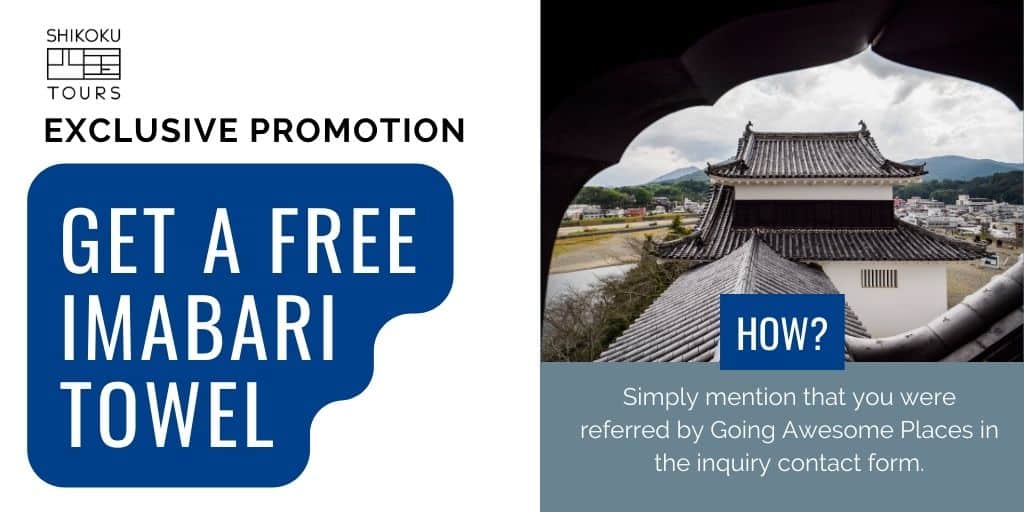
Putting together a trip to Shikoku but would rather have someone plan it for you? The folks on the ground that helped me and are the go-to tour company on the island is Shikoku Tours .
As a bonus, we’ve also partnered with them so that you’ll get a free Imabari towel, Japan’s highest quality towel and made from the Ehime prefecture of Shikoku.
How? All you have to do is mention “Going Awesome Places” when you submit your inquiry.
We created this itinerary with you, our readers, in mind. We put down as much detail as we can so that all of the information is one place. From there, you get to use it as is or make tweaks based on your own schedule and interests.
This is a road trip version of a Shikoku itinerary so many of the specifics relate to being able to drive from location to location. That said, we’ve tried to share alternative details where we can.
Pay particular attention to our boxes called “What you need to know”. These extract essential details about important points of interest and activity, while also injecting our own observations. Japan is one of those places where you can easily get caught off-guard if you don’t know about specific rules and quirks.
We also make sure we summarize every day and each of those have links to either review pages or where to book specific activities. Lastly, we have our trip map near the end of the article, which is great for the visual planners out there.
At Going Awesome Places, we are obsessed about building travel itineraries because that’s how we do our trip planning and it’s the kind of detail that is hard to find these days. You’ll see a lot of similarities with other ones we’ve created such as the Adventure in the Ozarks of Missouri , Easter Island itinerary , 10 days in Patagonia , and classic Egypt itinerary .

So where the heck is Shikoku? We’re sure that even if you ask 10 or even 100 foreign tourists in Japan about Shikoku, most would give you a blank stare.
Shikoku is a secret that you’re going to be glad to be in on.
Japan is comprised of 4 main islands – Honshu, Hokkaido, Kyushu, and Shikoku. Shikoku is the smallest and least populated and that’s precisely why it’s unlike anywhere else in Japan.
The name Shikoku comes from the word shi (four) and koku (region) and as you guessed, there are 4 prefectures on the island: Ehime, Kagawa, Kochi, and Tokushima . To the south is the Pacific Ocean and to the north is the Seto Inland Sea.
Up until the mid-1980s, you could only get here by boat but luckily, modern engineering connected it to the mainland through 3 massive bridges. Then you have airports that serve each prefecture in the cities of Tokushima, Kochi, Matsuyama, and Takamatsu .
It’s worth mentioning that while this is a Shikoku itinerary, it does overlap with other regions. For one, there’s Setouchi region which covers all of the islands in the Seto Inland Sea and all adjacent coastal areas. The trip also ends in Okayama and this is outside of the island of Shikoku but is part of Setouchi .
As you’ll see really soon, there’s a real sense of mystery in Shikoku and with that, the excitement of uncovering the secret for yourself.
The Best 12-Day Shikoku Itinerary

You will hit the ground running in Tokushima with full day of adventure and cultural immersion. Ride the Bizan Ropeway for stunning city views, witness the captivating Naruto whirlpools on a boat tour, and soak in the vibrant atmosphere of an Awa Odori dance performance in the evening.
Arrive in Tokushima

For this Shikoku itinerary, we recommend starting in the city of Tokushima and working your way around in clock-wise fashion. Tokushima is also a great place to start as it’s not overwhelming and quite easy to get around on foot.
You’ll most likely fly into Tokushima Awaodori Airport (TKS) which is primarily serviced by domestic airlines. In my case, I flew in directly from Tokyo’s Haneda International Airport via Japan Airlines.
After you land, you’ll catch the local bus which will take you right to the center of town, Tokushima Station .
TIP: At the far end of the airport is the bus ticket vending machine. The fare for Tokushima Station is ¥600 for adults and ¥300 for children. You can pay by cash or IC card only. Remember to tap “Receipt” to get a receipt printed.
First order of business – drop your off your bags at your hotel, Daiwa Roynet Hotel Tokushima , which is conveniently right next to the station. Re-organize your daypack if you need to because you won’t be back until the afternoon.

See Tokushima From Above

One of the best ways to get oriented is at the top of one of the symbols of Tokushima – Mt. Bizan . At the summit, you’ll see how the city is situated at the mouth of the Yoshino River, pointing northeast.
Sharing the same building as where you’ll be watching the Awa Odori performance in the evening is the Bizan Ropeway . The view from the top gives you a stunning overlook of the area and as far out as Awaji Island and Kii Peninsula on a clear day.
In addition to the main viewing platform, there’s a large kaleidoscope art installation, a Burmese pagoda honoring the soldiers from World War 2, and an expansive park of cherry blossom trees.
WHAT YOU NEED TO KNOW

- April 1 – October 31 – 9AM – 9PM
- November 1 – March 31 – 9AM – 5:30PM
- It is usually closed for several weeks between January to February for annual inspection.
- The ropeway takes 6 minutes and runs every 15 minutes (timetable in image above).
- The Bizan Cafe at the summit is open from 10AM – 7PM.
- The ropeway is closed the second Wednesday of February, June, September, and December. If any of these land on a public holiday, it’ll shift to the next day.
- Adults (Junior High School Student and above) – ¥620 one way, ¥1,030 round trip
- Elementary School Students – ¥300 one way, ¥510 round trip
- 3 set (Awaodori performance, museum, ropeway) – ¥1,830 for adults, ¥1,280 for children up to 15, and ¥810 for children up to 12
- 2 set (museum, ropeway) – ¥1,130 for adults
- 2 set (Awaodori performance, museum) – ¥1,000
Parking: There’s parking at the Awaodori Kaikan Theater (drive to the rear) for a fee. You can get your parking validated (1 hour free) if you purchase ¥3,000 or more at the shop on the main floor.
How to get here without a car: From Tokushima Station, it’s an easy 15 minute walk to the ropeway station/theater.
Booking: You can only buy tickets in-person at the desk or vending machine. Machines are cash-only.
Website: Bizan Ropeway
- How much time do I need at the summit? If it isn’t sakura (cherry blossoms) season, you can easily see everything in 30-40 minutes.
- Where are the cherry blossoms on the mountain? From the summit, there is a walking path going away from the city that leads into the Bizan Park which has a cluster of cherry blossom trees.
- To take the ropeway, you need to take the elevator to the 5th floor. From there, you get into a queue.
- Since there are two gondolas that go up together, best view going up is in the second (bottom) gondola so you can see a clear view of the city below.
Cruise into the Naruto Whirlpools

Head back to the main station and take the 1-hour long bus out to the far northeast corner where a natural phenomenon of tidal whirlpools can be found in the Naruto Strait .
In this narrow passageway of water measuring 1.3 km (0.81 miles), massive amounts of water move in and out of the Seto Inland Sea twice a day creating a difference in water levels between the sea and the ocean. This causes water to rush through the channel at high speeds , and at specific areas, spirals in the water.
One of the best ways to see the Naruto Whirlpools is to join a sightseeing boat cruise. The Wonder Naruto races large groups of tourists to the Onaruto Bridge every 30 minutes. Standing at the edge of the boat, you patiently wait for swirls to form – some are small and some gush with intensity.
After the cruise, you can either check out more of the area (observation decks, park, Uzo-no-Michi Walkway , and Otsuka Museum of Art ) or head back to the city and check into your room.
We’ll be focusing on the Wonder Naruto but if you’re interested in the underwater observatory, check out the Aqua Eddy.

- Open all-year-round and runs 12 trips per day.
- Boat ride is 30 minutes and the exact departure schedule is posted on their Sightseeing Boat page .
- The best time of the day to go is at high and low tide (1.5 hours before and after). Using their monthly tide table , you’ll be able to see those peak times for the exact day you wish to go.
- Adults – ¥1,800
- Child (Elementary School and younger) – ¥900
- First class cabin is available for an additional ¥1,000 for adults and ¥500 for children.
- Payment by credit card is possible.
Parking: There is plenty of parking (150 spots) at the whirlpool sightseeing boat dock and it is free.
How to get here without a car: From Tokushima Station, go to bus stop number 16. You’ll be able to hop on any bus that stops here. Take the bus for 1 hour and 15 minutes until you get to the stop “Naruto Sightseeing Port”. It might be difficult to tell which stop it is but there’s a point in the route where it turns around. It is the first stop right after the turn-around point. Payment is made as you get off the bus. The fare is ¥720 and you can only pay by coins. There is a change machine as well but it only breaks ¥1,000 bills. For route map, timetable, and fare table, visit the bus for Naruto Park page .
Booking: You can only buy Wonder Naruto tickets in-person at their counter. You can buy Aqua Eddy tickets in advance (mandatory).
Website: Uzusio
Language: The commentary through the speaker is in Japanese.
- Do the tickets sell out? While the boat has a capacity of 399 people, it can sell out especially if there are large bus groups and you are going during high-season.
- How early should I arrive at the boat dock? We recommend that you come 1-1.5 hours ahead of the time slot that you’re targeting. Worst case, you can book the sailing after it.
- Is the Aqua Eddy recommended? We don’t recommend Aqua Eddy because there simply isn’t enough time to be running between the underwater observation and the main deck. As the whirlpools aren’t predictable and can be on either side, we feel that this would add additional stress and force you to pick what you want to focus on. For this, the additional cost, and shorter trip time, it’s not worth it.
- Is it worth upgrading to first class on Wonder Naruto? The advantage of first class is that there are fewer passengers up there, allowing you more freedom to move around. The other benefit is that you are higher in elevation, allowing you to get better view of the whirlpools developing below. If we were to do it again, we’d pay for the upgrade.
- They don’t announce that they ready for queueing (in English) so if you’re early, just get in line for Wonder Naruto before everyone else. The advantage of boarding early is that you’ll have your pick of the spot on the boat. That said, once you pick a spot, you’ll be surrounded by other people along the railing.
- There are actually two companies that run whirlpool sightseeing boats. The biggest one is the one that we ended up taking, called Uzusio (うずしお観潮船). There is another company called Uzushio-Kisen (うずしお汽船) which is a smaller but slightly cheaper boat. They also offer combo tickets to Uzu-no-Michi (a bridge with a glass floor). This is why there are two separate locations indicated on the bus map so don’t get them confused.
- The bus schedule time table isn’t the easiest to read but for Uzusio, the stop you’re looking for is 鳴門観光港 (fourth-last stop). If you’re interested in Uzushi-Kisen, the stop is 亀浦口 (second-last stop on the line).
Eat at a mouth-watering local izakaya

Local recommendations are the best. Domannaka is a short walk away from your hotel and features mostly locally-sourced ingredients and dishes that the region is best known for . You have to try their yakitori platter (depicted above), seared bonito ( katsuo no tataki ), and lotus root.

What Tokushima is best known for is Awa Odori , something you might’ve noticed not-so-subtly featured throughout the city. This is perhaps Japan’s most famous dance festival that is said to have originated from the celebration when Tokushima Castle was completed. While the official festival is performed in mid-August, the other way to see a performance is at the Awa Odori Kaikan , the same building as the Bizan Ropeway.
This 50 minute performance is the best showcase of what the Awa Odori festival is all about . Accompanied by musicians, you’ll get to see men, women, children, and elders perform the traditional dance. You’ll see and feel the energy, along with the intricacies of the dress of Awa Odori during the show.
The show is also quite interactive, with a segment in the middle dedicated to having the audience learn some of the basic moves of the dance. At the end of the night, the entire audience is invited to get down to the theater floor to join the dancers, culminating in a fun and immersive night.

- Daytime Performances – 11AM, 2PM, 3PM, 4PM (40 minutes)
- Check the evening performance schedule to make sure they are not closed.
- There is a Google Calendar on the Awa Odori Kaikan homepage which clearly breaks down which performances are available for each day.
- The theater is closed the second Wednesday of February, June, September, and December. If any of these land on a public holiday, it’ll shift to the next day. It is also closed December 28 to January 1.
- Adults – ¥800 for daytime, ¥1,000 for evening
- Child (Elementary School and Junior High School Students) – ¥400 for daytime, ¥500 for evening
How to get here without a car: From Tokushima Station, the easiest way is to walk to the ropeway station/theater. It’s a 15 minute walk away.
Booking: You can buy daytime tickets at the vending machine. You can only buy evening tickets on the night of at 7PM in front of the theater entrance. Both cases are cash-only.
Website: Awa Odori Kaikan
Language: The performance is in Japanese and there are no subtitles but it’s pretty easy to catch on what’s happening.
- Can I buy tickets in advance? No, they don’t have online booking.
- What is the difference between daytime and evening performances? The main difference is that the evening performances feature rotating groups of famous Awa Odori troupes and the show is 10 minutes longer. The daytime show is performed by the theater’s own exclusive troupe.
- Do the tickets sell out? The theater has a seating capacity of 250 so there should be plenty of tickets but it’s always a good idea to show up early.
- Are seats assigned in the theater? No, the seating is first-come-first-serve.
- Are photos and videos allowed? Yes, there are no restrictions for photos and videos.
- Where are the best seats in the theater? The first row in the center section of the theater is the best especially if you want to take photos of the show.
- How early should I arrive? If you want your pick of seats, we recommend that you come 1 hours ahead of time.
- Is the performance the same as the Awa Odori Festival? The actual festival from August 12 -15 is a multi-day event that takes over the entire city. This show provides a condensed version it, focusing on the dance styles for both men and women. The performance also includes an instructional component where the audience is encouraged to dance. You’ll get a really good sense of the dress, dance, and energy from this show.
- They have a bit of a unique way of queueing at the theater. When you arrive, put a bag down in a straight line starting at the door. This way, you are free to go to the shop below, use the restroom, and walk around. It may seem a little strange at first but it’s quite a democratic way to hold your spot in a first-come-first-serve manner.
- The shop on the main floor is open until 8PM, allowing you to buy souvenirs before the evening show.
Day 1 Summary
What you’ll see & do:
- Bizan Ropeway
- Naruto Whirlpool Cruise
- Awa Odori Performance
Where you’ll eat:
- Lunch – Food from Tokushima Clement Plaza – This is the mall that’s attached to the city’s main train station where you’ll find plenty of food options including the bakery Vie de France, imagawaki (wheel cake), and local mochi cakes.
- Dinner – Domannaka – An elegant izakaya and yakitori restaurant that features local dishes and delicacies. Reservations are highly recommended here. They do not take online reservations so you’ll need to call to make reservations.
Where you’ll stay:
- Daiwa Roynet Hotel Tokushima ( Agoda / Booking ) – Conveniently located adjacent to Tokushima Station, this is a comfortable, new, and spacious hotel. We recommend staying here because of it is seconds away from the bus stop, train station, shopping mall, restaurants, and even has a 7-Eleven downstairs.

It’s time to get the road trip started. You’ll start off going blue over the time-honored tradition of indigo dyeing. From there, you’ll drive into the heart of Iya Valley where you’ll quickly realize that you’re in a mystical place like no other in Japan.
Make your own indigo dyed creation

Shikoku is home to many traditional crafts and one of them is indigo dyeing. This is why you’ll see plenty of indigo-dyed goods along your journey.
Aizome refers to the traditional practice of indigo dyeing and there’s no better place to see how it works than to go to the region where the industry thrived for generations in Wakimachi and more specifically, the Udatsu Townscape .
Located in a charming and historically wealthy town thanks to indigo, is the Yamauchi Studio which preserves the tradition by teaching visitors how the dyeing process works by creating your very own handmade item.
What you’ll love about this experience is that you’ll come out with your own souvenir that was created using traditional indigo dyeing techniques . Your instructor will also allow you to design your own pattern. I thought this was the most interesting part, involving either marbles, special folding techniques, and lots of elastic bands.

- Duration – 40 minutes to 1.5 hours
- Hours – 10AM – 4PM (closed on Tuesdays)
- Bookable time slots: 10AM, 1PM, 2:30PM
- Small Handkerchief – ¥1,100
- Large Handkerchief – ¥1,650
- Scarf – ¥4,400
- Shopping Bag – ¥3,850
- Drawstring Bag – ¥1,650
- Socks – ¥2,200
- It is also to possible other items so if you’re not interested in these, you can ask on-site.
Parking: There is a free parking lot to the south of town but it does fill up quickly. The attendant on-site will help guide you to your spot.
Booking: You can book online but drop-in is definitely possible when it’s not a busy day.
Website: Reservation Page Through Nishi-Awa Tourism Association
Language: The instructor only speaks Japanese but has a handheld translation device to provide basic instructions. It’s relatively straightforward.
- How hard is it to learn how to dye? It is extremely easy and suitable for ages 5 and up.
- Should I make a booking ahead of time? If you’re on a schedule and want to fit this in a specific time, it’s better to make a reservation ahead of time. If you’d like to keep things flexible, you can try to drop-in. Worst-case, you can explore the Udatsu Townscape if they’re busy.
- How early should I arrive for the activity? There is not a lot of prep work required so you can show up 5-10 minutes ahead of time.
- Will my hands get dirty? No, you will be given an apron and gloves so your hands won’t turn blue.
- The English name of the store is “Yamauchi Studio” but on Google, you need to search for “Aizome Kobo, Waikimachi”.
- If you follow your GPS to the store, it will take you onto the pedestrian Udatsu Townscape street which will eventually trap you in (that was totally me). Instead, search for the “道の駅 藍ランドうだつ” or “Road station Airandoudatsu” parking lot. Our custom map have all of these marked.
- The studio doesn’t exactly run fixed workshop times. Instead, since there are at least 2 vats of indigo, they will get you started whenever you are ready.
- While the booking platform only shows 3 time slots per day, it doesn’t mean that the instructor will wait for everyone that booked that time slot to get started. It is simply a formality of the system. In reality, they get visitors going on a rolling basis of whenever people arrive.
- If you’d like to start earlier than your booked time slot, simply show up early.
- When you leave the studio, the handmade piece will still be damp so put it by the window of your car to let it dry.
Test your vertigo on the double vine bridges

Next begins your journey into Iya Valley. The small towns along the Yoshino River begin to disappear and are replaced with seemingly impenetrable emerald hills as you weave corner to corner and unknowingly passing around Mount Tsurugi.
Tucked away on the far eastern end of Iya Valley is Oku-Iya Niju Kazurabashi or the Double Vine Bridges . These are two of the last 3 remaining vine bridges in Iya Valley, where there were once 13.
The bridges are said to be connected to the story of the Heike Clan that took refuge in this area and built these as a way to get through the valley but could also cut them down if they were invaded.
What’s unique about this location is that there are two bridges, the larger one being male and the smaller being female . Crossing each is an adventure on its own as the bridges sway and the gaps between the planks of wood below are enormous. There’s also a hand-powered rope and trolley that you can also try if they’re operational.
What really sets this area apart are its tranquil and untamed surroundings with the trickling of the river below, the calm rustling of the forrest, and whispers of a nearby waterfall. It also helps that this is far-less visited part of Iya Valley because it’s not as accessible as the one you’ll visit tomorrow.
- April-June:9AM – 5PM
- July-August:8AM – 6PM
- September-November: 9AM – 5PM
- December-March: Closed
- Duration – Expect to spend 30 minutes to 1 hour here.
- Adults – ¥550
- Children – ¥350
Parking: Off the road, there are 30 parking spaces. Parking is free.
Booking: No online booking is available.
How it works: You pay your admission at the ticket booth on the main road. They’ll be a ticket and from there you walk down. There aren’t any turnstiles to enter so in a way, this is honour system. Unlike Iya-no-Kazurabashi vine bridge, there are no attendants by the bridge and you can cross them in any direction and as many times as you wish.
Website: No official website. Your best bet for an updated page is on Miyoshi Tourism .
- Are there bathrooms? There aren’t any facilities by the bridges but there are restrooms by the ticket office next to the road.
- Can you take a bus to the double vine bridges? This is serviced by the local bus that’s bound for Mt. Tsurugi and the Kazura Bashi Bus stop.
- Currently, the rope wooden carts of Monkey Monkey Bridge are not in operation.
Visit the oddly charming scarecrow village

Driving deeper into the valley, you’ll come across a sleepy riverside village that seems normal at first, until you realize that the people you see hanging around aren’t people. The population of Nagoro consists of life-sized scarecrows and outnumber their human counterparts 10 to 1 .
The Nagoro “Scarecrow” Village was started by Tsukimi Ayano, a resident that returned to her home village after living in Osaka for most of her life. It started with a scarecrow with her father’s likeness on her family farm. This evolved to becoming effigies of former residents to keep the spirit of the village alive.
The best way to appreciate all of Tsukimi-san’s work is to park your car and walk the village and see the vibrant population of scarecrows that are waiting at bus stops, working the fields, going to school, or simply hanging out.
Explore traditional thatched-roof houses

As you emerge from the mist and the twisty roads of the valley, you’ll enter into true heart of Iya Valley which consists of small hamlets that cling to the edge of the mountain slopes. It’s here that you’ll see enduring examples of ancient houses that date back well over 200 years.
The first you can visit is Koune-ke Historic House . Formerly of the Koune family, this is one of the simplest homes you’ll see, consisting of one room, garden, front space, and toilet in the middle front of the house. This is a small house so you can take a quick peek inside.
The other you’ll have time for is Nagaoka-ke Historic House . At an altitude of 610 meters (2001 feet) on a south-facing slope of Ochiai Village is a prime example of an upper-class clan of the village, featuring an asymmetrical 6-room floor plan. After taking off your shoes, you’re free to walk around. Make sure to ask the staff to show you the potato storage cellar accessed by a hidden hatch.
NOTE: Nagaoke-ke Historic House closes at 4PM.
Check into your traditional farmhouse

If you fancy staying in a living museum and getting a feel for what traditional Iya life is like, you have to do several nights in a restored farmhouse with jet-black beams, 130-year-old red-pine floors, sliding doors, and classic decor.
Your stay at Kouya is a once-in-a-lifetime experience. Originally a tobacco farm in the hamlet of Kubo, this house has been kept within the family and now provides a farm stay experience for visitors by combining unique lodging with local-style meals and hands-on activities.
2 nights in Kouya are an absolute must. Hosts, Shinsuke-san and Mari-san welcomed me with open arms and allowed me to truly unwind and relax in this multi-room home that I had all to myself.
The best part are their dinners where they are slow cooked in the traditional way in their large iori floor hearth. Using locally-sourced ingredients, you’ll be treated to an aromatic feast for the senses. In additional to a wide variety of small dishes and rice cooked in the traditional way, you’ll get to try specialties such as Hirara-Yaki (wall of miso past encloses a stew of amego fish, tofu and vegetables), amego fish grilled around charcoal flame, and a hearty oden (pot of fish cake stew).
Details about how these farm stays or farmhouses work in Iya Valley so we thought it’d be valuable to go through the details of where we stayed and what to expect.

Time: Kouya accepts bookings open all-year round.
Price: Prices start at ¥13,000 per adult/night and includes 2 meals (breakfast and lunch), and hands-on experiences. If you book directly, you’ll have to pay by cash in person.
Capacity: There are 2 rooms and can house a maximum capacity of 7 people. Regardless of the size of your group, you will always get the full farm house to yourself.
- Large room (the one where we stayed) – 5 people
- Small room – 2 people
Parking: There is a parking in front of the house.
Booking: Reservations are recommended at least 4-6 months in advance, especially during the non-winter season because there are so few accommodation options in the area. Making a reservation is a bit more a challenge as you can’t do it online. The best way to do it is to email them at [email protected] or to use a tour operator like Shikoku Tours .
Website: Kouya
- Does the host speak English? No, the hosts, Shin-san and Mari-san don’t speak English but their hospitality is above all expectations. Shin-san puts in a big effort to have conversations with his guests even if it means using Google Translate.
- How far in advance should you book Kouya? 4-6 months in advance is ideal. The more time the better.
- Is there wifi in the Kouya farmstay? Yes, there is free wifi to use and it’s decently fast, measuring at 57.3 Mbps.
- Are there electrical outlets in the farm house? Yes, there are pop up outlets in the house, including the main bedroom which are suitable for charging your devices.
- Do the hosts live in the house with guests? No, the hosts live in an adjacent smaller house.
- Are there other guests with you during the farm stay? No, when you book Kouya, you get the whole house to yourself.
- Ultimately, I chose to stay at Kouya because I was looking for a farmstay that included meals. While I loved several others including Tougenkyo-Iya in Ochiai, the idea of needing to plan meals and not being able to eat traditional food of the region put me off. Kouya has it all built-in which I appreciated.
- The entrance into Kouya can be a little confusing as GPS isn’t the most accurate and is easy to miss if you can’t read Japanese. Look for the oval-shaped wooden sign with the words “紺屋”.
- In the dining area, seating is on the ground. They provide a tatami chair with a cushion but isn’t the most comfortable sitting cross-legged. Try different sitting positions to see what works.
- The host is great at providing directions and creating a plan for you so make sure to ask them any questions that you may have. Share your plans as well so they can plan the soba-making class around your schedule.
- If you have any dietary restrictions, let them know in advance.
Day 2 Summary
- Indigo dyeing experience at Yamauchi Studio
- Oku-Iya Double Vine Bridge
- Nagoro “Scarecrow” Village
- Koune-ke Historic House
- Nagaoka-ke Historic House
- Breakfast – Konbini Breakfast – Eat konbini breakfast from the night before.
- Lunch – Aigura – Next to Yamauchi Studio in Udatsu Townscape is this charming cafe on the second floor is at the site of what used to be a warehouse for indigo. Their meals are made from local ingredients and their lunch menu incudes bao, curry, and nanban (fried chicken).
- Dinner – Kouya Farmstay – A true culinary experience where you’ll be able to dine in the most traditional way in Iya Valley while at your farm stay. Meals are cooked over a cast iron stove over fire in a sunken hearth using local ingredients and changes everyday. You’ll feel a real connection to the place as you sit on the wooden floor, eat, and chat with your host, while being warmed up by the charcoal fire.
- Kouya Farmstay – This is truly a once-in-a-lifetime-type of experience in Shikoku and one of the main reasons why you need to come to this region.
- I skipped Oku-Iya Monorail because it was under renovation in 2023 (and 2024 as well). If it’s open, it would be worth trying their 5km monorail.
Apps You Need To Download for Japan
Before you go to Japan, make sure you have these apps on your phone.

Iya Valley is often called one of the “three most remote places in Japan”. By being cut off from the rest of the country for so long, you’re treated to more examples of Iya Valley’s old world charm and a place teeming with natural wonders.
Tranquil breakfast around the hearth

Start your day by enjoying your your platter of numerous surprises for breakfast in peace. From the open sliding door, you’ll be able to watch the veil of fog lift from the valley.
For coffee lovers like myself, Shinsuke-san also offered to make a fresh pot of coffee for me the enjoy while sitting on their traditional wood veranda.
Get the best view of Ochiai

There are so many incredible photographs of Ochiai Village so when I asked the farmhouse host where I should go, he pointed on a part of the map that I never would have thought to have looked. This is on our Shikoku trip planning map .
The Ochiai Village Viewpoint is a well-built platform and provides a brilliant view of the historic houses, hillside farm plots, and switchback roads.
Learn Iya Valley’s history and visit a samurai house

One of the best ways to learn more about region is to visit the Higashi-Iya Museum of Local History and Folklore (10AM – 4PM, closed on Wednesdays and weekends Dec to Mar, ¥410 adults, ¥100 child) . They have a comprehensive display of artifacts collected from all over the valley .
Thanks to their bilingual signage in English and Japanese, you’ll want to spend more time here to get a better appreciation of Iya Valley’s rich history. You’ll also learn the fascinating story of the Heike Samurai that took refuge here to hide from those that were pursuing them.
In connection to that story, you’ll drive over to the Bukeyashiki Kita-ke Historic House . This is by far the largest house you’ll visit. It was residence of the Kita Clan and built by the samurai headman of Oeda, a descendant of the feudal lord Kita Rokurosaburo.
From 9AM to 5PM (Apr 1 – Nov 30), this samurai residence is open to visitors (¥310 adults, ¥100 children) where you’ll be able to walk through its numerous rooms, see an example of samurai armor, marvel at its brilliant architecture, and also walk to its 800 year-old cedar in the garden.
Cross another legendary vine bridge
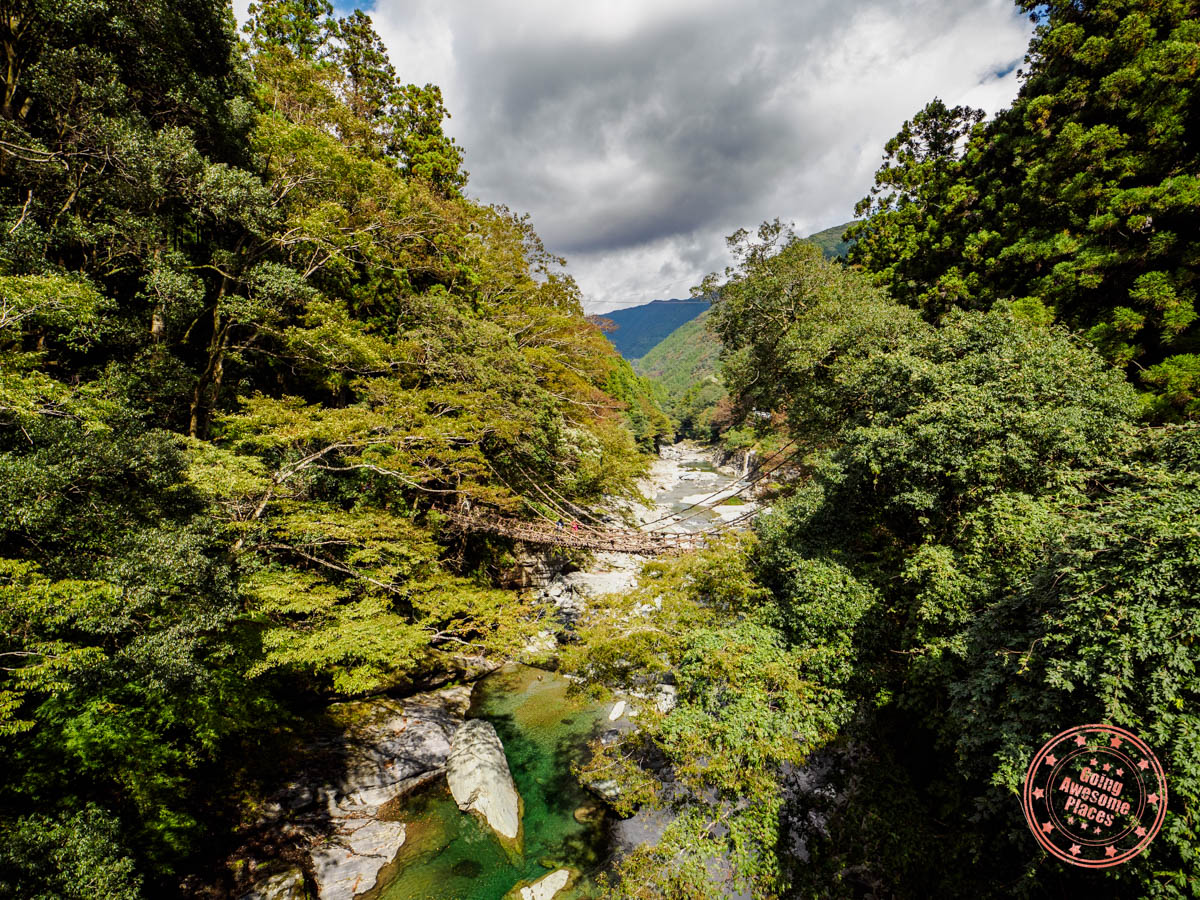
Take advantage of the third vine bridge of Iya Valley. Now that you’ve had some practice with two so far, you’ll hopefully be able to cross Iya-no-Kazurabashi Vine Bridge with the swagger of Lara Craft or Indiana Jones. Not so much in my case as I clumsily staggered from plank to plank.
When you’re here, you can’t help but be at awe with a bridge constructed of 6 tones of vine cut from the valley’s forest, measuring at 45 meters long, 2 meters wide and hanging 14 meters above Iya River.
The difference between here and the Double Vine Bridge is that it’s a bit more of a tourist attraction with its big parking lots, large bus groups, and crowd control in the form of one-directional crossing.
Biwa Waterfall is just beyond the bridge’s exit. This is a modest 50 meter waterfall that’s surrounded by stone and lush greenery.
- April-June:8AM – 6PM
- July-August:7:30AM – 6:30PM
- September-March:8AM – 5PM

Parking: What caught us off-guard was the parking situation by the bridge. There are many different parking options and while it seemed like the main lot was the obvious choice, in this case, we think it makes more sense to use the private spaces instead of the municipal parking spaces. All locations are pinned on our Shikoku map so you know where to find them.
- Municipal lot – This is the official multi-story parking lot with space for 14 buses and 300 cars. Price is ¥500 per car.
- Private lots – There are several private lots along the road that curves before and after the bridge. While instinctively they might seem a bit sketchy, they’re ultimately cheaper and closer to the bridge, ranging from ¥300-¥400.
How it works: There is a ticket booth right when you enter the bridge. Once you pay, you are allowed to walk in one direction. Traffic only flows one way and they will control how many people are on it by limiting ticket sales when it’s busy. That said, they don’t usher people off the bridge. Once you get off the bridge, you can either turn left towards Biwa Waterfall or right to get back to exit and get back on the main road.
- Are there bathrooms? There are no bathroom facilities at or near the bridge. The one that’s most easily accessible is in the visitor center that’s connected to the municipal lot.
- Can you take a bus to the vine bridge? Yes, there is a highway express bus which stops at the municipal lot and a local bus that stops on the north side of the river. Iya Times does a great breakdown of the buses in the region in English.
- This bridge is considerably more popular than Oku-Iya Double Vine Bridges because it’s more central and easily accessible. As a result, this place can get very busy on weekends and holiday periods. If you can only choose one, we’d actually recommend the double vine bridges.
- The bridge is lit up at night from 7PM – 9:30PM if you’d like to see the bridge in a different atmosphere.
- Every 3 years, the bridge has to be rebuilt. The last repair was January 9 – February 23, 2024 so the next repair should be in 2027.
- There isn’t too much to the Biwa Waterfall. It’s a 50 meter cascade with some rocks to walk around but beyond that, it’s right next to the pedestrian path and you can’t hike around it. After you’ve seen the waterfall, you’ll turn around to exit the bridge area.
Explore the Old Iya Highway

As you go further along Route 32, you start driving through the lower reaches of the gorge and the road turns into the one-lane “Iya Highway”, twisting precariously high along the mountainside.
The two main sights to see are:
- Hinoji Bend/Iya River Bend Observation Point – Reminiscent of Horseshoe Bend in Arizona , Iya River below hooks around a mountain, creating a striking panorama.
- Peeing Boy Statue – At the precipice of a 200 meter drop is a daring statue of a boy. Built in 1968, this supposedly celebrates the boys that used to relieve themselves from this viewpoint. It’s a strange one that almost feels more of an homage to Manneken Pis in Brussels.
Soak in rejuvenating waters at the bottom of the valley

Your reward for making it this far is the soul southing power of Iya Onsen . There aren’t many other onsens like this where you descend to the bottom of a valley gorge by cable car in order to sink into a hot spring onsen with the swirl of the crisp mountain air around you and the tumble of Iya River in front.
While this is part of Hotel Iya Onsen, the secret is that they allow day guests which gives you access to the onsen below and also their indoor onsen. The water is alkaline pH water and rich in sulphur , meaning it’s great for relaxing and healing skin.
These are the details for the onsen at Hotel Iyaonsen as a day-use visitor.
- Open-air onsen hours – 7:30AM – 6PM (last entry is 5PM)
- Indoor onsen hours – 24 hours except between 10:30AM – 11:30AM for cleaning
Price: Fee for the open-air onsen hours include the indoor onsen.
- Adults – ¥1,900
- Children – ¥1,000
- A private onsen ( Yamagiri-no-yu ) can be booked for 60 minutes. You will need to ask the front desk for the rate.
- If you’re only interested in the indoor onsen, it’s ¥700 for adults and ¥300 for children.
Parking: There’s free parking at the hotel but it is limited as it’s shared with hotel guests. They officially have space for 37 cars. Once the official spots fill up, most people park on the side of the road, on the mountain side.
Booking: It is not possible to make reservations day-use visitors can simply drop-in.
Website: Hotel Iyaonsen
- Can you take photos of the onsen? As with all onsens, no photos are allowed in the changing rooms or in the onsen itself. That said, you are allowed to take pictures of the cable car, the terace on the banks of the Iya River, and at the cable car station at the top and below.
- Are there time limitations? They don’t do timed entries or limit the amount of time you can spend at the onsen.
- Are private onsens available? Yes, they have a private open-air onsen that can be reserved for a fee. However, we imagine that availability will be hit or miss as hotel guests will have the first opportunity to book these ahead of time.
- When is the best time to go to the onsen? The mornings are usually the quietest but honestly it’s great anytime of the day.
- How long does the cable car take? The cable car ride descends 170 meters and takes 10 minutes.
- How many people can the cable car fit? The Hotel Iya Onsen cable car can fit 20 people.
- They have them available for purchase but if you have your own onsen towel of your own or any small travel towel you’ve packed, remember to bring it with you as they don’t provide any for free.
- You don’t want to bring a backpack with you so it’s a better idea to have all of your belongings in a small drawstring bag. These drawstring backpacks are super handy for onsens.
- Lockers have keys built in so you don’t need to bring a lock.
- There are two baths – Keikoku-no-yu and Seseragi-no-yu . Since 2016, they alternate between male and female everyday.
- If you’d like to take pictures, it’s still worthwhile to bring your phone or camera with you to the onsen as it is quite picturesque from the terrace.
- Since this is a sulphurous hot spring, remember to take off your jewelry.
Head back to home sweet home

Even though you’ll be heading back to Kouya early, your day isn’t over! A stay in Iya Valley isn’t complete without a soba-making class .
Since Iya Valley is renowned for growing buckwheat, their soba is made of 100% buckwheat instead of a mix of buckwheat and flour. These noodles are also short and thick instead of its thinner cousin found in other parts of Japan.
In a separate building of the farm, you’ll make hand-made soba from scratch. Under Shinsuke-san’s guidance, you’ll kneed and roll out the dough, followed by hand chopping each noodle.
Afterwards, watch how rice is made using the traditional method of sticks and nurturing a flame with a bamboo blowing pipe.
Returning back to the farm house, you’ll be able to feast on the freshly made soba along with many other delights. As a solo traveler, it was nice to have Shinsuke-san join me for dinner where we tried our best to make conversation through Google Translate.
Day 3 Summary
- Ochiai Village Viewpoint
- Higashi-Iya Museum of Local History and Folklore
- Bukeyashiki Kita-ke Historic House – Samurai Residence
- Manpu Gorge Wire Bridge (skip if you’re afraid of heights)
- Iya-no-Kazurabashi Vine Bridge
- Biwa Waterfall
- Iya River Bend Observation Point
- Peeing Boy Statue
- Hotel Iya Onsen
- Breakfast – Kouya Farmstay – This is a traditional Japanese breakfast served in the same dining room with multiple small dishes and rice. They also brew a fresh pot of coffee (or tea) for you to enjoy on the porch.
- Lunch – Iya Bijin – This is one of the locally-recommended restaurants that you’ll pass by along the way that’s best known for their soba.
- Dinner – Kouya Farmstay – For one of your nights, your host will run their own soba-making class which combines with another dazzling array of Iya Valley specialities.
- Kouya Farmstay – Dare I say, this is truly the best accommodation experience in Japan that truly transports you back to olden days of Japan. The house is equipped with a washer, dryer, and detergent that are free to use so this is a good time to get that done.
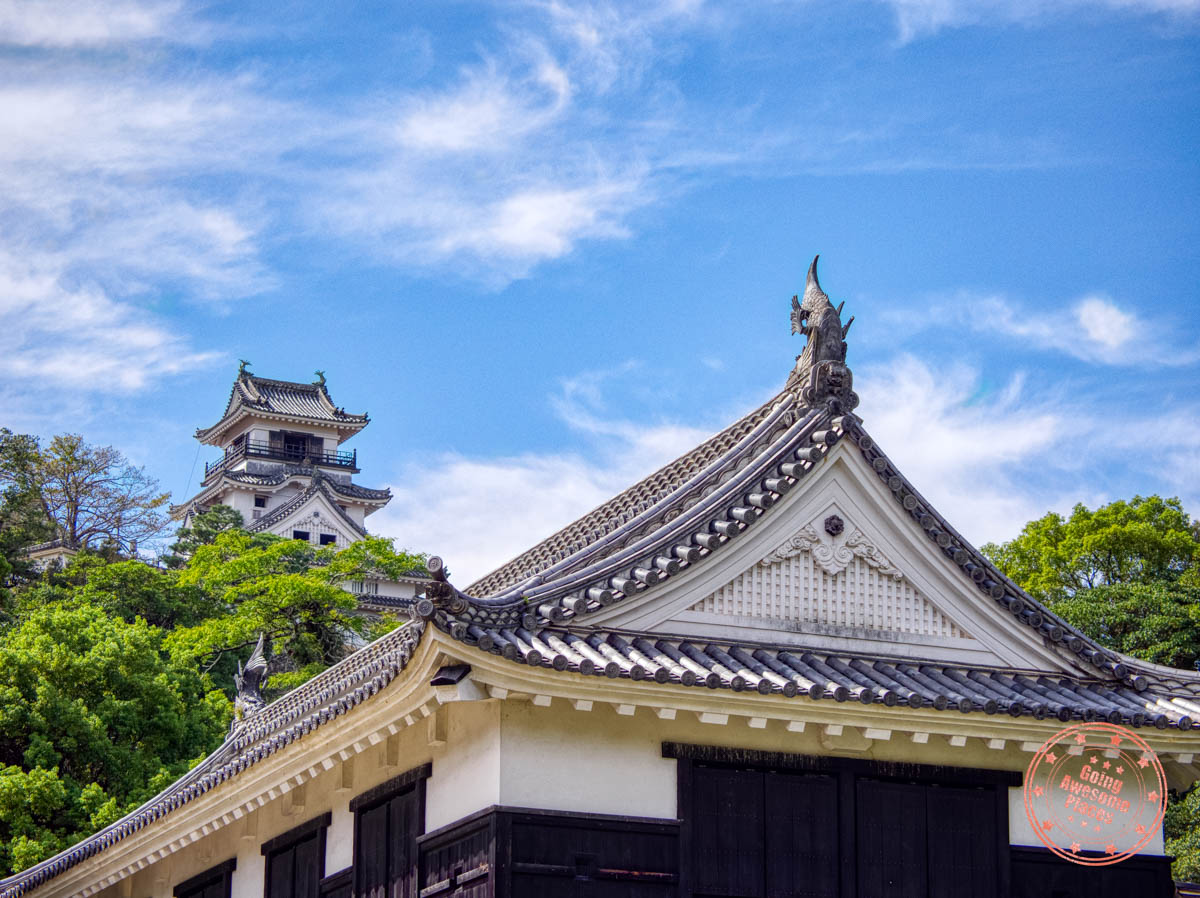
For your fourth day of this Shikoku itinerary, with many of its secrets uncovered, it’s reluctantly time to say goodbye to Iya Valley but not before you stumble upon another unusual delight. Spend the rest of the day seeing the main highlights of Kochi before detouring out to Shimanto.
Learn about the yokai

So far you’ve been focusing on the center and east end of Iya Valley. On the western side Oboke Gorge where you’ll find emerald green waters, white rock faces, and jutting cliffs. It’s here that legendary yokai take over.
Monsters, goblins, and spirits from local folklore are collectively called yokai . In olden days, this region was treacherous for people to residents and visitors and that’s how legends of yokai began as a cautionary tale.
While there are certainly a lot of adventure activities to do in the area, we think it’s worth your time to visit the Yokai House , a museum that’s part of Roadside Station Oboke. Inside are a collection of hand-made sculptures of mythical monsters, each with their own story and attributes.
It certainly helps that there are English signs here as well. Also, if you’re into gems, there’s an adjoining gem museum that displays gemstones found locally and around the world.
Seek out yokai monster statues

Now that you’ve got a good idea of what the yokai are all about, grab a map from the Tourist Information Center inside the roadside station and walk or drive the Yokai Village and try to spot all of the statues along Route 272 .
This trail mostly follows the paved road so you can either walk it or if you were tight on time like myself, drive it, and make stops along the way. To give you an idea, it’s a 2 km (1.24 mi) walk from the roadside station to Fujinosato Park.
We suggest you go as far as the Konaki-jiji statue (depicted on the right). This is a famous yokai monster featured in the manga comic, GeGeGe no Kitarō , by Shigeru Mizuki.
Climb the Kochi Castle

Exiting Iya Valley, you’ll drive into the heart of Kochi and visit your first of many incredible castles in Shikoku.
Kochi Castle was constructed in the 17th century and has the unique property of being the only one in Japan where both the original castle tower and main keep are intact . It’s also 1 of 12 castles in Japan where the main keep is intact.
On your visit, you’ll start from the perimeter of the castle grounds, enter through the main Otemon Gate, make your way around its towering stone walls, enter the main keep ( honmaru ), and finally all the way up the five-story castle tower ( tenshu ). At the very top, you’ll be able to walk the outside and get a full panoramic view of the mountains to the north and city to the south .

- Hours – 9AM – 5PM (last entry at 4:30PM)
- Open everyday except from December 26 – January 1.
- Duration – Expect to spend roughly 2 hours here.
- Adults – ¥420
- Under 18 years old – free
- If you plan on going to the Kochi Castle Museum of History, you can buy a combo ticket from the vending machine for ¥900.
Parking: The official parking lot for Kochi Park is quite large. When you arrive, they’ll assign you a specific numbered spot. The first hour is ¥370 and every extra 30 minutes is ¥110. You pay on the way out.
Booking: You can buy a Kochi Castle ticket in advance or you can use the vending machine at the base of the tower. The machine is cash-only only accepts bills up to ¥2,000.
Website: Kochi Castle
- Which part of the castle requires admission? There’s no admission required to enter from the castle grounds. However, you’ll need a ticket once you get to the top where you’ll get access to Kochi Castle Watchtower, Kaitokukan Palace, and Main Compound Honmaru (including the corridor and Higashitamon East Wing).
- Do you need to book tickets ahead of time? It’s not necessary as you can pay for your ticket at the booth before heading into the castle. On a busy day however, you can save some time by buying your ticket in advance.
- Are there English-speaking guides at the castle? Yes, the Kochi SGG Club offers free guided tours on Saturdays, Sundays, National Holidays, and when cruise ships are in Kochi. You can also book private guided tours.
- If you’re collecting Japan’s 100 Famous Castle Stamps, look for it at the Kochi Castle tower counter where you’ll be able to use their stamp from 9AM to 5PM.
- Before entering the keep, you’ll need to take off your shoes and put them in special shoe lockers. These are free to use.
Enjoy views from Godaisan Park

For lunch, Hirome Market is just a short walk from the castle. As a food hall, there are plenty of stalls to choose from and tons of seating as well. If you haven’t yet, make sure to try katsuo no tataki or fire-seared bonito.
Back on the road, on the outskirts of the city is a small mountain and park that overlooks Kochi City. The best view is from the wooden observation deck within Godaisan Park where you’ll get a clear view of the city, Urado Bay, and the Kochi Plain.
While you won’t be doing much of the famed pilgrimage trail on this Shikoku itinerary, this is your opportunity to visit temple number 31 of 88 – Chikurinji Temple , which is within the grounds of Godaisan Park.
This ancient temple is surrounded by sweeping Japanese maples and is deeply serene as you walk its moss-covered approach, make your prayers at the main temple buildings, and walk up to the brilliantly red five-storied pagoda.
Make your way to Shimanto

If you look at the map , it seems unusual to detour all the way out to the city of Shimanto, especially when Nakatsu Gorge is in the other direction. It’ll all make sense tomorrow.
It’s a long 2 hour drive from Kochi to Shimanto so we recommend taking a break somewhere along the middle, such as the Roadside Station Nakatosa .
Once you arrive in Shimanto, check into Hotel Sunriver Shimanto , grab dinner at Ichimonya located in the same plaza, and get some early rest.
Day 4 Summary
- Yokai House
- Yokai Village
- Kochi Castle
- Godaisan Park
- Chikurin-ji Temple
- Roadside Station Nakatosa
- Breakfast – Kouya Farmstay – Your last chance to enjoy the harmonious blend of flavors, textures, colors, and a stunning view of the valley.
- Lunch – Hirome Market – A short walk from Kochi Castle is a large food market with an array of stalls. If you haven’t had it yet, seek out katsuo no tataki or fire-seared bonito.
- Dinner – Ichimonya – Conveniently located in the same plaza as your hotel, this is a casual local restaurant with a wide selection of popular dishes including the aforementioned bonito, pork katsu , and unagi (eel).
- Hotel Sunriver Shimanto ( Agoda / Booking ) – A modest business-style hotel that shares a parking lot with the plaza that it’s part of which makes it convenient to walk to restaurants, groceries, and Family Mart.

- There’s barely any information online about the Yokai Village walk with locations of all of the statues. The above is a scan of the pamphlet that has them all marked. It’s in Japanese but it should give you an idea of the potential routes you can do and where they are.
Japan Trip Planning Essentials and Discounts
If you’re in the middle of booking your trip to Japan, here are the most important places you need to go to book:
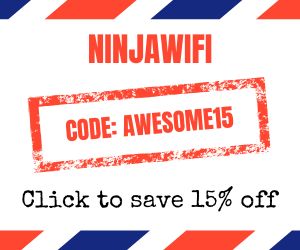
- JR Pass – The two most reliable places we always check are JRailPass and JRPass . If you are taking long distance Shinkansen across multiple region, get the full JR Pass . If you’re focusing on one specific area, you only need a JR regional pass .
- Shinkansen – The JR Pass prices have gone up and for many of you, it’ll make more sense to book tickets individually. The secret is that when you buy your Shinkansen tickets through Klook offers special vouchers for Don Quijote and BIC when booking. Their tickets are super easy to redeem as well. Right now, use code SKS10OFF to save $10 USD off.
- Hotels/Ryokans – In Japan, the best website for accommodations, hands down is Agoda . When we’ve compared them against Booking , Agoda consistently came out cheaper.
- Tours – While Viator and GetYourGuide are our go-to’s, Klook and KKDay are much popular in Asia so it’s always worth comparing across all of them to make sure you get the best price.
- Pocket Wifi – While we do love eSIMs, having a pocket wifi is great for sharing data with a large group. The most popular is NinjaWifi which is easy to pick up at the airport. Use code AWESOME15 to save 15% (automatically applied). Alternatives are offered by JRPass and JRailPass but they aren’t as cheap. For a more global solution, consider Solis and PokeFi .
- eSIM – The best one is Airalo . Save money by getting the Japan region eSIM and use referral code WILLIA9500 to get $3 USD credit on your first purchase. From now to Feb 29, the 10GB package is half price as well! Ubigi is another one that we’ve had success with where they uniquely offer 5G coverage. Use code AWESOME10 to save 10% on your first order.
- Car Rental – Big companies like Budget , Avis , and Enterprise operate in Japan but they’re usually the most expensive. The best companies are the local Japanese ones such as Toyota Rentacar, Nippon Rentacar, Orix Rentacar, Nissan Rentacar, and Times Car Rental. To make things easier, use Rentalcars and Klook to compare prices all in one place. Don’t forget, you need an IDP to drive in Japan so get one before you leave your home country.
- Learn Japanese – It helps to know even a bit of the language before you go. Start your learning with Rosetta Stone Japanese .
- Cash or credit – Cash is still very important to have in Japan but when you use credit cards, make sure you’re not getting charged those extra exchange rate fees. The best card right now is the Wise Multi-Currency Card which is actually a debit card where you can convert at favorable rates beforehand. This cuts out any sneaky transaction fees.
- Travel Insurance – Make sure you’re covered in case something happens. Get quotes from Insured Nomads and if you’re from Canada, get quotes from RATESDOTCA .
- Shopping – Discovering Don Quijote is a quintessential part of the Japan experience. The secret for tax-free shopping is that they have a coupon that can help you save 10% off + additional 5% off if you spend ¥10,000 or more.
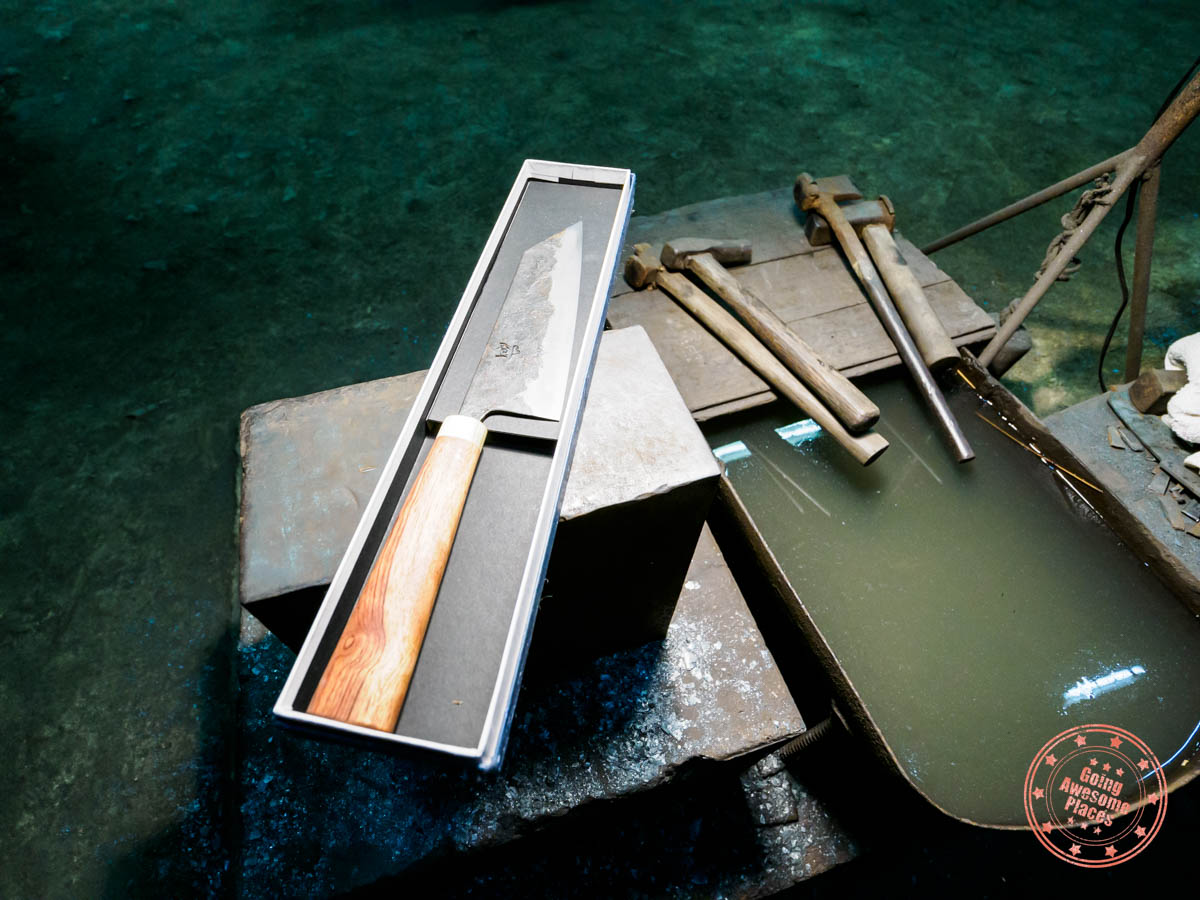
The theme of hidden secrets weaves its way around the entire 12-day Shikoku itinerary and Workshop Kurogane is a prime example of its many pleasant surprises. Nestled alongside the undisturbed natural beauty of Shimanto River, you’ll find the truly one-of-a-kind knife-making experience .
Forge your own kitchen knife

Deep in the Kochi mountains, Nobuya-san focuses on an ancient forging technique that dates back 1500 years. Taking from his own philosophy of connecting with nature and the old-style of living, he says “I focus on crafting one-of-a-kind knives that reflect my unique strengths and weaknesses, as well as the bold beauty of Kochi’s countryside that can’t be found anywhere else.”
The only reason why I knew about this activity was because it popped up on Viator during my trip planning process . My initial instincts were that this didn’t quite flow with how the itinerary was laid out, but I knew this was too good of an opportunity to pass up. I eventually re-organized what would’ve been an extra day in Kochi and included this experience.
The best way to get a feel for what the knife-making workshop is like is to watch our Shikoku video in the video player. You can also check out or 12 Days in Shikoku video on YouTube .
Your one day class starts with a raw piece of Blue Paper #2 steel. Step by step, you’ll create the shape of the blade and forging it through hammering, grinding, sanding, hardening, and tempering. The final steps involve the handle, name carving, and sharpening with a whetstone.

Beyond the meticulous knife-making steps, you’ll enjoy getting to know the master, Nobuya Hayashi and his apprentice, Jesse from Canada. Unlike most knife-making workshops, Nobuya-san doesn’t come from a line of knife-making masters but instead, inherited the workshop from his late master, after coming to him with a passion blacksmithing in his second life.
This is why you’ll find that there’s a refreshing modern approach to running a knife-making workshop here, whereas other workshops in Japan are typically more conservative and cookie-cutter. Here, you can make any type of knife you want and you get to be involved in quite a number of steps.

We believe that the Workshop Kurogane knife-making class is for everyone . You don’t need to be an expert craftsman or a connoisseur of Japanese knives. As long as you have an appreciation for learning the Japanese way of creation, enjoy being hands-on, and have use for a knife back home, this is a no-brainer.

Address: Use “Workshop KUROGANE” on Google Maps when navigating here.
- Operating days – Friday, Saturday, and Sunday
- Duration – 8-9 hours
- Start time – 9AM
- One-day knife making class (with pre-made magnolia handle) – ¥34,000
- Custom-made wooden handle (i.e. bubinga, walnut) with ferrule (brass or copper) – ¥8,000
- Worldwide shipping – ¥4,000 for up to two knives, ¥6000 for up to six knives to one address.
- Engraving (up to 3 characters) – free
Parking: Workshop Kurogane has enough spots on their driveway for cars.
Booking: You can book your experience through Viator or email [email protected] / [email protected]
Language: Master Nobuya-san and apprentice Jesse-san both speak English.
Website: They have an old website but it is out of date so the best way to connect is through Master Nobuya’s Instagram and Apprentice Jesse’s Instagram (typically more responsive) accounts.
- How far in advance should you book? It’s recommended you book at least 3 months in advance. As more enthusiasts and travelers learn about this experience in Shikoku, spots are filling up quickly.
- Do you need prior knife making experience? You do not need any prior skills or knowledge of knife making before coming here.
- How challenging is the class? This class is meant to be for all skill levels and the instructors are very good at adapting the experience to how much you want to put into it. From a physical perspective the hardest part is the hammering out of the steel. It is quite the fun process but can get tiring. Overall, expect this to be a very hands-on experience but anything you’re not able to do, the instructors can do for you.
- Is lunch provided? No meals are provided in this experience so you’re expected to pack your own. For most, it’ll be the easiest to go to stock up at the Family Mart next to Hotel Sunriver Shimanto or other convenient store to load up on bread, onigiri, and other snacks.
- What equipment is provided by the workshop? They provide gloves, apron, and safety goggles.
- What type of steel is used? The base steel is Blue Paper #2 which is pre-laminated. This is carbon steel which is incredibly strong and more durable but is less corrosion-resistant.
- Is it okay to travel by plane with the finished knife? You won’t be able to have it in your carry-on but you can absolutely travel with this knife in your check-in luggage. Alternatively, you can always ask them to ship the knife to you.

- Before going, we recommend that you research the type of knife that you’re interested in making. To help with that, it might be worth picking up a book like handbook on Japanese knives and sharpening techniques which we saw in the workshop. There isn’t much time to think about this so come in with the style in mind or have a sketch ready.
- If you didn’t book this ahead of time and find yourself wanting to join last-minute, it doesn’t hurt to reach out by DM’ing Jesse on Instagram to see if there’s a way to fit you in.
- If you are tight on time, they can also offer a half day program where you don’t get involved in the grinding, and see the remaining steps of sharpening and attaching the handle. Instead, you the sensei finishes the knife and you pay extra to have it mailed to you.
- For those that are Tamahagane knife lovers, you should definitely consider extending your Shikoku itinerary and do their 4-day Tamahagane knife making class where you go even further back in the process and see a very traditional smelting method of creating precious steel from ironsand.
The hard part about incorporating the blacksmithing experience is that you then have to make the 2.5 hour drive back to Kochi City. It’s not ideal, but this way, you have a much shorter drive the next day into Nakatsu Gorge.
Have dinner at a traditional Japanese restuarant in Ishoku Club Jyunya and have much-deserved rest at Comfort Hotel Kochi .
Day 5 Summary
- Kurogane Knife Making Workshop
- Breakfast – Konbini Breakfast – You’re going to want to head out ASAP to get to your 9AM knife-making class start time so it’ll be easier to eat something quick in your room or as you drive up to Kurogane Workshop.
- Lunch – Konbini Lunch – Since lunch isn’t included with the class, pack something with you.
- Dinner – Ishoku Club Jyunya – This was another local-recommended Japanese restaurant that serves all of the Kochi specialities. The hostess here is extremely friendly and may even offer to sit down with you to share what Okyaku culture of Kochi is all about including drinking etiquette and games which I did not expect.
- Comfort Hotel Kochi ( Agoda / Booking ) – While the brand isn’t as well-regarded in North America, this Comfort Hotel is quite respectable, modern, and with a bit more character than the basic business hotel. The best part is that breakfast is included. One thing to note is that they don’t have the largest parking lot and fills up quickly.
Interested in more off-the-beaten-path Japan?
Similar to Shikoku, Hokkaido is another place in Japan that deserves a lot more attention. If you love the outdoors, wildlife, Indigenous experiences, and seafood, you need to check out our adventures in Far East Hokkaido

Enter Nakatsu Gorge. You’ll once again delve into the mountains valleys of inner Shikoku, where pristine turquoise water, ancient moss, dramatic waterfalls, and giant boulders await.
Seek out canyoning thrills

We’re firm believers of seeking experiences that let you try something new or push your boundaries. In the case of Nakatsu Gorge Canyoning , you get both!
With Niyodo Adventure , you’ll be guided through an exclusive part of the Nakatsu Gorge that can only be explored by floating on your back, jump into the water, abseiling down cliffs, ducking behind waterfalls, and climbing giant rocks.
In the spray of the water and surrounded by ancient rock, you get another sense of Shikoku’s natural beauty. Add this to the growing list of secrets you’ve unlocked.

- Duration – 3 hours total with 2 to 2.5 hours inside the canyon to get through a 200 m (0.12 mi) stretch.
- Time slots – 8:20AM and 1:15PM
- This trip runs throughout the year.
- Canyoning tour – ¥8,500

Parking: There are two parking lots. One is the larger lot below the old elementary school and the second is further up and on the same level as the Niyodo Adventure shop itself. Parking is free and you can continue to park here for your Nakatsu Gorge walk afterwards.
Booking: You can book directly on their website. Since they don’t have staff at the store the whole time, it would not be reliable to try to drop in. When reserving online, you’ll first make the request by providing your e-mail. You will then receive an email with a link to fill out your detail and provide a credit card for payment where it will be processed right away.
Website: Niyodo Adventure
Language: They have guides that speak English so make sure to request this when you fill out the reservation form.
- How challenging is canyoning in Nakatsu Gorge? Canyoning is definitely a more physically challenging excursion that will put you through several thrilling situations such as jumping into the water from height, going down a natural slide, ducking behind a waterfall, and letting go of a rope after abseiling. Skill-wise, you only need basic swimming skills and is designed to be for first-timers but you need to be fit enough to get up on rocks and up and down stairs.
- How cold is the water? The water stays roughly around 12-13°C (53.6 – 55.4°F) which means it’ll be chilly initially but the wetsuit does a good job at keeping you insulated so you stay relatively comfortable.
- What equipment is provided? They provide helmets, 5mm full-length wetsuit, water shoes designed for canyoning, and life jacket.
- Does the canyoning trip overlap with the Nakatsu Gorge hiking course? No as you’ll be going into in a part of the gorge that you can only get to by canyoning. The end part of the trip is right below the Ishibashira Stone Pillars, the uppermost part of the hiking course.
- How large are the groups? The maximum group size is 7.
- Is there a minimum group size for tours to run? No, the canyoning trip will run even if it’s only one person.
- What is the refund policy? 7 days prior, it’s 100%, 2-7 days is 70%, and 1 day prior is 50% refund.
- Is canyoning suitable for children? If you have smaller children (6+), there is a Family Canyoning Trip product available.
- Are photos and videos available for purchase? What’s really nice about this trip is that the guide will use their GoPro to take photos and videos at no extra cost.
- Can you bring a water bag into the canyon? If you own a dry bag , you can bring it with you but they’ll want you to put it in a separate backpack that they can provide for free. You don’t really need much gear with you in the canyon but if you’d like to have water or larger camera gear, they’ll allow it.
- Are there change rooms in the shop? Yes, there are male and female change rooms in the Niyodo Adventure store. There are separate bathrooms in the building as well.
- Make sure to pack a towel, swim suit, change of clothes, and camera ( serious / casual ) for Nakatsu Canyoning. Keep in mind that your swim suit will be wet so either have a bag for it or spread it out to dry in your car.
- If you aren’t providing your own GoPro for the guide to use, make sure to have an extra high-speed Micro SD memory card .
- I was able to ask if it was okay to bring my own camera gear which they were okay with. I ended up testing out the Insta360 X3 with the unicorn helmet mount which worked out really well to stay hands-free.
- Only one or two of their helmets have GoPro mounts so we’d recommend bringing your own adhesive mount in-case.
- If canyoning isn’t your thing, a new adventure activitiy that opened in the region is called Niyodo Fly High .
Hike the Nakatsu Gorge walking course

After you’ve dried up from your canyoning adventures, it’s time to head into Nakatsu Gorge on foot . This gives you a different perspective of surrounding nature because this time, you’ll be able to see more of the details of this magnificent scenery.
Meander your way through the well-built path and concrete bridges, following Nakatsu River as you pass by a shrine, statues of gods, massive fallen bounders, pools of Niyodo Blue , the ethereal surrounding forest, and eventually the thunder of Uryu Falls.

- Duration – Expect to spend 1 to 1.5 hours here to walk the 2.3km trail. Budget another 30 minutes if you’re planning to go all the way to the stone pillars (#5 in the picture above).
- Open all-year-round.
Price: Free
Parking: The best place to park are the same lots you’d use for Niyodo Adventure. The walk from the parking to the start of the walking course is 230 meter and takes 4 minutes.
Website: Nakatsu Gorge from Niyido Blue Tourism Council
- How challenging is the walk through Nakatsu Gorge? Walking Nakatsu Gorge (also called Nakatsu Valley) is mostly gentle along its 2.3 km path (1.4 miles). It’s a special laid path but does include several staircases. The path ends at Uyru Falls but continues onwards involves a long continuous staircase up towards Ryugubuchi which can be quite taxing.
- Are there bathrooms? There are bathroom facilities at the beginning of the walk but there are none in the valley.
- Can you swim in the gorge? No, swimming is prohibited.
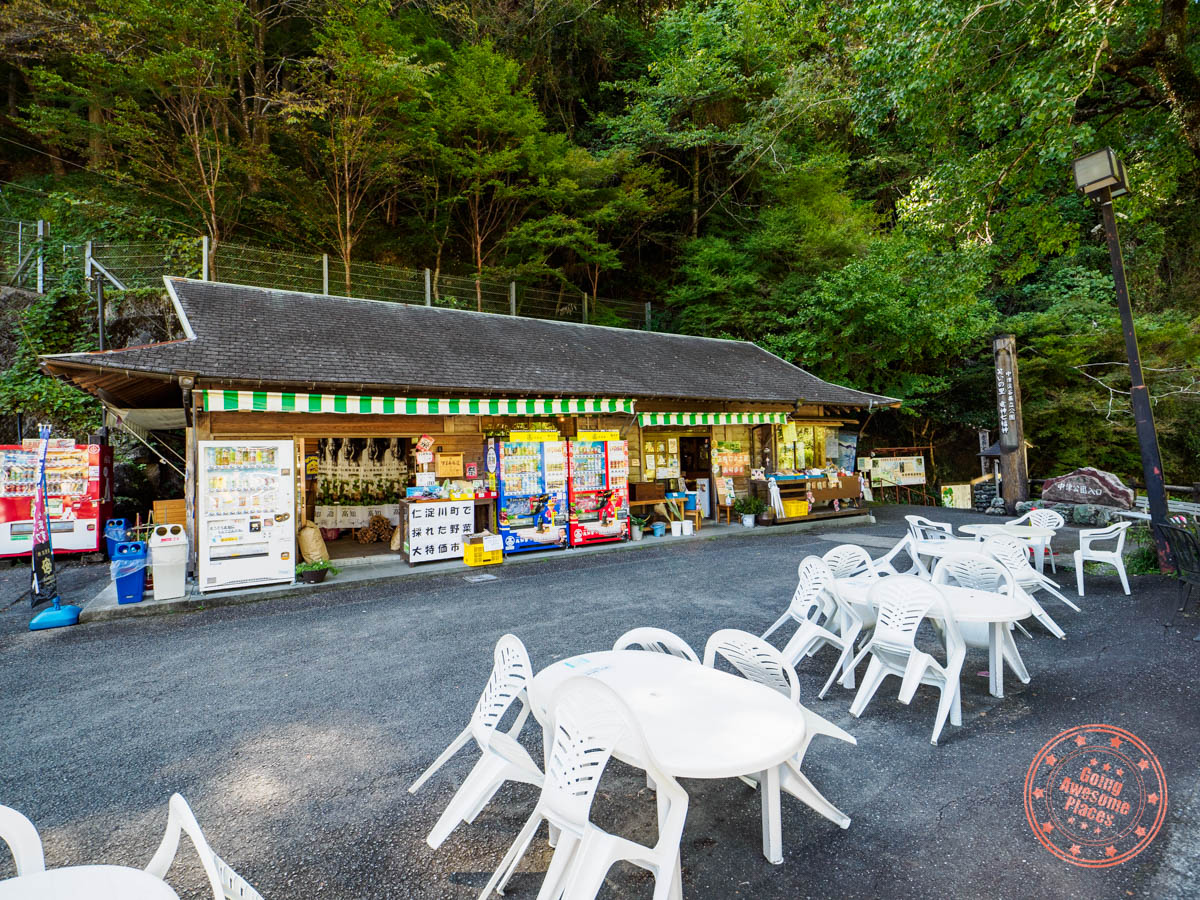
- There is a variety store at the start of the path which is stocked with several vending machines and sells a variety of things including food and snacks if you want to stock up.
- There are railings in some sections of the walk but there are sections on the concrete path without so be careful where you step.
- All of the literature says the walking path is 2.3km however this only goes up to Uryu Falls. Beyond Uryu Falls, there’s a wooden platform which looks down on the valley, Ryugubuchi, and then Stone Pillars which is furthest away.
- Stone Pillars are the same ones that you see from the base of the canyon at the end of your Niyodo Adventure canyoning so if you’ve done this already, there isn’t as much of a need to walk all the way here.
- There are 7 Gods of Fortune scattered around the path so be on the lookout as some are quite hidden.
Lunch at Cha Cha Asurano

There aren’t too many restaurants in the area but one spot that’s highly recommended is Cha Cha Asurano . They specialize in delicious set meals accompanied with one of the region’s specialties – Sawatari tea.
Decompress at Seirannosato
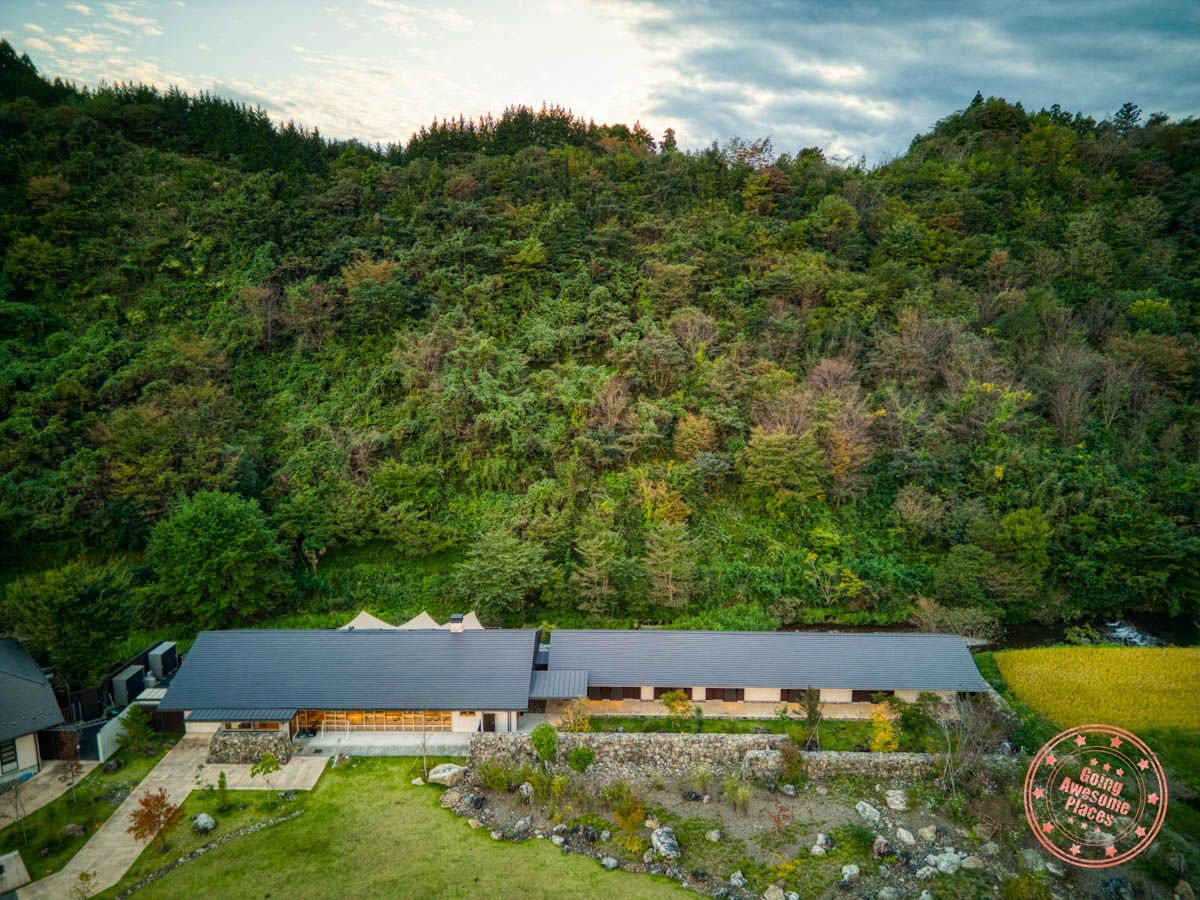
It’s been a busy couple of days so it’s at this point in the itinerary where you have the rest of the day to recharge and relax. Enjoy the tranquility of being in the middle of nowhere.
Taking the winding mountain roads, you eventually make it to the town of Tsuno, lodged so deep in the Kochi mountains that even locals would have a hard time pin pointing exactly where it is on the map .
Your accommodations for the night is at the newly re-developed Seirannosato . Once a basic ryokan, they’ve built quite the remarkable modern lodge featuring 6 rooms, rooms with private patios that face Shimanto River, and a fusion of Western and Japanese design elements.

Dinner at Seirannosato

For dinner, enjoy a continuous stream of regional Kochi dishes that will have you completely satisfied at the end.
Day 6 Summary
- Nakatsu Gorge Canyoning with Niyodo Adventure
- Nakatsu Gorge Hiking Course
- Breakfast – Comfort Hotel Kochi – An excellent buffet breakfast that’s free for all guests.
- Lunch – Cha Cafe Asunaro – One of the more popular restaurants in the Niyodo Gorge area and located next to Odo Dam. They offer various set meals and feature local ingredients and Sawatari tea leaves (tea-growing region along Niyodo River). For those on the go, they have smoothies, lattes, soft-serve and waffles available for takeout.
- Dinner – Seirannosato – When you book with this hotel, it includes breakfast and dinner service, which you’ll be glad to have as there isn’t much else nearby. Dinner is a multi-course Japanese meal featuring Kochi cuisine and homemade financier for dessert.
- Seirannosato ( Rakuten Travel ) – Deep in the Kochi mountains and at the source of the Shimanto River, this is a newly-built lodge that has a nice fusion of Western and Japanese design. This is the type of place where you can rewind and get connected to nature. Staying in one of the 6 rooms, make sure to take advantage of their private patio that faces the tumbling river. Lastly, they have a free-to-use laundry machine and dryer so bring your own travel detergent sheets if you want to use it.
Spending time in Tokyo?
With over 100,000 restaurants in the city to choose from, how do you pick where to eat? Our Tokyo restaurant guide makes it easy by picking the best places to eat.
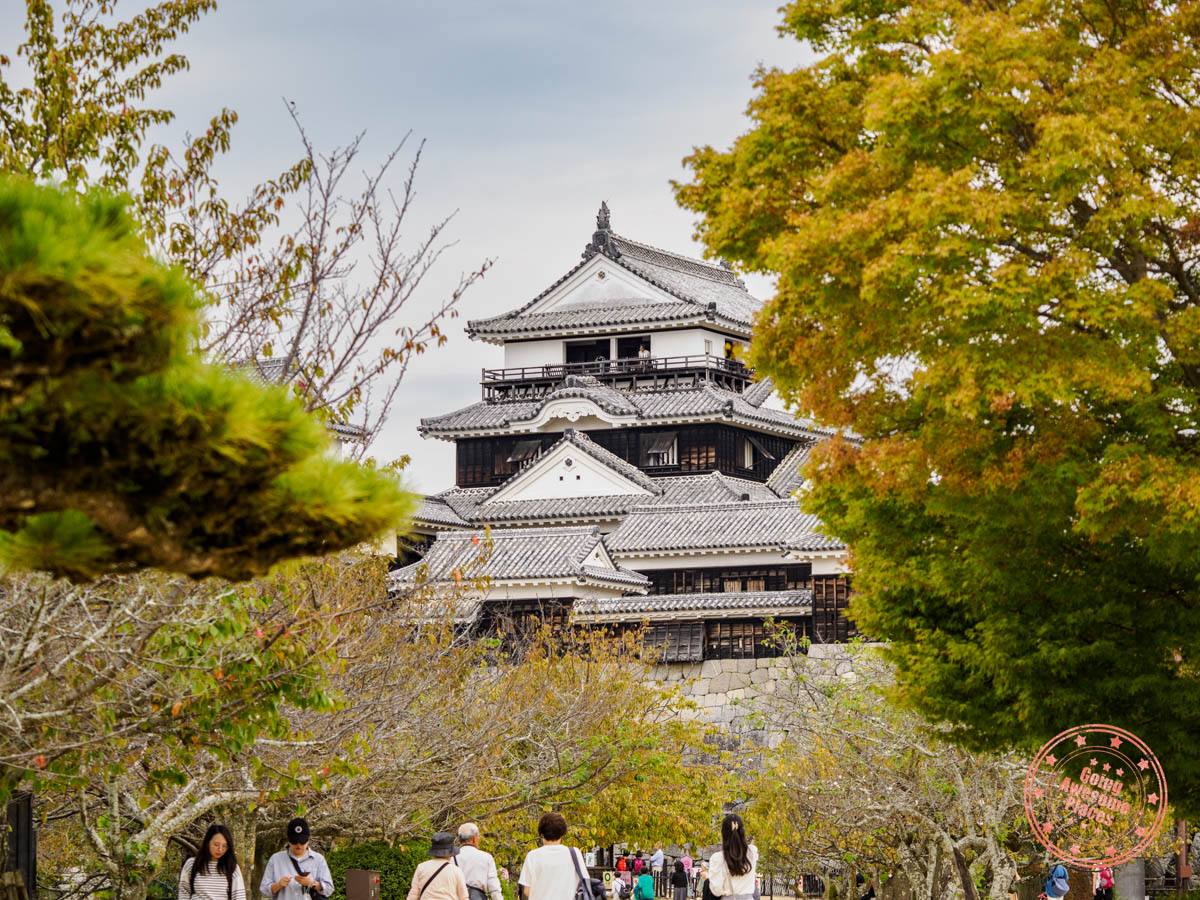
It’s time to turn your attention to the north and Ehime prefecture where a legendary castle, mikan, and onsen await!
Breakfast at Seirannosato

Enjoy a filling breakfast at Seirannosato with a blend of a traditional Japanese breakfast set and also buffet items such as pastries, curry, toast, and more.
Make your way up to Matsuyama Castle

Matsuyama Castle is a historic Japanese castle situated atop Mount Katsuyama in Matsuyama City. It’s renowned for its architectural grandeur, strategic location, and layers of defense. Joining the likes of Kochi Castle, this is also on the list of the 12 castles that have come out of the post-feudal era intact.
Thanks to its steep hilltop location, the visit starts with a choice of taking either a chairlift or gondola to help with the ascent. From there, you’ll be winding your way through a labyrinth of gates, courtyard kill-zones, stone turrets, and impenetrable walls.
After passing through a line of cherry trees on the hill’s plateau, you’ll finally arrive at the main keep which houses the castle tower. As you climb the tour, make sure to enjoy the in-depth displays of feudal Japan including numerous katanas and armor on display, a samurai photo opportunity, and virtual reality station.
When you arrive at the top of the tower, relish how commanding of a position the castle has with its bird’s eye view of the city and also the Seto Inland Sea .
Before you go, have a refreshing cold glass of mikan juice and soft-serve .
What is mikan: From juice drinking stations, soft-serve toppings, cute bear mascots resembling oranges, and special Pocky Stick boxes, mikan is everywhere in Matsuyama. What’s the deal? Well, these are basically a type of mandarin orange and is extremely popular because they are easy to eat, is extremely sweet, and has a pleasant scent. The best quality Mikan comes from Ehime prefecture which is why you’ll see them everywhere.

Ropeway – Takes 3 minutes and departs every 10 minutes.
- Feb – Jul – 8:30AM – 5:30PM
- Aug – 8:30AM – 6PM
- Sept to Nov – 8:30AM – 5:30PM
- Dec to Jan – 8:30AM – 5PM
Lift – Takes 6 minutes and is constantly running.
- All year round – 8:30AM – 5PM
- Closed if there is rain or chance of rain.
- Children under 6 may not ride the lift.
Castle Tower – Takes 10 minutes to walk from ropeway/lift.
- Feb to Jul – 9AM – 5PM
- Aug to 9AM – 5:30PM
- Sept to Nov – 9AM – 5PM
- Dec to Jan – 9AM – 4:30PM
NOTE: Since last entry to the castle tower is 30 minutes before closing, you should be on the ropeway/lift 50 minutes before closing.
Price: You’ll need to pay separately for the castle tower and ropeway/lift.
Ropeway/Lift
- Adults – Round-trip is ¥520 and one-way is ¥270
- Elementary school students – Round-trip is ¥260 and one-way is ¥140
- Up to two children under 6 are free with parent/guardian.
Matsuyama Castle Tower
- Adults – ¥520
- Elementary school students – ¥160
NOTE: Cashless payment (credit card and IC card) for Matsuyama Castle Tower and ropeway/lift ends at 3:15PM. Also, combo tickets are no longer sold anymore.
Parking: The official parking lot for Matsuyama Castle has enough space for 26 cars. This is first-come, first-serve and costs ¥420 for 2 hours and ¥100 for every additional 30 minutes. This lot fills up quite quickly so you’ll likely have to try to find a spot in one of the small mini lots that are scattered in the area. These require the use of vending machines which only take coins and ¥1000 yen bill. The cost is 100 per 30 minutes. In this type of lot, you pay on your way out by pressing the spot number, paying the amount indicated, wait for the flap to go down, drive away within 3 minutes. The two parking lots are marked on the Shikoku trip map .
Booking: You can’t buy tickets online ahead of time so you’ll have to do it on-site. The first is to buy your ropeway or lift ticket. Both are the same ticket so you can choose which one you want to take. The other ticket you’ll need is for the castle tower which you can do at the entrance (credit card and IC card accepted).
Website: Matsuyama Castle
- Can I get to the castle without the ropeway/lift? There are 4 different ways to walks that you can take to Matsuyama Castle’s main enclosure which you can find in their climb guide .
- Which part of the castle requires admission? There’s technically no admission to get into the castle grounds. The ropeway/lift is optional although we recommend taking it to save time and energy. From the grounds, the one area that requires admission is the castle tower.
- Do I need to book tickets ahead of time? You don’t need to buy tickets for Matsuyama Castle in advance.
- How long do I need at Matsuyama Castle? Expect to spend roughly 3 hours here.
- Are backpacks allowed on the lift? Yes, you are allowed to have a backpack with you but you need to carry it strapped in front of you.
- Be prepared for very steep stairs up the castle tower.
- If the weather is good, we recommend taking the chair lift because it’s such a unique experience and there’s no waiting. You can also try both – one on the way up and the other on the way down.
- If you’re collecting Japan’s 100 Famous Castle Stamps, look for it on a table next to the the Matsuyama keep ticket booth.
- Before entering the keep, you’ll need to take off your shoes and put them in special shoe lockers. Green slippers are available but completely optional. These are free to use.
- While you’re at Matsuyama Castle, don’t miss out on trying mikan juice that you can pour from the tap (¥500) and iyokan orange-topped soft-serve ice cream (¥500).
After eating lunch at the popular Gansui Taimeshi Stand near the base of the castle, drive over to the neighbourhood of Dogo Onsen and check into Dogo Onsen Yamatoya Honten . This will allow you to park your car and settle in.
Dogo Onsen is the name of Japan’s oldest and most well-known hot springs and is surrounded by numerous bath houses and ryokans. In the past, the Imperial family came here to vacation but today, it’s the tourist hub of Matsuyama.
Check out the Botchan Train Museum

For 67 years from 1888, a tiny steam locomotive ran in the city. What makes it endearing is its lack of speed and inability to turn. In fact, since it’s not a circular route, train crew dressing as they did 100 years ago, have to to manually lift and rotate it around by hand. If you’re feeling nostalgic, you can ride in the carriage of a diesel-powered replica of the original Botchan Train . They run between JR Matsuyama, Shieki Station and Dogo (¥1,300 per per person).
Your schedule might not line up with the train or it might be suspended so if you’re interested, you can always head over to the Botchan Train Museum hidden inside a Starbucks which has more history, artifacts, and a full-sized replica.
Feel the energy of a local izakaya
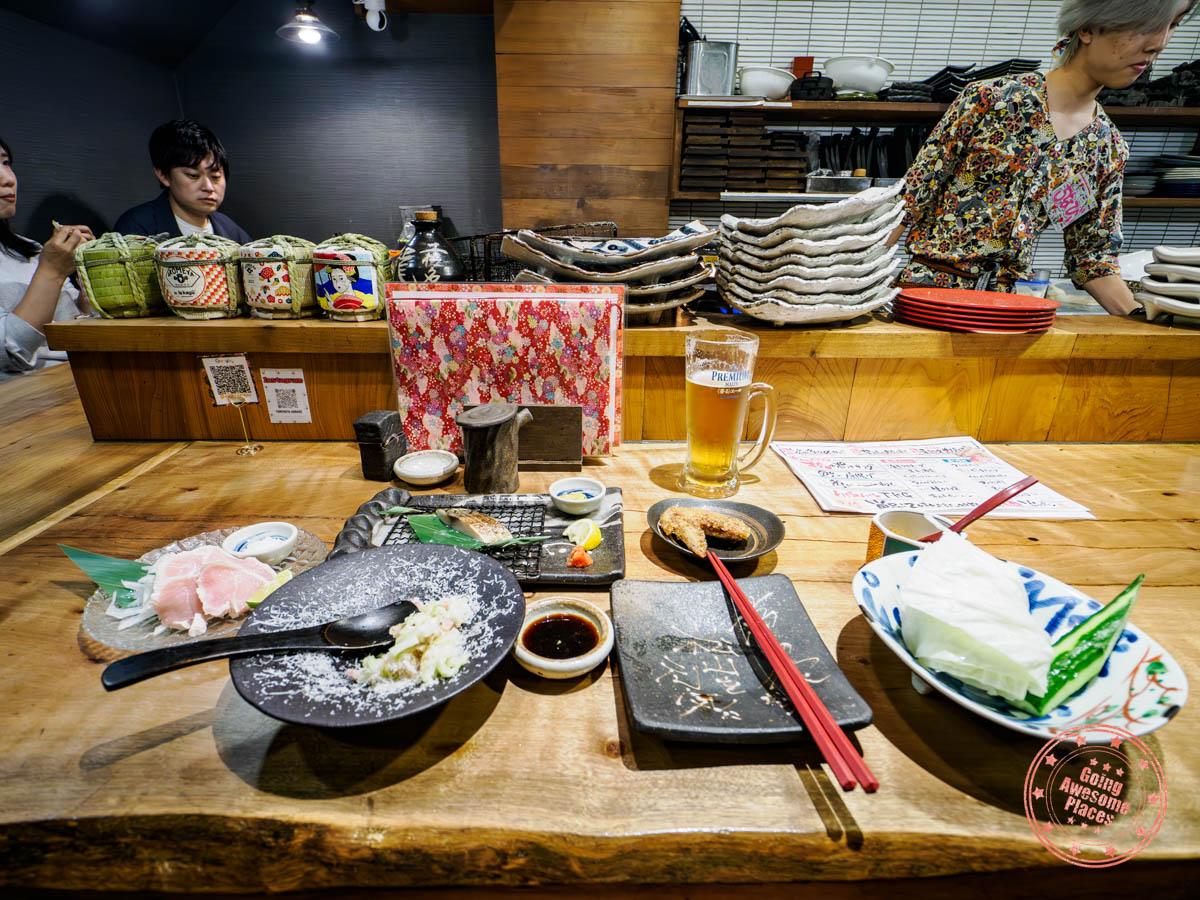
Get fired up for a local-recommend spot for dinner, Yumenoya Hanare , where izakaya meets local specialties and Western fusion. If you’re feeling adventurous, make sure to try raw chicken which is completely safe to eat, mackerel that’s flame-seared in front of you, and the charcoal-flamed chicken.
Experience Dogo Onsen classics

Dogo Onsen is a true onsen town and when you’re here, do as the locals (actually mostly tourists these days) do. In your hotel room is a cotton yukata robe, outdoor slippers, and bag. It is perfectly acceptable, and in fact, encouraged, to wear your yukata around town.
The beauty of this neighbourhood is that everything is a short walk away and interconnected by several large covered shopping arcades. Drop by its many shops and make sure to drop by the Botchan Karakuri Clock which comes alive every hour from 8AM to 10PM (every 30 minutes on weekends and holidays).
A trip to Dogo Onsen wouldn’t be complete without going to its original onsen, Dogo Onsen Honkan . It’s said that this was the inspiration for Miyazaki’s “Spirited Away”.
After you’ve gotten a feel for what a traditional bathhouse is like, head back to your own hotel and go for another soak to experience some of the differences between one from ancient times to something a little more modern. You’ll be an onsen expert in no time.
Not a bad way to end the day!
Day 7 Summary
- Matsuyama Castle
- Botchan Train Museum
- Botchan Karakuri Clock
- Dogo Onsen Honkan
- Breakfast – Seirannosato – In addition to serving a Japanese-style breakfast, they also have a buffet of additional dishes such as curry, rice, fruit, yogurt, bread, and pastries.
- Lunch – Gansui Taimeshi Stand – Popular restaurant that’s walking distance from Matsuyama Castle Ropeway station. The must-order item is the uwajima taimeshi which is rice topped with sea bream sashimi and eaten with a special sauce that’s comprised of soy sauce and egg yolk.
- Dinner – Yumenoya Hanare – An izakaya where their energy is infectious and you have to order their charcoal-flamed chicken, seared mackerel, and tamago made with award-winning eggs. It’s also one of the few places you’ll be able safely have raw chicken.
- Dogo Onsen Yamatoya Honten ( Agoda / Booking ) – Located almost immediately next to the original and historic Dogo Onsen, this property is classic in its own elegant way and gives you the best of both worlds, being able to comfortably walk in a yukata to the original onsen and also use the hotel’s own as well (which we found to be much better). While the rooms are small, you can choose between Western and Japanese-style rooms. A pleasant surprise is that the Western rooms have their own massage chair. When staying here, don’t forget to get your free blue charm that they give out if you ask at the front desk. Parking is through a valet service but it is completely free.

Go on an exquisite cultural journey in both the charming town of Ozu and the picturesque village of Uchiko. In Ozu, you’ll find the Ozu Castle and historic streets from a bygone era. Meanwhile, Uchiko captivates with its well-preserved machiya residences and traditional kabuki theater.
See a smaller but a unique Ozu Castle

You’ve been to two impressive castles up until this point so the bar is set quite high. Instead of having you visit another one that’s on the list of 12 intact keeps, we’re going a different direction.
Ozu Castle met a tragic end in 1888 when its keep was completely demolished because it was rapidly deteriorating. In a turn of events, the community rallied around a project to have it reconstructed in 2004 using old photographs, maps, and discovery of a model. However, instead of using concrete, they used primarily wood and traditional construction techniques . The result is a castle that looks like the original from the outside and inside as well.
Coming here in the morning, appreciate the fresh glaze on the golden timber, no iron nails in sight, and a beautiful view of the city and river below.
- Open every day
- Children (Junior high school students and under) – ¥220
- Children under 5 – free
- Combo tickets are available for Ozu Castle and Garyu Sanso (Adults – ¥1,100, Children – ¥440)

Parking: The closest parking lot for Ozu Castle is also called “Ozu Citizen Hall Paid Parking Lot” and costs ¥150 for the first hour and then ¥80 per additional 30 minutes.
Booking: You can’t book tickets to Ozu Castle in advance.
Website: Ozu Castle
- Which part of the castle requires admission? To enter the castle, you need to pay admission. Otherwise, the grounds are free to explore.
- Do you need to book tickets ahead of time? You don’t need to buy tickets for Ozu Castle in advance.
- How long do you need in Ozu Castle? Expect to spend roughly 1 to 1.5 hours here.
- If you’re collecting Japan’s 100 Famous Castle Stamps, look for it on a table next to the the Matsuyama keep ticket booth
- If it’s been your dream to sleep in a Japanese castle, you can be a lord of a castle with an Ozu Castle Stay .
See where extraordinary architecture meets Japanese beauty

Next, you’ll drive over to an impressive villa overlooking Hijikawa River that took 4 years and 9000 artisans to build. Garyo Sanso Villa truly epitomizes the union of nature and tea.
When you’re here, it’s not hard to slip back in time with its extraordinary architecture, fine details, and aesthetic concept of “wabi-sabi” that sees the beauty in imperfection.
- Combo tickets are available for Ozu Castle and Garyu Sanso (Adults – ¥880, Children – ¥330)
Parking: There is very limited parking here. Next to Garyu Sanso are 4 spots. There is a lot across but it’s only meant for restaurant guests. Alternatively, there’s parking below Ozu Shrine that has a good 5-6 spots. Both parking sites are free. We’ve marked these on our Shikoku trip planning map .
Booking: You can’t book tickets to Garyu Sanso in advance.
Website: Garyu Sanso
- Are there bathrooms at Garyu Sanso? No but outside of the villa is a public bathroom facility.
- Do you need to book tickets ahead of time? You don’t need to buy tickets for Garyu Sanso in advance.
- How long do you need in Garyu Sanso? Expect to spend roughly 30 to 45 minutes here.
- When is the tea service available? On Sundays from April to October (excluding August), tea is served in Furo-an for an additional fee. However, these days aren’t indicated.
- There are many hidden architectural details that are easy to miss. It’s worth reading these Garyu Sanso details ahead of time so you can pick them out.
Tap into the nostalgia of “Old Japan”

If you happen to be here on a Sunday, make sure to go to Pokopen Yokocho , a vintage flea market that’ll surely take you back in time.
It’s not a big area but you can’t help but be fascinated by countless displays of enamel advertising plates, retro toys, travel pamphlets from the 1950s, and simple kids games . In the back, there’s also a Showa period museum packed with more memorabilia from the time of Emperor Hirohito’s rule.
The adjacent red-brick building is Akarengakan , where you’ll find local-made crafts such as candles, washi paper, ceramics, and other mementos. The building also houses an exhibit about brick-making around the world and a museum featuring old movie cameras and model trains.
Slip back in time in Uchiko

Spend the rest of your afternoon exploring the town of Uchiko that seemingly froze in time from the Edo (1603-1867) and Meiji (1868-1912) periods. It’s a town made its mark in the 18th century with its thriving wax trade
Uchiko’s wealth and influence shows with its well-preserved streetscape where machiya , or traditional wooden townhouses, line the main thoroughfare where sharp eyes will notice the use of pale yellow lime plaster, wooden lattices, and dark kawara roof tiles. It’s truly an open-air museum here .
When you’re here, don’t miss the last remaining candle shop where you can see how they are continuing the tradition of making them using ancient techniques. You’ll also be able to see a real-life kabuki theater at Uchiko-za Kabuki Theater with its hand-powered stage elevators and rotating stage.
Above all, I was continuously reminded of Kyoto, not so much in visual similarities but I kept thinking “this is what Kyoto must’ve been like before mass tourism”. That’s why I loved Uchiko so much.
Indulge in the onsen one more time

Return back to Matsuyama and Dogo Onsen. Use this as free time to walk around Dogo Onsen, try other onsens such as Dogo Onsen Annex , or simply enjoy your own hotel’s onsen with its free snack and sake bar.
Day 8 Summary
- Garyu Sanso Villa
- Pokopen Yokocho
- Akarengakan
- Uchiko Yokaichi & Gokoku Historical Districts
- Uchiko-za Kabuki Theater
- Breakfast – Konbini Breakfast – If you didn’t purchase breakfast with your stay, you’ll want to plan to buy some food at a convenient store the night before so you can hit the ground running.
- Lunch – Charme Bakery – A modern Japanese bakery located in the historic district of Uchiko with comfortable seating for guests.
- Dinner – Iyo Shokudo Otora – This restaurant is a short walk away from the hotel and serves a variety of local Japanese dishes.
- Dogo Onsen Yamatoya Honten ( Agoda / Booking ) – The best part about this hotel are the onsen facilities found in the basement. While you’ll be tempted to go to the original Dogo Onsen Honkan or the newer Dogo Onsen Annex Asuka-no-Yu , the one found here is still the best, especially when you consider that it’s included with your stay, you can shuffle down in your slippers from your room, has a free sake and snack bar (open 3PM – 10PM and 7AM – 10AM), and has foot massagers to wind down afterwards. They also have a Noh Stage “Senjuden” free photo spot on the 4th floor from 3PM to 9PM.
- Uchiko-za Kabuki Theater offers English-speaking guides. The entrance fee is ¥400 but the guide is included.
- When navigating to either Ozu Castle or Uchiko town, make sure to put in directions for the parking lot.
- The Uchiko main parking lot costs ¥300 and is good for the whole day. Again, this is marked on our Shikoku itinerary map .
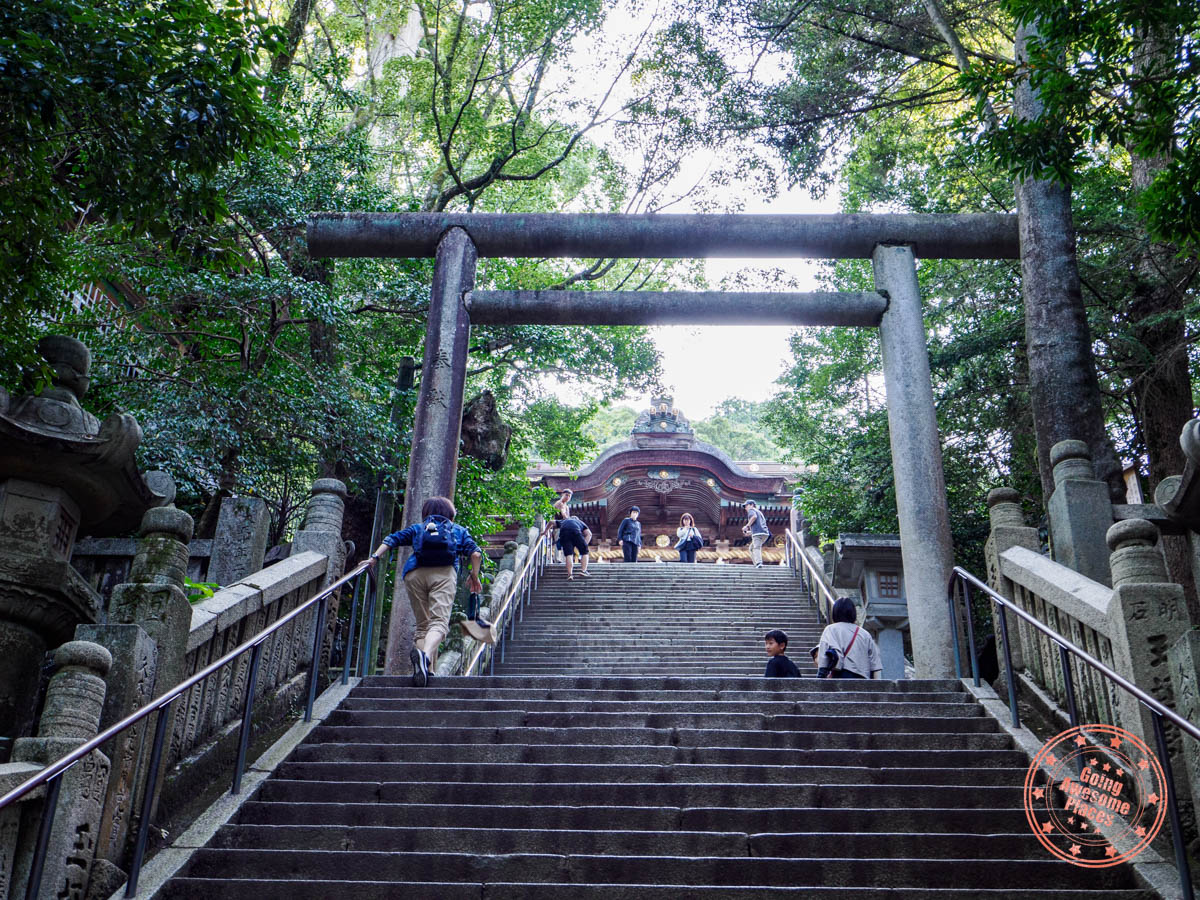
Start your day in Ehime Prefecture and end off in your final prefecture within Shikoku – Kagawa. Your main goal for today is to not only visit a legendary Shinto shrine but to also get some good cardio in.
See where mochi meets mikan

As you drive along the northern coast, drop by the confectionary shop, Seikodo located in Imabari . They have a long and storied history but their recent claim to fame is their mochi-wrapped mikan or their full Japanese name, ichifuku hyakka marugoto mikan daifuku .
When it first came out, it was laughed off as something that would never work but they proved their naysayers wrong and are now a hit all across Japan.
What makes it so delicious is its blend of substantial chewy and melty outer layer with a bite-sized mikan that’s sweet and tart at the same time , clean of pith and seedless. Since they come frozen, if you defrosted it, but not fully, you get another layer of textures to it that work quite nicely.
In addition to the mochi mikan, they have a traditional red bean with hints of shiso encased in a boat-shaped crisp and fruit-flavored mochi popsicles that will blow your mind .
Climb all 785 steps to get to Kotohira Shrine’s main hall
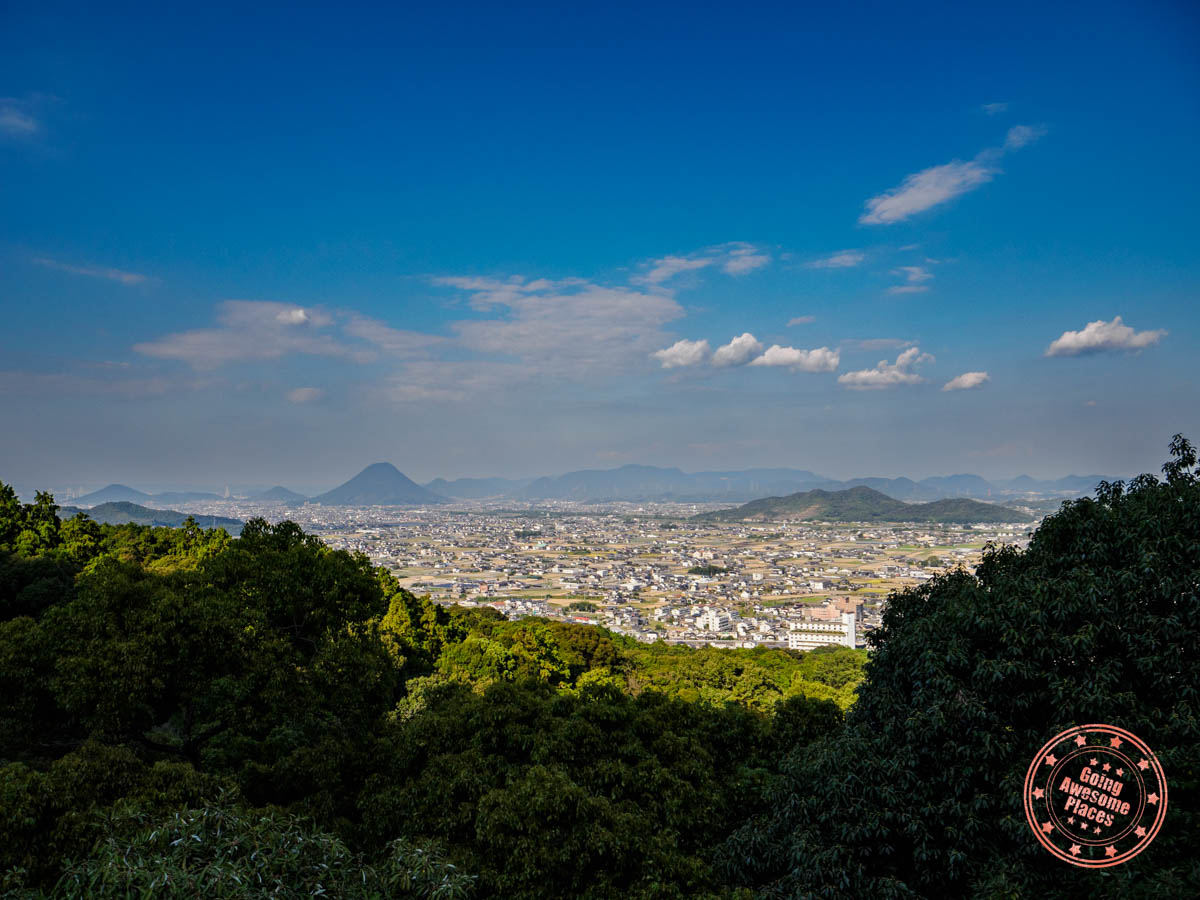
Halfway to the top Mount Zozu stands a shrine that pilgrims have visited since ancient times to worship “the God of the Sea”. There’s one catch though, its main hall is up a long staircase of 785 steps that isn’t necessarily hard, but you just might break a sweat.
Kotohira-gu or Kotohira Shrine is commonly known as Kompira-san since it is the head shrine of multiple Kompira shrines all over Japan dedicated to the safe navigation for sailors. Over the centuries it’s flip-flopped between being Buddhist and Shinto until being declared a Shinto shrine in the Meiji period. This explains why there are elements of both religions visible.
The steps start from the base of the mountain in the town of Kotohira. Before you get to the main gate, your path is flanked with everything from udon restaurants, souvenir shops, teahouses, confectionary shops, and cafes.
At step 365, you’ll enter the shrine grounds . While it sounds daunting, the climb up is a mix of gradual walks uphill and pure stair climbing. Along the way are there are several auxiliary shrine buildings, religious elements, and even a stable for special white horses known as shinme .
When you hit 785 steps, you’ll make it to the main hall , a significant achievement for most that come here. In addition to a beautiful view of the plains below, visit Ema Hall, make a wish, get your fortune, and purchase a Yellow Charm of Happiness.
For those that are interested, you can do the full 1,368 steps along a forested path to make it to the small inner shrine ( Okusha ).
- Shrine grounds – Open every day and all hours.
- Main shrine prayer shop – (Apr – Sept) 6AM to 6PM, (Oct – Mar) 6AM – 5PM
- Duration – The walk up to the main shine takes on average 45 minutes but if you factor the walk through the main street prior to the steps, expect to spend 3 hours here.
Price: There is no admission required to enter.

Parking: There aren’t any official parking lots for the shrine. Instead, there are a mix of public and private lots. While it might be tempting to drive around to look for the cheapest lot, it’s not worth it as the traffic and complicated local streets will only frustrate you. Park closest to the entrance to the main street.
Interestingly, some of the closest lots are associated to souvenir shops. The rate is ¥500 but the kicker is that it’s free if you make a ¥1,500 purchase from their store.
Since they cram in a ton of cars in one lot, they’ll need to take your car keys so they can move car.
Booking: There’s no need to book anything since the shrine is free.
Website: Kotohira-gu Shrine
- Is Kompira-san the same as Kotohira-gu? Yes, they refer to the same shrine. Kompira-san is the alternative name to Kotohira-gu. The English name is Kotohira Shrine.
- How many steps are there to get to the main hall? There are 785 total steps to climb to get to the main hall.
- Is it worth going to the inner shrine? If you can muster the extra 583 steps, for a total of 1,368, to get to the top, the red-painted inner shrine isn’t necessarily large but a meditative place of spirituality and peacefulness. Being higher, it also offers a more elevated view of the Sanuki plain.
- Do you need to go to the inner shrine? This depends on if you have the interest and energy but we’ll say that the majority of visitors to Kotohira-gu only go to the main hall.
- Are there bathroom facilities along the way up and in the shrine area itself? There are 4 restrooms spread out throughout the shrine including a baby changing area where the main shrine is located. Prior to the shrine, we did not notice any bathrooms.
- Do the 785 steps include the shopping arcade leading up to the entrance to the shrine? Yes, the stone steps start counting once you start climbing any steps from the main thoroughfare upwards. In fact, by the time you get to the main gate of Kotohira Shrine, you would have done 365 steps already.
- Are there porters that can take you up? There used to be a porter service where you could be taken up in a palanquin but this has been discontinued since the early 2010s.
- What souvenir should you buy in Kotohira? To commemorate your visit to Kotohira-gu, the best souvenir is the Yellow Charm of Happiness. This is a golden protector that prays for health and happiness. The individual amulet is ¥1,000 and the package including a mini Konpira dog is ¥1,500.

- There are traditional bamboo walking sticks for rent near the base of the steps. These are self-serve honor system stalls and costs ¥100 per stick.
- When you reach the main hall don’t miss Ema Hall. Located next door, you’ll see the mini sub, Malt’s Mermaid amongst displays of plates, and pictures of ships, battleships and space rockets.
- Horses are important part of your visit to Konpira-san. Mid-way through the shrine, you’ll find a small stable with special horses known as shinme . These are offerings to the gods in Shintoism as these are meant for the gods to ride. Throughout the day, the horses are brought out for a walk, doing circles in front of the giant golden propeller.
- A quality map of the shrine grounds is impossible to find online so below we’re attaching a photo of the map they have on-site which indicates not only the path but also the number of steps you would have taken at specific junction points, and location of restrooms.
Treat yourself after all of those steps

After you climb all of those stone steps, treat yourself with soft-serve ice cream topped with oiri , a local sweet traditionally given out as gifts when couples marry.
An easy-to-miss spot on the main street is a free foot onsen that’s free for everyone to use, the perfect remedy for tired feet.
Your final stretch of driving is ahead of you. In 45 minutes, you’ll reach the city of Takamatsu . Return your car and pay the money owed for tolls (more on that in the car rental section ). Take the local Kotoden train to your hotel and get yourself checked in.
Eat the extremely rare olive wagyu

Olive wagyu is a type of steak that not many people get to have because they’re made in such micro-batches that many would say this is one of the rarest types of wagyu (Japanese beef).
It comes from an inspiring story on the island of Shodoshima nearby where through much experimentation, it was discovered that cows fed a diet of toasted olives resulted in beef with marble, rich, and nutty umami flavor . In addition, it has the highest levels of healthy fats, at 65.2% oleic acid content.
I learned about olive wagyu through Adam Waxman of Dine Magazine but as I dug into where I could have it in Takamatsu, I quickly realized I was out of my depths as there isn’t exactly an online guide for the best olive wagyu restaurants in the city. Again, with the help of Shikoku Tours , they helped me with a reservation at the steakhouse, Ichigo .
In my own private room, I had the most divine steak I’ve ever had. Ordering a set meal for 150 grams of the lamp cut of olive wagyu, I cooked the beef to my liking on a hot stone. Every bite was magic, with texture where its marbling was soft and delicate but layered with a meat that was bold and nutty.
This certainly isn’t a cheap dinner but considering how hard it is to find olive wagyu not only globally, but even within Japan, it is totally worth it.
Day 9 Summary
- Kotohira Shrine
- Kotohira Foot Onsen
- Breakfast – Konbini Breakfast – Again, with no breakfast at the hotel, your best bet is to buy your own food from a convenient store.
- Lunch – Snacks in Kotohira – There aren’t any specific restaurants to plan for as your schedule will be pretty fluid based on how long you take climbing Kotohira-gu so it might be best to snack on your own food and other goodies you find along the way.
- Dinner – Ichigo – You’d think that olive-fed wagyu is easy to find in Takamatsu given that they are from the nearby island of Shodoshima but it’s not that obvious where to go, especially for foreigners. Ichigo claims to be the first restaurant on Shikoku specializing in olive wagyu so I was sold. When reserving, make sure to instruct them to order a set course as well because you can’t do that on the day of. If you don’t, you’ll have to order off of their a-la-carte menu which still includes corn soup, salad and rice. Since they add a 20% service charge, expect to spend a pretty-penny here. My meal including a pint of beer cost ¥7,720.
- Hotel Wing International Takamatsu ( Agoda / Booking ) – A modern business hotel that opened in 2021 outfitted with a comfortable bed and is strategically located in a part of Takamatsu with tons of restaurants.
- Pack a small towel if you plan on using the foot onsen.
- Initially, I wanted to make a reservation for the restaurant at Royal Park Hotel Takamatsu but they wouldn’t take reservations for 1 person.
- The local Kotoden trains in Takamasu are very easy to take and accept all IC cards including Suica, PASMO, and Kitaca.
- If there’s one regret, it’s that I didn’t get to fit in Ritsurin Garden which is highly spoken of. This is something that you might want to try to fit in.
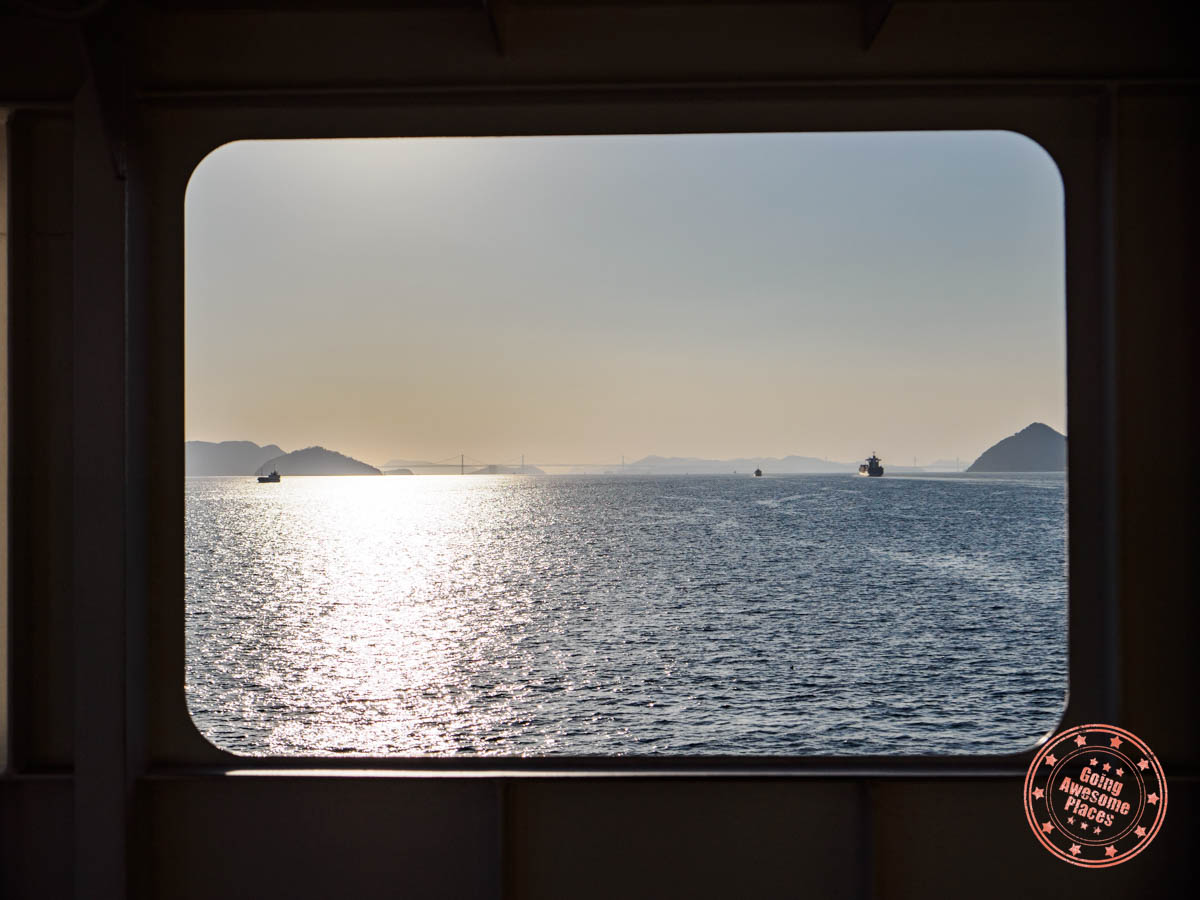
Now you could simply end your trip here but you’d be missing all of the amazing islands in the Seto Inland Sea. The one that has received international recognition is the art island of Naoshima and is one that you should definitely visit if you’ve made it this far.
Kagawa prefecture used to be called Sanuki which is why you’ll see that term used in various places including their udon. In fact, Sanuki udon is ranked among Japan’s top 3 famous udon noodles .
For brunch, head over to Sanuki Goyashiki where you’ll be able to taste what makes udon here special – chewy and firm texture with square shape and flat edges.
Take the ferry to Naoshima Island
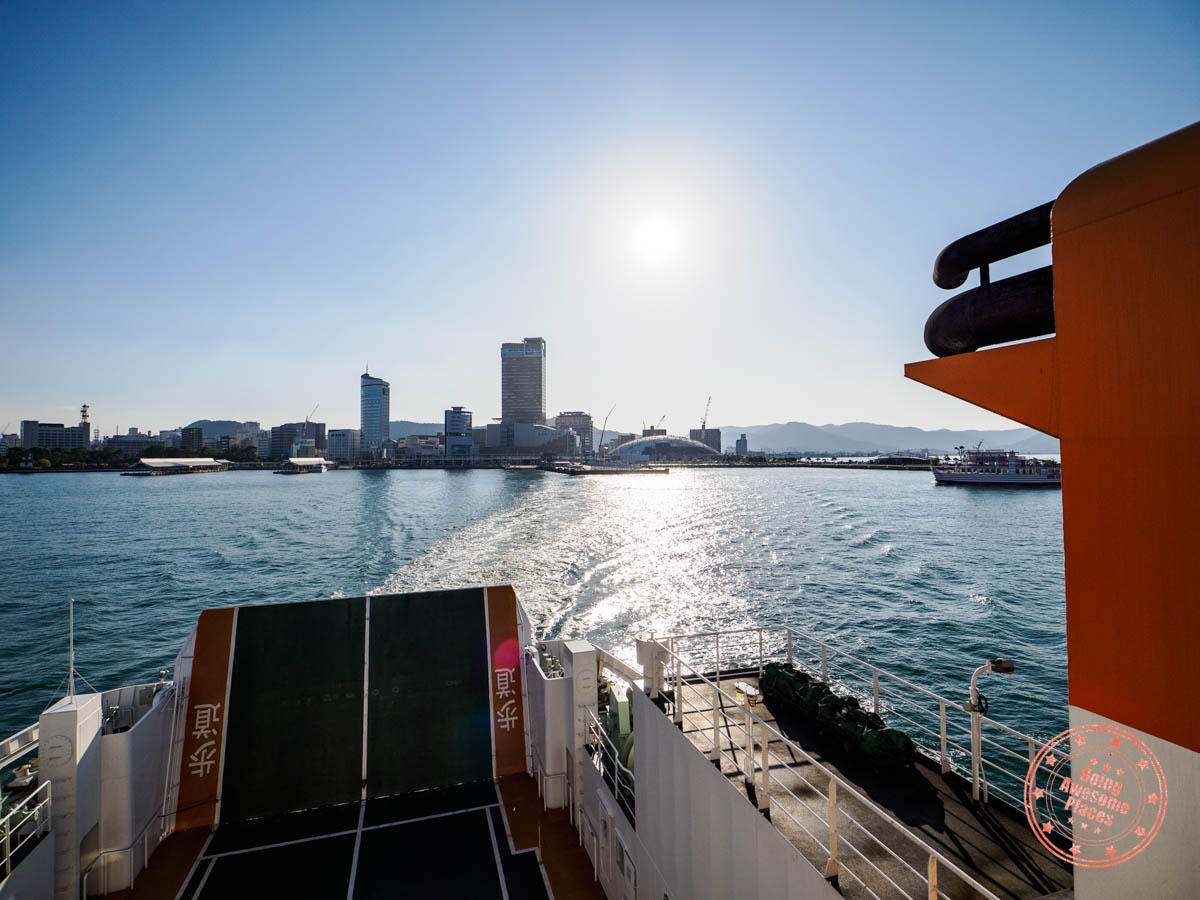
The restaurant is located right at Sunport Takamatsu , a revitalized business and shopping area near JR Takamatsu. This is also within striking distance of Takamatsu Port , the original entry point into Shikoku by ferry and your best connection to the Seto Inland Sea Islands.
Whether you soak in the warmth of the sun from the upper deck or enjoy the comforts of the main deck inside, you’ll make it to in just 50 minutes. One thing you’ll remark when you arrive is 1) Takamatsu stays in sight the whole time so you’re really not that far away and 2) The Red Pumpkin is literally the first thing you see when you arrive.
Here are some details for taking the ferry from Takamatsu to Naoshima. Since most visitors will be taking the standard ferry, we’ll be focusing on this but we’ll also mention a few details about the high speed ferry.

Location: The ferry terminal for Naoshima is the one that is labelled with a large number 1 and 2. It also has signage that says in English that it is for ferries going to Shodoshima and Naoshima. Note that this is for the standard ferry. The high speed ferry is at an adjacent pier and has a separate ticket office as well. Check the board pier page.
- Timetable – For the most up-to-date schedule, visit the Shikoku Kisen timetable page. For the Takamatsu – Naoshima (Miyanoura) route, they standard ferry runs 5 times a day and the high speed boat, 3 times a day.
- Duration – Standard ferry is 50 minutes and high speed boat is 30 minutes.
- Standard Ferry – ¥520 for adults and ¥260 for children (6-12)
- High Speed Boat – ¥1,220 for adults, and ¥610 for children (6-12)
- One child (1-5) per adult is free
- Tickets only get sold 40 minutes before departure. You can’t purchase tickets in advance.
- Only cash is accepted.
- You can either buy a ticket from the vending machine or the attendant at the booth.
- Tickets only get sold 30 minutes before departure.
- If you are taking the last boat of the day (8:30PM), those tickets are sold on the boat.
Booking: You can’t book ferry tickets online in advance and you can’t buy them in person in advance either. You can only purchase ferry tickets 40 minutes from departure.
Website: Shikoku Kisen
- What is the difference between the three Naoshima ports? The island of Naoshima has Miyanoura, Honmura and Seto ports. Don’t worry about Seto Port as this services the industrial part of the island. If you’re coming from Takamatsu, Miyanoura is the only port you can access. When leaving, you’ll have the choice of Miyanoura and Honmura ports. Miyanoura is on the western side of the island and Honmura is on the eastern side of the island. Miyanoura Port has significantly more frequency but ultimately choose the one that is the most convenient, is close to your hotel, and has the best departure timing.
- What amenities are available on the standard ferry? On the standard ferry, there are bathrooms, drink vending machines, select electrical outlets, and elevator.
- Is there a cafe on the ferry? No, there isn’t a cafe on board.
- Is the high speed boat worth it? If you’re willing to pay the extra cost (more than double the cost of the standard ferry), can take advantage of the 20 minute time savings, and fits your schedule, it might be worth it.
- Is there a luggage storage area? No, there’s no special compartment for larger suitcases and bags. The expectation on the ferry is to keep it with you.
- When does boarding start? Boarding starts 10 minute prior to departure.
- Does it make sense to take a rental car to Naoshima? While this is a car ferry, there’s really no advantage to having a car on the island as it’s quite small and the bus, shuttle, and bikes are very efficient transit options. If you brought one, it’d most likely sit in your accommodation’s parking lot.

- Unlike the Greek ferries , you have to take your luggage up to the passenger decks. There is an elevator but it’s only on one side of the ship and if you happen to board on the wrong side, you’ll miss it completely.
- If you would like to use the elevator, board on the left side of the ferry.
- Since there are only drink vending machines, bring your own food to eat on board.
- The best seats on the ferry are the ones that face the window on the right side of the main indoor deck.
- There are electrical outlets but they weren’t designed for passengers. You’ll find them on the sides of the ship but use-able in a pinch.
- The top deck is a great place to sit on your ferry ride. Just keep in mind that it doesn’t have any cover so it’ll be very sunny and can get get windy as well.
- There are lockers at the Takamatsu ferry terminal for Naoshima. It has 27 in total, of which 2 are oversized (¥800), and 4 are large (¥700).
After you disembark, you’ll be tempted to take photos of Yayoi Kusama’s Red Pumpkin like I was, but I think the smarter move is to head straight to your hotel, so you’re not trying to keep your luggage in sight while taking selfies.
The walk to Sparky’s House is slightly uphill but you’ll be on the side of the paved road so it’s not too bad. Get checked in and grab your e-bike rental. You’ll immediately feel a new jolt of energy (pun intended) as having a bicycle is quite liberating on an island such as Naoshima.
Watch the sunset at Miyanoura Port

Ride back down to Miyanoura Port and enjoy the backdrop of the sunset reflecting on the calm waters and shimmering off of the Red Pumpkin .
Under the night sky, you’ll notice the illumination of Naoshima Pavilion and Bunraku Puppet sculptures so ride around to them to snap a few photos.
For dinner, hopefully you’ve made reservations ahead of time through Sparky’s House but if not, you’ll have to bike around to the recommended restaurants. In my case, every single one was packed except for Cin.na.mon . Stepping in there, they initially said no since it was quite full but I noticed an empty table. I told them it was only for 1 person and they eventually said OK.
Day 10 Summary
- Red Pumpkin
- Naoshima Pavilion
- Bunraku Puppet
- Breakfast – Konbini Breakfast – Since we didn’t pay extra for the breakfast at the Hotel Wing International Takamatsu, we got our usual favorites at the nearby 7-Eleven which includes onigiri , bread, and yogurt.
- Lunch – Sanuki Goyashiki – Takamatsu is in the Kagawa Prefecture and they’re famous for their Sanuki udon which is characterized by its square shape, flat edges, and chewy texture. Come to this restaurant near the ferry pier for your chance to try it.
- Dinner – Cin.na.mon – Every restaurant seemed to be booked solid but this was one that had one table remaining when I dropped by. This is a Japanese restaurant that has excellent sashimi, fried chicken, curry, and craft beer from Naoshima Story.
- Sparky’s House ( Agoda / Booking ) – A relatively new property on the island that’s a combination of container-style accommodations and a house converted to separate rooms on the second floor. While small, the rooms are comfortable, new, clean, and have the benefit of a full kitchen on both the first and second floor of the house. They offer e-bike rentals (adults only) for ¥1,500 for one day, ¥2,000 for two days. They also offer luggage storage for ¥500 (maximum 4 items). All payments are cash-only.

- When you arrive at Miyanoura port, get inside the terminal building and look for the “Naoshima Area Map”. This map is actually quite useful as it has all of the updated ferry, bus, and shuttle times, in addition to a handy map with English descriptions of all art sites.
- The Red Pumpkin next the Miyanoura port gets very busy near ferry departures and arrivals. While it’ll be temping to take photos right when you get off, it’s a better idea to drop off your luggage at your accommodations first and then take the bicycle back down at sunset when it calms down.
- Since there are limited number of restaurants and a ton of visitors these days, you need to make reservations. If you don’t, you’ll find that most of the popular restaurants won’t take walk-ins. To book, reach out to your hotel to make a reservation. If you book with a platform like Booking.com , you can conveniently use their chat feature to ask them to help make reservations. Recommended restaurants in the Miyanoura area are in the photo above.
- On Naoshima, the 7-Eleven closes at 9PM so pick up your supplies early.
- We found free wifi throughout Naoshima under the SSID “KAGAWA-Wifi”. You can join up to 8 times a day and allows you to be connected for 30 minutes.
- If you had to choose, we believe Miyanoura is a better location to be based just because it’s closer to the ferry. This gives you more options because you can always walk to the port.
- Just an observation, but this is the first and only place on the itinerary that felt touristy. This is the most evident when trying to take photos of popular sculptures like the Red Pumpkin where you’ll need to be quite a bit more patient.
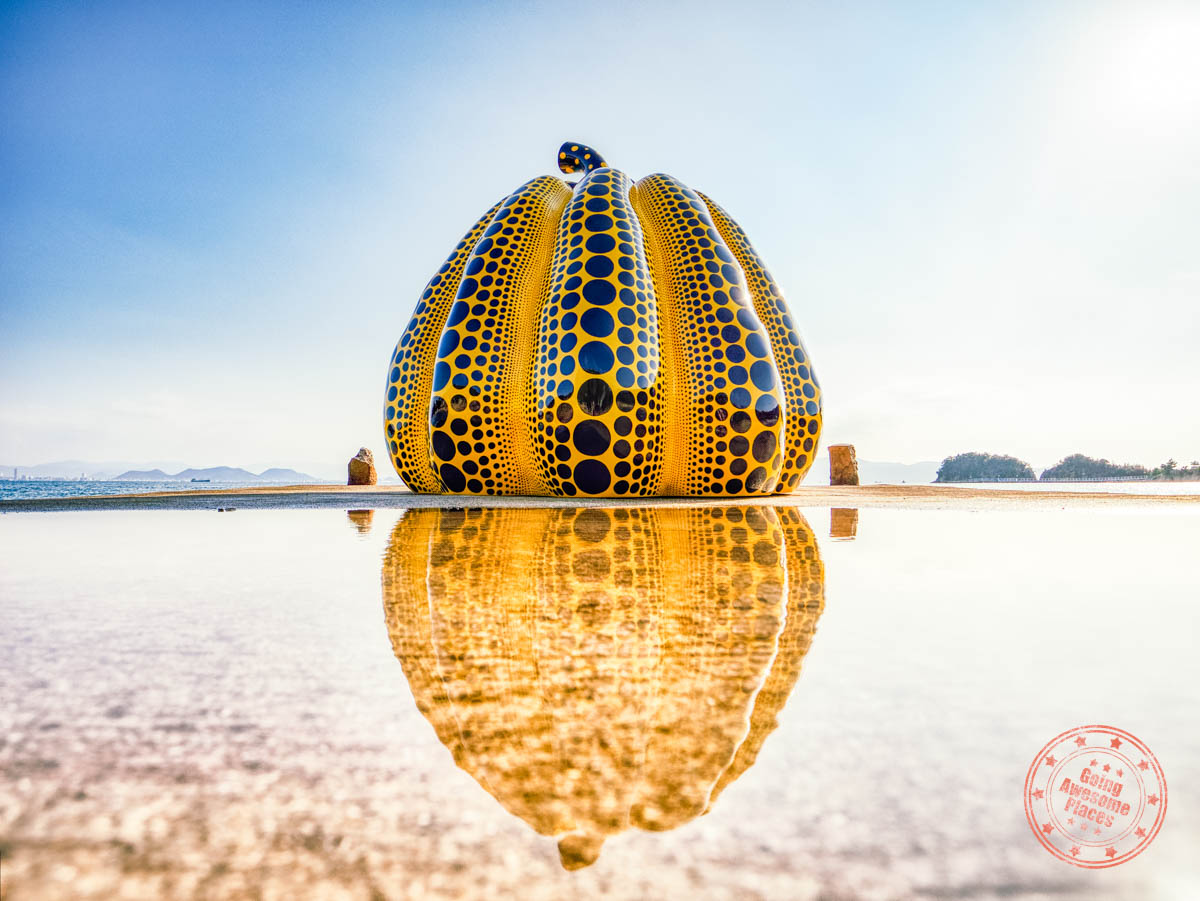
At only 8 square kilometers, Naoshima is home to some of the very best of contemporary art and architecture in the world, featuring the likes of Yayoi Kusama, Tadao Ando, Claude Monet, and James Turrell to name a few. Discover the artwork scattered throughout island. The only catch is that you have to leave the island at the end of the day so make the most of it.
Enjoy Miyanoura Port at sunrise
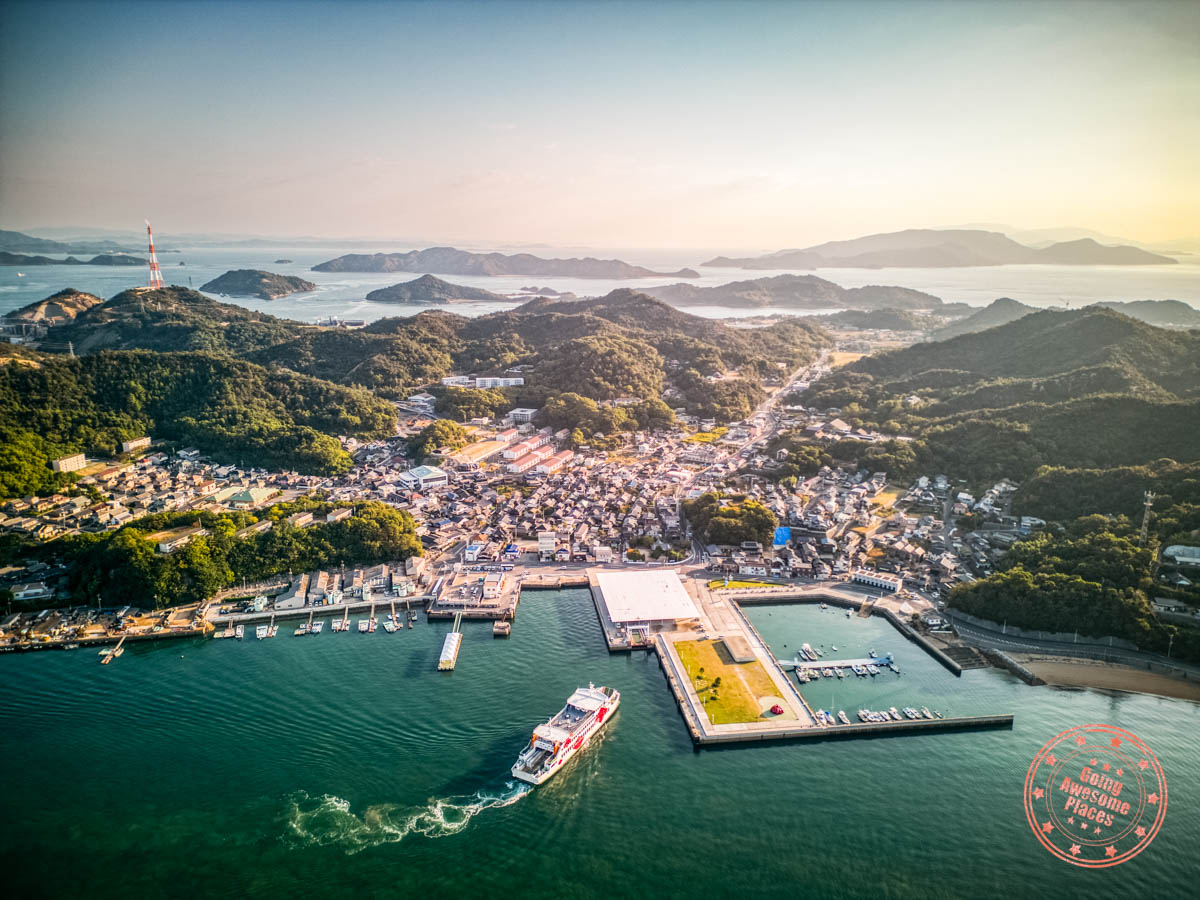
There’s something alluring about the pumpkin sculptures and not wanting to let any moment slip, I recommend that you head back to Miyanoura Port early in the morning so you can have the Red Pumpkin all to yourself .
Have an immersive art experience at Chichu Art Museum
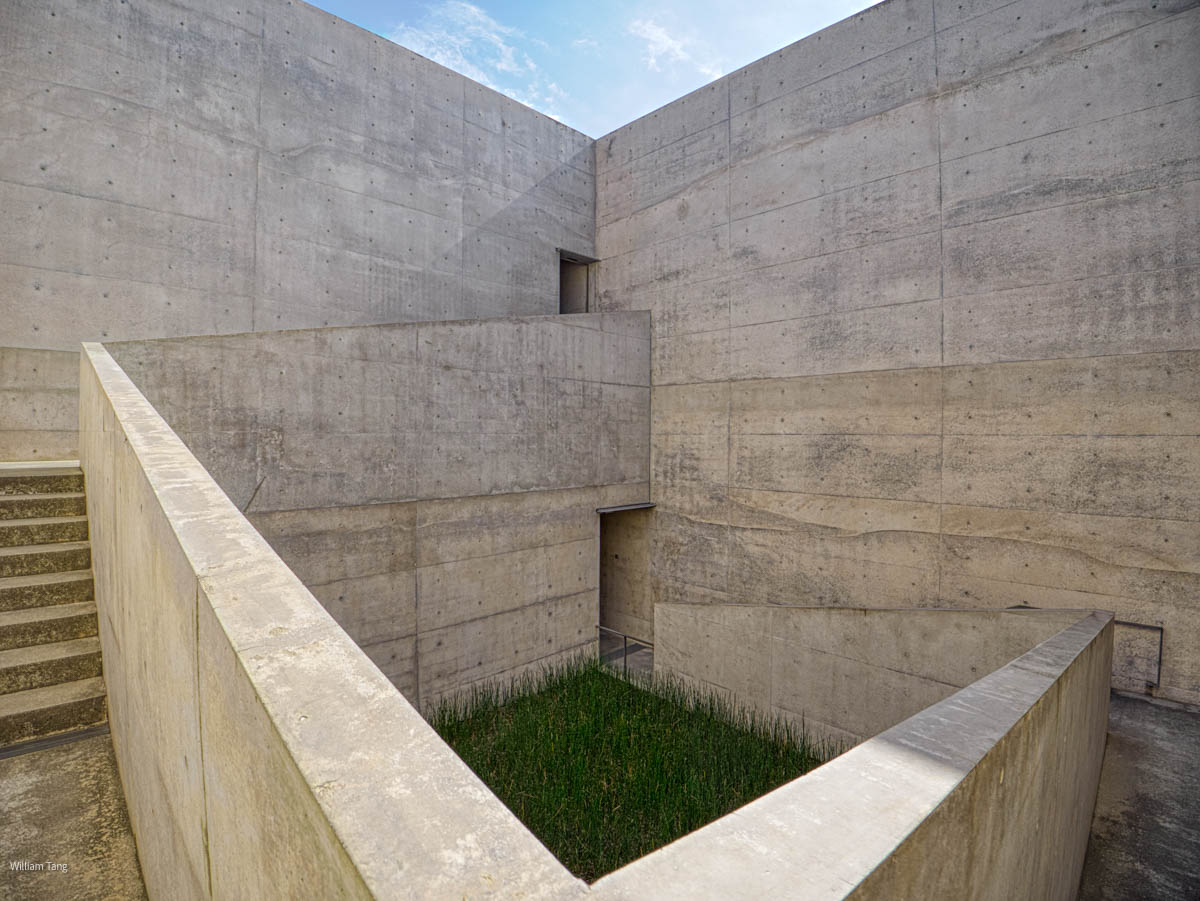
Welcome to the Chichu Art Museum . This architectural masterpiece seamlessly blends art and nature, offering a unique experience for everyone. Designed by Tadao Ando , the museum itself is a work of art, mostly built underground to harmonize with the island’s landscape. As you approach, you’ll be awed by the museum’s minimalist concrete exterior, which hides its many artistic treasures within.
Once inside, ditch your phone and camera (since they’re not allowed) and open your mind to a carefully curated collection of contemporary artworks . The museum focuses on the works of renowned artists, Claude Monet, Walter De Maria, and James Turrell.
Beyond the individual art pieces, this is more about the immersive space itself , blending in natural and artificial light, optical illusions, the delicate tiling of the floor, and thought-provoking sculptures.
This is easily my favourite museum on the island which is why you need to secure those tickets as soon as they are available online.

- For Golden Week, they open at 9AM
- October 1 – last day of February – 10AM – 5PM (last admittance at 4PM)
- Closed on Mondays (except it’s on a national holiday, in which it closes the following day).
- The Chichu Store hours align with the museum hours.
- They are also closed on maintenance days so make sure to check their calendar .
- Duration – You can see this movie in 1.5 hours.
Price: ¥2,100 for adults and free for children 15 and under. When booking online, only credit cards are accepted.
How to get here: There are two directions you can take to get to Chichu Art Museum. What’s important to know is that biking is forbidden from the stretch of road between Benesse House Area North Gate and East Gate. This is why it’s critical to understand how to get around .
- Counterclockwise by bike or foot – Logically this seems to be the obvious way on foot or bicycle. The town bus does not go this direction. If on bike, park at the Chichu Art Museum Ticket Center. Locals mentioned that this bike ride is slightly more challenging because it’s uphill. From Miyanoura Port, by bike is 15-25 minutes and on foot is 30 minutes.
- Clockwise by bike – The longer way would be to take the bicycle or Naoshima Town Bus all the way around to the Tsutsuji-so bus stop. Park your bike at the specialized lot and from here, wait for the free shuttle bus which will take you to Chichu Art Museum. This is what we did and found the route to be quite pleasant and passes through the town of Honmura which you can explore on your way back. From Miyanoura Port, by bike is 20 minutes + 7 minute shuttle.
- Clockwise by bus – For those that don’t have a bike, the Town Bus runs between Miyanoura Port and Tsutsuji-so. The fare is ¥100 for adults and ¥50 for children (coins only). Check the official timetable . From Miyanoura Port, the bus take 12 minutes.
- Shuttle – There is a simple free shuttle that runs between Tsutsuji-so and Chichu Art Museum (where bikes aren’t allowed). These are small mini buses with a capacity of 26. You can get on and off at any stop (except Hiroshi Sugimoto Gallery). Their timetable does their best to line up with the ferry schedule. Lastly, this shuttle doesn’t run on days when the Chichu Art Museum and Lee Ufan Museum are closed (Mondays). To get from one end to the other takes 7 minutes.
Arrival procedure: Once you arrive at Chichu Art Museum, if you have tickets already, head directly to the Chichu Art Museum main gate and not the ticket center. They will scan your digital tickets and hand you a see-through handbag. You’ll take the path will take you down the narrow passage to the Square Courtyard, and up into the souvenir shop. Once you’re pass this point, cameras are no longer allowed. The bag is meant to store your things and camera.
Museum rules:
- Online tickets are valid for 30 minutes from the reservation time, after which they are automatically cancelled.
- If you have large objects (suitcases, umbrellas, tripods, large backpacks), you will need to put them in the coin lockers at the museum or left at the ticket center.
- Use of cellphones is prohibited (although this is mainly around taking photos and being disruptive).
- Other than in the cafe, you can’t eat or drink in the museum.
Booking: You need to buy your tickets online in advance. These are timed tickets where you choose to enter at intervals of 15 minutes. Time slots for a month become available 2 months ahead of time. For example, the block of May tickets open up on Friday March 8th at 10AM JST (local time).
Website: Chichu Art Museum (as part of Benesse Art Site Naoshima)
- Are photos or videos allowed in Chichu Art Museum? No, photography and videography is strictly prohibited.
- How many seats are on the shuttle bus? These are mini buses and has a capacity of 26 people.
- Does the museum have audio guides? No, there are no audio guide devices available.
- Is there a limit to how much time you can spend in the museum? No, they only have specific entry time slots but you can stay for as long as you’d like.
- Are drones allowed? You can’t use drones anywhere in the Benesse Art Site area.
- Can you enter the Benesse Art Site by bike on the Chichu Art Museum side and exit from the Yellow Pumpkin side? This might seem like a logical counterclockwise route but if it simply doesn’t work if you have a bike because you can’t even walk with your bike inside museum grounds. The farthest you can take your bike is the North Gate Bicycle Parking Lot. Conversely, you can’t take your bicycle around the island clockwise either.
- Does Chichu Art Museum have wifi? Yes, they have free wifi under the SSID “chichuartmuseum”.
- The museum is quite minimal when it comes to signage and explanations and they don’t offer so we found it very handy to buy the Chichu Handbook (available in English) at the souvenir shop before heading in.
- The free shuttle bus fills up very quickly especially at the Tsutsuji-so stop. Resist the temptation to explore the beach especially when it’s close to departure of the bus.
- The Claude Monet Space and James Turrell’s Open Sky require you to take off your shoes. If you want to make things easier, wear shoes that you can easily take on and off.
- Cancellations are allowed 1 hour before reservation time using their cancellation form without penalty.
- If it fits in your schedule, check to see if the Open Sky Night Program is a possibility (only Fridays and Saturdays). Reservations open 3 months ahead of your desired date and allows you to go to James Turrell’s Open Sky installation at sunset.
- When walking to and from the museum, you’ll pass by the Chichu Garden. Notice how the trees and flowers here are very similar to the ones planted at Giverny that served as the location for Claude Monet’s Water Lilies .
Explore the wonders of Benesse Art Site
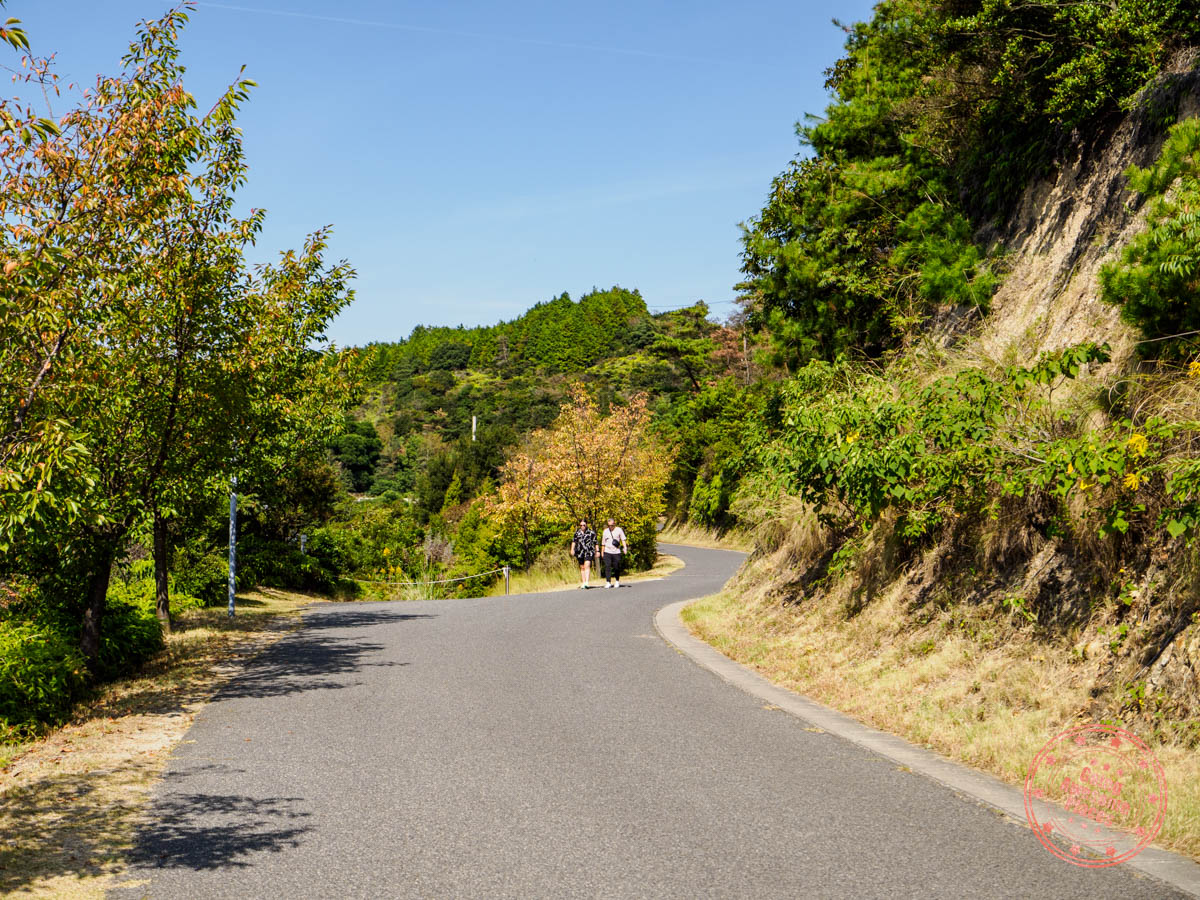
Intentionally designed for pedestrians (and their free shuttle bus), set out on foot and choose from the litany of outdoor art spaces, museums, and art pieces.
Depending on your interests, you can head inside Lee Ufan Museum . In our case, I couldn’t fit it in but I made sure to walk around their collection of outdoor sculptures.
Next is Valley Gallery which is under the same ticket as Benesse House Museum. Built along a valley that starts with small pond and narrows inwards, there’s an symbiosis between the work and surrounding nature. The most recognizable piece is Narcissus Garden by Yayoi Kusama which features large chrome balls. This is a much larger version of what we saw in the Crystal Bridges Museum of American Art in our Arkansas itinerary .
Lastly, there’s a Where’s Waldo of art pieces along the island’s southern coast so keep your eyes peeled!
Enjoy Benesse House Museum

The central hub and largest museum on the island is Benesse House Museum which was also designed by the legendary architect Tadao Ando. Inside is an impressive collection of contemporary art that seamlessly blends into the natural light and surroundings.
- Hours – 8AM – 9PM (last admittance at 8PM)
- Open year round
- Museum shop hours – 10AM – 5PM
- Duration – You can finish this museum in an hour.
Price: ¥1,300 for adults and free for children 15 and under. They accept cash or credit card. You can pay at the entrance to Valley Gallery where they have a small temporary tent set up. This ticket includes access to both Valley Gallery and Benesse House Museum.
How to get here: As an extension to Chichu Art Museum’s details, here are two possible places you could be coming from. Our recommendation is to catch the initial bus to Chichu Art Museum after parking your bike at Tsutsuji-so and then walk the rest of the way back as it’s a pleasant and easy walk, with opportunities to see plenty of outdoor works.
- Coming from Chichu Art Museum – If you came by bicycle you won’t be able to go any further. The rest is on foot to the museum or you can take the museum shuttle. The walk is 20 minutes and the bus takes 4 minutes.
- Coming from Tsutsuji-so – The walk from the bus station takes 20 minutes. By bus, this is 4 minutes.
Arrival procedure: Benesse House Museum operates more like your standard art museum. When you arrive, they’ll check your ticket and if you haven’t purchased one yet, you can buy one at the ticket desk.
- If you have large objects (suitcases, umbrellas, tripods, large backpacks), it isn’t clear if there are any lockers at the museum. That said, it may be possible to leave items behind with the museum hotel’s desk.
- Use of cellphones is prohibited (although this is mainly around being disruptive).
- Other than in the cafe, you can’t eat or drink in the museum (that includes candy and gum).
Booking: No booking is required and it is not possible to book ahead of time. Luckily, there isn’t any stress entering this museum as they don’t have capacity limits.
Website: Benesse House Museum (as part of Benesse Art Site Naoshima)
- Are photos and videos allowed at Benesse House Museum? Officially, photos, videos, and sketches aren’t allowed in the museum. That said, we didn’t know this when we entered as there aren’t visible signs for this rule and their FAQ has information that says photos of most artworks are allowed. We found local Japanese and visitors alike were freely taking photos in the museum.
- Does the museum have audio guides? No, there are no audio guides available.
- Are there water fountains in the museum? No, we did not see any but outside of the museum is a spout for tap water.
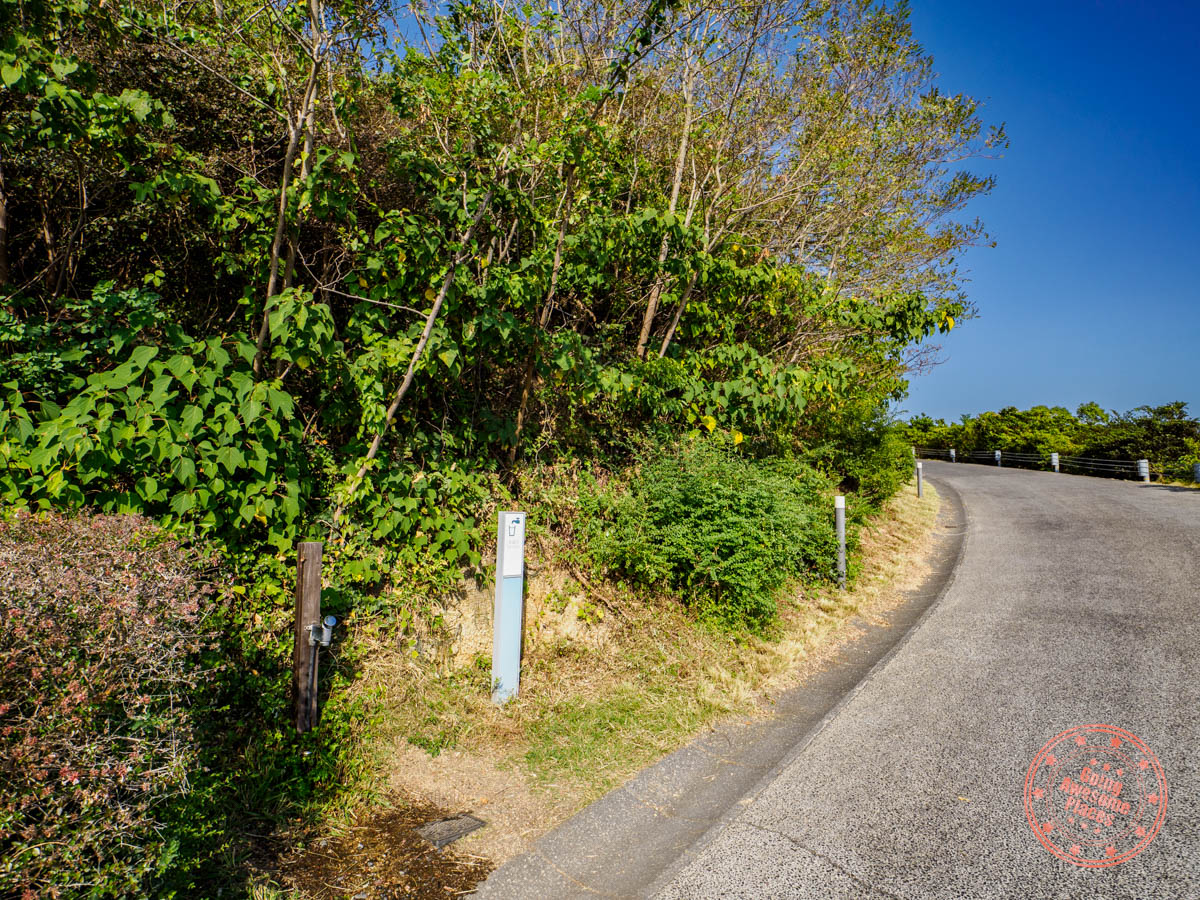
- Museum Restaurant Issen and Museum Cafe don’t take reservations and fill up quickly so expect to have to queue.
- If you’re an art enthusiast and would like to have a more extensive experience, Benesse House is also a hotel in 4 different buildings, each providing special perks. For instance, the only way to see the Oval is by being a guest there. If you stay in the adjoining rooms to Benesse House Museum, you can stay in the museum past standard hours until 11PM (instead of 8PM).
- There’s also a “Cultural Melting Bath” Bathing Experience Program which is only available to hotel guests on Sundays and requires reservation.
Make your way to the Yellow Pumpkin
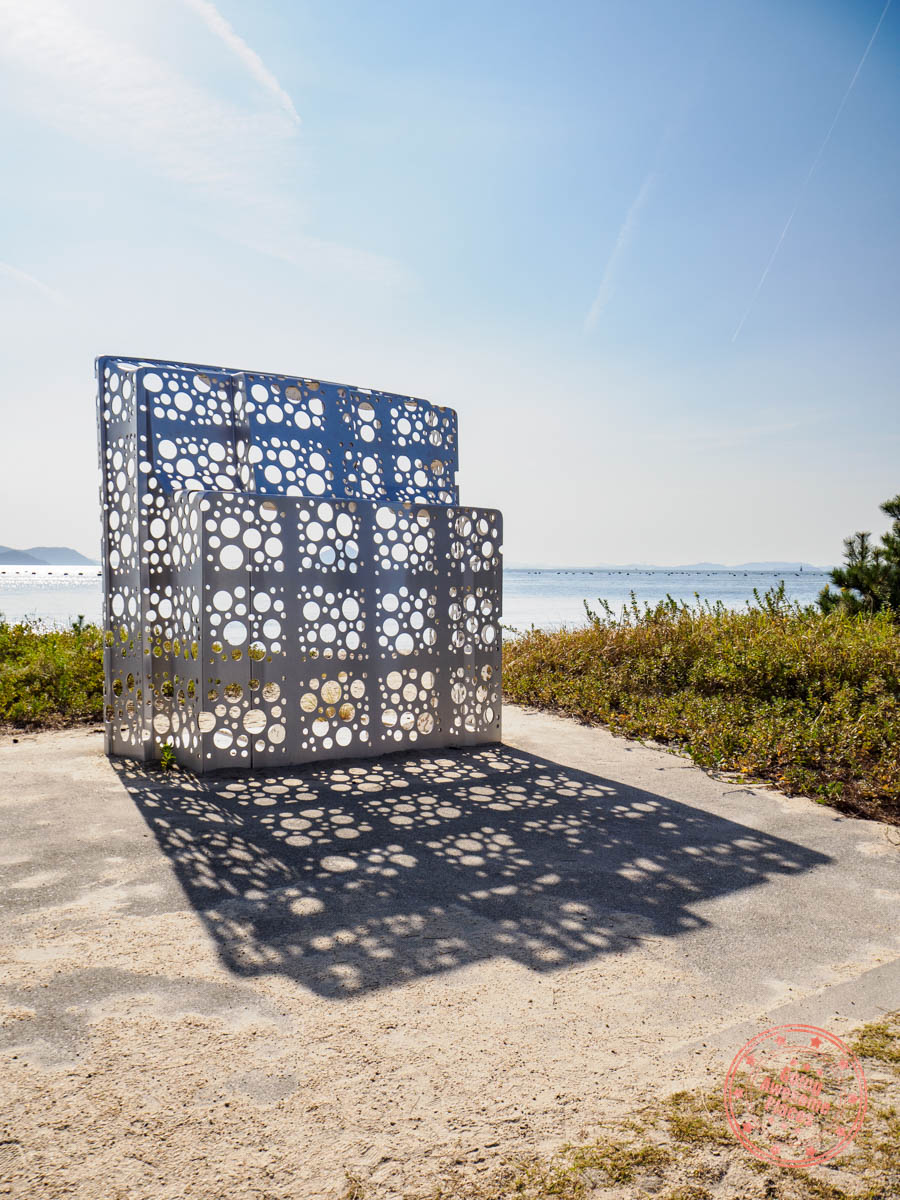
Being mindful of time, make sure you leave enough time to continue walking along the pedestrian path that hugs the coast, checking out the numerous Benesse House Museum Outdoor Works , and eventually arriving at the icon of Naoshima and Yayoi Kusama, the Yellow Pumpkin .
Sitting solemnly on an old pier is Kusama’s largest pumpkin to date and what separates it from the others that have ever been produced, this one was uniquely designed with its location in mind . The vibrant yellow stands out amongst the sea and coastal mountains.
“Art is an Endless Struggle, Art is Love, Art is Life” Yayoi Kusama
Make a quick stop in the town of Honmura

Grab your bike from where you parked it at Tsutsuji-so and ride to the town of Honmura which is along your way back.
Art is truly all around you on Naoshima . Even as you park your bike in Honmura, you enter a pavilion with a smattering of translucent spheres resembling a cumulonimbus cloud.
Take a break by grabbing a refreshing cup of gelato from Naoshima Gelato and if you skipped lunch like I did, One Stop is a nice pitstop as well for small bites.
Take the ferry to Uno
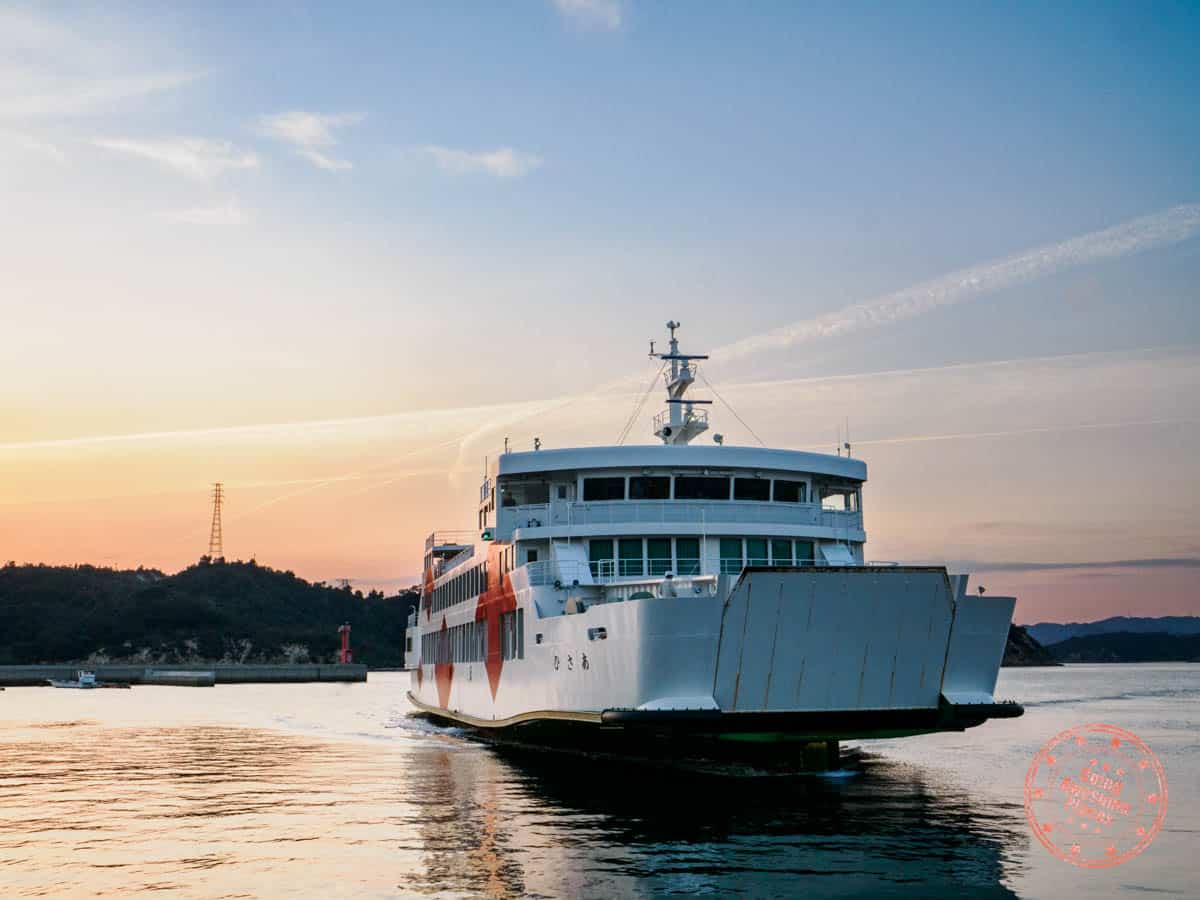
If your timing is right, you’ll be able to return your e-bike rental at Sparky’s House, get your stored luggage, have them drive you to the port, buy your ferry ticket, and be on your way to Uno.
The ferry ride from Naoshima to Uno is a swift 20 minutes. To get to Okayama Station, you’ll then need to take a JR train which is another hour into town. Luckily, it seems like the departure of the JR train is timed to the arrival of the ferry so you should be able to link them up nicely.
After you arrive in Okayama, it’s a short walk away to your hotel, Abest Grande Okayama .
There are plenty of restaurants nearby but for something hearty and quick, you can never go wrong with ramen at Nicoichi .
Day 11 Summary
What you’ll do:
- Chichu Art Museum
- Lee Ufan Museum
- Valley Gallery
- Benesse House Museum
- Yellow Pumpkin
- Honmura Town
- Breakfast – Kombini Breakfast – With an early morning back at Red Pumpkin, check-out, and needing to bike clockwise to Tsutsuji-so, it’s best to keep it simple and grab something from 7-Eleven the night before.
- Lunch – Kombini Lunch – With how crunched for time you’ll feel throughout the day, it’s best to save the time needed for a proper lunch and just eat food you pack with you.
- Snack – Naoshima Gelato – Perfect stop for a break to see the Naoshima Port Terminal bike-stand art piece. They have creative gelato flavors such as sweet potato milk gelato and roasted green tea milk gelato. They have various benches and tables available for their outdoor-only seating.
- Snack – One Stop – If you’re feeling hungry, this is cute small cafe with a patio deck that overlooks the main street running out of Honmura. Their menu is rather basic but they have a selection of drinks, waffles, sausage, noodles, and curry.
- Dinner – Nicoichi – You’ll be pretty exhausted after a long day so this is the perfect night for ramen. Found in the basement of a non-descript building where you’ll typically find a small line up of locals for this 10-seat restaurant that is known for their Hakata ramen .
- Hotel Abest Grande Okayama ( Agoda / Booking ) – This hotel was quite the gem to find on Agoda. While unusual in how challenging it was to find the elevator to take you up and how they also offer pod rooms, this was easily the largest room on the trip, they surprisingly also had their own onsen, and they had their own version of a happy hour with free drinks from 3PM to 9PM.

- If your accommodations doesn’t have a luggage storage option, the Miyanoura Port terminal area has quite a few lockers of varying sizes available. Prices range from ¥200-¥300.
- The ferry from Naoshima to Uno from Miyanoura Port is ¥300 for adults and ¥150 for children.
- While 1 day is certainly enough to see the key highlights and museums, there are plenty of galleries and museums that I missed. If you’re interested in seeing more, a second night is definitely recommended.
- The Uno JR Station isn’t directly connected to the port so follow the crowd of people heading there.

Your whirlwind trip in Shikoku is coming to a close and while technically you’re now on the main island of Honshu and Okayama prefecture, take this final day to continue the trend of awesome experiences and charming towns.
Customize your own Betty Smith jeans

Not knowing much about Okayama, I initially thought that this would be a short overnight stay before flying out but as I did more research, I learned about the region’s deep connection with denim and that’s what lead me to the discovery of Betty Smith’s jeans making experience .
Now buying Japanese jeans off the rack in Tokyo is boring but customizing jeans from the factory where the denim movement started in Japan is quite exciting.
Start your day by taking the train down to the town of Kojima, birthplace of Japanese denim, and take the cab to the venerable jeans company, Betty Smith .
Granted, the name of the experience is a bit misleading. You don’t make jeans from scratch but instead, you get to pick the button, rivets, and leather label to go on the high-end Betty Smith jeans. Once selected, you’ll be the one to drive in the selected buttons and rivets using a special tool. The skilled craftsman will do the rest.
The beauty of this is that you get to learn how the finishing touches to jeans are made, and you come away with your own custom pair to take home.

- December to February – Monday only 9:30AM – 5PM
- March to November – Daily 9AM – 6PM. On weekdays they take a 12PM – 1PM lunch break.
- Jeans making time slots – Normally at 10AM, 11AM, 1PM, 2PM, 3PM, and 4PM
- Duration – 1 hour
Price: The price depends on the jeans that you purchase. The jeans available for customization are their Omiyagi jeans (regular straight) which start at ¥8,800 and their DENIMWORKS line (slim straight, slim straight stretch, and button fly straight) and starts at ¥17,600. Interestingly, the price increases with waist size. We’ve attached a gallery of photos that show their pricing since you can’t find them anywhere online. Credit cards and IC cards accepted.
How to get here:
- Going there – The inconvenient part about Betty Smith is that it is not close to the JR station. Since Kojima doesn’t really have good public transit that runs that way, your only option is to get a taxi. The good news is that there’s a taxi stand at the station so you can easily catch one. This is a metered rate and cost us ¥1,300 for the 10 minute ride.
- Leaving – The coming back part will require you asking the Betty Smith staff to call a cab for you. Our rate to get to Kojima Jeans Street was ¥1,400 and another 10 minute ride.
- Note – Taxi’s here don’t take IC card or credit card so treat them as cash-only.
Booking: Reservations are recommended. Counter-intuitively, they are the busiest on weekdays because large school groups come in. To avoid disappointment, it’s best to book ahead of time. The easiest way to do this is through Klook but you can also book directly if you’re willing to navigate their Japanese booking engine. No payment is required to book.
Language: They don’t have English-speaking instructors. For us, Oshima-san had limited English but he was very patient and we used a combination of Google Translate and hand signals.
Website: Betty Smith Museum Jeans Making Experience (Japanese only)
- Is it possible to drop in? If it isn’t a busy day, you could drop in without a reservation. Similar to the Indigo Dyeing experience, they don’t seem to strictly follow the booking schedule. They just start when you show up and they’ll spend as much as time as you need to get the jeans done.
- Do they hem the jeans for me? Yes, the instructor will measure the length and hem the jeans for you on the spot.
- Do they have Hello Kitty patch or buttons? Klook mentions Betty Smith’s collaboration with Hello Kitty but when we went, we did not see any Hello Kitty patches or buttons. This may have been a limited-time collab.
- If I don’t want to make jeans, are there other hands-on experiences? If you’d rather make a pencil case, stationary bag, pouch or key chain, you can drop by to make these without reservations. They only take 10 minutes as the main step is the attaching of a few rivets.
- Is there a Betty Smith store? Yes, there is a full store in the campus and it’s located on the 1st floor of the head office building.
- Does the jeans making experience building have a change-room? Yes, there is a single change room at the back.
- Are there restrooms in the building? No, they don’t but there are restroom facilities in a building behind.
- Between the jeans making and museums, how much time should I expect to spend here? The experience is officially 1 hour but it might take longer. There are multiple museum buildings and depending on your interest, this could be 30 minutes or an hour. On average, we think you should budget 2 hours at Betty Smith.
- Do I get to sew in this experience? No, all of the sewing is done by the instructor.
- The location of the the experience isn’t super clear when you get there because they have so many different museums and buildings. The exact one is pinned on our Shikoku itinerary map .
- What I really struggled with was selecting the jeans. It helps to speed things up if you have a budget in mind or whether you want stretchy jean material or regular.
- If you can’t fit this in on your Shikoku itinerary, they also run this jean making experience in their Tokyo location in the neighborhood of Ebisu.
- After your jeans making experience, make sure to drop by their factory where there’s a clear view of an active sewing floor, Jeans Museum 1 (foreign denim production), and Jeans Museum 2 (domestic denim production). These are free.
Learn about the history of jeans

Before you leave, make sure to visit the two free museums they have on-site. Jeans Museum 1 focuses on international denim including its origin and etymology. In the larger Jeans Museum 2 , you’ll see how denim was brought to Japan and insight into the manufacturing process.
Stroll down the iconic Jeans Street

Next, take a taxi to Kojima Jeans Street which is lined with over 30 shops selling denim products. You most likely will not have heard of any of these brands but it’s fun to be able to pop into a few of them to see what the trends are and what makes Japanese denim special.
The walk back to the Kojima Station is 15 minutes. From there, you’ll take the JR train back up to Okayama and then transfer to another train that’ll bring you to Kurashikishi Station .
Enjoy an afternoon exploring Kurashiki Bikan Historic Quarter

As you walk from Kurashikishi Station to the Kurashiki Bikan Historic Quarter, you’ll see the gradual transition from modern buildings and shopping arcades to Edo-period architecture and picturesque canals.
Similar to Uchiko, this is another example of a well-preserved prosperous town that’s retained many of its traditional white-walled merchant houses. Spend your time strolling down the narrow-lined streets and popping into its shops, galleries, and cafes.

There is a ton to see here. Don’t miss the renowned Ohara Museum of Art , the first Western museum in Japan. Explore the historic Kurashiki Ivy Square , a former cotton mill transformed into a cultural complex. Take in the scenic beauty of the willow-lined canal with a traditional punting boat ride . For the curious, step into the quirky Kurashiki Piggy Bank Museum .
And when you’re hungry, there are plenty of well-known cafes and snack stands to try including pudding from Yuurin-an Cafe , award-winning croquettes from Kinsho Croquettes Kurashiki , and yummy warabimochi from Kamakura Kurashiki .
TIP: Most shops close unusually early at 5PM.
Eat dinner at Kappa Tonkatsu
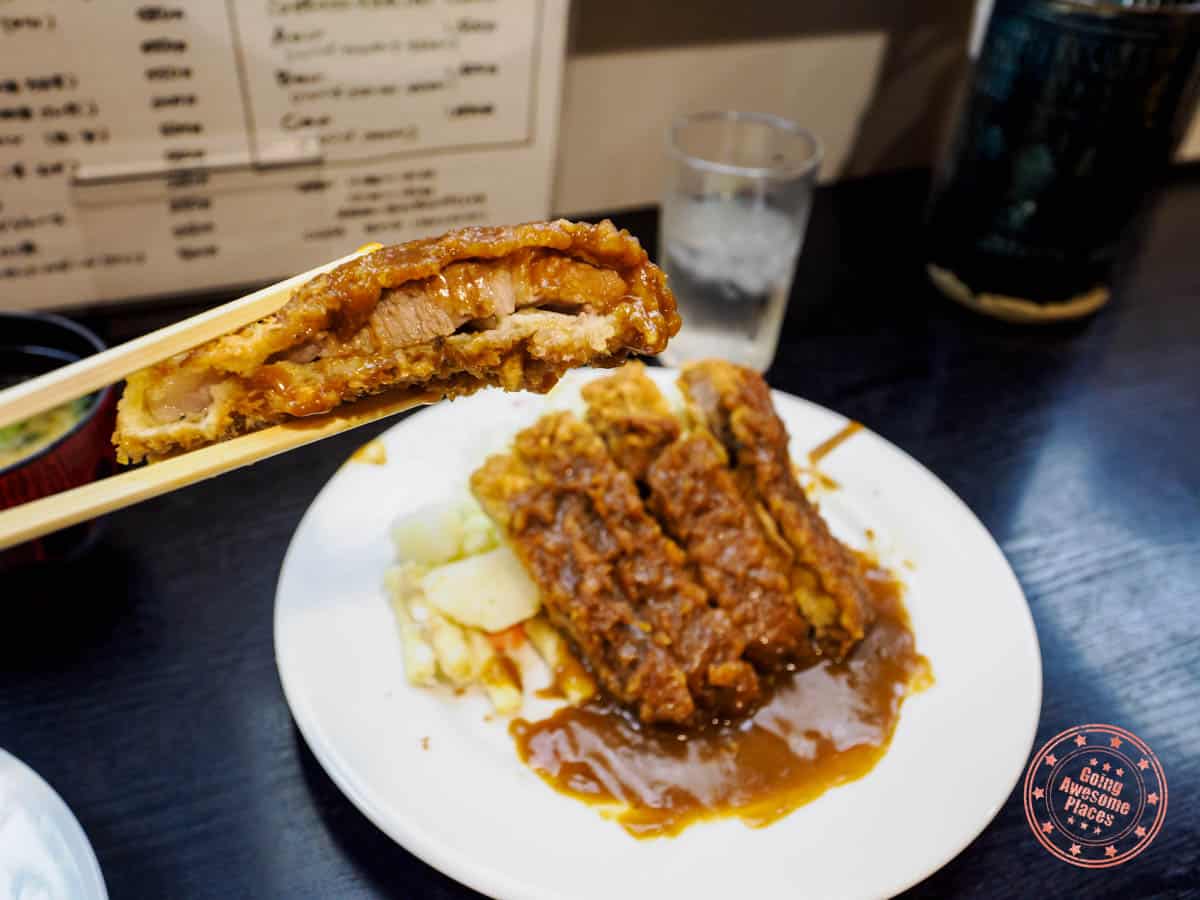
Before heading back to Okayama, you’d be remiss to not have dinner at Kappa Tonkatsu , a restaurant that specializes in crispy and tender cutlets of pork smothered in special demi-glace. It’s a easily one of the best tonkatsu I’ve had in Japan.
TIP: This restaurant is cash-only.
Before you head close off your 12th day on this Shikoku itinerary, here are a few things you need to know when you leave Okayama.
- While there is a taxi stand near the hotel, it’s safer to ask hotel reception to book a taxi. The 30 minute ride is metered and cost us ¥8,200.
- If you don’t have an early morning flight, there is a 30 minute bus from Okayama Station to the airport.
- Okayama Momotaro Airport (OKJ)’s hours are 6AM – 10PM. This means that they actually close their doors outside of these hours. If you have an early morning flight (i.e. 7:05AM), there’s no need to go to the airport before 6AM.
Day 12 Summary
- Betty Smith Jeans Making Experience
- Kojima Jeans Street
- Kurashiki Bikan Historical Quarter
- Canal Boat Ride
- Ohara Museum of Art
- Kurashiki Ivy Square
- Kurashiki Piggy Bank Museum
- Breakfast – Konbini Breakfast – It’s a packed final day so you’ll find it most efficient to grab some convenient store food the night before to have in your room.
- Snacks – Yuurin-an Cafe – This is a cafe that’s connected to their guesthouse. They’re best known for their Happy Pudding which is creamy and soft. If you’re looking for food their Tamago-kake Gohan which is rice topped with raw egg and a special soy sauce.
- Snacks – Yamau Coffee Stand – A no-nonsense coffee shop that specializes in espresso-based drinks. They also make a great tea soda.
- Snacks – Kinsho Croquettes Kurashiki – Small stall in the Bikan quarter that sells award-winning croquettes.
- Snacks – Kamakura Kurashiki – Delicious and freshly-made warabimochi.
- Dinner – Kappa Tonkatsu – One of two amazing tonkatsu restaurants in Kurashiki. The tonkatsu is crispy and the katsu sauce with the perfect amount of umami. Uniquely, this restaurant is run primarily by women. They are cash only. The alternative restaurant is Misokatsu Umenoki , which does a baked version of tonkatsu.
- Hotel Abest Grande Okayama ( Agoda / Booking ) – Their check-in staff is great and it was this lady that helped me sort out book the early morning cab to the Okayama Momotaro Airport.
- The name Kurashiki can get a bit confusing. On its own, Kurashiki refers to an entire district of Okayama Prefecture and this includes both Kojima and the Kurashiki Bikan Historic Quarter. However, the commercial center of the district is commonly called Kurashiki as well. Typically when someone says Kurashiki, they are referring to Bikan and surrounding area.
To help with your Shikoku trip planning, this map will be instrumental in identifying all of the locations mentioned on this itinerary and also some nitty gritty details like parking locations.
Japan, more than anywhere else in the world, we’ve found it important to have places pre-pinned on a map because some places just don’t show up when you search their English name.
HOW TO USE THE MAP: You can use the Shikoku itinerary map as is but if you’d like to do more with it, expand the map and create a copy in your logged-in Google account. With this copy, you’ll be able to access it in your Google Maps app under the Saved tab. Scroll to the bottom and look for the “Maps” button. Keep in mind that you need data to access this map. For an offline solution, use the offline Google Maps feature and individually save location pins on your primary map.
Renting A Car in Shikoku

This region is all about the blending of the sea, mountains, valleys, and islands with art, spirituality, history, and culinary. While some can be found in the cities, most of it’s gems are nestled in areas that require a car.
We think that the best way to see Shikoku is with a rental car but it might not be for everyone. Let’s breakdown the reasons for and against so you can make the best decision. For those that end up deciding on renting a car, we also list out what we learned from our experience.
- Can get you anywhere – Public transit including trains don’t have the best coverage around the island of Shikoku, especially when you talk about places such as Iya Valley and Nakatsu Gorge.
- Save time – Technically, you can visit everywhere with buses and trains but the coordination effort would be high and wasted time would be enormous.
- It’s cheaper than you think – Everyone thinks Japan is expensive but car rentals prices are very reasonable. 9 days cost ¥65,230 which comes out to $440 USD or $48.89 per day.
- Plenty of parking – You won’t encounter any situation where you can’t find parking
- Driving is easy – Sure, there are some trickier roads through the valley but overall, it’s just not a very busy place and so there’s barely any traffic and Japanese drivers are so courteous.
- Some challenging driving – The drive through Iya Valley and Nakatsu Gorge aren’t dangerous but there are sections of it that narrow down to one car-width. This may dissuade those that are not confident drivers.
- Left side – In Japan, you drive on the left side of the road. If you’ve never done it before, it’ll take a few days to get used to. Again, this shouldn’t hold you back but something to note for anyone that gets anxious easily.
- You have a guide – If you end up booking a tour or are able to connect various excursions together, it might not be necessary to get a car.
- Tiring – The biggest drawback of driving is that there are quite a few long stretches required on this itinerary (i.e. Kochi to Shimanto and Nakatso Gorge to Matsuyama). It’s definitely easier to have someone to do the driving for you so you can nap along the way.
- Budget travel – If you’re looking to squeeze the most out of your budget, you could combine the Shikoku Rail Pass ( buy here ) where it’s ¥20,000 for 7 days plus the cost of local buses.
- IDP – You need an International Driver’s Permit (IDP) to rent cars in Japan. Make sure you get one from your home country before you come here. In Canada, that means dropping by a CAA and in the United States, AAA .
- ETC – When renting a car, you’ll have an option to rent an ETC card with your vehicle. This is an IC card that’ll allow you to use the ETC (Electronic Toll Collection) lane on expressways that have tolls. This allows you to drive right through the gate without stopping. For this Shikoku itinerary, there are tolled highways in and out of the main cities. If you don’t want to deal with the stress of trying to avoid them, paying cash at toll gates, you should just pay it. ETC card rental is only ¥300.
- No ETC Passes – Shikoku doesn’t have any tourist-friendly, multi-day ETC passes (available in Sapporo) so no need to ask. This means that you’ll be paying each toll a-la-carte.
- Slow check-in – The car rental check-in process is very slow. For Times Car Rental, I had to fill out a new set of forms with my personal information, list of all hotels and their phone numbers (it’s fine if you don’t have them). After all was said and done, it took 45 minutes from arrival to driving off the lot. Luckily returning a car is much faster.
- No English – Don’t expect any of the car rental agents to speak English. Have your Google Translate app ready.
- Alternative booking sites – Booking through third-party platforms is perfectly safe and reliable. In fact, you can often find discounted rates through something like Klook . That said, we did not find any results for one-way rentals in Shikoku. Similarly, we tested RentalCars and DiscoverCars and while they have round-trip rentals, the could not display one-way results in Shikoku.
- One-way fee – If you do a one-way rental (i.e. Tokushima to Takamatsu), some companies charge a fee. In Times Car Rental’s case, it cost ¥6,000.
- Toll charges – When you return the car, they will be able to immediately pull the toll charges from the account. You’ll pay for these extra charges on your way out. For this particular 12-day Shikoku itinerary, I paid ¥9,690 in tolls.
- Insurance – They will offer insurance and it will be up to you whether you need it or not. If you have a credit card that includes car rental insurance coverage, make sure you charge the rental to your card and to decline their insurance package.
The following are the companies that you’ll find in the city and also at the Tokushima Airport.
- Budget Car Rental (airport only)
- Times Car Rental
- Orix Rent-A-Car
- Toyota Rent-A-Car
- Nippon Rent-A-Car
- Nissan Rent-A-Car (their website is quite buggy and requires multiple refreshes)
- JR Rent-A-Car (only shows up on the Japanese site)
- Niconico Rent-A-Car (airport location requires a shuttle)
Ultimately, the company that had the cheapest price was Times Car Rental even after doing a quick search on Klook and RentalCars .
- For our specific dates, Times Car and Toyota were the closest in rates compared to the others so start your search there.
- Car rental coupon codes are not commonplace in Japan but they’re worth a try.
- It’s worth checking out the Times Car deals page which is the only company that does offer seasonal deals.
- Anecdotally, I found the best prices when searching through Klook or booking direct with Nippon, Times, and Toyota with car rentals all over Japan.
- It’s always a good idea to book your car as early in advance as possible even though Shikoku never gets too busy. From our experiences, prices only go up as supply dwindles.
5 Shikoku Travel Tips
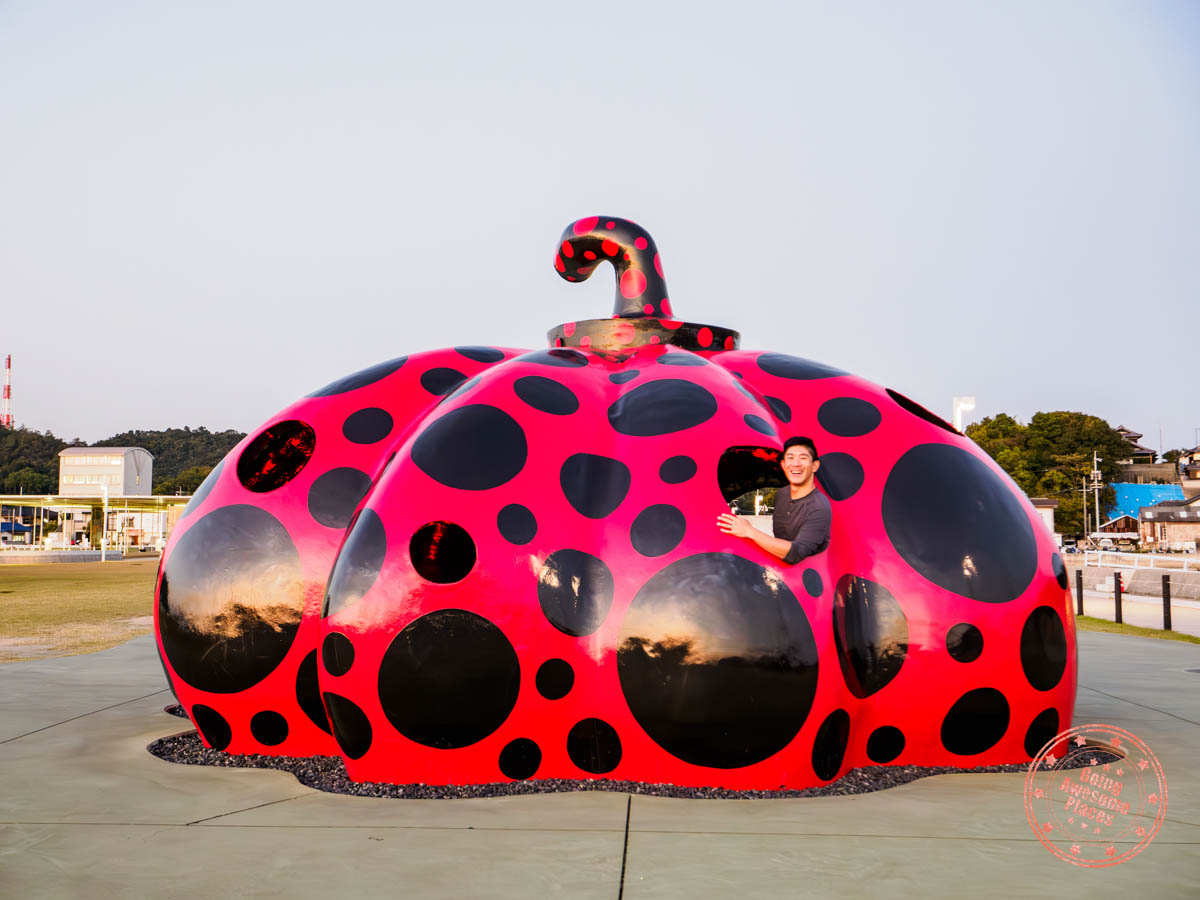
I learned so much from this trip to Shikoku. So far we’ve already covered specific tips for attractions, activities, hotels, restaurants, and car rentals but there are a few more general pieces of advice that I think you’ll be glad to know upfront instead of being surprised when you get here.

The two places where you’ll have to be on your toes is in Iya Valley and the Nakatsu Gorge area.
The reason why it’s challenging is because in various parts of the valley, there are areas that narrow down to one single lane that has to be shared with both sides of traffic.
When you get to these sections of road, I took the approach of driving more slowly, flicking my high-beams if it was dark, utilizing the mirrors that placed at every bend in the road, and relying on strategically constructed pulloffs. I found that it also helped to not be the lead car, and instead, trail behind someone else so they can spot oncoming cars.
If you get into a situation where you’re stuck because you’re staring at an oncoming car and there’s nowhere to go, first assess your surroundings and see if you’re able to back up. There’s usually a wider part of the road built-in deliberately to help in these situations. The oncoming driver might also be more experienced and make the first move, in which case you can take their lead. Another tip is to fold in your side mirrors if you’re worried about a particularly tight squeeze. Watch our Shikoku video to get an idea.
That said, don’t read this as this being a treacherous drive at all. For the most part, the roads are single or double lane, there are stretches where you can pass cars, and everything is marked clearly. Roughly 20% of the road narrow down to one lane and the rest are perfectly normal.
This just about applies to every single trip but in Japan, you should be aware of some of their big holidays which are:
- Golden Week – Roughly around April 28 – May 8
- Obon Holiday – August 10 -16
Other spikes in domestic and foreign visitors are during these seasons:
- Sakura (Cherry Blossoms) season – Late March to early April
- Northern hemisphere summer holidays – July to August
- Fall colors season – Mid to late November
While Shikoku is certainly not as busy as other popular destinations in Japan, you’ll certainly see a relative swelling of tourists during these periods. This can mean large crowds and wait times at main sights, and accommodations get booked out.
Beyond this, weekdays are always better than weekends.
Being the least visited parts of Japan, it should come as no surprise that your English won’t take you very far in Shikoku. You’ll come across the one odd person that will speak a little but a majority won’t understand a lick of English.
The good news is that technology has come a long way since our early days of travel blogging and there are tools like Google Translate that do a decent job at translating languages. It’s not perfect, but it can certainly help break the ice.
Similar to what we had to do with our limited knowledge of Spanish in our month in Chile , I downloaded the Japanese language for offline use and mostly used a combination of live translations through the camera when trying to read menus or signs, and one-off translations of English sentences to Japanese.
In Shikoku, there will also be many instances of trying to have longer conversations with someone and that’s where Google Translate’s “Conversation” feature. This tries its best to allow you to go back and forth between English -> Japanese and vice versa in rapid succession.
Unfortunately, this feature has a long way to go as it gets tripped up quite easily. To help, here are a few tips to take away:
- Speak simply and be clear and concise in your sentences. Avoid slang and idioms.
- The app takes longer pauses as an end of your part of the conversation so you’ll need to speak in one continuous thought.
- Often times, its the person you’re speaking to that will have the most issues so it’s worth explaining how the feature works and sharing your tips with them ahead of time (which will also need to be translated). Otherwise, it becomes one big frustrating mess.
This is something we constantly preach across all of our Japan travel guides . Japan is much more cash-heavy than you expect it to be so don’t get caught off-guard.
In our itinerary above, we’ve tried our best to identify anything that is cash-only. As you read through it, you’ll realize that more places only take cash than you expect.
Based on our costs, we’d recommend at least $500 USD worth of cash converted to Japanese Yen.
Shikoku goes through dramatic climate changes depending on where you are and what time of year it is. We won’t breakdown every scenario but here’s why you want to be prepared:
- The valley areas are several degrees cooler than being on the coast.
- The southern part of Shikoku (i.e. Kochi) gets much more rain than the northern part of the island.
- You can get really hot days in the summer (extends into September) and while Iya Valley may be cooler, remember that lack of air condition in many places will mean interiors will be even hotter.
- There are two times that you’ll be on the boat – Takamatsu for the Naruto Whirlpools, and on the Naoshima Ferry. These can get cold and breezy.
- On Naoshima, you’ll be biking and if there are no clouds, exposed to a lot of sun so it can be one of the hottest days of your trip.
We recommend the following items to help you stayed prepared on your trip:
- Mornings can be chilly so a good active fleece or mid-layer jacket . These are all handy pieces to have for any layering strategy.
- You never know when it’s going to rain. For us, we always travel with an Arc’teryx shell and light waterproof pants .
- For travel, breathable and lightweight active-wear is always great to have especially when it’s hot outside or you’re cycilng around Naoshima Island.

When we put together our itineraries , one question that we always get is how much it costs. That’s why we’ve included these cost breakdowns to help give you an idea of what kind of budget you need for a vacation like this.
Below is a table of the costs converted to USD. Keep in mind that this does not include the flights.
With a total spend of $2,497 USD, that’s a daily spend of $208 USD/person/day.
Comparing to the Far East Hokkaido trip which was a $431 USD/day, this trip was effectively half the price.
For other points of comparison, a week in Sapporo in the winter cost $318 USD/day, 1 month in Chile averaged out to $308 USD/day, 3 weeks in New Zealand was $353 USD/day, and 10 days in Egypt was $204 USD/day.
What To Pack for A Trip To Shikoku

We’ve covered some of this in our 5 Shikoku Travel Tips but we believe that they key for a trip like this is to remain as versatile as possible when it comes to clothing and gear.
This list isn’t meant to be comprehensive but we’ll list out some of the more important pieces and why. The links are mainly to mens products but you’ll be able to find equivalents. You’ll also notice that we wear a lot of Arc’teryx gear – not because we’re sponsored by them or because they’re from Canada, but because we love their quality and functionality.
- Jacket – Arc’teryx Beta Shell – It’s a windproof and waterproof layer that you can wear on its own or in combination with the other layers. This is something you’ll want handy because you never know when you might encounter a rainy day.
- Waterproof pants – Arc’teryx Beta Pant – Along the same lines, you don’t want rain to ruin your day.
- Mid-layer jacket – Arc’teryx Atom Hoody – A great all-purpose jacket that provides warmth, feels incredibly soft, and packs down to a small size.
- Active fleece – Delta Hoody – This is a thin fleece that is your go-to long-sleeve when it’s just not warm enough to wear a t-shirt. It also layers well with everything else.
- Travel pants – Outdoor Research Ferrosi Joggers – These are seriously the most comfortable pants and perfect for travel with their zippered back pocket, elastic cuff hem, elastic waist, and quick-drying material.
- Shoes – Altra Lone Peak 7 – The number keeps incrementing every year but these have consistency been awesome for travel because they are light, provide tremendous traction, and dry very easily even though they are not waterproof. I’ve really come to enjoy zero drop shoes but they might not be for everyone.
- Active t-shirt – Cormac Crew Shirt – These high-performance tees are life changing. They have the qualities of a quick-dry shirt but is ridiculously light and breathable.
- Long-sleeve sunshirt – Outdoor Research Echo Hoodie – Ultralight long-sleeve fabric that’s meant to be used during warm weather but gives you full sun protection.
- Hat – Ciele GOCap – These are light, quick drying, packable, and fun-colored hats that are great for travel.
- Sunglasses – Maui Jim – The current model I’m wearing is discontinued but you can’t go wrong with anything they have. They also have the best lenses on the market according to our optometry friends.
- Swim trunks – Any swim wear – This one’s easy to forget but you’ll need it for your canyoning excursion.
- Luggage – Db Journey Ramverk Luggage – Chose the medium size of this niche brand mainly because they use one of the best and largest wheels on the market (60mm Hinomoto) which makes them silent and so easy to move around.
- Backpack – Shimoda Action X50 V2 – The ultimate photography backpack for active travellers.
- Messenger bag – Everyday Sling – The 3L and 6L slings are amazing for travel, especially on days you don’t want to carry a full backpack but still want your camera with you.
- Travel towel – Microfiber Towel – We always recommend having these in your suitcase. These can also double as an onsen towel. That said, every accommodation was good about having towels available. The only exception is Hotel Iyaonsen where you needed to have your own. Most likely, you’ll just repurpose a free onsen towel from another location.
- Packing cubes – Eagle Creek Pack-It Cubes and Compression Cubes – Keep organized in your suitcase.
- Sunscreen – Sun Bum SPF50 for face and body – Make sure you’re protected every day.
- Bug spray – Repel 100 – I did not encounter any bugs in October but other seasons may be different.
- Reuseable tote – Peak Design Packable Tote – Super handy when shopping, have a lot of loose things that temporarily need to be moved together, and to keep all your snacks together in the car.
- Tripod – Peak Design Carbon Fiber Travel Tripod – This is our go-to tripod for our travels and we’ve reviewed it extensively .
- Camera – OM System OM-1 – This is honestly the best camera system if you love to travel, need something rugged for adventures, and shoot wildlife.
- Lens – OM System M.Zuiko Pro 8-25mm – I had to be selective with my lens choices for this trip and ended up using this one the most.
- Powerbank – VEEKTOMX 10000mAh – So good that I travel with 2 of these now with one set up in the backpack and another in my pocket if I need it. What’s important with this one is that it’s thin, small, and can properly quick charge.

Shikoku won’t be on your radar but really should be. It’s the kind of place where the name doesn’t necessarily stand out from the travel pamphlets (if they still make those) but is the type of place where you can fittingly say “if you know, you know”.
These 4 thoughts encapsulate what makes this such a special place.
You can have it all to yourself – I loved my Golden Route experience 10+ years ago but going back to places like Tokyo, Osaka, and Kyoto this year, I’ll be honest, some of that joy was sucked away by huge hoards of tourists and needing to strategize around it. Shikoku was the polar opposite experience where I never had to worry about crowds and I could appreciate each place with intention and peace.
Authentic experiences – Shikoku is more than just sightseeing but there are so many ways where you can get your hands dirty. From knife-making to indigo dyeing, there are so many experiences that will give you a deeper appreciation of how serious they take their respective craft.
Beautiful blend of food, nature, art, and religion – There’s a zen-like quality of how well everything blends and interplays with each other in Shikoku. More than anywhere else I’ve been to in Japan, there’s a completeness to what you can see, do, and eat in Shikoku.
Amazing people – Don’t get me wrong, there are amazing people all over Japan but consistently, language barrier or not, it felt easier to make deeper connections here. Thanks to the freedom of pace and going to places that don’t get as many visitors, locals seemed to be more open to sharing their story.
Perhaps what it all comes down to is that strong sense of authenticity that permeates throughout Shikoku. It’s a feeling and vibe that doesn’t always come through in the marketing but I can tell you that it’s unlike anywhere else I’ve been.
If we’ve done a good enough job of convincing you, our hope is that you’ll make Shikoku part of your upcoming trip to Japan.
The beauty of Shikoku is that it’s beautiful all-year round. While it’s never too busy, you certainly want to try to avoid big holidays and festivals. Similar to other parts of Japan, cherry blossom season and the autumn leaves are great times to go for the most scenic foliage.
Shikoku is the least visited of the main islands of Japan and that alone makes it unique because it retains a raw and authentic quality to it, combining well-preserved architecture, rich cultural heritage, bountiful natural wonders, and is steeped with a sense of mystery because it’s a place few get to experience.
The best way to see Shikoku is by car. The road infrastructure on the island of Shikoku is very good and cuts through its many interior valleys and mountains. That said, it can be challenging for those that are driving on the left-hand side for the first time and certain stretches where you share the road to both sides of traffic on a single lane in the mountains.
While Shikoku is the smallest of the 4 main islands, it has a lot to explore. As a result, we recommend a minimum of 8 days to see Shikoku, and ideally 12 days.
For tourism, Shikoku is best known for the Shikoku Pilgrimage route where you visit some or all 88 Buddhist temples on the island. Thanks to its many bridges connecting to island, it is also a well-known place for cycling enthusiasts. Other things Shikoku is known for are mikan oranges, the Awa Odori Dance, Naoshima Island, Sanuki udon, and olive wagyu.
Yes, you can rely on trains and local buses to get around the island. Many utilize the Shikoku Rail Pass which is exclusive to foreign visitors that is valid on JR trains and also regional train companies such as Kotoden, Iyotetsu, Tosaden, Tosa Kuroshio Railway and Asa Kaigan Railway. It also gives you free access to ferry to Shodoshima and the the buses on the island.
This Shikoku itinerary occurred in the middle of October to give you an idea of the time of year and season.
Shikoku is very pleasant in October. It’s a relatively dry month and is mostly t-shirt weather. The exception is in the valleys and mountains where it’s generally cooler and can get chilly at night. Make sure to have a sweater for these areas of Shikoku.
The Shikoku Pilgrimage route or Shikoku Henro is an amazing experience and a once-in-a-lifetime experience. That said it’s not necessarily for everyone. For those that aren’t as interested in the spiritual aspect of it or interested in walking for long stretches, and want to see a broader scope of what makes Shikoku special, a road trip of the island might serve you better.
- 9 Days in Far East Hokkaido
- 12 Day Japan Itinerary
- Best Apps To Use In Japan
- Best Food Souvenirs To Buy in Japan
- Our Best Japan Articles
- After considerable testing between Booking.com , Expedia , and Agoda , ultimately Agoda is the cheapest and has the advantage in terms of having more inventory of hotels in Japan.
If you’re in the process of planning your trip and putting together your itinerary, these are genuinely the best resources that the Going Awesome Places team stands by 100% .
Credit cards: Don’t get burned by hidden fees on top of terrible exchange rates. When we travel now, we use the Wise Card . Simply load it with the currency you need before you go and use it as a regular VISA or their digital wallet card. Use their free app to track how much you have and top up when you need to.
Flights: Of all the booking search engines, Skyscanner is the most helpful and easy to use thanks to their Everywhere feature . Kayak is also another that’s we will often check as well.
Car Rental: If you’re looking to save money, these car rental coupon codes will be a true game-changer. Otherwise, DiscoverCars and RentalCars are great places to start.

Airport Parking: You’ll need a spot to leave your car at the airport so why not book a spot at a discount. Use code AWESOME7 to get at least $5 off at Airport Parking Reservations or Park Sleep Fly packages.
Wifi Hotspot: We’ve been a huge fan of wifi hotspot devices such as PokeFi (use code GAP24300 ) because their rates are are hard to beat and it works globally. Solis is another that we recommend. Pros are that you can share the wifi with your whole group but cons are that you have to invest in a device and you have to charge it every night.
eSIM: Lately, we’ve really loved using eSIMs. We’ve tested several over the years and we have access to a few special promotions.
- AloSIM – Use code GOINGAWESOMEPLACES to save 15%
- KnowRoaming – Use code GAP10 to save 10%.
- Airalo – Use referral code WILLIA9500 to get $3 USD credit on your first purchase.
- Ubigi – AWESOME10 to save 10% on your first order.
Hotels: Our go-to is Booking.com because they have the best inventory of properties including hotels and B&Bs plus they have their Genius tier discounts . Expedia is also worth using especially with their One Key rewards program which is basically like cash. The exception is Asia where Agoda always has the best prices. Always do a quick check on TripAdvisor as well.
Vacation Rentals: Your first instinct will be to check Airbnb but we always recommend checking VRBO as well if you’re looking for a vacation rental (now eligible for One Key ).
Tours: When planning our trips, we always check both Viator and GetYourGuide to at least see what’s out there in the destination that we’re going to. They often have different offerings and prices so check both.
Travel Insurance: Learn how to buy the best travel insurance for you. This isn’t something you want to travel without.
- HeyMondo – Popular insurance provider for frequent travelers and comes with great coverage and special perks.
- RATESDOTCA – Search engine Canadians looking for the cheapest insurance including multi-trip annual policies.
- SafetyWing – A perfect fit for long-term nomads.
- Medjet – Global air medical transportation.
- InsureMyTrip – Best for seniors, families, and those with pre-existing conditions.
If you need more help planning your trip, make sure to check out our Travel Toolbox where we highlight all of the gear, resources, and tools we use when traveling.
This trip was in partnership with Visit Shikoku but all opinions are our own.
- Facebook 34
- Pinterest 15
About William Tang
William Tang is the Chief of Awesome behind the award-winning Going Awesome Places which is focused on outdoor adventure, and experiential travel. His true passion lies in telling stories, inspiring photography and videos, and writing detailed itineraries and travel guides. He is a member of Travel Media Association of Canada (TMAC), Society of American Travel Writers (SATW), Adventure Travel Trade Association (ATTA), and Travel Massive. He has also been featured in publications such as Reader's Digest, Entrepreneur, Men's Journal, and Haute Living. Make sure to learn more about William Tang to find out his story and how Going Awesome Places started.
Leave a Reply Cancel reply
Your email address will not be published. Required fields are marked *
Save my name, email, and website in this browser for the next time I comment.
Find us on social media
- Work with Me
- Start a Blog
- Yearly Roundups
- 101 in 1001 Goals
- how to start a travel blog
- tips for new bloggers
- write me a guest post!
- Work With Me
A Passion and A Passport
Proving Travel is Possible with a Full-Time 9-5
10 Days in Japan: A First-Timer’s Complete Japan Itinerary
last Updated: August 16, 2024 hiroshima japan kyoto miyajima nara osaka tokyo
FYI: Affiliate links may be sprinkled throughout the awesome, free content you see below. I’ll receive a small commission when you purchase from my links (at no extra cost to you), which I’ll totally blow on adult things like boba tea and avocado toast. As always, thanks for the support.
Looking for the best way to spend 10 days in Japan? You’re in the right place!
Continue reading for tons of first-hand tips, recommendations, and a complete 10 day Japan itinerary, which can easily be turned into two weeks in Japan if you’ve got a few more days. I absolutely LOVED my time in the country, and with some proper planning, I can guarantee you will too.

Japan is over-stimulating and over-whelming in the best way possible. An absolute thrill to the senses.
From the shiny bright lights of Tokyo’s Akihabara District to the serene temples and zen gardens in Kyoto , Japan is a country where the past and the future collide more than you initially realize.
I can promise you that every bite of food will be better than the last, and you’ll be saying oishi (“delicious” in Japanese) during every meal.
If you can visit during cherry blossom season, you’re in for a real treat – the streets will be lined with the most beautiful bunches of white and pale pink flowers you’ve ever imagined, which in turn makes the country smell absolutely phenomenal.
Japan is quite literally the most fascinating country I’ve explored to date. (And I just hit my goal of 30 countries by my 30th birthday a few months ago!) #killingit
I’d love to spend more time in Japan, and am highly encouraging everyone I know to discover this little piece of Asia sooner than later. So today, I am sharing with you my 10 day Japan itinerary, all heavily researched (for hours!) before my trip and followed pretty much to a T.

Overview of this 10 Day Japan Itinerary
When I initially started planning my trip, I was worried that 10 days in Japan wouldn’t be enough. Thankfully, I proved myself wrong and was able to see and do oh so much , as well as stuff myself silly with all those Japanese snacks I had heard so much about. [Spoiler alert: bring stretchy pants.]
The country is filled with so many fascinating areas, but 10 days in Japan will give you enough time to see the highlights. To be completely honest, this Japan itinerary is rather jam packed, yet highly efficient (I promise!), although I suggest slightly modifying it if you’d like a more relaxed trip or are traveling with kids.
While we’re at it, check out all my travel planning tips right over here!

This Japan itinerary starts in Tokyo , makes a day trip to either Kamakura, Nikko, or Hakone, then ventures south to Kyoto , with day trips to Nara, Osaka, Hiroshima, and Miyajima Island. Distances really depend on the mode of transport you use, with bullet trains being the fastest.
- Days 1-3 : Tokyo
- Day 4: day trip from Tokyo
- Days 5-6: Kyoto
- Day 7 : Nara and Osaka
- Day 8 : Miyajima and Hiroshima
- Day 9 : morning in Kyoto → Tokyo
- Day 10: Tokyo in morning/afternoon → airport
Japan is a decently large-sized island country located in Eastern Asia, being slightly smaller than California . Rest assured, the entire country is connected via trains. In my experience, Japan may have the most efficient and well-connected public transportation system in the world (and that’s coming from someone who spent their childhood riding the extensive New York City subway).
Despite holding the title for the 10th most populated country in the world (aka: it’s crowded), you can still find some peace and solitude in the many gardens and temples located just about everywhere.
Pre-Travel Guide to Japan
Where to get the best flight deals to japan:.
I swear by Skyscanner and Google Flights , and always always always use these two sites when looking for airfare. The option to watch prices and get email notifications are top notch and one of my favorite features of the two.
Always check budget airlines that may not be listed, especially if you are coming from other areas in Asia with shorter flight times. A great list of budget airlines can be found here .
For reference, we flew premium economy on China Airlines with a short layover in Taipei for about $1200 round trip from San Francisco – during Easter and cherry blossom season – but I saw deals for under $800 in coach. [I’m not complaining about the upgrade that my husband insisted on buying, but know that cheaper flights are out there.]
If you’re coming from the East Coast USA, flights will be a bit more expensive but shouldn’t be more than $500 more or so.

Where to stay:
In an effort to keep things simple (and avoid changing accommodation every night or two – what a pain!), this itinerary will have you staying in 2 main areas (Tokyo and Kyoto).
I highly advise booking accommodations near centrally located train stations in each as it’ll be easiest for the day trips mentioned in the 10 day Japan Itinerary below.
I opted to stay near Shibuya Station in Tokyo, as it’s centrally located and easy to reach other districts. In Kyoto we stayed near Kyoto Station as we were taking a bunch of day trips and wanted to be able to walk to our accommodation easily after a long, busy day on the road bullet train.
- Luxury: Cerulean Tower Tokyu Hotel
- Mid-Range: Shibuya Excel Hotel Tokyo
- Budget: Shibuya Tokyu Rei Hotel
- Check out other hotels in Tokyo here.
- Luxury: Hotel Granvia Kyoto
- Mid-Range: Kyoto Century Hotel
- Budget: Rihga Royal Hotel Kyoto
- Check out other hotels in Kyoto here.
- Yado Kiramachi
- Kyoto Takasegawa Bettei
- Muromachi Yutone Kyokoyado
Airbnb is also a great option and a good way to save some money if you’re spending a few nights in one spot (always check the cleaning and booking fees, as these can greatly increase the price should you only need a 1-night stay).
New rules regarding Airbnb rentals were implemented in June 2018, and now listings must be registered and display a license number on their booking page. Thankfully all current listings on Airbnb are compliant (the company removed any which failed to register in 2018), so you can be sure your booking is absolutely legit.
While I’d love to recommend the Airbnbs we stayed in during our trip to Japan, they are no longer available. However, there’s tons more to choose from – just check out the Airbnb website .
When to visit:
There’s never a horrible time to spend 10 days in Japan, but each season has their pros and cons.
Spring : If you’re hoping to see the ever-so-beautiful cherry blossoms, April is your best bet. That being said, it’s also the month most people visit Japan for that very reason. I visited in early to mid-April, and while yes it was crowded, the beauty of the cherry blossoms found throughout the country was well worth it.

Fall : Autumn is another wonderful time to visit Japan, as you’ll get to experience the vibrant fall colors (bright red leaves) from September to November.
Summer (June to August) is hot, humid, and rainy (although the rain tends to dissipate in early July), while winter (Dec-Feb) is generally cool, sunny, dry and great for snow-sports in the mountains.
Note that weather varies dramatically throughout the country, so be sure to plan accordingly especially if you visit higher altitudes.
Read Next: When to Visit Japan (Weather, Seasons, Festivals, and Crowds)

How to get Japanese Yen:
I highly advise you to NOT exchange your money at a currency exchange kiosk before or after you land as you won’t get the best rates. Instead, take out local currency (Japanese Yen) at the airport via ATM machine.
If you travel quite frequently, consider applying for a Charles Schwab bank account. The company refunds any and all fees associated with foreign transaction ATM withdrawals. You’ll pay no ATM fees anywhere in the world, including your home country. It’s what I’ve been using for years and it’s saved me 100’s in unwanted pesky fees.
Surprisingly, considering it’s crazy-advanced technology and all, Japan is mostly a cash society; yes, we were exceptionally wowed by that! Expect your credit card to get rejected at most places (especially small eateries and of course street-food stands) and be sure to carry enough Yen with you.
If you’re coming from the US, an easy way to figure out USD to JY is to move the decimal point two spots to the right >> 100Y = approximately $1USD. Just for quick reference, 10,000Y = approximately 100USD.

How to Get Around Japan:
If you’re visiting Japan from elsewhere in the world (i.e. you are not a resident of Japan), you are able to purchase a JR train pass for varying amounts of time. The JR pass gives you access to all of the trains, most Shinkansen lines (bullet trains), the ferry to Miyajima, and a few other transportation lines. Options include 7-day, 14-day, and 21-day.
I used a 7-day JR pass during my trip, and I highly advise you to do the same if you’ll be following this 10 day Japan itinerary. The Green Car option, while a bit more expensive, is JR’s version of “first-class” and most definitely worth it in my opinion. Note that it does not cover all bus routes/lines and some local trains, but these only cost about 100-300Y ($1-3USD), so no biggie.
If you plan on using a JR pass, you NEED to purchase it before you enter the country . Once you arrive in Japan, there is no option to buy it. And when I say no option, absolutely NO option at all.
Once you purchase the pass (which must be done outside of Japan) you will receive a voucher in the mail (within a few days) which you will then exchange upon your arrival in Japan at a designated JR ticket booth in major train stations.
Buy your Japan Rail Pass here (it’s the company I used and our voucher arrived promptly in the mail). There was free delivery straight to our home which I greatly appreciated, and once in Japan we saved a ton of money on the Shinkansen (high-speed bullet train), and breezed through the JR rail stations like a boss.
I can’t imagine doing Japan any other way than with a JR Pass. Check out the options (standard and green pass) here.

UPDATE — Buying a JR Pass in Japan : The Japan Rail Pass be will sold at a higher price point and on a trial basis in Japan through October 1, 2023 at major stations and airports. However, if you know you’ll be using one, miiiight as well save a bit of money and purchase it beforehand from a trusted company . There’s really no reason not to.
The public transportation system in Japan is top-notch, and although extremely overwhelming (at first, trust me), it’s by far the best (and most cost effective) option for getting around throughout the country.
Electricity and Power in Japan:
Japan uses the same 2-pronged electrical outlets as found in the USA. If you’re coming from America, note that some electrical devices use a three-pronged plug.
It’s also important to understand that the amount of voltage is different and you’ll need a converter (different than an electrical adapter) to change the amount of electricity pushed to each device if you plan on bringing anything which uses an excessive amount of power (including hair dryers, curling irons, and/or straightening irons).
If you don’t want to worry about this, I suggest you invest in dual-voltage devices made especially for travel like this dual-voltage blow dryer , dual-voltage mini straightener , and this dual-voltage curling iron .
Using a Pocket Wifi Router in Japan :
If you’ve done any research on Japan, you probably came across something called Pocket Wifi . What is it exactly and why should you consider getting it for your trip to Japan?
Pocket Wifi is exactly as it sounds — a small portable device that you can keep in your pocket (or purse/backpack/day bag) that provides wifi to all your devices (cell phone, iPad, computers, etc). And the best part? One Pocket Wifi will power up to 10 devices, so you can share the same Pocket Wifi with your family and friends.
Since wifi is less common in Japan than in other countries (surprising, right?!), this handy little device does wonders! You will be able to find free wifi in your hotel/ryoken, Starbuck locations around the city, and some other restaurants, but I always recommend having your own, especially if you’re visiting any smaller cities. Do note that some ryokans and older hotels might only have LAN cable internet access, instead of wifi, so you’ll definitely want a Pocket Wifi there!
You’ll use wifi on your phone for just about everything in Japan — train schedules, getting around, translating important phrases, making FaceTime calls to family, etc. You don’t wanna be without it when you need it!
And they make it so super easy — the Pocket Wifi will be delivered straight to your hotel in Japan! Once you’re done with your trip, use the convenient prepaid envelop to return your router from any address in Japan. Couldn’t be simpler than that!
Check out the benefits and purchase your Pocket Wifi here. Honestly, a life saver!
Useful Japanese Phrases:
- Hello/Good Afternoon: konnichiwa
- Good bye: sayonara
- Delicious: oishi
- Thank you: arigatō
- Please: kudasai
- Where’s the toilet: benjo wa doko desu ka?
- Does anyone speak English? Eigo no hanaseru hito wa imasen ka

Packing tips for Japan:
Clothing : Seaso ns are kind of temperamental in Japan, and you may be wishing you brought different clothing. Therefore, I highly suggest you pack layers for your trip to Japan. An umbrella (cute ones here , here , and here ) and light raincoat (like this or this one ) are recommended as well.
We encountered much more rain during our 10 days in Japan than we had originally planned for, and I’m glad I brought along a raincoat. If you don’t want to stuff a coat in your luggage, consider bringing along a poncho just in case.
Electricity and Power : As noted above, most of Japan’s electrical outlets are the 2-pronged “Type A” type (100 Volt, 50-60 Hz).
If you have a device with a 3-pronged or European/UK-style plug, you may need a travel adapter (for all devices) and power converter (for high powered devices like a hair straightener or blow dryer).
Pack comfy shoes that are easy to take off. You’ll need to slip off your shoes at various temples, at the airport, at ryokans, and some restaurants. My favorite ones here (on sale), here , and here .
I also suggest bringing along socks if you don’t want to go barefoot… These sushi socks are quite cute and perfect for the occasion… 🙂
Small throwaway bags for garbage. You won’t find many garbage cans around Japan in general, and it’s expected that you keep your trash on you until you can throw them away. Keep a small bag in your purse/backpack for this purpose. A small foldable tote is perfect for this, and can be used for spontaneous shopping trips.
Pack light. Navigating Japan is much easier when you have a small suitcase, especially since Japanese trains (and train stations) do not cater to travelers with a lot of luggage. In addition, there’s not as many elevators or escalators as you might wish, so remember, you may be carrying your luggage up and down a few flights of stairs.
I recommend traveling with a small rolling suitcase (one that fits in the overhead bin on an airplane like this one or this one ) and a backpack (I have this one and love it).
Stay organized with packing cubes , which also help you fit more into smaller suitcases (I’m able to fit about a months worth of summer clothing using packing cubes and packing strategically).
Language : If you’re up for it, you can also consider taking along a small Japanese Phrase Book . The language is quite difficult, and Google Translate (which won’t work without wifi or a cell plan) saved our butts far too many times.
Japanese written language uses characters, which you’ll see all over the place. Thankfully, most signs are written in phonetics using the alphabet we use.
We were also surprised by the low number of people who speak any English. Save yourself some frustration and pack a lightweight phrase book in your bag. Interested in learning some Japanese before your trip?
This book looks like loads of fun, and I’m actually thinking of buying it before my next trip back to the country. (The Japanese language is difficult you guys, just trust me.)
Travel Insurance for Japan
Yes, you need this. I always recommend purchasing travel insurance before your trip. You never know what might happen (flight delays, lost baggage, illness), and travel insurance definitely helps with all of those unfortunate unexpectancies.
I highly recommend the companies World Nomads and SafetyWing . I’ve recently been buying coverage with SafetyWing since they cover pandemic-related costs (which most travel insurance companies do not do).
Whenever we travel, we always buy a short term plan (depending on how many days/weeks we’ll be away) before leaving for any trip! Even if you don’t end up using it, peace of mind is 100% worth it in my opinion.
Find plan options and pricing here (and at only a few bucks a day, there’s no excuse not to!) I always say, if you can’t afford travel insurance, you can’t afford your trip. It’s that easy.
Buy your travel insurance now — don’t wait until it’s too late!
10 Days in Japan: A Complete Japan Itinerary
And now, the fun part! The 10 day itinerary in Japan!
Day 1: Arrive in Tokyo!
You’ll most likely be flying into Narita Airport and will need a little over an hour to get into the city center via the Narita Express. After such a long flight (with lots of time difference), it’s best not to plan much on this first day – hello, jetlag!
I suggest exploring the area you’re staying in (my suggestions: Shibuya or Akihabara) and devouring your first Japanese dinner of either ramen or pork Katsu.

During my stay, I opted for an AirBnB in Shibuya , which has an epic nightlife with tons of stuff going on, restaurants included (even if “partying” isn’t your thing- it sure ain’t mine!). Use this first afternoon/night to relax and rest up, as the rest of this itinerary will be go-go-go!
Day 2: FULL DAY IN TOKYO (West Side)
Today’s all about modern Tokyo ! You’ll be exploring the western districts of the city, including Shibuya, Harajuku, and Shinjuku – just saying these names are fun! You can either walk from district to district as they are fairly close together, or buy single use train tickets to hop between each.
DO NOT USE YOUR JR PASS YET as it will expire before you finish needing it later on during the trip. Train tickets within Tokyo are not very expensive, and you won’t be needing many today anyways!
Stop 1: Shibuya

If you opted to stay in Shibuya, you won’t need to take a train here! Shibuya is Tokyo’s version of Times Square , and with all the bright lights and massive amounts of people, it’s easy to see why. Be sure to check out the world-famous Shibuya Crossing , where 100’s of people scramble across the street at once.
For the best view above, head to Starbucks (you’ll need to order something before going upstairs), or find the Keio Inokashira Line at Shibuya Station for another perfect view.

Also say “Hello” – or Konichiwa — to Hachiko (the most loyal dog in the world statue) at Shibuya Crossing and do some shopping at Tokyu Hands .

Meiji Shrine shouldn’t be missed as well, which is the Shinto shrine that is dedicated to the deified spirits of Emperor Meiji and his wife, Empress Shōken. You’ll be seeing lots of shrines and temples during your time in Japan, and Meiji is a great one to start with!
If you’re lucky, you may even witness a traditional Japanese wedding ceremony! I, however, was not so lucky.
Stop 2: Harajuku
If you want to get a taste for Japanese street style, visit Harajuku. On Sundays, you can see traditional Harajuku Girls dressed in elaborate costumes and anime – so fun! Try and spot the girl in the photo below all decked out in costume. If you can’t make it on a Sunday, you can get a feel for Japanese street style any day of the week.
You can reach Harajuku by taking the Yamanote line to Harajuku Station, although it’s not a far walk from Meiji Shrine.

Walk down the famous shopping street of Takeshita Dori , where you’ll find a whole mess of fun stores and fun cafes. Note that most shops don’t open until 11am, but if you’re following this itinerary, you’ll probably arrive here around 1pmish or so.
Be sure to try a crepe – the unofficial street food of Harajuku, which you’ll find all over Takeshita Dori! We also visited a hedgehog café and played with them for about 45 minutes or so. A super quirky and super weird area, definitely not meant to be missed!
Read Next: Top Things to do in Harajuku

Stop 3: Shinjuku
Shinjuku is the largest neighborhood in Tokyo (dubbed the crazy entertainment district), and you’ll find thousands of restaurants, shops, entertainment, and other attractions that you could easily spend all day here.
With limited time, we spent a decent portion of the afternoon and night here and felt that was sufficient enough to see the highlights.

Many people opt to see the ever-so-popular Robot Restaurant , which I’ve heard is an other-worldly experience, but after reading reviews, we decided against it. Do your own research and decide for yourself whether this show is worthy of your time and money.
Whether you decide to spend part of the evening at the Robot Restaurant, I highly encourage you to make a visit to Omoide Yokocho , commonly known as Piss Alley.
Piss Alley is a small network of alleyways along the tracks northwest of Shinjuku Station filled with dozens of tiny eateries serving ramen, soba, sushi and yakitori. Just pick one with open seats and go in – they’re all worthy of some stomach real-estate.

Consider the free observation deck on the 45th floor of the Tokyo Metropolitan Government Building , visit Shinjuku Gyoen (a large public park near Shinjuku Station being a perfect cherry blossom spot – check on hours, we missed the entrance by about 20 minutes 🙁 ), and find an epic view of the area from the pedestrian overpass near the northwest corner of the Shinjuku station.

Day 3: FULL DAY IN TOKYO (East Side)
Now it’s time to experience the more traditional side of Tokyo , including Sensoji Temple and Ueno Gardens. Another bird’s eye view can be seen today, at nearby Tokyo Skytree.
If you’re staying in Shibuya like I did, you’ll need to take the train from Shibuya Station to Asakusa Station (35-45 min on train) via the JR Yamanote Line to Ginza or Asakusa Line. Make sure to purchase single tickets – do NOT activate your JR pass yet!
Asakusa and Sensoji Temple

Asakusa is the spiritual heart of Tokyo and a good place to start your day! Sensoji Temple is the main attraction here, and you’ll start your morning journey at the Kaminarimon Gate .
As you walk toward the temple buildings, check out the historic Nakamise Dori shopping street, pick out some souvenirs and grab a Japanese snack (or two!) before exploring Sensoji Temple.
Consider drawing Omikuji (written fortunes) while here. If you’re up for it and are interested, check out the surrounding old-fashioned neighborhoods around Asakusa.

Sumida Park and Tokyo SkyTree
If you’re visiting during cherry blossom season, I highly advise you to visit Sumida Park , which is an absolutely wonderful spot to see the flowers in bloom! It was one of the least crowded public parks we went to and FULL of cherry blossoms!
I cannot recommend this spot enough! Bring a snack or two and sit on a blanket for the ultimate experience. We got sakura donuts from Mister Donut (located all around), and ate our flower-themed treats amongst the cherry blossoms.

Next up – Tokyo SkyTree , the tallest tower in not only Japan, but the entire world! At 634m (2,080 feet), the complex has two observation decks with great views over the city. There’s even a glass floor for any of you brave souls! Expect a cue, so plan on spending a bit of time here. The Tokyo Skytree is about a 20 minute walk or a 5 minute train ride from Asakusa.
If you don’t wanna wait in line, I highly encourage you to book your skip-the-line Tokyo SkyTree ticket in advance. You can even upgrade to include the Tembo Galleria.

End the afternoon at Ueno Park , another large public space located in central Tokyo and another lively cherry blossom spot. There are more than 1000 cherry trees of multiple varieties lining its central pathway and lots of temples and shrines here to check out, as well as museums and a zoo if those are of interest to you.
You’ll most likely want to take the JR train from Tokyo SkyTree to Ueno Park.

Akihabara District
Wake up because we’re off to Tokyo’s crazy Akihabara District! Spend the evening perusing the many electronic shops, including Yodobashi Akiba – the world’s largest with nine stories stuffed with hi tech equipment – for geeks with money.
You’ll also find Japan’s diehard fan anime culture here, with stores devoted to anime and manga; just be sure to keep kids away from the adult-only sections (I wondered at first why all the anime was butt naked)!
You could easily fill up a whole afternoon and night in Akihabara, from its maid and Gundam cafes, gaming centers (check out Super Potato Retro Shop if you want to be transported into the 90’s), and just gazing at the bright lights.

Day 4: DAY TRIP from Tokyo — 3 Options
Today you’ll activate your JR pass and start putting it to use! Now that you’ve explored Tokyo, get out of the busy city center and explore another nearby area. There are numerous day trips you can take from Tokyo , and depending on your interests, you may want to visit more than one!
Unfortunately this ten day Japan itinerary only allows for one, but if you have another day or two to spare, you could easily do all three.
I opted for Kamakura because of the rainy and cold weather, but I would have loved Nikko or Hakone had the weather been more cooperative that day. With two weeks in Japan, you can most definitely do all three if you’d like.
Here are my three recommended day trips from Tokyo:
1) Kamakura

Don’t miss the Great Buddha of Kamakura (at Kotokuin Temple), easily the most popular attraction in the area, and literally hard to miss at 44 feet. Here you’ll find the second largest Buddha in all of Japan.
Another site not to miss, and only a few minute walk from the Great Buddha – the Hase Dera Temple , which is a beautiful temple located on a hillside overlooking the ocean.

There’s also a bamboo forest at Hokokuji Temple , similar to that in Kyoto, and it’s possible to see Mt. Fuji on a clear day from Kenchoji Temple.
Once you’ve had your fair share of temples, or are just hungry for some lunch, head on over to Komachi-dori , the busiest commercial street in Kamakura. Try the local specialty of Shirasu-don , (a Whitebait rice bowl), which you’ll easily find in numerous restaurants on the busy street.

Not interested in venturing to Kamakura alone and prefer a group tour? Looking back, I wished I booked a tour. Although it wasn’t too far away, we got a bit confused on the train and wasted a bunch of time trying to navigate our way to Kamakura, and then even more time once we arrived.
Many of the tours include other highlights like a tea ceremony and a view of the Bay, which we missed by going alone. I recommend these (from Tokyo) which cover all the top attractions:
- Full Day Trip to Kamakura, Yokohama, and Tokyo Bay (from Tokyo) : Not only does this day tour from Tokyo take you to all the highlights of Kamakura, but you’ll also get to have lunch in Yokohama’s bustling Chinatown, visit the traditional Japanese-style sunken garden of Sankei-en (including tea rooms!), and admire the modern cable-stay Yokohama Bay Bridge.
- 5 Hour Nature and History Walking Tour: This walking tour follows a hiking route from Kita-Kamakura to Hase-dera Temple, passing many historic temples and shrines. You’ll be able to enjoy some wonderful panoramas from a hiking trail that offers views in all directions. Note that transportation is not included.
Literally sick of the city and need to get some nature into your life? Nikko may just be your answer. Full of ancient moss, stone lanterns, vermillion gates, and towering cedars, there’s a reason why this area is one of Japan’s most visited areas.

Located about two hours north of Tokyo, Nikko is the site of the famous Toshogu Shrine , the mausoleum of Tokugawa Ieyasu (VIP in Japan), and numerous other temples and shrines. Don’t miss the famous Shinkyo bridge , the beautiful Nikko National Park (on a sunny day), Kanman-ga-Fuchi Abyss, and Kegon Falls .
I’m quite bummed we didn’t make it here as all the photos look absolutely spectacular, but now I’ve got another reason to return to Japan!

Trying to fit in a lot during your one day in Nikko? Consider a group tour which gets you around easily to all of the highlights.
Day Trip Options here:
- From Tokyo: Nikko World Heritage Full-Day Tour : Explore the beautiful mountain landscape of Nikko, Japan, experience the majesty of the Tamozawa Imperial Villa, bow to the three golden Buddah’s at the Rinnoji Temple, explore the surrounding landscape with a trip to Kirifuri Falls, and have a relaxed Japanese lunch at a local restaurant.
- Nikko: Autumn Leaves and World Heritage Full–Day Tour : Discover the beautiful autumn leaves and world heritage of Nikko. During your full-day tour by air-conditioned coach, visit Nikko’s natural sights, Senjo-gahara and Kegon waterfalls, and Nikko Toshogu Shrine. Perfect during those autumn months!
If you have more than 10 days in Japan, check out these additional day trips from Tokyo .
If seeing Mt. Fuji is on your bucket list, then I definitely recommend making the day trip to Hakone.
Once arriving, you have a whole slew of options to fill your day, including the Hakone Tozan Cable Car for stunning views, the Hakone Ropeway for even more epic views, Owakudani with views of Mt. Fuji on a clear day, and a small Buddhist alter.
You can also take a Hakone Sightseeing Cruise and spend time at the Hakone Open Air Museum (art gallery). Brave? Try a black egg!

If you’re not up for heading to Hakone alone , there are numerous day trips from Tokyo that leave the transportation and planning up to someone else. You’re on holiday – treat yourself and save yourself the hassle! I recommend the followings tours:
- From Tokyo: Mt. Fuji and Hakone Day Trip by Shinkansen : Spend a day trip traveling to Mt. Fuji, Japan’s most famous symbol and highest mountain. Enjoy the view from the 5th Station before visiting the nearby resort town of Hakone, known for its onsen hot springs. Return to Tokyo by bullet train!
- From Tokyo: Mt. Fuji and Hakone Tour with Bullet Train : Get spectacular views of Mt. Fuji and its surrounding mountains on a day trip from Tokyo. Cruise across Lake Ashi by boat and take the ropeway up Mt. Komagatake. Relax in the hot springs resort of Hakone, and then catch the bullet train back to Tokyo.
However, note that seeing the mountain is never guaranteed and it’s possible you may make the trip only to be disappointed. Some months out of the year have higher chances of visibility, including the winter months. If it looks like a questionable morning with lots of clouds, I highly suggest you alter your plans and opt for either Nikko or Kamakura instead.
Day 5: MORNING BULLET TRAIN TO KYOTO then EXPLORING
First Bullet Train Ride!

*Note that you’ll be required to make a seat reservation if you have opted for the Green JR Pass. Make this reservation when you first exchange your JR voucher for a ticket, or the night before leaving for Kyoto. Don’t wait until the morning of because it’s possible the reservation desk will not be open yet.
Get up nice and early, grab some breakfast in the station/on the way to the station, and take a 7:00/7:30am bullet train from Tokyo Station (you may need to transfer at Shinagawa Station) in route for Kyoto!
If you take this early morning train ride, you’ll arrive in Kyoto around 10:30am or so, which is necessary if you want to see a bunch of Kyoto sites today. Once you arrive in Kyoto, put your luggage/bags into a coin locker (roughly 500-900 Yen for two suitcases for the entire day) and get exploring!
A note about Kyoto’s public transportation: Unlike Tokyo, Kyoto relies on large public buses. We were unaware of this and unfortunately caught off guard when we couldn’t take fast trains to get around. Give yourself some extra time as it’ll take longer to get around. Embrace it – look outside the window on the bus and take in some local Kyoto life.
Arashiyama Area
Catch the bus to the Saga-Arashiyama Station , where you’ll be hanging out for a few hours. First up, Tenyru-Ji Shrine and its accompanying zen garden. So many beautiful plants and flowers (nicely labeled in both English and Japanese) here, such as the Japanese wisteria, which you’ll never see outside of Japan.

Once you exit the garden, you’ll come across the Arashiyama Bamboo Grove/Forest . Walking through the Bamboo Grove is definitely one of the essential experiences to have in Kyoto so don’t pass it up!
The grove is much smaller than I thought, taking roughly 15 minutes to walk through, but is absolutely excellent for photography.
Walk through slowly to take it all in, and don’t forget to look up at the towering bamboo! Bring a wide-angle lens and if possible, a go pro, in order to include as much of the bamboo in your photos!

Before you head to the Monkey Park (coming up next!), you’ll most likely come across a lovely area with small eateries and a beautiful, green emerald lake. A good spot for some photos in my opinion! 🙂 We enjoyed a few vending machine coffees and teas here (you’ll be doing that everywhere in Japan too, you’ll see!).
Read Next: Top Things to do in Kyoto and Attractions

Next up, walk to the Iwatayama Monkey Park ! Yes, it’s about a 15-20 minute walk completely uphill to reach the park, but definitely worth it! Just be aware, the Google Maps directions to this attraction are wrong.
The entrance to the park is simply near the orange shrine gate at the south side of the Togetsu-kyo bridge. Look for a cartoon picture of a monkey and you’re golden!

The park is a nice change from the temples and shrines you’ll be seeing a lot of in Kyoto, and it’s so much fun to feed the monkeys for only 100Y. There’s also a wonderful view of Kyoto from up here.
Before anyone gets mad at those pictures of the monkeys “behind bars”, please know they are free to roam wherever they’d like throughout the park, and us humans are actually put in an enclosed area when feeding them. This is to protect both the animals and us.
We could have easily spent hours watching the monkeys and admiring the view, but off to the Golden Pavilion it was!
Golden Pavilion (Kinkaku-ji)

If you’ve got more time today, take the bus to the Golden Pavilion , which is super impressive and made entirely of gold! Reflected in the lake, it’s no wonder this is one of the top things to do in Kyoto.
Make sure to try some Japanese flavored ice cream here, such as green matcha and/or black sesame, my new favorite! It’s guaranteed to be crowded, but very, very worth it in my opinion.

*Don’t forget to head back to Kyoto Station to collect your bags before heading to your hotel or AirBnb for the night!
Day 6: FULL DAY IN KYOTO
Nishiki Market

Start the day at the Nishiki Market – known for its different food stalls where you can try all kinds of Japanese cuisine and treats.
Stroll for an hour or so up and down the streets of the market, stopping whenever something tickles your fancy. The market is a great place to dive into some of the more unusual dishes – don’t be a chicken, try them!

However, absolutely don’t leave the market without trying tako tamago – the infamous candied baby octopus stuffed with a quail egg. It tastes way better than it sounds – I could have eaten three!
Want a taste of those cutesy animal donuts you’ve possibly seen all over the internet? You can try them here – at Floresta Donuts . I had a hard time eating mine as it was just too cute to bite into! Quite possibly my favorite thing I ate during our 10 days in Japan! SO cute!

After your fix of Japanese delicacies and donuts, walk on over to Gion, Kyotos famous geisha district. If you’re lucky you may spot a real true-life geisha , although they tend to walk fast to their destination and don’t like to show their face.
However, if you do spot one, but courteous and don’t obviously follow them or point your camera directly to their face. Show respect for their culture. I wasn’t so lucky and didn’t spot any on my trip.
Higashiyama District
End the day at the Higashiyama District, the world famous hub of Kyoto’s best-known shrines and temples. And let me tell me, this place is worth checking out. It’s one of my favorite areas in all of Kyoto .

Make sure to walk down Sannenzaka and Ninensaka – the two most beautiful streets in the district, with numerous souvenir shops and eateries. It can get rather crowded during the day (for good reason!), so we chose to come a bit before dusk had encountered a less cramped experience.
Still cramped, but less cramped than I imagine mid-day would be. You’ll find some eats on the walk – make sure to try a sakura cream puff !

Kyomizu-dera Temple , a listed UNESCO site, should be next on your list. Again, it’s quite busy, but the view out over a sea of trees is hard to beat – just imagine this during cherry blossom season (absolutely to die for!) And yea, try an onigiri maki – an emoji in the wild!

Finish off this (long and tiring) day by walking part of the Philosopher’s Path (found on Google Maps as Tetsugaku-no-michi) , a path that runs along a narrow river and is lined with more cherry blossom trees than you can ever imagine!
You’ll end at the Silver Pavilion, although not as fancy and intricate as the Golden Pavilion, and not even lined in silver, but still impressive nonetheless.
Day 7: DAY TRIP TO NARA AND OSAKA
It’s time for some day trips today, and we’ll be crossing off two in one day’s time! Head to Nara from Kyoto Station (via JR Nara Line – roughly 1 hour on the express train), then after seeing some of the top temples, head on over to Osaka and eat everything!
Get ready to interact with some deer in Nara Park , which can be found all throughout the area and are literally impossible to miss! And oh yea, those crackers you see being sold on the street? Those are for the deer, not us hungry humans!

A few temples to see: Todaiji (must visit Unesco World Heritage Site with super tall Buddha), Kasaguga Taisha Shrine (the most important shrine in Nara), Kofukuiji Temple, and Gangou-ji Temple. If you’ve had enough of temples by this time, head over to Osaka and skip a temple or two.
Tip : Get the Nara Kotsu one day pass (it’s more of a wooden plague you can wear around your neck if you please) for 500 Yen. This sightseeing bus brings you around to the top attractions in Central Nara, and is good for most of the buses you see throughout the city.

Off to Osaka for the rest of the day! Many people skip Osaka as they think it’s just another large city like that of Tokyo, but we absolutely loved our few hours here! Don’t skip it!
First up, the ever-so-beautiful Osaka Castle , one of Japan’s most famous landmarks! Get off at Osakajokoen Station.
Note that the castle may very well be closed by the time you reach it depending on how long you spend in Nara (last admission is 4:30pm in April, a bit later in the summer months), but the outside alone is worth the train and short 20 minute walk!
Next up, Dotonbori Street ! It’s an absolute madhouse full of people, shops, and eateries, and an absolute must-do while in Osaka. Be sure to look up and admire the moving animal billboards found on the buildings.

Osaka is the food capitol not just of Japan, but of the entire world. Hence, you’ll want to eat everything in sight (just leave some room for a Kobe beef dinner). Try beloved regional dishes like okonomiyaki, takoyaki (fried octopus balls – tastes way better than it sounds), udon, and hiyashi ame ginger drink.

Rule of thumb: if there’s a long line, the food is out of this world. Wait and you’ll be rewarded.
If you want to get some shopping on, head on over to nearby Shinsaibashi, the city’s premier shopping district. We chose to skip the shopping and focused on stuffing our faces 😉
Great dinner suggestion: Tsurugyu. This place is all about Kobe beef , and is super fresh and decently priced. Expect to pay around 5,000Y per person, drink included. Reservations are highly recommended, although we somehow got extremely lucky and were able to sit at the bar – but don’t count on this!

Day 8: DAY TRIP TO MIYAJIMA AND HIROSHIMA
Get ready for another jam-packed day. Yes, it’ll take a while to get here, but trust me, on a clear, sunny day, it’s 100% worth it and absolutely beautiful.
Take an early morning bullet train to Hiroshima, which takes roughly 2 hours from Kyoto Station, then a local JR train to Miyajimaguchi Station, then finally the JR ferry to Miyajima. All included in your JR Pass .

You can choose to visit either Miyajima or Hiroshima first, but I highly recommend visiting Miyajima during high tide to see the gate “floating” in the water. Check tide schedules online.
If you opt for Miyajima first (again, tide dependent), and take an 8am bullet train out of Kyoto Station, you’ll reach Miyajima by approximately 11am.
Head straight to the tori gate (after some deer interaction of course, yes there’s deer here and they’re SUPER friendly, just watch your food).
You’ll want to snap a million photos because this place is just so damn beautiful it’s hard not to! You can also check out the floating shrine as well, which we loved and was unlike any other shrine/temple we saw in Japan!

Spectacular views your thing? Take the Miyajima Ropeway (~15 minutes, $17 roundtrip) for better-then-great views of the whole area from the top of Mt. Misen . There’s a bus at the base of Miyajima Island which will take you to the ropeway station fo’ free as well if you’re already feeling super tired from your journey.

Before heading back to the ferry, pick up some ice cream (green tea or black sesame, you are in Japan!) – perfect on a hot, sunny day.
Take the ferry back to Miyajimaguchi Station, then the JR train to Hiroshima. Note that you’ll need to either take a tram or buy a Hiroshima Sightseeing Hop-On, Hop-Off Loop Bus “Meipuru-pu” to get around in Hiroshima super easily – which is free of cost for JR pass users .
We took the sightseeing bus to Hiroshima Castle , and then to the area with the A-Bomb Dome , Children’s Peace Monument , and Peace Memorial Museum and Park . The museum was closed by the time we arrived, but we were still able to wander around at the memorials and pay our respects.

End this super long day eating okonomiyaki at Okonomimura , a humungous multi-level eatery with tiny stalls of different shops making varieties of the famous pancake. Just for reference, we made it back on a bullet train around 8:30/9pm, getting back to Kyoto around 11pm. Told you it was a long day. 😉

Day 9: KYOTO THEN BULLET TRAIN BACK TO TOKYO
Today’s your last day in Kyoto, so it’s time to do those last-minute things you missed, including the Fushimi Inari Shrine. Put your bags in coin lockers at Kyoto Station before heading out for the day (just don’t forget to pick up before the bullet train heading back to Tokyo!)
Morning/Afternoon in Kyoto
1. Fushimi Inari Shrine (Taisha): COME EARLY BEFORE THE MASSES ! No matter how tired you are, do not skip Fushimi Inari Shrine! To get here, you’ll need to take the JR Line (Nara or Keihan Main) from Kyoto to Inari Station.
The shrine is comprised of over 10,000 beautiful orange-y red tori gates arching over a scenic, possible 2-hour-long walking trail. You don’t need to do the entire circuit, but definitely make it past the initial arch as this is the most populated one due to its close proximity to the start.
Make sure to notice the numerous fox statues along the shrine grounds, as they are thought to be Inari’s messengers and hold much importance to this area. And get some inari sushi if you’re a bit hungry – look how cute they are! Definitely one of my favorite things we did during our 10 days in Japan.
Read Next: Alllll the best things to do in Kyoto

2. Nijo Castle: One of Kyoto’s most popular and impressive sights, and a wonderful place to walk around on your last official morning in the city. The grounds are large with numerous fortifications, a lovely castle, beautiful moat, and gardens.

Inari Shrine to Nijo Castle: Head back to Kyoto Station, then take the JR Sagano train to Nijo stop
3. To-Ji Garden and Temple: Depending on your groups level of tired-ness, you may choose to skip these gardens (which are a 15 minute walk from Kyoto station). We were too pooped from the week’s festivities to even think about wandering around here, and let’s face it – I saved myself an hour or so of complaints from my husband.
We both get a little grumpy when the tiredness kicks in. If you do decide to go, you’ll find the tallest wooden pagoda in Japan, a lovely garden with a koi fish pond, and some beautiful cherry blossoms. Next time for me!
Bullet Train to Tokyo
Once you’re done with your activities in Kyoto, back on the Shinkansen (bullet train) to Tokyo it is!
The bullet train from Kyoto to Tokyo takes around 3 hours or so, and with our stomachs grumbling already, we opted for a dinner of bento boxes to take on the train with us. You’ll find a handful of stalls in the train station selling a wide variety of food options, with bento boxes being absolutely perfect for the long train ride!
Since you’ll only be in Tokyo for one additional night and will need to take the train from Tokyo station to Narita International Airport the next day, I suggest staying in the Ginza area, 1 or 2 stops on the train depending on which line you take.
It also lets you explore a new area the next morning before heading off to the airport.
Recommended hotels in Ginza:
- Luxury : Millenium Mitsui Garden Hotel (where we stayed and we absolutely loved it! – and less than $150 a night!)
- Mid-Line : Solaria Nishitetsu Hotel Ginza (super chic upscale hotel at affordable rates in a great location)
- Budget : Tokyo Ginza Bay Capsule Hotel (if you don’t know what a capsule hotel is… go check that out!)
Day 10: SUSHI BREAKFAST AND OFF TO THE AIRPORT
Before heading out for the day, it’s a good idea to check out of your hotel to avoid rushing back for the mid-morning check-out time, and be sure to ask your hotel to store your bags (which you’ll pick up later before heading off to the airport).
Sushi Breakfast at Tsukiji Market

On your last official morning after 10 days in Japan (cue the sad face), there’s nothing better than an authentic sushi breakfast! And no better place to get fresh sushi than at the Tsukiji Fish Market – the world’s largest, busiest fish market!
Note that the Tsukiji Fish Market is comprised of two parts – the inner market (the Uogashi wholesaler market) and the outer market. The inner market is where you’ll find the early-morning wholesale tuna auction (think 4am, yes, really that early), while the outer market is for all of us foodies hoping to satisfy our taste buds with some seafood goodness.
While Daiwa Sushi and Sushi Dai are two of the most common sushi shops in Tsukiji Market, the lines are astronomically long. We picked a place at random and had a wonderful experience – the fish was fresh, service was adequate, and prices were competitive.
You won’t find mediocre sushi anywhere in this area, so decide for yourself (and your hungry belly) if waiting in those long lines is worth it.
If you have a little extra time and wanna learn about Japanese food culture and the market in general, consider signing up for a Tsukiji Outer Market Food and Drink Walking Tour . You’ll sample bonito, katsuobushi, dashi stock, sushi, sake, fresh tuna, local omelets (my all-time fave) and so much more. I so wish we did this as we didn’t learn much about the market and honestly didn’t even know where to begin on our own — there’s so many stalls and we didn’t know half of the foods!
Next time we’re in Japan I REALLY wanna take this combined tour of the Tsukiji Outer Fish Market and sushi-making class! I love taking cooking classes when I travel (I’ve made macarons in Paris, egg tarts in Lisbon, and tamales in Mexico so far), so I think sushi in Japan is next for me!
Shopping in Ginza
After filling up on some sushi (and ice cream, because, why not?!), head back to Ginza for some upscale window shopping. This district is home to the most expensive shopping and real estate in Tokyo – kind of like New York’s Fifth Avenue, but with more lights!
Off to the Airport

Depending on your flight time, you may have a bit more time, but it’s always wise to get to the airport extra early for international flights.
Head back to your hotel, collect your bags, head to Tokyo Station, then to Narita Airport (takes approximately 1 hour via Narita Express), have one more Japanese meal at the airport, and say goodbye to this eclectic yet charming country.
If you have any questions on this 10 day Japan itinerary, please ask below in the comments! If you follow this itinerary (exactly what we did), I can promise you not only will you see so much in such a short period of time, but you won’t be stressed out planning either! 🙂
TRAVELING TO JAPAN SOON? Don’t forget travel insurance! I’m a big fan of World Nomads and SafetyWing when traveling abroad.
Recently, I’ve been mostly using SafetyWing since they cover pandemic-related claims (most travel insurance companies do not). Be sure to protect yourself from possible injury, lost baggage, travel delays, and theft before it happens. Learn more and Sign up here.
Did you know that …
When you purchase something through our links, we earn a small fee (but you still pay the same) ! Win-win! If you found this article useful, consider using the links within the article or below. Thanks for your support!
- Book a hotel
- Best place to find tours
- Second favorite place for tours
- Favorite travel insurance
- Book a rental car
- My favorite packing items on Amazon
- Start your very own blog!
Feel free to share this 10 day Japan itinerary with a friend (just copy and paste the link!), and get started planning your trip! Have you been to the country before? What were your favorite things to do in Japan?
Photos via Day 1a | Day 2 and Steam Fire at Asakusa | cherry blossoms | Akihabara | Hakone 1 and 3 | Hakone 2 |
Leave a Reply Cancel reply
Your email address will not be published. Required fields are marked *
Save my name, email, and website in this browser for the next time I comment.
September 23, 2020 at 10:18 pm
Great post! We are planning to visit Japan around cherry blossoms season next year. Your 10-day itinerary seems perfect. We might add 3 to 4 days to it as we love to follow the slow pace when we travel 🙂
September 23, 2020 at 10:47 pm
You’re gonna have the best time ever – I wish I could go back and do my entire itinerary again! An extra few sounds would be perfect; we had to rush around a lot!
April 13, 2021 at 11:26 pm
Very elaborate Japan guide! Hope to visit this wonderful place in the near future!
March 27, 2022 at 5:54 am
Thanks so much, this was very helpful, and fun to read. I’ve been once by myself and hope to return with my wife. If it’s not too personal, what was the total cost of the trip for two?
April 4, 2022 at 6:16 pm
Hi Bill! So glad the post was helpful! Unfortunately it’s really hard to say the total cost, as it greatly varies depending on what hotels you choose, activities you do, and restaurants you eat at! With that being said, the street food is absolutely phenomenal and a great way to save a bit of money! We loved it all!
April 7, 2022 at 1:22 am
such an amazing post and trip, wish i can go there very soon. thankyou for sharing 🙂
July 18, 2022 at 8:44 am
I am so very grateful for your post. I have been researching for months and this is the most helpful post I have found! We will be traveling to Japan April 2023 for my sons graduation present. We will only have 7-8 days there. If you were to take off 1-2 days which would they be. Right now I am thinking one less day in Tokyo but not sure what else to eliminate.
July 20, 2022 at 6:58 pm
So glad you found it helpful! I would cut off the day trip from Tokyo, and eliminate a day in Tokyo like you suggested. You can see the main highlights of Tokyo in 2 long, jam packed days. It’ll be a very hectic and tiring trip, but you’ll see a lot in just a week! I cannot wait to go back to Japan! Enjoy your trip — sounds like it’ll be a special one!
August 29, 2022 at 1:19 pm
I’m planning a trip to Japan and this has been super helpful! One question though, did you mainly find lodging in just Tokyo and Kyoto? And you did day trips out of those cities but would return back?
August 29, 2022 at 8:42 pm
Hi Francesca — yup, did exactly that! I stayed in Tokyo and Kyoto and did day trips! SO much to see! Have such a great trip! I cannot wait to go back to Japan!!!
October 1, 2022 at 10:40 pm
Hey! your post is SUPER helpful for my 10 day trip I want to take in April 2023! But I was curious if you visited any hot springs or passed by any while on your trip? I want to go to one with my boyfriend and have a relaxing dip 🙂 I look forward to the trip and your trip sounds like something we would follow to enjoy our time! thnk you 🙂
October 2, 2022 at 4:33 pm
Hey there! We didn’t have time for any on our first trip, but spent a few days at an onsen in Mt. Muji on our second trip! Highly recommend adding that in if you’re looking for some peace and quiet! It was incredible!
August 9, 2023 at 9:19 am
Hi! Which onsen do you recommend?
November 1, 2022 at 11:18 am
Can u suggest a place to do one day of kintsugi lesson. I love your itinerary and plan to follow it to the T. And will definitely share my experience once I am back… I have about 13 days…one last thing..anything that a vegetarian can eat
November 6, 2022 at 2:26 am
Excellent guide! May I know is the 7-day JR pass one-way only (Tokyo -> Kyoto)? Do we need to buy another ticket/pass for the bullet train from Kyoto back to Tokyo?
November 6, 2022 at 4:32 pm
The JR pass works for all directions! As long as it’s still within the 7 days if you buy the 7 day pass! You can use the pass as many times as you want within the time frame you buy it for. It’s great!
November 27, 2022 at 10:18 pm
love your itinerary! i’m planning to visit japan in december and wondered if the disneyland in tokyo was worth it?
November 28, 2022 at 7:47 pm
Hi Rama! How exciting! I’ve never been to Tokyo Disney so unfortunately cannot comment! Have a great trip! Japan is easily one of my favorite countries!
January 19, 2023 at 12:04 pm
This post is amazing! We are planning a trip to Japan and this has everything. Thank you so much for taking the time to share your experiences!
January 20, 2023 at 5:15 pm
Of course, so glad it’s helpful! Let me know if you have any questions! We loved our trips to Japan and can’t wait to go back!
February 9, 2023 at 2:03 pm
Thank you so much for sharing, this is super helpful! I was wondering, if you were to have stayed at a ryokan during this trip, when / in which city would you recommend staying? I’m currently planning a 10 day try and would like to follow your itinerary but also want to squeeze in a stay in a ryokan!
March 22, 2023 at 6:38 am
I just wanted to thank you. My wife and I returned last night from our first trip to Japan, 11 nights in total. We followed your itinerary almost to the letter, including all three day trips from Tokyo – Kamakura, Nikko and Hakone.
It was an extra special trip for us, celebrating my 50th birthday, and your itinerary made the incredibly intimidating task of knowing how to structure a short trip to Japan, manageable and endlessly rewarding.
I commend you for your excellent research and wanted you to know how valuable of a service you are providing!
March 28, 2023 at 7:06 pm
Just to be clear, you’re recommending just two home bases during the ten days in Japan: Tokyo and Kyoto? We’re going in October and are booking hotels. So – one hotel in Tokyo and one hotel in Kyoto from which we see those cities and take day trips. It’s that simple?
April 5, 2023 at 11:07 am
Yup — makes it so much easier than booking a different hotel for every night! 🙂 The train system is amazing in Japan and you can easily get to so many day trips from both major cities.
April 26, 2023 at 3:42 pm
We are planning a trip to Japan in April 2024 and I came across you blog post. Amazing post and your detailed itinerary is very helpful. I’m wondering if there is any advantage of choosing Narita vs Haneda airport. We will be flying from SFO and have options to both.
April 27, 2023 at 2:05 pm
If you can find a flight to Haneda for a decent price, I’d actually choose that! It’s much closer to Tokyo itself. However, more airlines fly into Narita. I’ll be looking into Haneda for my next trip! 🙂
May 9, 2023 at 4:22 pm
Thank you so much for this very helpful itinerary. My husband and I are planning to visit in early December to celebrate my 60th birthday. Your suggestions and recommendations were very helpful and I will definitely be using them. Thank you again.
May 9, 2023 at 5:54 pm
Glad it was helpful! That’s so exciting — what a special spot for a birthday! Have the best time, and let me know if you have any questions!
May 21, 2023 at 2:06 am
We are booked on a cruise around Japan for 10 days but coming in earlier to do some land tours and hopefully see things we will not be able to do on the cruise. All your information was so informative and will be looking more into it all. We will be leaving Sydney Australia on 23rd March 2024 specifically for Cherry Blossom time.
August 9, 2023 at 9:17 am
Hi! We are flying to HND arriving June 8th at 21:05. We depart from NRT June 20th. I haven’t booked any accommodations yet. I’m trying to follow your itinerary. How many nights would you recommend in Tokyo and Kyoto? Should we stay in another city for a few nights to reduce traveling time? Regarding the JR Pass, we fall in between the 7 day and 14 day pass. I’m thinking the 7 day pass should be enough if we start using it day 4 or 5. Thank you!
November 5, 2023 at 2:56 pm
Hi Jess. Your itinerary was the inspiration for my first visit to Japan last month with my niece. We followed the majority of the 10 days outlined including all of the daytrips except for Hakone. Your suggestions were excellent because each day trip was unique and memorable. Your tips on where to purchase the local currency, the JR train pass as well as the packing tips were incredibly helpful. We also made it a point to try every single one of your foodie recommendations. Black sesame and Sakura were definitely our favorite Japanese flavors for ice cream. Nishiki Market, Golden Pavilion in Kyoto, the floating shrine in Miyajima, the Great Buddha statues at Kotokuin in Kamakura and at Todaji in Nara, Okonomimura in Hiroshima, Fushimi Inari Shrine were absolute highlights. Thank you so much for sharing this well-researched and well-organized itinerary that helped us make the most of our truly breath-taking adventure in Japan.
November 8, 2023 at 12:16 am
So glad it was helpful and that you had an amazing trip to Japan! Every time I go back I’m already planning my next trip! Such a wonderful, diverse country!
December 18, 2023 at 4:02 pm
Hello, I want to make sure I understand your itinerary. At the beginning, does it call for 4 or 5 nights in Tokyo?
January 16, 2024 at 12:46 pm
What would you add to this itinerary if you travel with 12 and 13 year old children?
January 20, 2024 at 10:56 pm
Hi there! I don’t have kids so not sure I’m the best person to ask! There’s tons of things to do in Tokyo for people with all different interests though.
February 20, 2024 at 5:16 am
Fantastic info for a possible first time visitor. Thanks so much! Just querying the following part of your page though:
“If you’re coming from the US, an easy way to figure out USD to JY is to move the decimal point two spots to the right >> 100Y = approximately $1USD. Just for quick reference, 10,000Y = approximately 100USD.”
If I move the decimal place to the right for 100.00Y that equal 10000 USD based on the above. Should that have said “move the decimal place two spots to the left (which would = 1.00)
February 20, 2024 at 5:19 am
Ignore all that.. I now see it from the US point of view – i.e. move the US decimal point two spots to the right to get JPY. Sorry! Great site, really appreciate ethe information.
March 7, 2024 at 3:50 pm
what is the latest the bullet trains operate for example taking a day trip from Kyoto to Osaka at what time do you have to head back? Is there a website were we can see this?
April 20, 2024 at 2:29 pm
Hi. My name is Jack, I live in Japan for more than 10 years and run a personal blog jackinjapan.com I would be glad if you can read my work)
You may also love...

Subscribe To The Newsletter
FOR TRAVEL INSPO and FUN
No spam, only fun!
Favorite Destinations

- About Jessica
- How to Plan a Trip
- Fave Travel Companies
- Shop My Faves
Destinations
- World Travel
- San Francisco
- Northern California
- Southern California
- Central Coast
12 Day Best of Japan Tour Package – The Golden Route

Availability
- Important Details
Looking for the ultimate journey across Japan? Our 12 Day Best of Japan Package Tour – The Golden Route is made for the adventurous soul. Amid the bustling city of Tokyo, find sacred calm at the Meiji Jingu Shrine and Senso-ji Temple. Continue along the Golden Route towards Mount Fuji. Admire iconic views from the 5th Station and Arakura-Fuji Sengen Shrine. Next, explore Shirakawa-go Village on your own, as well as the hidden gems of Kanazawa. Arrive in Kyoto by train and dive right into the city’s local treasures, from the Fushimi Inari Taisha Shrine to Buddhist temples. After discovering Nara, the Great Buddha Statue, and friendly deer, continue to Hiroshima & Miyajima — where rich history awaits. Finally, end your adventure in Osaka, where magical architecture awaits.
Is this your first time visiting Japan? Let’s make it an adventure to remember with our 12 Day Best of Japan Package Tour – The Golden Route – perfectly tailored to your every travel need. With expert guides, explore the rich culture, stunning sights, and ancient history of Japan. Stay in excellent hotels and enjoy inclusive train tickets throughout your journey. Book your Golden Route escape today!
12 Day Best of Japan Tour Package – The Golden Route Highlights
- Journey across the Japan Golden Route with experienced local guides
- Visit Tokyo’s famous sites: Imperial Palace Gardens, Shibuya Crossing, Senso-ji Temple, and more
- Admire the iconic Mount Fuji from 5th Station and Lake Kawaguchi from Oishi Park
- Uncover the beauty of Kyoto’s Buddhist temples and visit Nara’s friendly deer
- See Hiroshima’s Itsukushima Shrine, a UNESCO World Heritage Site
- In your own time, discover the villages of Shirakawa-go and Kanazawa
- Spend incredible nights in beautiful hotels across Tokyo, Kyoto, Osaka, and more
- Be transported from city to city with high-speed bullet trains
12 Day Best of Japan Tour Package – The Golden Route Itinerary
- Optional shared airport transfer
- Overnight in Tokyo
- Begin your walking tour at Tokyo Station and head to the beautiful gardens of the Imperial Palace
- Enjoy views from the stunning Nijubashi Bridge
- Head to the Asakusa neighborhood
- Visit the famous Senso-ji Temple
- Shop on Nakamise-dori street
- Free time for lunch
- Visit the Meiji Jingu Shrine - the most famous Shinto shrine
- Check out the colorful and vibrant Harajuku district
- In the commercial ward of Shibuya, see the famous Shibuya Crossing
- Take the day to freely explore the city, try some local restaurants, or relax in your hotel
- Visit a 300-year-old Buddhist temple and learn about ancient traditions
- Explore the bustling Tsukiji Fish Market and taste a variety of local treats
- During lunch, sample from a range of fresh seafood, like sashimi bowls and bite-sized treats
- Ride up to a secret observatory deck and view the market and city skyline from above
- Head to Oishi Park to enjoy views of Lake Kawaguchi & Mount Fuji
- Visit Arakura-Fuji Sengen Shrine
- Reach the 5th Station for epic views of Mount Fuji
- Taste the fresh water of the natural ponds at Oshino Hakkai
- Take the Shinkansen from Tokyo to Kanazawa
- Explore Kanazawa on your own; we suggest you visit the Kenrokuen Garden and enjoy the stunning views
- Overnight in Kanazawa
- Monday/Tuesday/Friday: Shirakawa-go and Gokayama
- Drop off at Roadside Station
- 3 hours to freely explore Shirakawa-go village and have lunch (included)
- Walk around the Gokayama Kaminashi district and discover Gokayama village
- Sunday/Saturday: Shirakawa-go
- Enjoy 1.5 hours of free time to have lunch and explore the UNESCO site of Shirakawa-go
- See old townscapes and wander the tranquil village
- Wednesday/Thursday: Shirakawa-go, Gokayama & Hida-Takayama
- 2 hours to freely explore the UNESCO site of Shirakawa-go
- See the treasures of Hida-Takayama, where the castle town from the Edo period remains
- After breakfast, transfer to Kyoto by train via Thunderbird Limited Express
- Enjoy stunning views along the way, like Lake Biwa
- Arrive in Kyoto and enjoy an afternoon tour of iconic sites
- Visit Fushimi Inari Taisha Shrine
- Discover the Buddhist temples of Sanjusangendo Temple and Kiyomizudera
- Overnight in Kyoto
- Explore the iconic Todaiji Temple and its towering Great Buddha statue
- Meet friendly deer in the scenic Nara Park
- Visit the Kasuga Taisha Shrine, part of the Historic Monuments of Ancient Nara
- In the afternoon, catch the Shinkansen bullet train to Osaka
- Overnight in Osaka
- Board the Shinkansen bullet train to Hiroshima
- Take a ferry to Miyajima, the Shrine Island, and learn about its cultural and spiritual significance
- Marvel at the Itsukushima Shrine, a UNESCO World Heritage Site
- Return to Miyajimaguchi station and head to the Hiroshima Peace Memorial Park
- See the A-Bomb Dome, a commemorative symbol of peace
- Wander the entertainment district of Namba & Dotonbori
- See the Hozenji Temple – dating back to the 17th century
- Visit the vibrant and lively Kuromon Ichiba Market
- Explore the neighborhoods of Shinsekai
- Marvel at the beautiful Osaka Castle
- Walk through the famous Shinsaibashi shopping district and Nipponbashi
- Optional transfers to Kansai Airport (KIX) or Tokyo city center are available
If you have any questions about our 12 Day Best of Japan Tour Package – The Golden Route, please contact us. Our team is standing by and will be happy to help
Available dates are shown in green along with the starting price for that date based on recent searches. Click on a date to move to the next step and customize your trip such as adding airport transfers, choosing your hotel, and adding extra nights.
Customize 12 Day Best of Japan Tour Package – The Golden Route and create a private experience for yourself, your family or a group of any size.
Related Tours and Experiences

11 Day Ultimate Japan Tour Package

5 Day Pre/Post Cruise Tokyo, Mount Fuji & Hakone Tour Package

14 Day Best of Japan Tour Package – The Golden Route

14 Day Best of Japan Private Tour Package – The Golden Route

7 Day Best of Japan Tour Package – The Golden Route

4 Day Pre/Post Cruise Tokyo Tour Package

13 Day Best of Japan Tour Package – The Golden Route

13 Day Best of Japan Private Tour Package – The Golden Route

4 Day Pre/Post Cruise Kyoto Tour Package

3 Day Kyoto, Osaka & Nara Tour from Tokyo
REQUEST INFORMATION
Don't know which tour is suitable for you.
Let us help you. Please tell us more about your interests. We will send some suggestions based on your needs.

- Trip Finder
- Saved Tours

12 Day Japan Tours & Trips
- Our California office it's now
- 04:07 AM(Mon) - We Are Close
- Tel: 1-909-988-8885 Toll free : 1-855-325-2726 (USA & CANADA)
- Whatsapp: Website Line : 1-909-818-5901

- Monday to Friday 8:30AM - 5:30PM (PST) Saturday 9:00AM - 3:00PM (PST)
Take a 12-day tour to enjoy Japan’s most popular destinations. Start with some time sightseeing Tokyo’s top attractions, whether you prefer the historical significance of Asakusa Sensoji Temple, the lively atmosphere of Takeshita Street in Harajuku, the wondrous view from the top of Tokyo Skytree, or of the above. Then continue to beauteous Hakone, famed for the natural wonders of Fuji-Hakone-Izu National Park, a landscape full of dense forests, mountains, lakes, and hot springs. One of the best views of Hakone’s loveliness is from an airborne gondola on the Hakone Ropeway, with superb views of the dense woodland surrounding the cobalt blue waters of Lake Ashi, as well as the boiling pools and hot springs of Owakudani. On clear days, it is a prime location for a view of spectacular Mount Fuji, and touring the area presents a good opportunity to see the iconic mountain up close. Travel up into the Hida Mountains of Gifu prefecture for a stop in old-fashioned Takayama – a picture-perfect traditional mountain town. Takayama’s picturesque Old Town has streets lined with old merchants’ houses and shops. The chief feature is the Takayama Jinya, a former administration building during the Edo period, and once Japan’s largest rice storehouse. Nearby are the iconic farmhouses of UNESCO Heritage Shirakawago village with their thatched roofs folded like great hands in prayer – a signature trait of the celebrated Gassho- zukuri architectural style. Next is Kanazawa, famed for Kenrokuen Garden – one of Japan’s Three Great Gardens. Meticulously arranged according to the six sublimities of Chinese landscape design, Kenrokuen offers beauty and tranquility to be admired in every season, with charming ponds, trees, flowers, bridges, and teahouses. Then travel to Kyoto, former imperial capital of Japan, center of over a thousand years of culture and tradition, with hundreds of splendid temples and shrines. Take a little extra time exploring the ancient city, to really get immersed in ancient Japanese customs. Try on an old-fashioned kimono, sip fresh matcha tea with a geisha apprentice, and learn calligraphy or flower-arranging – traditional arts of refinement. Easily connect to Nara and visit Todaiji – the Great Eastern Temple, home to a massive seated Buddha and surrounded by hundreds of adorable Sika deer. Experience the history and culture of Osaka, known especially for its street food. Finally, enjoy the Hiroshima Peace Park and gorgeous Miyajima Island – home to Itsukushima Shrine’s mysterious floating gate.
27 trips through Japan

Highlights of Korea and Japan Tour Autumn
Korea (Andong / Gyeongju / Seoul), Japan (Nara / Kyoto / Koka / Hakone / Mt Fuji / Tokyo)
12 Days 11 Nights | from US $4298.00
Explore two beautiful countries in Asia - Korea & Japan in one tour.

Highlights of Korea and Japan Tour Spring

Highlights of Korea and Japan Tour Summer
Korea (Andong / Gyeongju / Seoul), Japan (Osaka / Nara / Kyoto / Koka / Hakone / Mt Fuji / Tokyo)

Nakasendo Trail Walking & Hiking Tour: Autumn
Tokyo / Kiso-Hirasawa / Narai / Yabuhara / Kiso- Fukushima / Tsumago / Magome / Nara / Yoshino / Mt Koya / Kyoto
12 Days 11 Nights | from US $4420.00 (Limit to 13 guests)
A small-group guided walking & hiking tour with four hikes of 1-4.5 hours of village-to-village walking on the Nakasendo Trail.

Nakasendo Trail Walking & Hiking Tour: Autumn Leaves

Highlights of Korea and Japan: Cherry Blossom Tour
Korea (Andong / Gyeongju /Seoul), Japan (Nara / Kyoto / Koka / Hikone / Hakone / Mt Fuji / Tokyo)
12 Days 11 Nights | from US $4498.00
Explore Korea & Japan during the most beautiful time of the year - the cherry blossom season.
Anime Flavor Plus: Deeper Japan Anime Winter Tour with Hiroshima
Tokyo / Hakone / Hikone / Koka / Kyoto / Nara / Osaka / Himeji / Kurashiki / Hiroshima / Shimanami Kaido / Oobokekyo Gorge / Takamatsu / Kobe
12 Days 11 Nights | from US $4698.00
Our Anime Flavor Plus with Hiroshima Winter Tour adds an extra day exploring Akihabara and Ikebukuro to our special anime tour that includes Tokyo, Hakone, Kyoto, Nara, Osaka, Hiroshima, and Shikoku.

Nakasendo Trail Walking & Hiking Tour: Spring
12 days 11 nights | from us $4785.00 (limit to 13 guests).

Nakasendo Trail Walking & Hiking Tour: Cherry Blossoms

Best of Japan Tour Summer (Reverse): Kyoto Gion Summer Festival
Himeji / Kurashiki / Hiroshima / Shimanami Kaido / Oobokekyo Gorge / Takamatsu / Kobe / Osaka / Nara / Kyoto / Koka / Hakone / Mt Fuji / Tokyo
12 Days 11 Nights | from US $4798.00
Perfect for those who want to visit the well known regions of Japan...plus Gion Summer Festival.
Travel Styles
Deluxe-Plus
Spring Tours (Mar - May)
Summer Tours (Jun - Aug)
Autumn Tours (Sep - Nov)
Winter Tours (Dec - Feb)
Cherry Blossom Tours
Autumn Leaves Tours
Festival Tours
Special Interest Tours
Tours for First Timers
Tours for Repeaters
Family Friendly Anime Tours
Anime Tours
Small Group Tours
Luxury Small Group Tours
Small Group Departures
Walking Tours
Seasonal Flowers Tours
Art & Architecture Tours
Best Japan Tours
Photography Tours
Birding & Wildlife Tours
Garden Tours
Pottery Tours
Japanese Ancestry Tours
Pre & Post Cruise Tours
Starting City
Sapporo to Sapporo
Sapporo to Kushiro
Sapporo to Tokyo
Sapporo to Osaka
Sapporo to Fukuoka
Sapporo to Okinawa
Kushiro to Kushiro
Kushiro to Memanbetsu
Tokyo to Sapporo
Tokyo to Tokyo
Tokyo to Kyoto
Tokyo to Osaka
Tokyo to Hiroshima
Tokyo to Fukuoka
Tokyo to Okinawa
Tokyo to Seoul
Tokyo to Kushiro
Kyoto to Tokyo
Kyoto to Kyoto
Kyoto to Osaka
Okinawa to Okinawa
Osaka to Sapporo
Okinawa to Osaka
Osaka to Tokyo
Osaka to Osaka
Osaka to Kotohira Onsen
Osaka to Fukuoka
Osaka to Okinawa
Fukuoka to Sapporo
Fukuoka to Tokyo
Fukuoka to Osaka
Fukuoka to Fukuoka
Fukuoka to Okinawa
Seoul to Tokyo
Taipei to Tokyo
Beijing to Tokyo
Hong Kong to Tokyo
Okinawa to Sapporo
Okinawa to Kushiro
Okinawa to Tokyo
5 Day Japan Tours
6 Day Japan Tours
7 Day Japan Tours
8 Day Japan Tours
9 Day Japan Tours
10 Day Japan Tours
11 Day Japan Tours
12 Day Japan Tours
13 Day Japan Tours
14 Day Japan Tours
15 Day Japan Tours
16 Day Japan Tours
17 Day Japan Tours
18 Day Japan Tours
19 Day Japan Tours
20 Day Japan Tours
21 Day Japan Tours
22 Day Japan Tours
27 Day Japan Tours
Departure Month
Japan Tours in January
Japan Tours in February
Japan Tours in March
Japan Tours in April
Japan Tours in May
Japan Tours in June
Japan Tours in July
Japan Tours in August
Japan Tours in September
Japan Tours in October
Japan Tours in November
Japan Tours in December
Hokkaido Tours
Tohoku Tours
Kanto Tours
Chubu Tours
Kansai Tours
Shikoku Tours
Chugoku Tours
Kyushu Tours
Okinawa Tours
Must-See Cities
Kiso Valley
Sado Island
Akan National Park
Shirakawago
Kinosaki Onsen
Seasonal Attractions
Sanja Festival
Cherry Blossom Viewing at Yoshinoyama
Sendai Aoba Festival
Cherry Blossoms
Cherry Blossoms in Hokkaido
Cherry Blossoms in Tohoku
Cherry Blossom Festival at Matsumae Park
Cherry Blossom Festival at Ueno Park
Cherry Blossoms at Maruyama Park
Cherry Blossoms & Azaleas at Mifuneyama Rakuen
Shibazakura Festivals
Shibazakura Festivals of Hokkaido
Fuji Shibazakura Festival
Great Wisteria at Ashikaga Flower Park
Baby Blue Eyes Flowers at Hitachi Seaside Park
Takayama Spring Festival
Kyoto Aoi Festival
Tateyama Kurobe Alpine Route
Miyako Odori
Tenjin Festival
Tohoku 3 Great Summer Festivals
Aomori Nebuta Festival
Akita Kanto Festival
Sendai Tanabata Festival
Gion Summer Festival
Awa Odori Dance Festival
Lavenders in Hokkaido
Tanabata Fireworks
Karatsu Kunchi Festival
Jidai Festival
Jingu Gaien Ginkgo Avenue
Lake Kawaguchi Momiji-Kairo
Autumn Leaves
Takayama Autumn Festival
Obara Shikizakura Festival
Japan Winter Festivals
Sapporo Snow Festival
Lake Shikotsu Ice Festival
Asahikawa Winter Festival
Sounkyo Ice Waterfall Festival
Ice Breaker Cruise
Wakasagi Smelt Fishing
Kawazu Cherry Blossom Festival
Things Not to Miss
Hakone Open-Air Museum
Gion Geisha District
Kyoto Cuisine with Maiko
Green Tea Ceremony
Shikoku Pilgrimage Route
Takayama Festivals
Green Tea Ceremony with Maiko Interaction
Sushi-Making Experience
Tokyo SkyTree
Ghibli Museum
Kiyomizu Temple
Kenrokuen Garden
Hikone Castle
Zen Meditation (Zazen)
Calligraphy Lesson (Shodo)
Ikebana Lesson (Flower Arrangement)
Kimono Experience
Taiko Lesson
Dotonbori Street Food Tour
Nakasendo Hike
Ise Grand Shrine
Shiretoko Nature Cruise
Seikan Undersea Tunnel
The Omiya Bonsai Art Museum
Asakusa Sensoji Temple
Kinkaku-ji Temple (Golden Pavillion)
Todaiji Temple
Fushimi Inari Shrine
Miho Museum
Koka Ninja Mansion
Mikimoto Pearl Island
Himeji Castle
Izumo Grand Shrine
Naoshima Island
Gunkanjima Island
Mt Takasaki Monkey Park
Matsumoto Castle
Tokyo Tower
Snow Monkeys
Most Beautiful Places in Japan
Otaru Snow Light Path
Arashiyama Bamboo Forest
Kurashiki Canal Area
Miyajima Island
Shimanami Kaido
Takeda Castle
Motonosumi-Inari Shrine
Adachi Museum of Art
Takachiho Gorge
Oirase Stream
Tottori Sand Dunes
Wisteria Tunnel at Kawachi Fuji Gardens
Why Travel on Our Group Tours
Lorem Ipsum is simply dummy text of the printing and typesetting industry. Lorem Ipsum has been the industry's standard dummy text ever since the 1500s, when an unknown printer took a galley of type and scrambled it to make a type specimen book.
Best Itinerary
Planned by experts, based on seasonal favorites and must-see sites.
Budget-friendly
Choose your style and split cost with other passengers
Hand-picked Accommodations
Chosen by our experienced staff
Fully Guided
Guide is available to you 24/7 and sleeps in the same hotel
Unique experiences
Learn to create your own Sushi, meet a geisha or maiko, and more
Meet locals and visit rural areas of Japan you might miss on other tours
What our customers say
4.9 stars based on 555 REVIEWS
Billy, our guide was wonderful and very informative. Our driver was super and the van was just the right size. The 2 other guests were the best.
The tours was very interesting as it allows me to have a very good idea about Japan. I was able to visit many places such as temple, shrines, castle, Japanese gardens as well as historical places. Additionally, the tour allowed me to have nice experience from Japan such as the good food, Tea ceremony, the rapid train and typical Japanese Hotel. Furthermore, I have discovered through the tour the lovely nature of Japan and learned a lot of information about its history and its tradition.
Absolute;ly loved the tour! Billy was a fantastic guide and very informative about the culture and entertaining.
This was a fantastic way to see Japan. We saw so many sites and we had the opportunity to experience so many things. Learning how to make sushi was not only fun, but it was also a tasty lunch. Billy was a knowledgeable and entertaining tour guide. Kamata San is definitely a highly skilled bus driver. Learning about the varying cuisines in the different regions of Japan was a delicious lesson to learn.
Great variety of places, unique experiences and entertaining, informative Guide. AJT staff very helpful - good to have personal service.
Don't know which tour is best for you? Let us help you.
- Request Information
- share trip finder saved tours inquiry book now

Email Signup

- Middle East
© 2024 - All rights reserved. Designed and developed by Fork Media Group
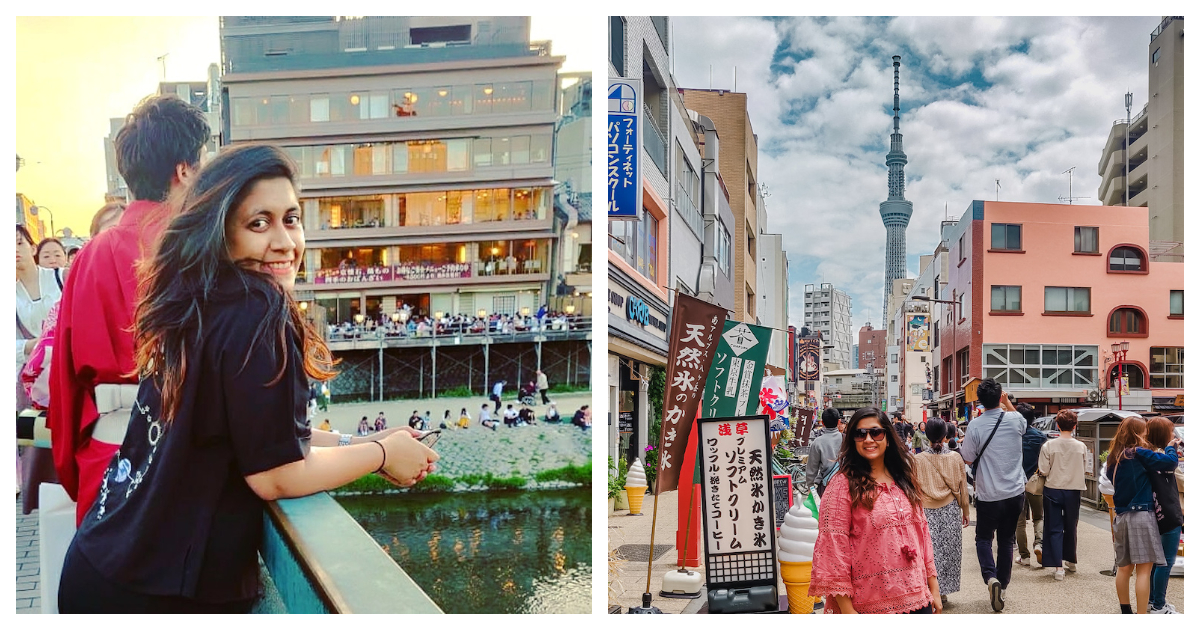
A 12-Day Detailed Itinerary For Japan Under ₹80,000 Trip Cost

I was always fancied by Japan in multiple ways. And after having been enticed by its culture and food through videos for over a year, I finally decided to experience its intrinsic culture in person. From a truly delectable traditional cuisine to the awe-inspiring Bullet train, it is amazing how Japan has managed to tie tradition and modernity with a single thread. It’s a perfect place for solo travellers, friends, couples and even families. Despite the language barrier, Japan surely knows how to mesmerize you.
So, if you’re someone who has been fascinated by Japanese culture, or if you’ve grown up watching Anime, then count me as your friend! I am Yogita Chainani, a travel lover, and I went for a 12-day trip to Japan along with my sister in April 2019. We went to Tokyo, Kyoto and Nara, and this is how we planned our trip at ₹80,000. Here is our itinerary for Japan.
Things To Keep In Mind While Planning A Trip To Japan
Flight Cost: We were tracking the flight costs for over a month before finally booking it. We booked the flight tickets through SkyScanner, and the return flights cost us ₹ 26,000 per person.
Visa: When it comes to Visa, the process was quite simple. We paid ₹500 per person for a single entry visa, which was valid for a month.
Also Read: Japanese Visa for Indians, Indian Passport: Types, Application Fee, Form, Requirements And Visa On Arrival
Stay: Keeping the budget in mind, we chose to stay in a hostel over a hotel. For Tokyo, we booked the DEN hostel, which is nestled in the Kanda area of Tokyo and is around 50 minutes from Haneda airport. While travelling for 6 nights and 7 days, we paid ₹10,000 per head, which is decent for the quality of the place. In Kyoto, we booked the Len Kyoto hostel, and for 4 nights and 5 days where we paid ₹8,000 per head. As for Nara, we made a day trip, so we didn’t have to make any bookings. We used the HostelWorld app to book both the hostels.
Transfers: Travelling in and around Japan is expensive. Hence, to save up on the travelling cost, we had bought a Japan Rail Pass for ₹18,000. The pass covered most of our travel expenses in the country. Right from local JR lines to selected Bullet train rides, everything got covered with this pass. Apart from this, for private buses and metros, we spent an additional ₹5,000 per person. For transfers from the airport to the hostel in Tokyo, we took a limousine bus, which cost ₹650 per person.
Food: We set a budget, and roughly spent ₹4,000 (₹2,000 per person), which is about 6000 Japanese yen on food per day. Sometimes it was a bit more, and sometimes it was less. So, our overall food cost was ₹ 20,000 per person, which also included drinks.

Best Time to Visit Japan: Japan is known for its Cherry Blossom season and if you intend to visit this futuristic country, then plan your trip between March-May. Not only March to May, but September to January is also an ideal time to visit Japan. The weather is quite pleasant, humidity is low, and the cold climate makes it easy for travellers to explore the place throughout the day. I travelled to Japan in April, and here’s my 12-days, day by day itinerary.
Also read: Japan Asks Theme Park Visitors To Avoid Screaming On Roller Coasters
We boarded the 11PM flight from Terminal 2- Chhatrapati Shivaji International Airport in Mumbai to Singapore Changi Airport, from where we took a connecting flight to Haneda Airport, Japan. We flew with Singapore Airlines, and I must say, it’s my favourite. The flight from Mumbai to Singapore was about 5 hours and 40 minutes. We had about an hour and 10 minutes of layover in Singapore, and the flight from here to Haneda was about 7 hours and 30 minutes. After reaching Haneda airport, we cleared our immigration, activated our Japan Rail Pass and took a limousine bus to reach Tokyo. The bus ticket cost us ₹630 per person.
We checked in the hostel, DEN, on Day 1 and passed out immediately. The next day, we woke up early with the faint rays of the sun, got ready and spoke to our hostel manager, who guided us to the nearest metro station. Kanda metro station was at a walking distance from the hostel. On our way, we grabbed some hot coffee, sandwiches and a bottle of water from a nearby Seven-Eleven. These are convenience stores that are open 24×7.
I must say Seven-Eleven is a hit in Japan, and right from a cup of Joe to hearty Ramen meals, you can find everything at an affordable rate. After sipping some coffee, we took a train to Harajuku station. Our first spot of the day was Takeshita Dori, which is located at a walking distance from Harajuku.
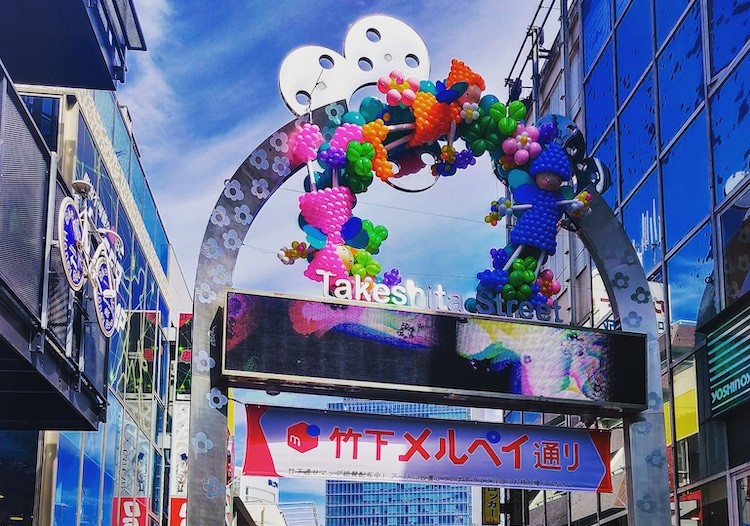
Takeshita Dori will take you one step closer to the famous Japanese Pop and Kawaii Culture. Right from street artists to a plethora of picturesque cafes and side stalls, Takeshita is a street that you cannot miss. And while you are there, don’t forget to try the delicious crepes. From Chocolate to Bacon Crepe, there are tonnes of options to choose from. We had a lip-smacking crepe at Santa Monica Crepe, and it was worth every bite.
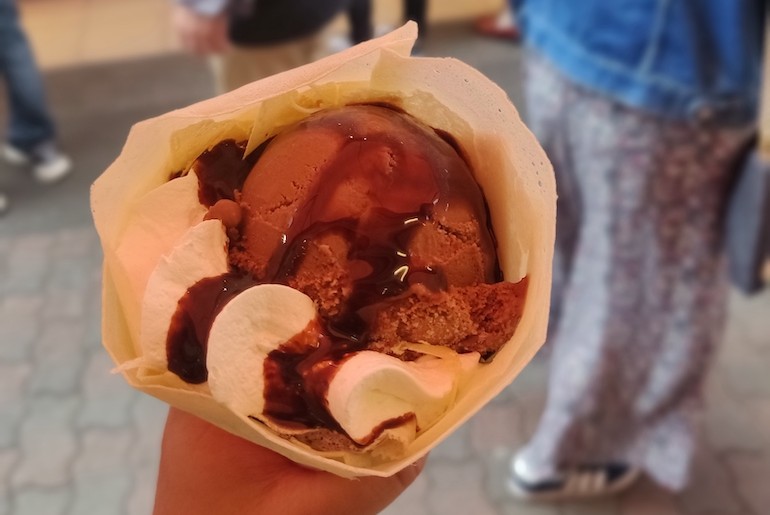
After spending a good 2-3 hours in Takeshita Dori, we explored the Harajuku area of Tokyo. For lunch, we kept it light and ate some Mozzarella Sticks from a roadside stall while sipping on some famous Japanese bubble tea. At around 5PM, we headed to the famous Meiji Jingu Shrine, which is known for its unmatchable beauty. The entry to the shrine is free, and the entrance from the massive Torii gate for this shrine will inevitably transport you to a different world.
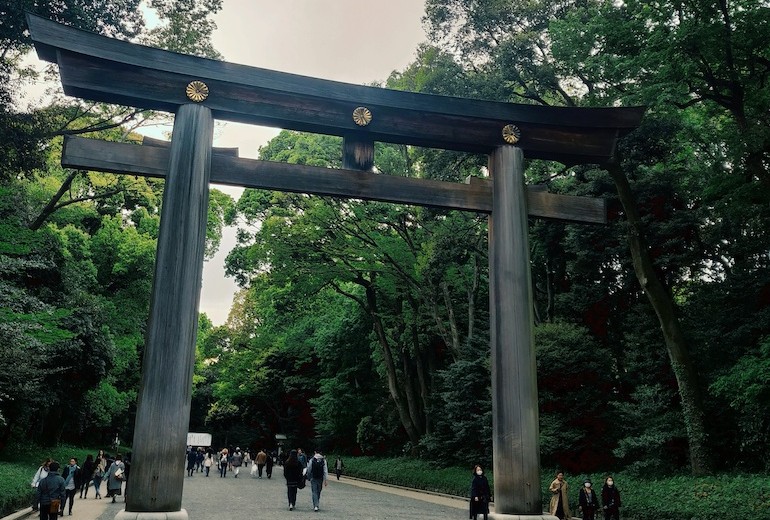
After getting bewitched by the spellbinding magnificence of this shrine, we made our way back to Harajuku. We went for dinner to Cafe Lagoon in Harajuku and ended our night on a merry note. Post that- we headed back to our accommodation.
For us, Day 3 was all about exploring the culture of Japan. Hence, we decided to explore the Asakusa area of Tokyo. We grabbed some coffee from Seven-Eleven and headed to Kanda station to board a metro for Asakusa. We got down at Asakusa station and walked for 10 minutes to reach the pristine Sensoji Temple and I can never forget that sight. Sensoji is one of the oldest temples in Japan, and the entry to the temple is free.
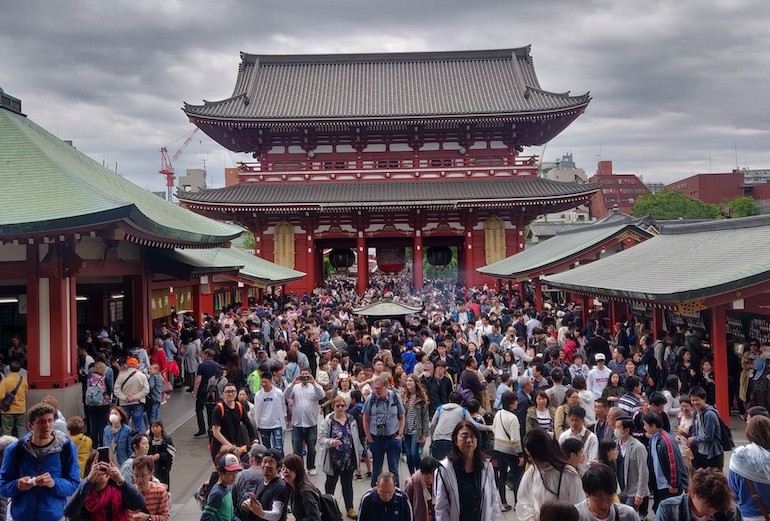
We walked around the temple, observed the locals for a while and headed to Nakamise Dori, which was just 2 minutes from the Sensoji Temple.
Nakamise Dori is known for its local cuisine, souvenirs shops and also gives you a stellar view of the Tokyo sky tree. By the time we finished exploring the street, it was already lunchtime. So we gave local Japanese cuisines a try and savoured some red bean, Hello Kitty Pancakes and Ramen in Nakamise Dori.
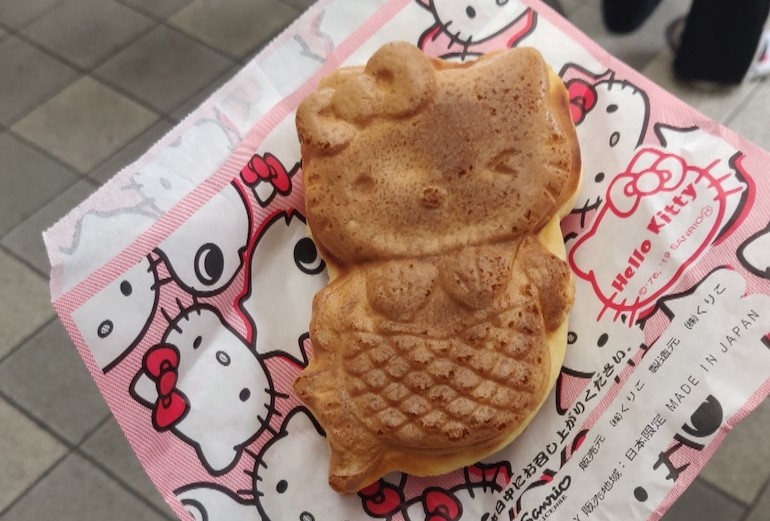
Post that, we headed straight to the Tourist Information Center of Japan, which again was a short walk from the temple. Tourist Information is also famous as an observatory. The entry to the observatory was free.
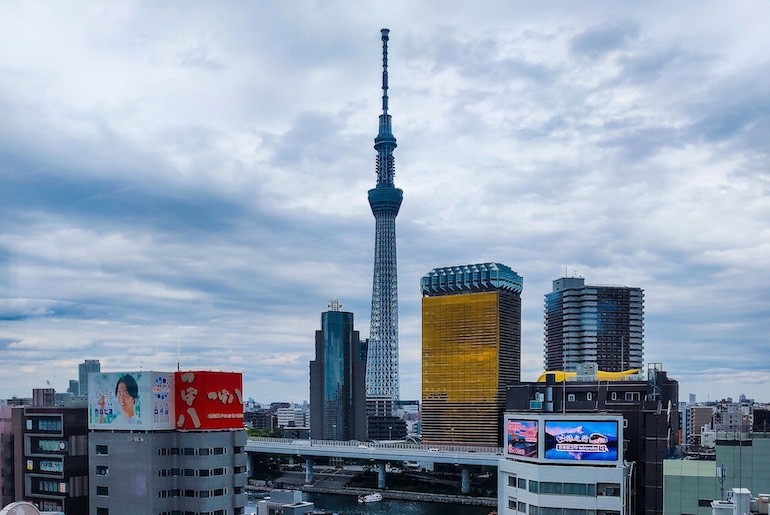
We bought some coffee from the cafe and observed the magnificent Tokyo skyline from the top. It was around 6:30 pm, and we decided to explore more of Asakusa. We manoeuvred around the area and headed back to the hostel by 12:30 am.
After spending three glorious days in Japan, Tokyo had already become home. We woke up with lots of excitement, chit-chatted with our fellow hostellers and ventured out to visit the famous and the most luxurious street of Japan, Ginza. Right from Louis Vuitton to Prada, you’ll find all the high-end stores in here. We shopped a bit from Gap and Adidas, we got some top-notch quality products at insane prices.
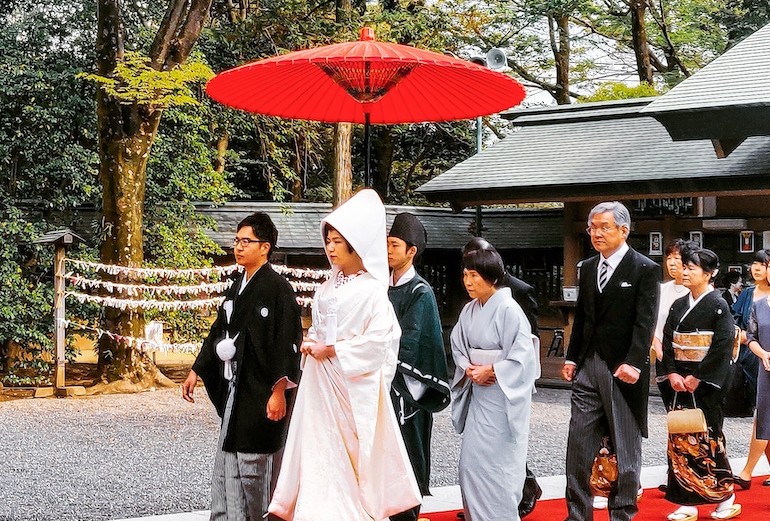
After exploring Ginza, we went to Shibuya. While Shibuya is known for the world-famous Shibuya Crossing, it’s also known for Hachiko Statue, the beautiful Yoyogi Park and theme cafes. We explored the area, spent some time at Yoyogi Park and by that time, it was already evening. So we headed straight to witness the iconic Shibuya crossing- a crossing where hundreds of people – and at times thousands of people – cross at a time, coming from all directions at once.
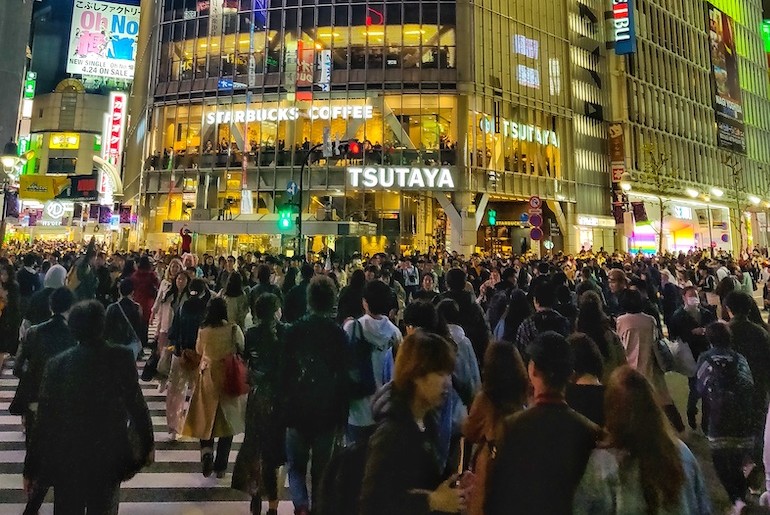
Once done enjoying the Shibuya crossing, we shopped a bit from Zara and Forever 21 and headed to TGIF in Shibuya. We ate, shot some pictures for the gram and enjoyed the nightlife in Shibuya.
On day 5, we decided to take it a bit slow. We chilled in our hostel for a while, interacted with fellow travellers from London, South Korea and Canada, and left the hostel at around 1PM for Shinjuku. We visited the Tokyo Metropolitan Government Building, which again is a famous observatory in Tokyo, and on a clear day, you get to witness the sight of Mount. Fuji from the observatory.
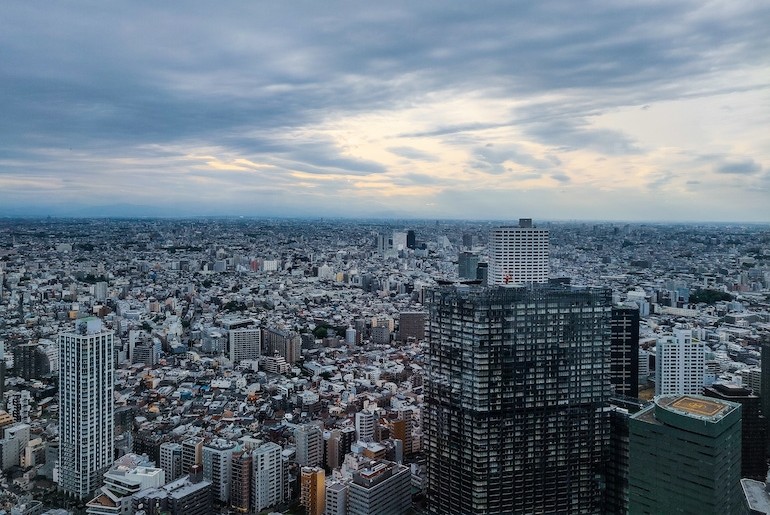
The entry to the observatory was free. We spent some time appreciating the majestic Tokyo skyline and then explored Shinjuku for a while before catching a bus for Akihabara.
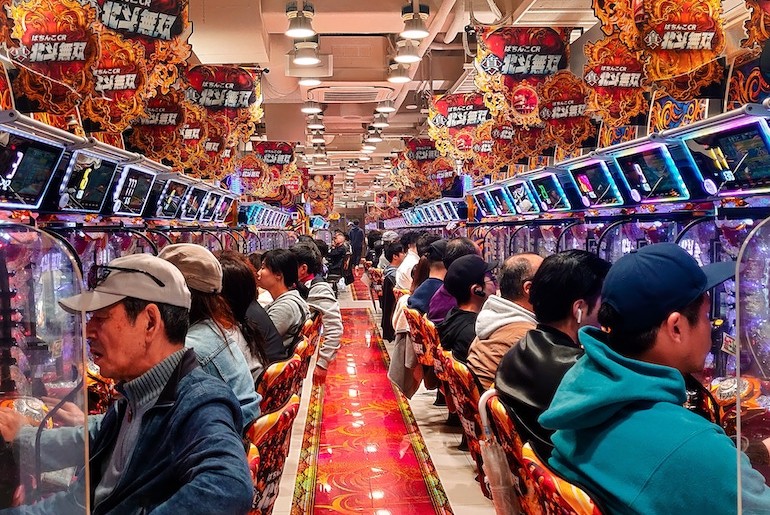
If you love Anime and arcade games, then Akihabara is for you. I wanted to win at least one Dragonball toy, but I couldn’t, hard luck! After the gaming session, we went to the famous Yodobashi Camera centre in Akihabara and shopped for some Bluetooth headphones. We ended the night by eating pizza, ramen and sipping some sake in Akihabara.
This was the day when I shopped till I dropped, and I am not kidding. I had researched about outlet malls in Tokyo and had decided to buy things from there itself. The outlet mall was on the outskirts of Tokyo, but the ride was completely worth it. We boarded a train for Mitsui Outlet Mall at Tokyo Station and got down at Kaihin-Makuhari Station. From there the outlet mall was at a walking distance. There was a 60% off deal going on for all items in the mall. I treated myself to a Michael Kors wallet at flat 90% off.

We spent around 8 hours in the mall, and in the end, we were too exhausted to go anywhere else, so we ate something at McDonald’s, and headed back to our hostel.
It was our last day in Tokyo, and we wanted to make the most of it. We explored our neighbourhood, went to see the Tokyo Skytree and Tokyo Tower. For us, we didn’t buy a ticket for the observatory since we had already enjoyed a free view of the majestic skyline from the Tokyo Metropolitan Government building in Shinjuku. We visited a few cafes, tried some Matcha Ice Cream and headed back to the hostel.
The time had arrived to bid adieu to the vibrant city of Tokyo. With heavy hearts and a bucket full of memories to cherish for eternity, we checked out from our hostel, brought some snacks for our train ride and headed to Tokyo Station. And finally, we boarded the bullet train from Tokyo to Kyoto.
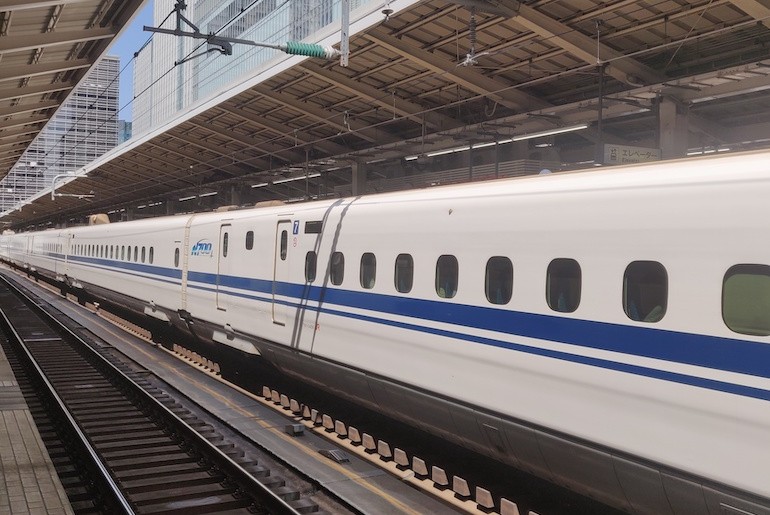
It was a smooth and pleasant ride, and guess what – the bullet train had wifi too!
Also read: Luxury Japanese Sleeper Trains Are Travel Goals!
We reached Kyoto at around 5PM, and from there caught a bus for Kawaramachi- the area where our hostel was. It was 6 pm when we reached the hostel, we checked in, freshened up, spoke to our roommates and headed out to explore the Kawaramachi area of Kyoto.
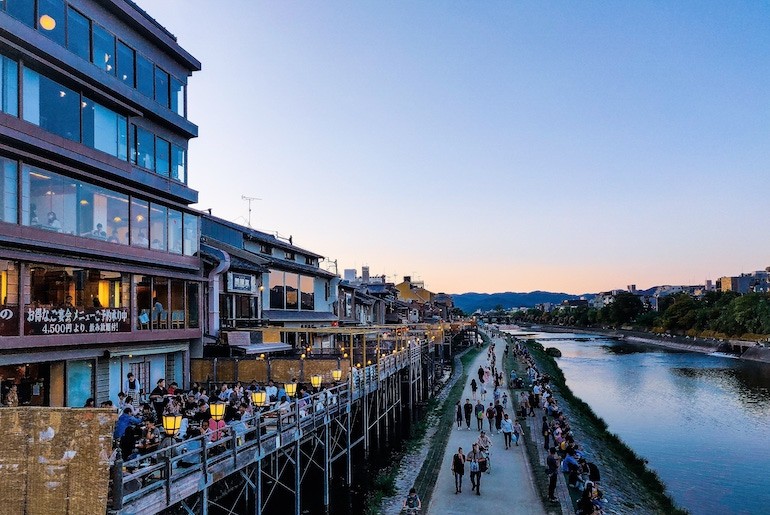
For dinner, we ate some food at the hostel bar and called it a night.
After exploring the nightlife and pop culture of Tokyo, it was time to experience a mellow version of Japan by exploring its former capital, Kyoto. We had planned a list of things, and hence we ventured out at 7.30AM itself.
We grabbed a bite from the nearby Seven-Eleven and headed straight to the salient Arashiyama’s Bamboo Forest. The forest is both locally famous and world-renowned and the entry is free.

From dense forests to cherry blossoms to throbbing autumn Kyoto colours, Arashiyama was a visual delight during this season. We explored the tranquil forest area and visited a few other spots in the nearby locality.

Post that we headed to the famous Nishiki Market. Almost 400 years old, this place is a fresh food market and is lined with over a hundred restaurants and shops. The market was lively and allowed us to taste Japan’s culinary culture at its finest. After savouring some food and drinking some OG bubble tea, we headed back to our hostel, which was at a walking distance from the market.
We left early and headed to Fushimi Inari. This place is known for its tunnels of more than 10,000 closely-spaced orange torii gates that wind over the hills of Mt. Inari beyond the entrance to the shrine.
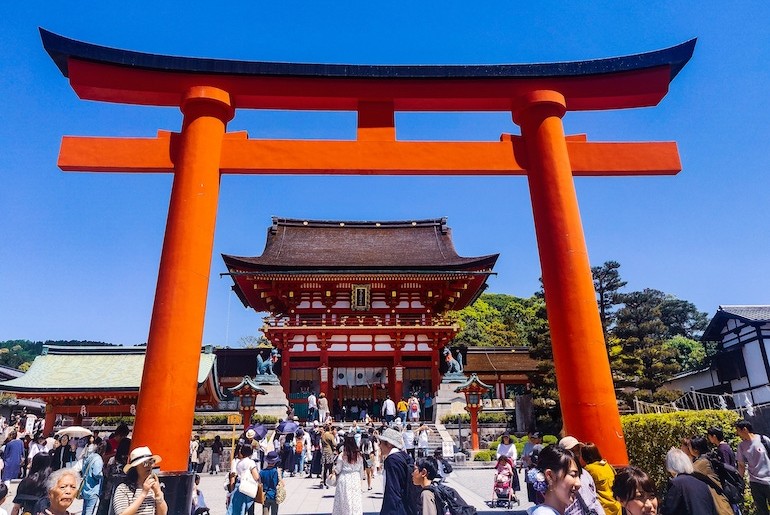
One can also dress like Geisha and explore this beautiful place. We went a bit late to this place and couldn’t grab good pictures. But if you want to take some fab shots for the gram, then try visiting this place as early as possible.
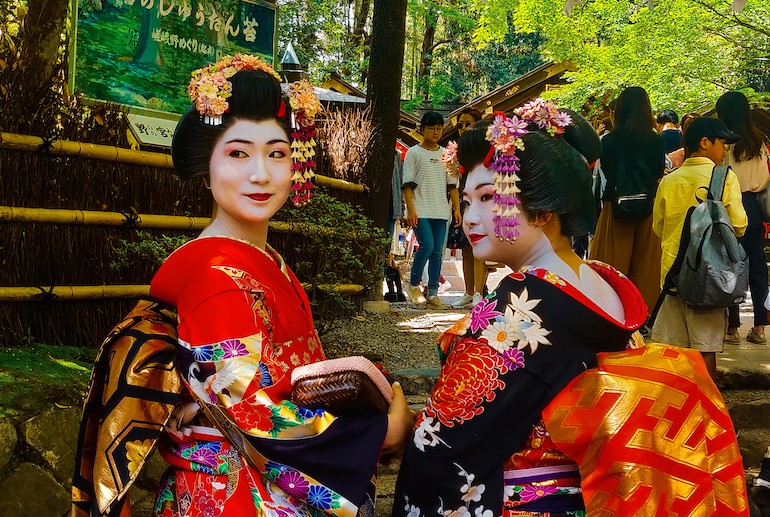
After getting spellbind by the captivating beauty of this place, we headed to the famous Gion district of Kyoto. We manoeuvred around and got to know more about Geisha culture while exploring some beautiful alleys of Gion district.
We celebrated our time in Kyoto by tasting some Japanese beer and absorbed the traditional culture on the banks of Kyoto’s scenic main waterway. Post that, we went to the famous Pontocho Alley, where traditional culture and Geisha still thrive.
It was officially our last day in Kyoto. And since we were short on time, we boarded a train to Nara, which is known for its slow-paced life. On the way to Nara, we enjoyed the sight of the beautiful fields and quaint villages of Japan.
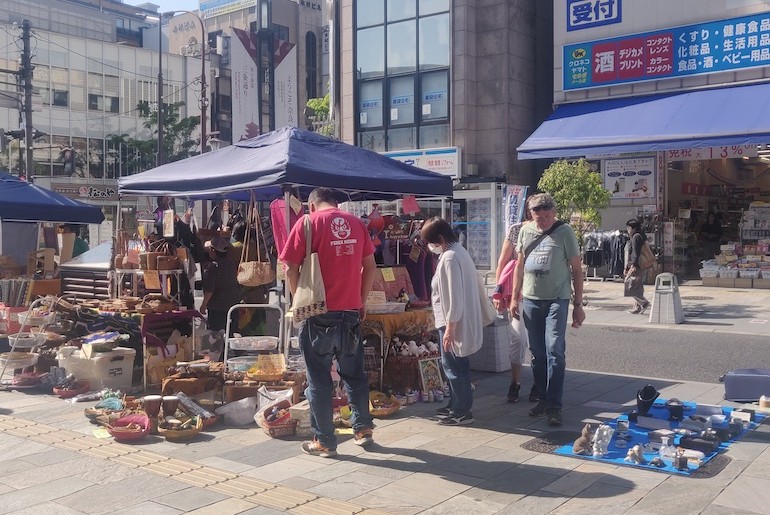
We visited the famous Kasuga Grand Shrine and also explored the old Nara market. After exploring the streets of Nara for a few hours, we headed back to Kyoto. Post that, we ate something, packed our bags and slept early that day.
We checked out of our hostel in Kyoto and headed to Kyoto station. We caught our bullet train for Tokyo station. After reaching Tokyo station, we again took an Airport liner for the Haneda Airport terminal. We spent the final few hours at the Haneda airport before bidding goodbye to the exalted country of Japan.
Things I haven’t included: I went a bit crazy with shopping, so haven’t included the detailed pricing for the same.
Final Thoughts on Japan:
Japan has been exceptional in distinct ways. Just in 13 days, this country managed to give me the memories of a lifetime.
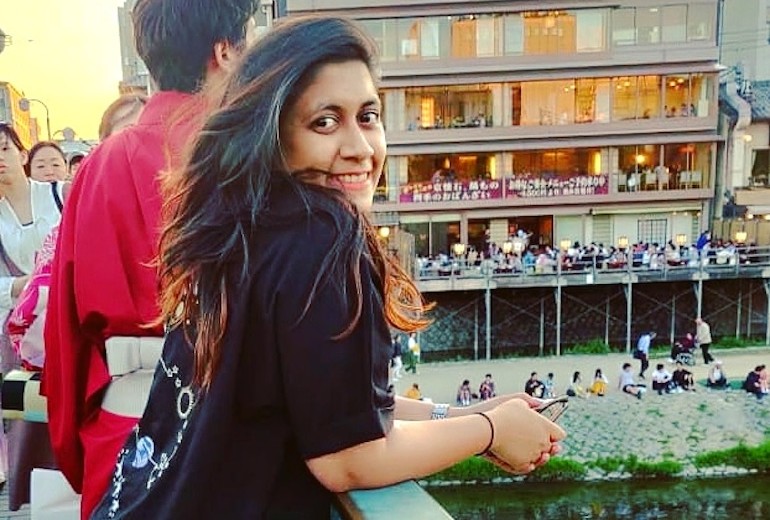
Japan will always have my heart. It is a country that taught me language is just a medium of communication. And people can still help each other without knowing the language. The amicable town of Kyoto made me fall in love with the culture, while Tokyo made me feel livelier than ever.
Also read: The 10 Most Romantic Destinations In The World
Things To Remember:
We wanted to visit Robot Cafe, but couldn’t, because we didn’t know that the tickets had to be booked online at least 15 days in advance. So if you intend to visit Robot Cafe, book your tickets in advance.
If you are planning to go in March or April, do carry a thick jacket and an umbrella with you. The weather gets unpredictable at times, and you don’t want to freeze in the cold.
We visited Japan in April, which is also a month where people across the country get a one-week holiday, it’s known as their Golden week. Hence, we skipped crowded cafes and Disneyland.
People in Japan are warm, helpful and kind. So when in doubt, always ask for help!
Lastly, do not litter on the streets and trains; it’s highly looked down upon. Also, if possible, avoid taking calls on the train- it’s considered a bit rude.
Join The # CT Squad!
Sign up for our daily email and get the best delivered straight to your inbox. We pinky promise to make it awesome!

12 days, 11 nights
The following is a suggested itinerary for first time travelers to Japan who spend 12 days, 11 nights in the Kansai Region around Kyoto .
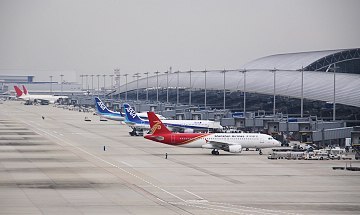
A nationwide Japan Rail Pass does not pay off for this itinerary, but we recommend to use Haruka 1-Way Tickets for your transport to/from Kansai Airport , a 1-day Kansai Area Pass for your daytrip to Himeji and a Koyasan World Heritage Ticket for your trip to Mount Koya . Below are some sample budgets for the itinerary, excluding airfare. Find out more about the sample budgets and about the current yen exchange rates .
Questions? Ask in our forum .

September Sale Book now for up to 60% off!
Premium Japan
- In-depth Cultural
- Fully Guided
- Sightseeing
- Christmas & New Year
Places You’ll See
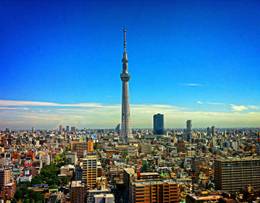
- Explore Tokyo's vibrant food scene
- Visit Senso-ji and Shibuya in Tokyo
- Make sushi at Tsukiji Outer Market
- Relax in Hakone's mountain hot springs
- Discover Kyoto's ancient temples
- Introduction
- Day 1 Tokyo
- Day 2 Tokyo
- Day 3 Tokyo
- Day 4 Hakone
- Day 5 Takayama
- Day 6 Takayama
- Day 7 Hiroshima
- Day 8 Hiroshima
- Day 9 Kyoto
- Day 10 Kyoto
- Day 11 Kyoto
- Day 12 Kyoto
Want to read it later?
Download this tour’s PDF brochure and start tour planning offline
What's Included
- Accommodation
- Additional Services
Where You'll Stay
The Gate Hotel Kaminarimon or similar
Susukinohara Ichinoyu (feature stay) or similar
Hotel Around Takayama or similar
Hotel Intergate Hiroshima or similar
The Gate Hotel Kyoto Takasegawa or similar

Operated by
Intrepid Premium
Number of tours
5 to 99 years old
Response time
Response rate
For over 30 years we've been taking travellers around the globe. That's over 30 years of adventures, of visiting new places and old friends, of countless unforgettable moments. More than 30 years of changing the way people see the world, on small group tours with like-minded Intrepid people. As a...
Sustainability Initiatives
Reduce Carbon Emissions
Animal Welfare
Supporting Destinations
Sustainability Programs
Your Peace of Mind Options
Cancellation policy.
A transparent overview of applicable fees.
Customer Reviews
- Overall Rating Excellent 5.0
- Itinerary Good 4.0
- Guide Excellent 5.0
- Transport Good 4.0
- Accommodation Good 4.0
- Food Good 4.0
- Tour Operator Intrepid Premium 4.4
- Most Recent
- Most Popular
- Highest First
- Lowest First

- A YIN POK ROBERT · 3rd August 2023 If you are looking experience the different aspects of Japan, this is the one for you! The itinerary is great to begin with, with a good mix of guided tours and free time, and our group leader brought life to the trip. His in-depth knowledge of Japan... Show more Trip date: May 2023 Review collected by Intrepid Premium
Dates & Availability
Why book with tourradar.
- Flexible payment options
- Trusted and vetted operators
- Rated excellent on
- Best price guarantee
- 24/7 customer support
- Earn €100 in travel credits
To protect your payment and ensure your booking will be processed in Austria, never transfer or communicate outside of the TourRadar website or app.
- Upcoming departures
- September 2024
- October 2024
- November 2024
- December 2024
- January 2025
- February 2025
- August 2025
- September 2025
- October 2025
- November 2025
- December 2025
- Thursday 19 Sep, 2024 Monday 30 Sep, 2024 English Sold Out €6,909 See Similar Tours For These Dates
- Sunday 22 Sep, 2024 Thursday 3 Oct, 2024 English Sold Out €6,909 See Similar Tours For These Dates
- 1 Other Unavailable Departure
- -10% Tuesday 24 Sep, 2024 Saturday 5 Oct, 2024 English Filling Fast €7,869 €7,092 Confirm Dates
- -10% Friday 27 Sep, 2024 Tuesday 8 Oct, 2024 English Almost Sold Out €7,869 €7,092 Confirm Dates
- -10% Sunday 29 Sep, 2024 Thursday 10 Oct, 2024 English Filling Fast €7,869 €7,092 Confirm Dates
- Tuesday 1 Oct, 2024 Saturday 12 Oct, 2024 English Sold Out €7,869 See Similar Tours For These Dates
- -10% Tuesday 8 Oct, 2024 Saturday 19 Oct, 2024 English Almost Sold Out €7,869 €7,092 Confirm Dates
- -10% Thursday 10 Oct, 2024 Monday 21 Oct, 2024 English Almost Sold Out €7,869 €7,092 Confirm Dates
- -10% Sunday 13 Oct, 2024 Thursday 24 Oct, 2024 English Filling Fast €7,869 €7,092 Confirm Dates
- -10% Tuesday 15 Oct, 2024 Saturday 26 Oct, 2024 English Filling Fast €7,869 €7,092 Confirm Dates
Good to Know
- Currency ¥ Yen Japan
As a traveller from England, Australia, New Zealand, South Africa you will need an adaptor for types A, B.
- These are only indications, so please visit your doctor before you travel to be 100% sure.
- Hepatitis A - Recommended for Japan. Ideally 2 weeks before travel.
- Hepatitis B - Recommended for Japan. Ideally 2 months before travel.
- Japanese B encephalitis - Recommended for Japan. Ideally 1 month before travel.
- Unfortunately we cannot offer you a visa application service. Whether you need a visa or not depends on your nationality and where you wish to travel. Assuming your home country does not have a visa agreement with the country you're planning to visit, you will need to apply for a visa in advance of your scheduled departure.
- Here is an indication for which countries you might need a visa. Please contact the local embassy for help applying for visas to these places.
- For any tour departing before 11th November 2024 a full payment is necessary. For tours departing after 11th November 2024, a minimum payment of €400 is required to confirm your booking with Intrepid Premium. The final payment will be automatically charged to your credit card on the designated due date. The final payment of the remaining balance is required at least 56 days prior to the departure date of your tour. TourRadar never charges you a booking fee and will charge you in the stated currency.
- Some departure dates and prices may vary and Intrepid Premium will contact you with any discrepancies before your booking is confirmed.
- The following cards are accepted for "Intrepid Premium" tours: Visa, Maestro, Mastercard, American Express or PayPal. TourRadar does NOT charge you an extra fee for using any of these payment methods.
- Your money is safe with TourRadar, as we only pay the tour operator after your tour has departed.
- TourRadar is an authorised Agent of Intrepid Premium. Please familiarise yourself with the Intrepid Premium payment, cancellation and refund conditions .
- Insurance Unless otherwise mentioned, TourRadar does not provide travel insurance. We do however recommend purchasing it through our tried and trusted partner, World Travel Nomads .
- Accessibility Some tours are not suitable for mobility-restricted traveller, however, some operators may be able to accommodate special requests. For any enquiries, you can contact our customer support team , who are ready and waiting to help you.
- Cornwall Tours
- Great Britain Tours
- Christmas & New Year tours
- Western Turkey Bodrum tours
- 03 Days Egypt package
- September Sale
- Welcome to Mato Grosso do Sul
Similar Tours
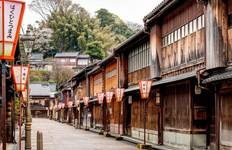
Keep Exploring Japan
- Japan Travel Guide | All You Need to Know
- 2 Week (14 Days) Japan Travel Itineraries & Cost 2024/2025
- 10 Best Cultural Travel Companies
- 10 Best Cultural Experiences in The World 2024/2025
- Japan from Tokyo
- Japan In-depth Cultural
- Small group tour
- 12 days Japan
- From Tokyo to Kyoto
- Operators in Asia
- Southern Japan
- Central Japan
- Premium Japan Tours in Japan
- In-depth Cultural Tours
- Honshu Tours
- Group Tours
- Fully Guided Tours
- Sightseeing Tours
- Historical Tours
- Christmas & New Year Tours
- Japan tours

IMAGES
VIDEO
COMMENTS
Itinerary 1: Classic Japan (Grand Cities and Traditional Villages) 3 nights in Tokyo. 1 night in Takayama. 2 nights in Kanazawa. 3 nights in Kyoto (side trip to Nara) 2 nights in Osaka. This 12-day itinerary is excellent for a first trip to Japan, with plenty of authentic experiences and activities. Not only could you explore the best of Tokyo ...
A 12 day itinerary to Japan that includes Osaka, Nara, Kyoto, Hiroshima, Miyajima, Tokyo & Hakone. Everything you need to know to plan your trip.
12 days, 11 nights. one less day. one more day. The following is a suggested itinerary for first time travelers to Japan who spend 12 days and 11 nights in Japan, and arrive/depart from Tokyo 's Narita Airport. Day 1 - Arrive at Narita Airport. Arrive at Narita Airport and spend the rest of the day in Tokyo. Day 2-5 - Tokyo with sidetrips.
12 Days in Japan - 6 Unique Itinerary Ideas. View Map. In 12 days, you can explore as few as four destinations, like Tokyo, Kyoto, Hiroshima, and Osaka, or over eight on a faster-paced trip, adding in lesser-known locales like Kurashiki, Oda City, and Hagi. Cover the best of Japan and include an island visit to Okinawa, Japan's "Hawaii ...
This 12 day Japan itinerary covers a variety of highlights in Tokyo, Kyoto, the bustling foodie metropolis of Osaka and the resort spa (onsen) town of Hakone near Mt Fuji. It is ideal for experiencing the cultural highlights of Japan, including a wellness getaway! Tokyo - 4 Days. Tokyo Airports - Arriving in Tokyo.
Japan Itinerary: One Week. Day 1 & 2: Tokyo. Chances are you'll be starting your trip in Tokyo, since it's home to the country's biggest international airport. If your trip is seven days long, activate your JR Pass right away, so that you can take advantage of the free JR trains that run through the city.
Embark on a 12-day exploration of Japan, from modern cities to scenic mountains. Stroll through historied streets, authentic towns, and serene gardens.
This 12-day Japan itinerary features cities, mountains, history and art. Visit Tokyo, traditional Kyoto, the Japanese Alps, and the art island Naoshima.
Complete 2 Weeks in Japan itinerary, day-by day guide including costs, things to do, where to stay, where to eat & getting around for: DAYS 1-5: Tokyo (including day trip to Mt Fuji) DAYS 6-10: Kyoto. DAYS 10-12: Hiroshima (including day trip to Miyajima) DAYS 12-14: Osaka (including day trip to Nara)
Full itinerary from my first trip to Japan in November 2019 - a vacation spanning 12 days in Tokyo, Kyoto, Osaka, and Yokohama.
Here's the exact itinerary for the 12 day trip I took to Japan in March of 2023. This includes travel days, so it's really more of a 10 day itinerary for Tokyo, Kyoto and Osaka.
We have a 7-day itinerary and a 2-week Japan itinerary so you can choose which length of trip suits you best. If you will only be visiting Tokyo, here's a shortened 3-day itinerary for Tokyo. Want to add more days outside of Tokyo? Here's a 3-day Kyoto itinerary and a 2-day Osaka itinerary.
12 Days In Japan: Top Itineraries for 2024/2025. Spending 12 days would give you the chance to experience the best of Japan: from prosperous Tokyo and Osaka to tradition-filled Kyoto, from the picturesque small town of Takayama to the peace memorial city of Hiroshima. We present our most popular tours according to customers' choices over recent ...
A deeply comprehensive and up-to-date 12-day Shikoku itinerary by road trip that unlocks how you can plan a trip here with a rental car.
Planning a trip to this Asian country and looking to spend about 10 days in Japan? You're in the right place! This complete Japan itinerary has you covered!
Is this your first time visiting Japan? Let's make it an adventure to remember with our 12 Day Best of Japan Package Tour - The Golden Route, perfectly tailored to your every travel need.
Best of Japan in 14 days. Day 1 and 2 - Tokyo. Spend three nights in Tokyo. Consider our suggested Tokyo itineraries. Day 3 - Side trip to Nikko. In a side trip from Tokyo, visit Nikko, home to Toshogu, Japan's most lavishly decorated shrine and the mausoleum of Tokugawa Ieyasu, the founder of the Tokugawa shogunate. Day 4 - Tokyo to Hakone.
12 Day Japan Tours & Trips Take a 12-day tour to enjoy Japan's most popular destinations. Start with some time sightseeing Tokyo's top attractions, whether you prefer the historical significance of Asakusa Sensoji Temple, the lively atmosphere of Takeshita Street in Harajuku, the wondrous view from the top of Tokyo Skytree, or of the above.
Spend 12 days exploring the best of Japan, including its most important cities. Start with a visit to Osaka's brightly-lit city center before exploring Kyoto's traditional historic neighborhoods and quiet temples. Learn about World War II history in Hiroshima, then hop on a plane to enjoy Okinawa's stunning beaches. End the trip in the exciting capital of Tokyo, one of the world's busiest and ...
I am Yogita Chainani, a travel lover, and I went for a 12-day trip to Japan along with my sister in April 2019. We went to Tokyo, Kyoto and Nara, and this is how we planned our trip at ₹80,000. Here is our itinerary for Japan.
Japan 12-Day Tours & Itineraries Explore 11 trips designed by local kimkim specialists to get ideas for your trip to Japan. Browse through kimkim's 12-day adventures in Japan that offer an array of experiences ranging from city attractions to hidden spots in the countryside.
Impress your family with our 12-day Japan adventure tour; taking you to Tokyo, Hakone, Kyoto, Hiroshima and Osaka.
Suggested travel itinerary for a 12 day, 11 night stay in the Kansai Region of Japan.
Premium Japan, a 12 days tour from Tokyo to Hakone, Takayama and 2 destinations. Best Selection - Best Price - Trusted Payments ... The 12 Day Intrepid Premium Japan Tour was exceptionally good, including the itinerary and small group size. In particular, the Tour Leader was brilliant, in regards to all aspects, including organisation, humour ...
Day 7 (Dec 27): Kyoto to Nara (Day Trip) • Full-Day Trip: Travel to Nara (about 1 hour by train). Visit Todai-ji Temple, Nara Park (with its free-roaming deer), and Kasuga Taisha Shrine. • Return to Kyoto in the evening. Day 8 (Dec 28): Kyoto to Osaka • Travel to Osaka: Take a short train ride to Osaka (about 30 minutes).